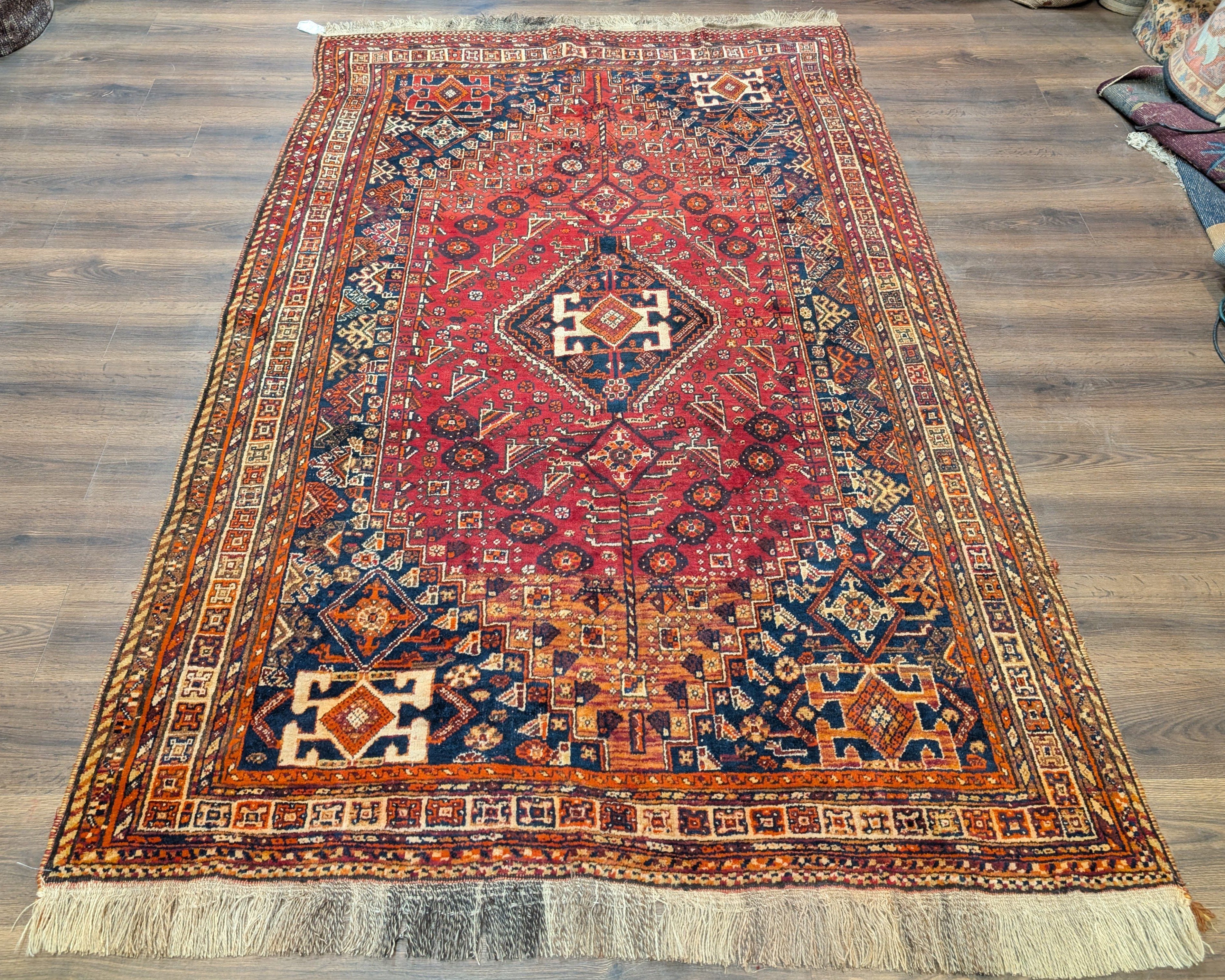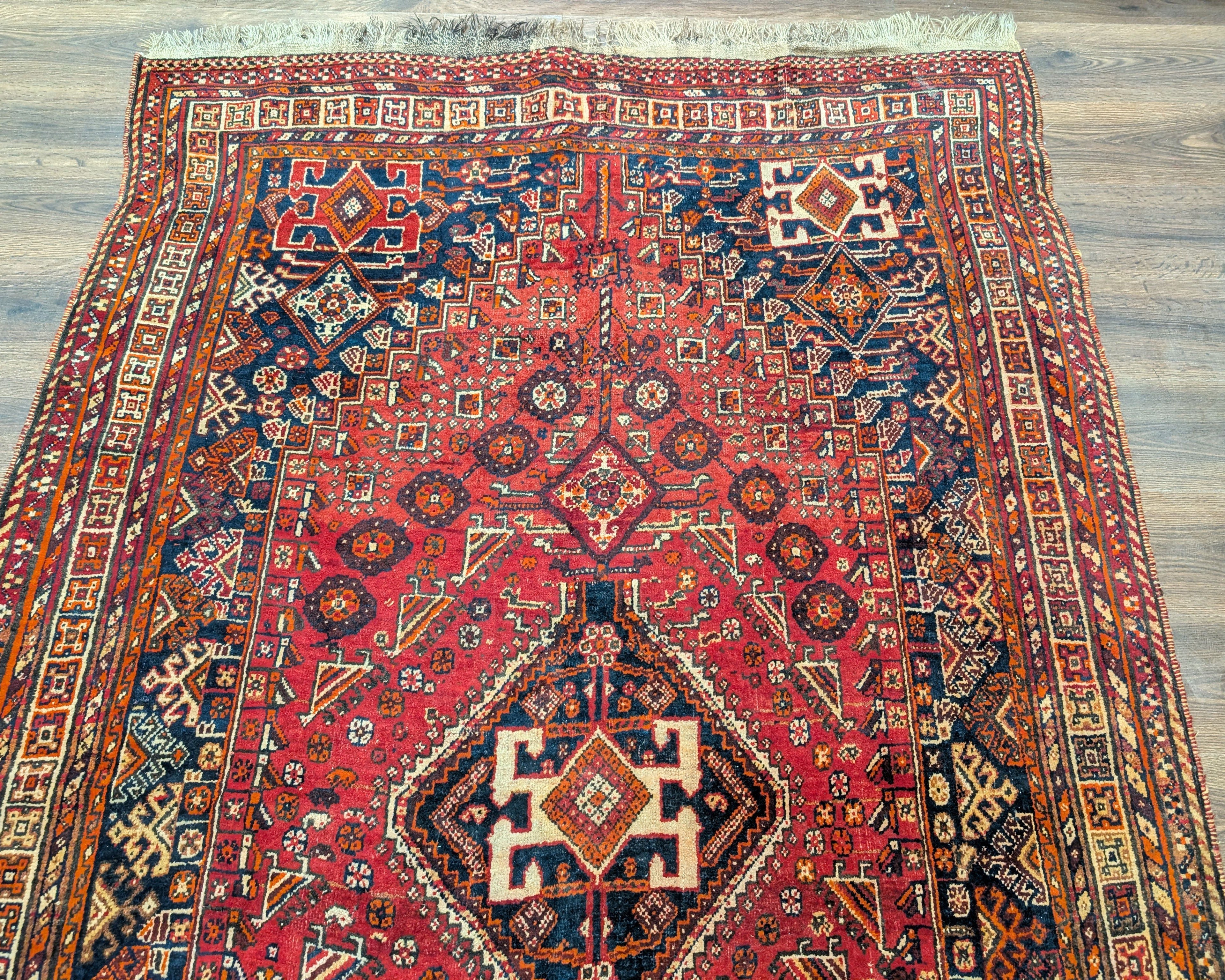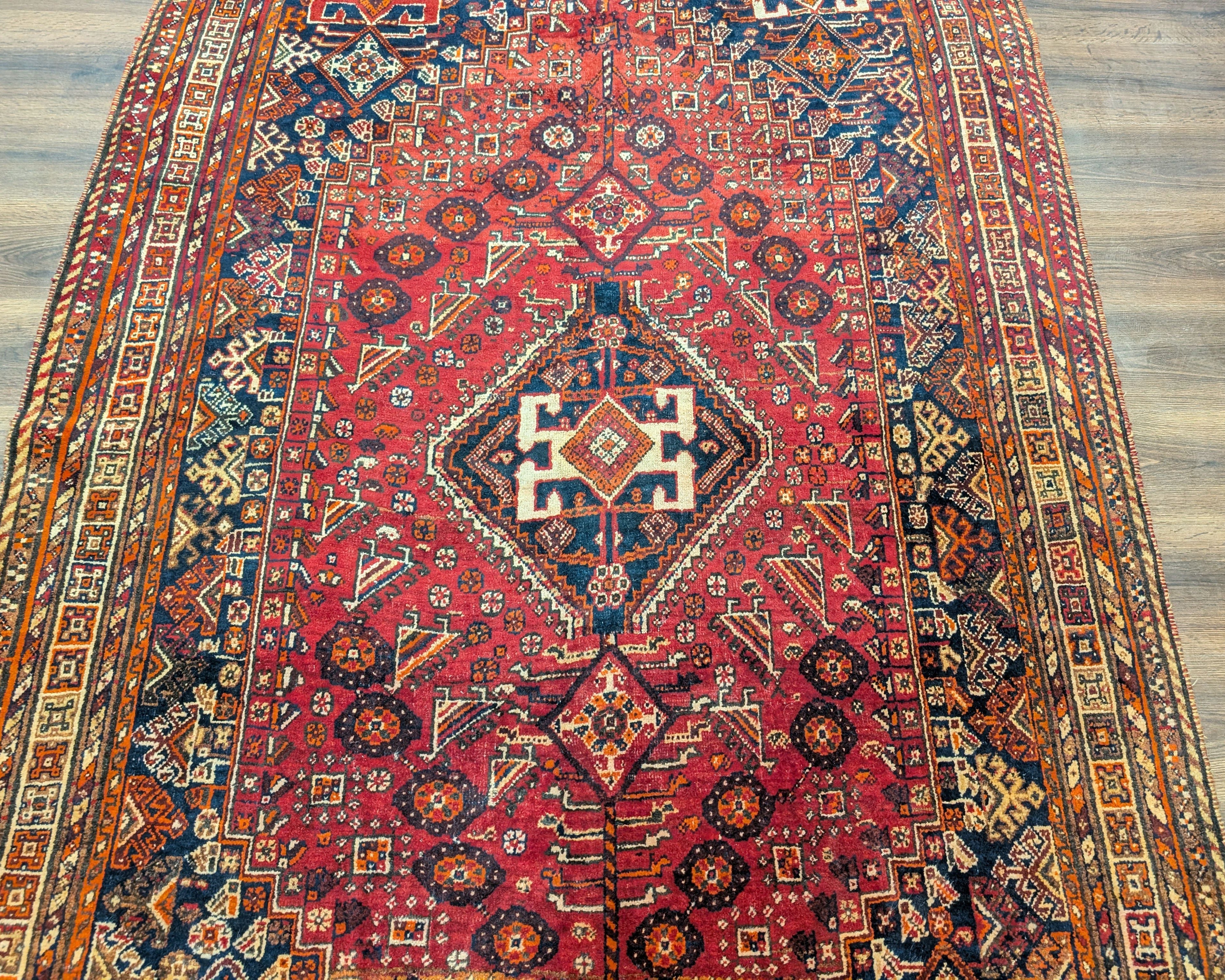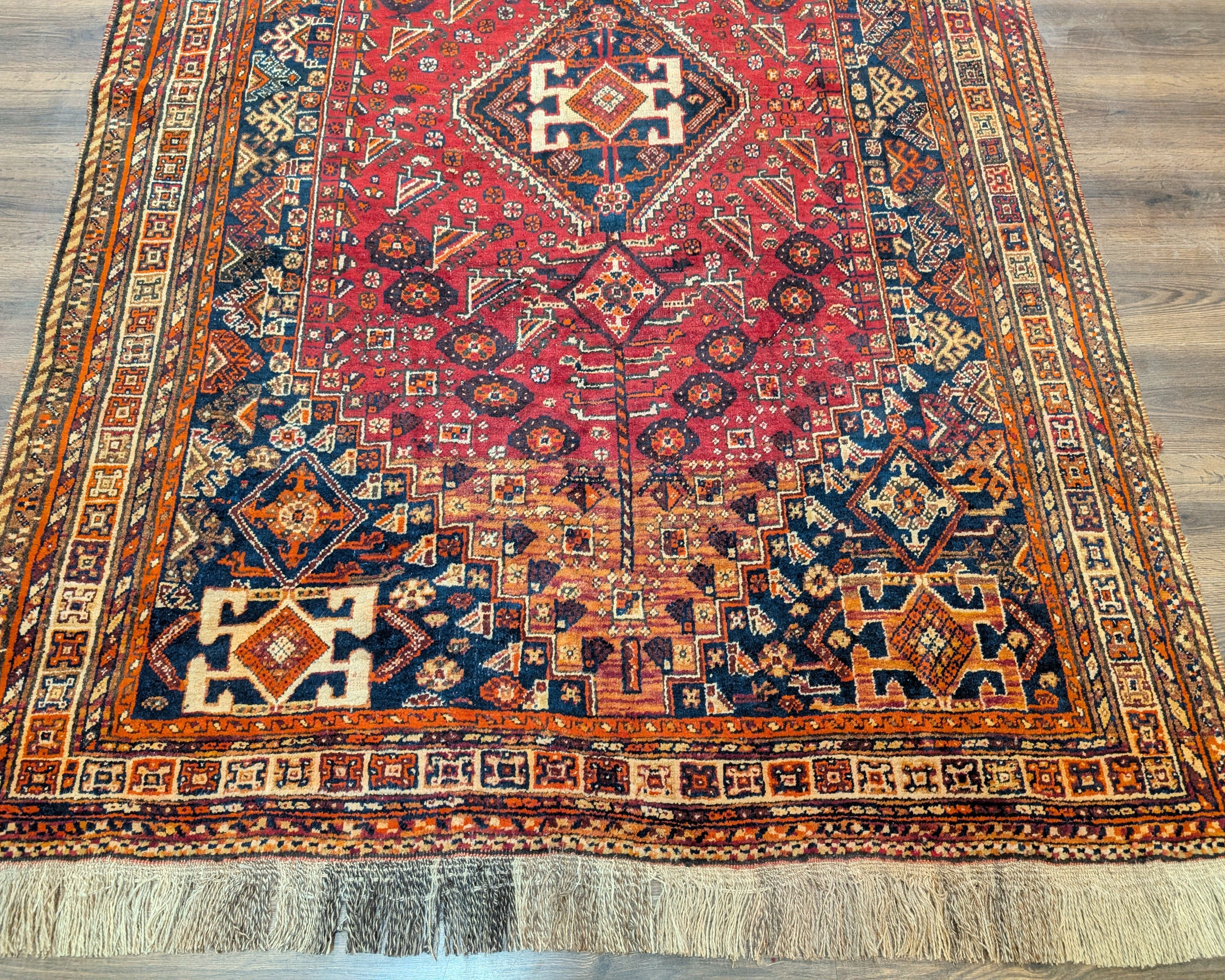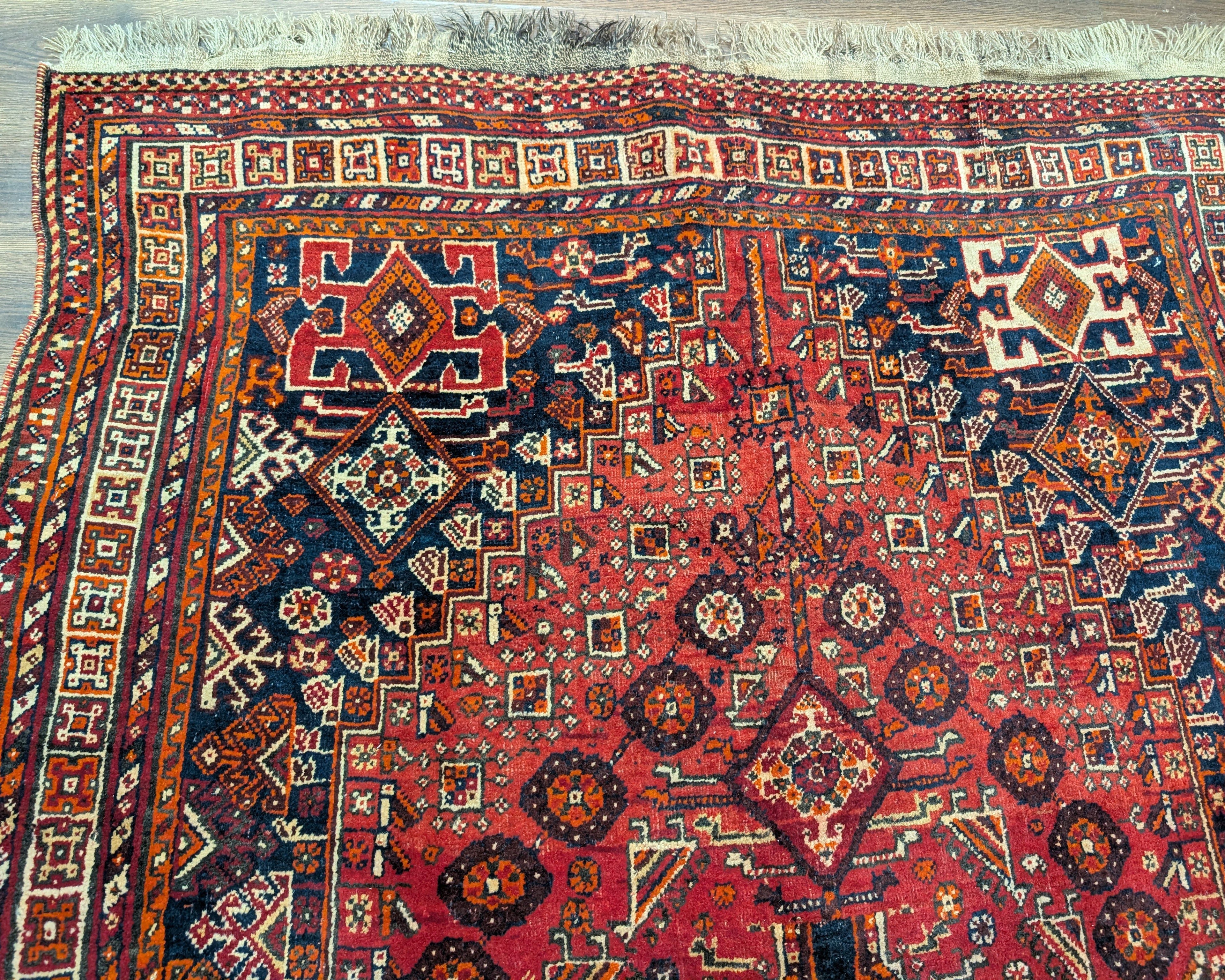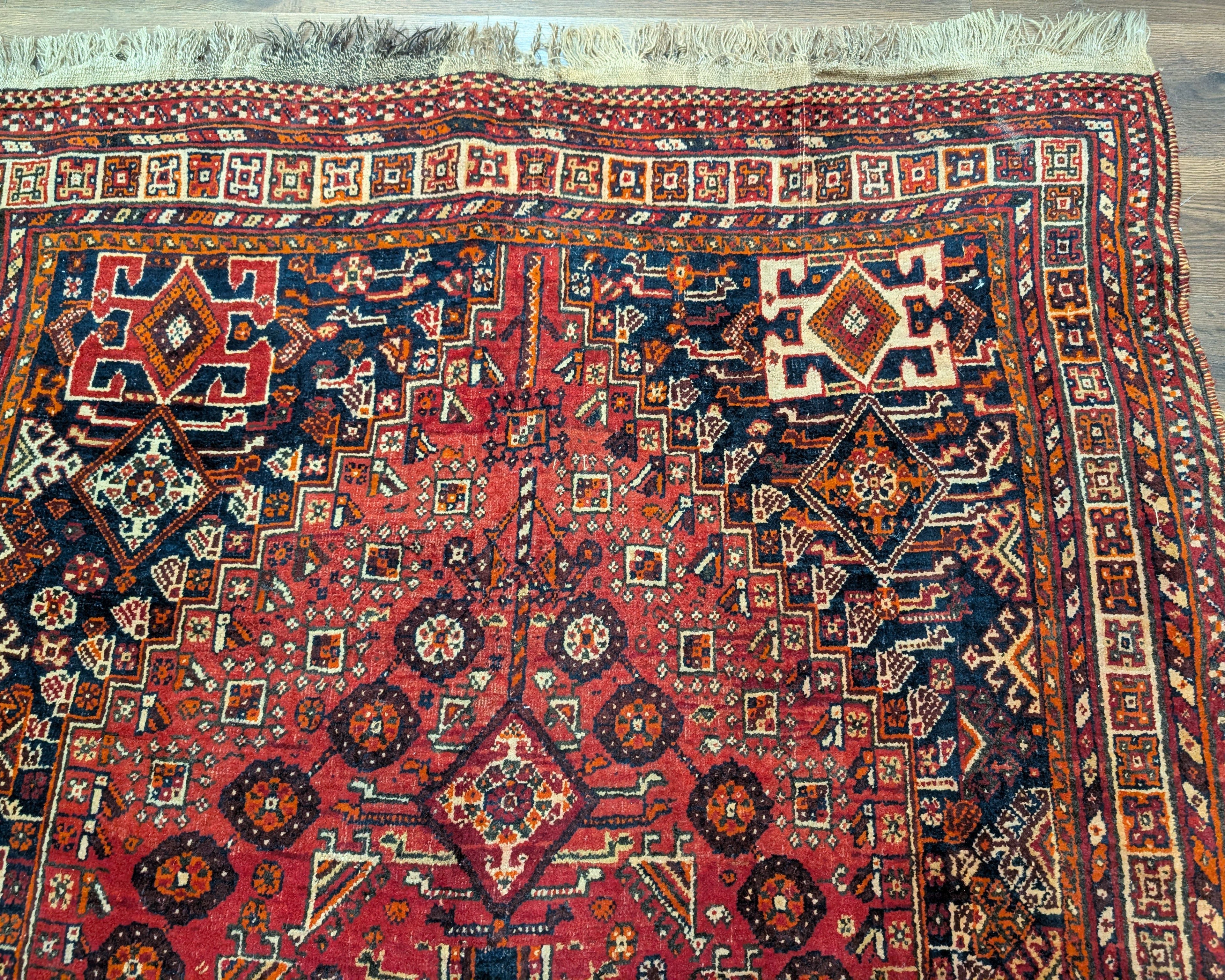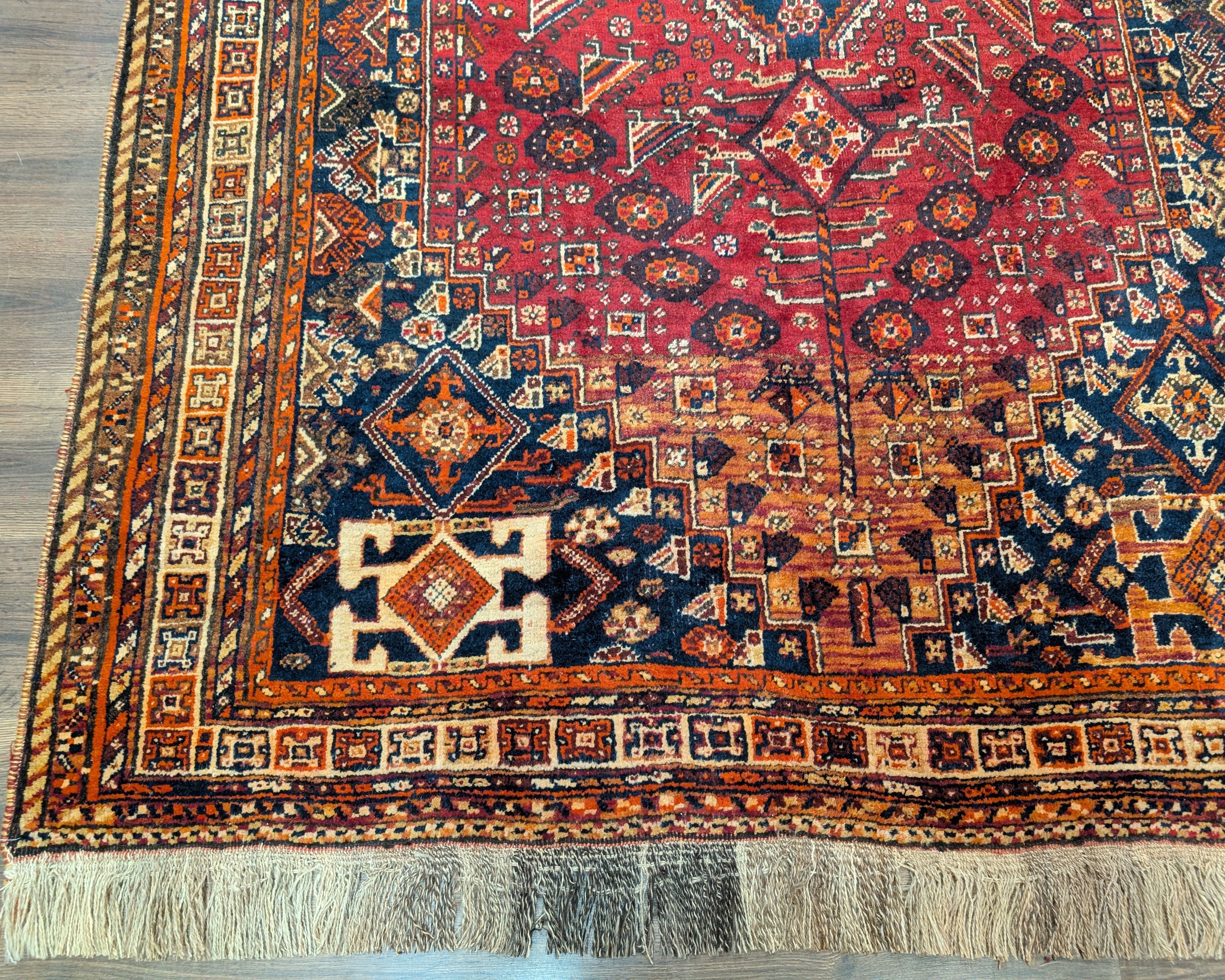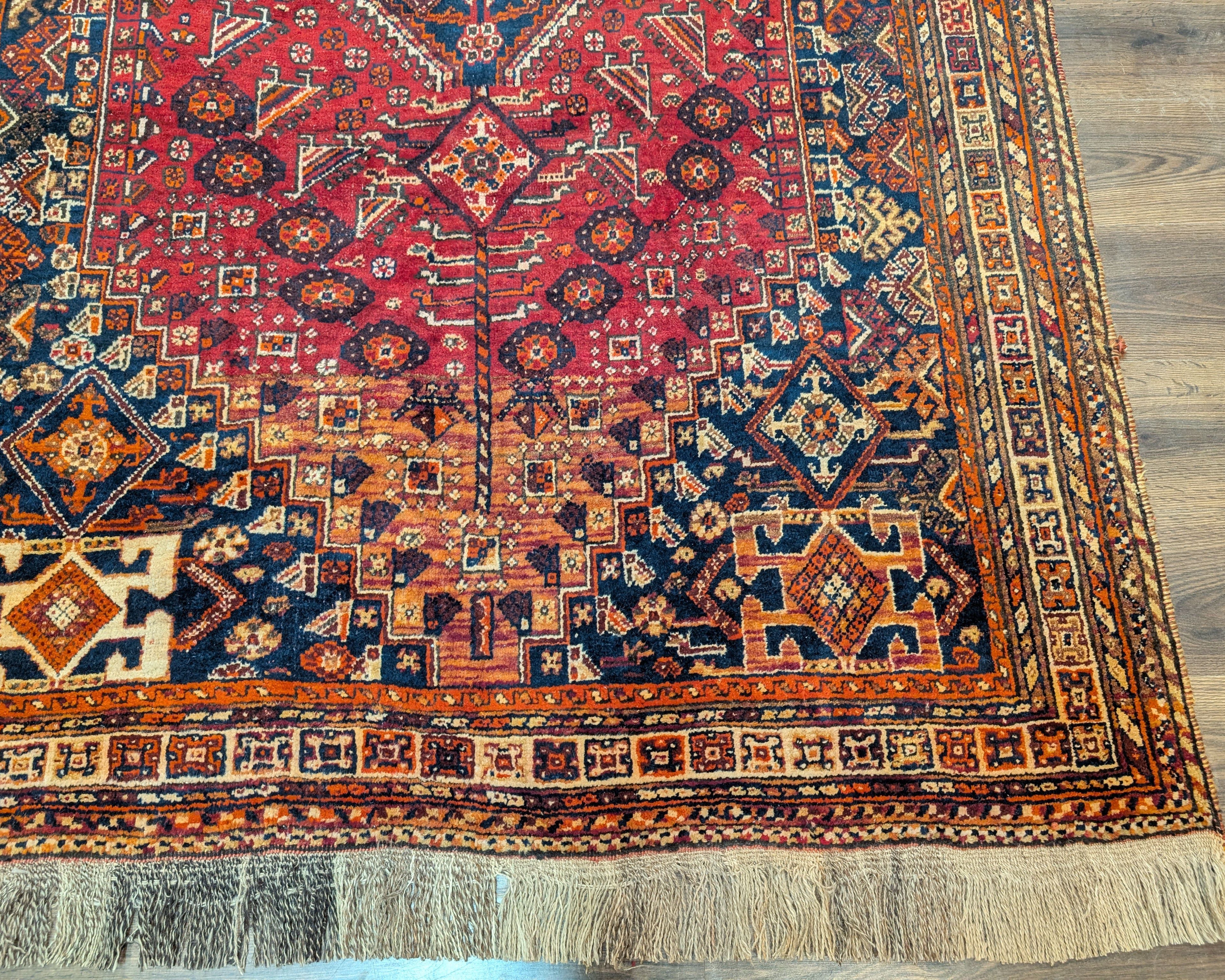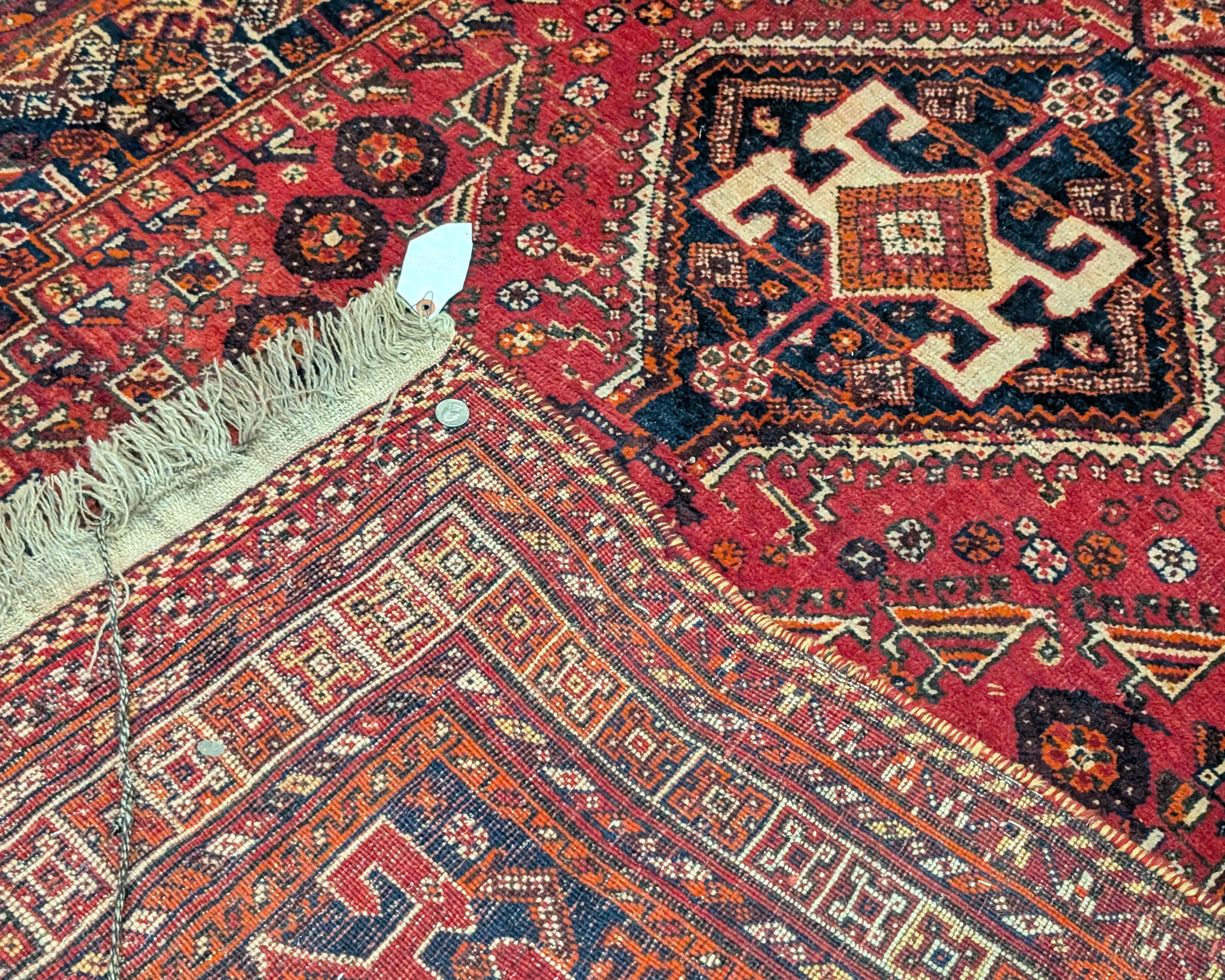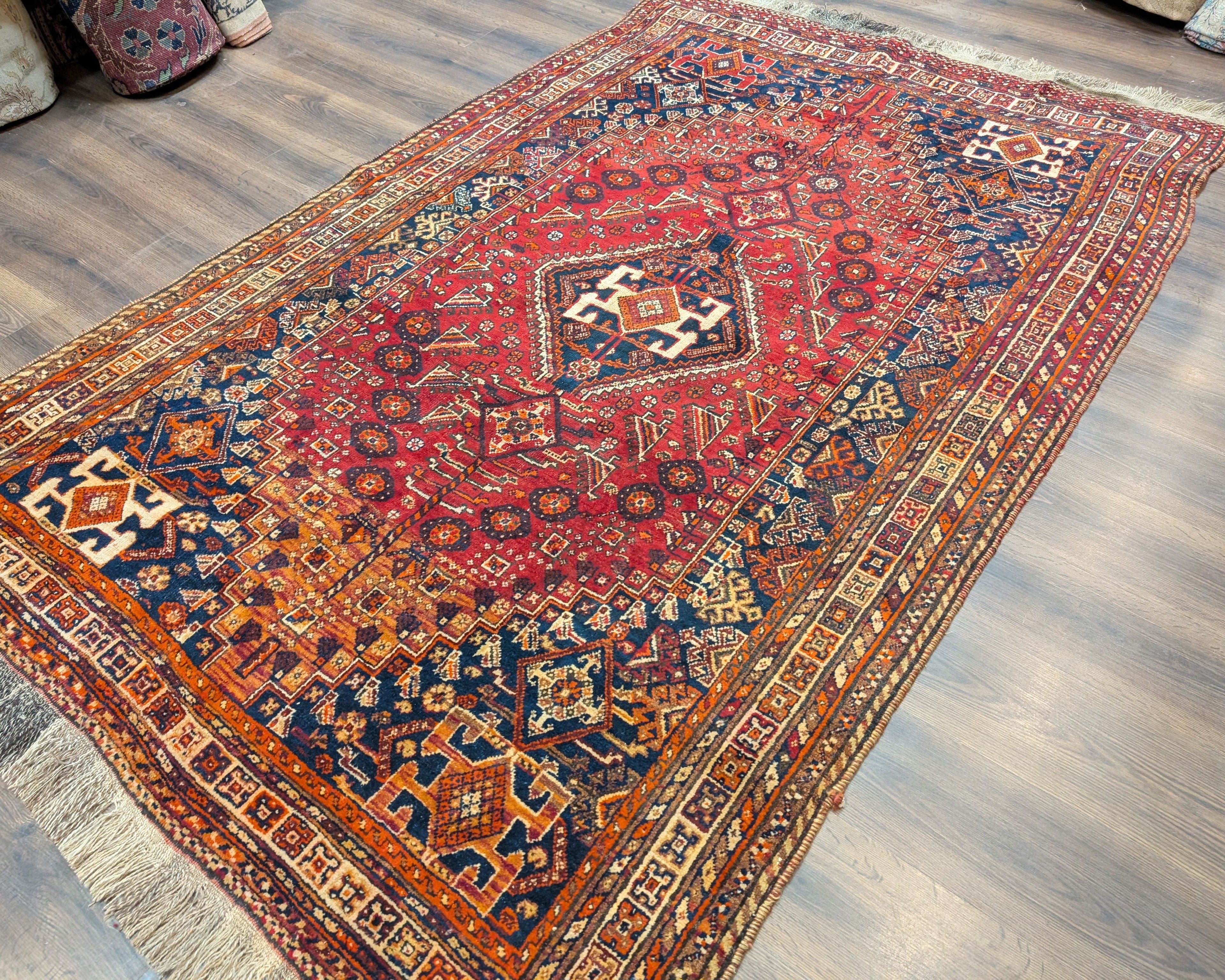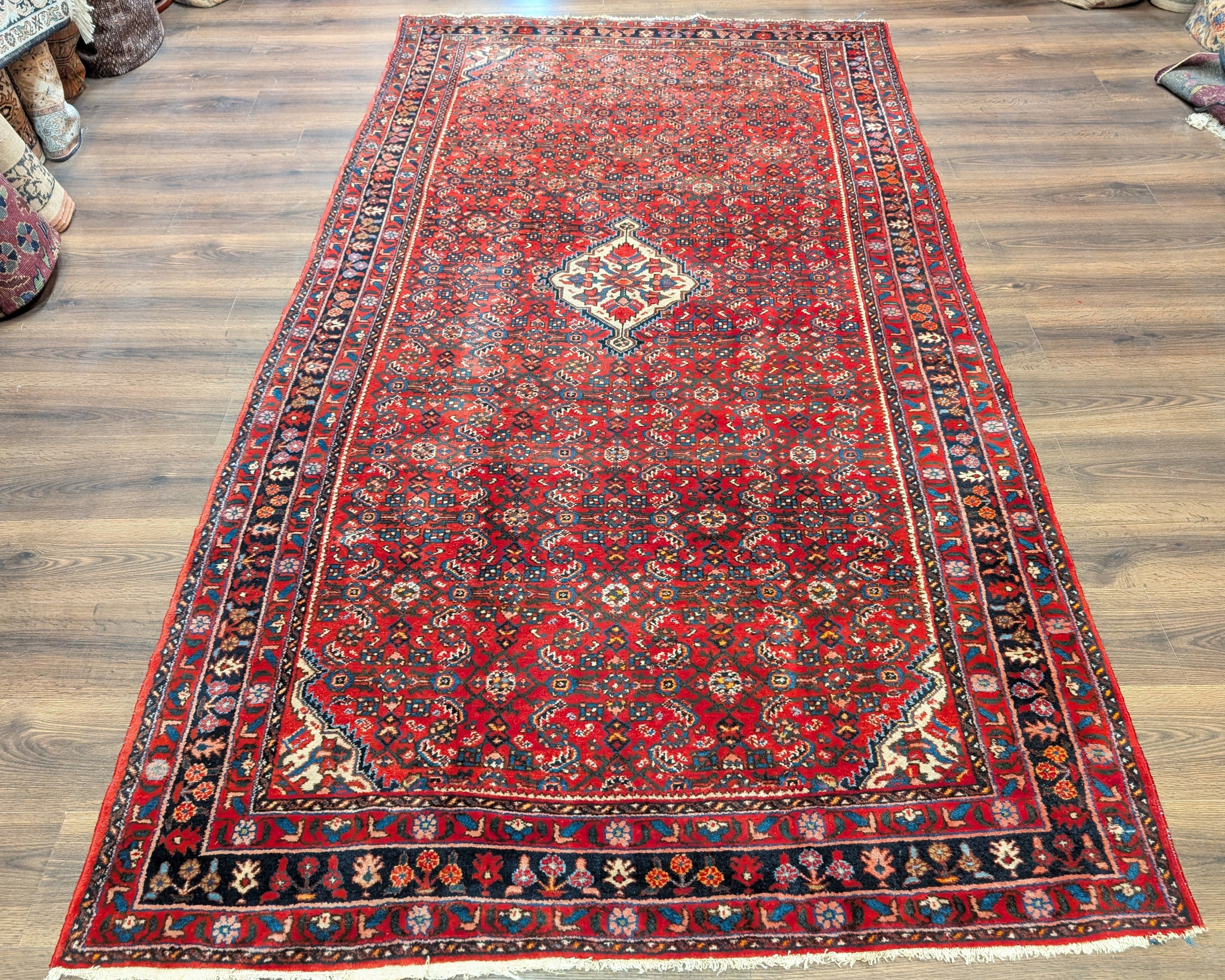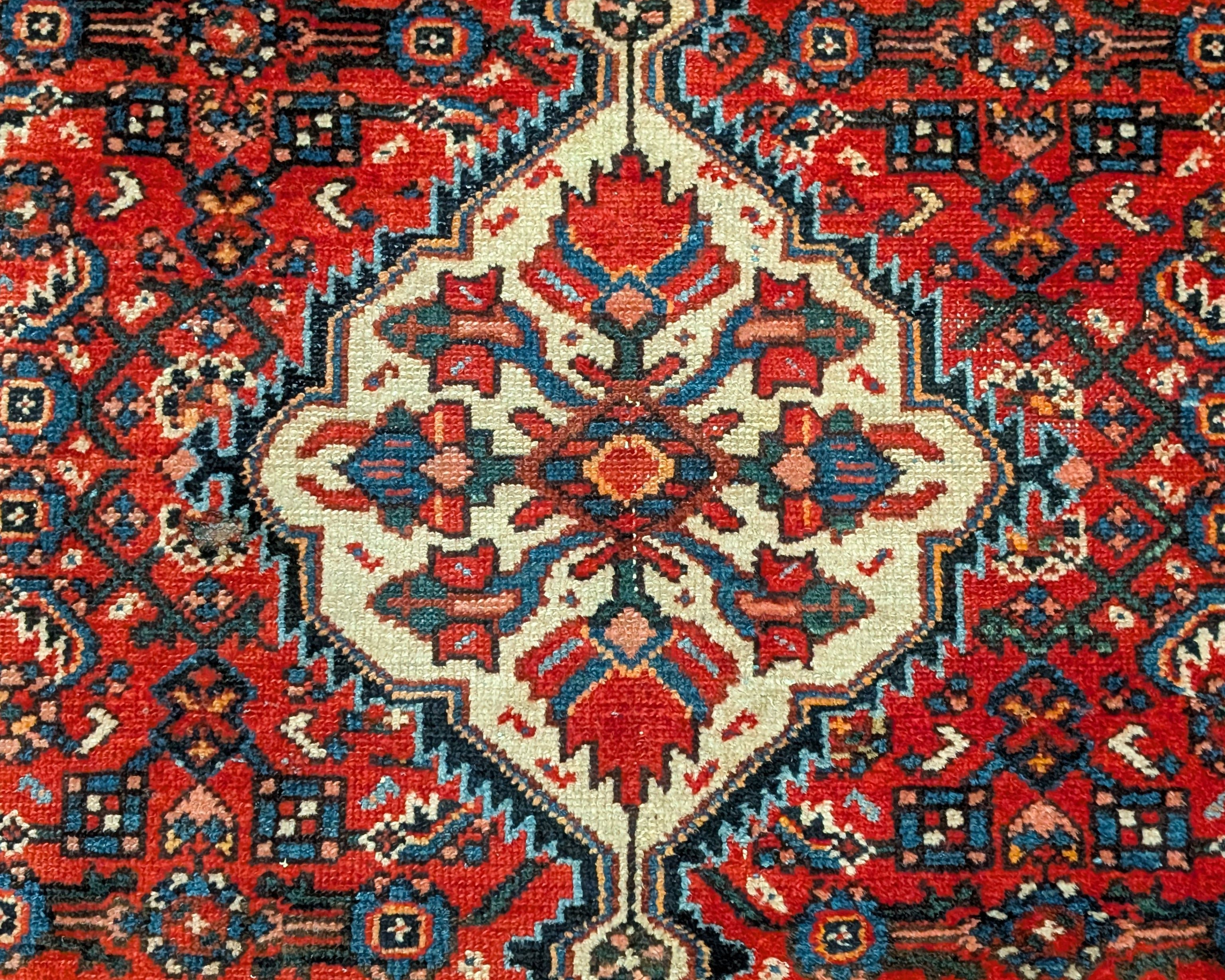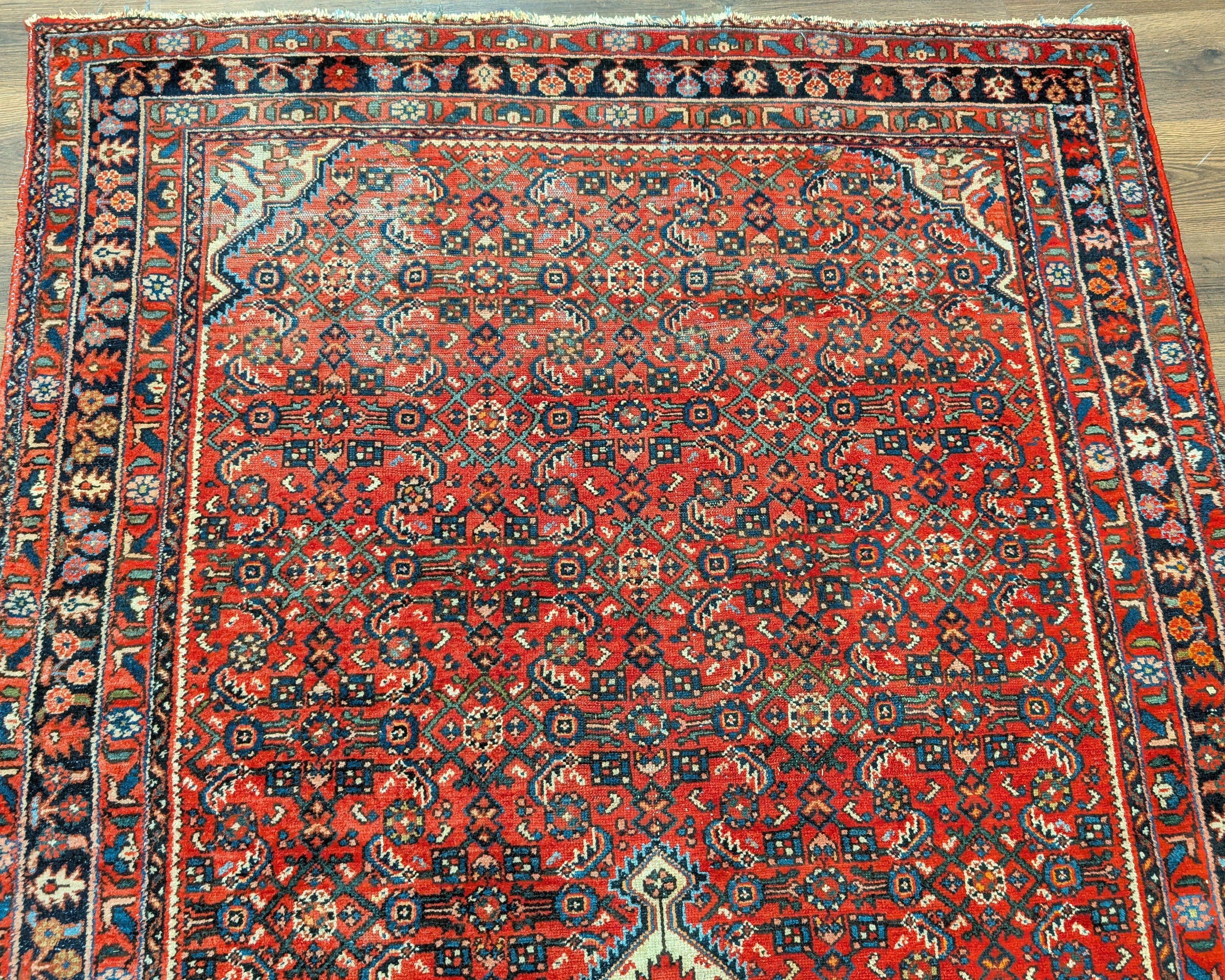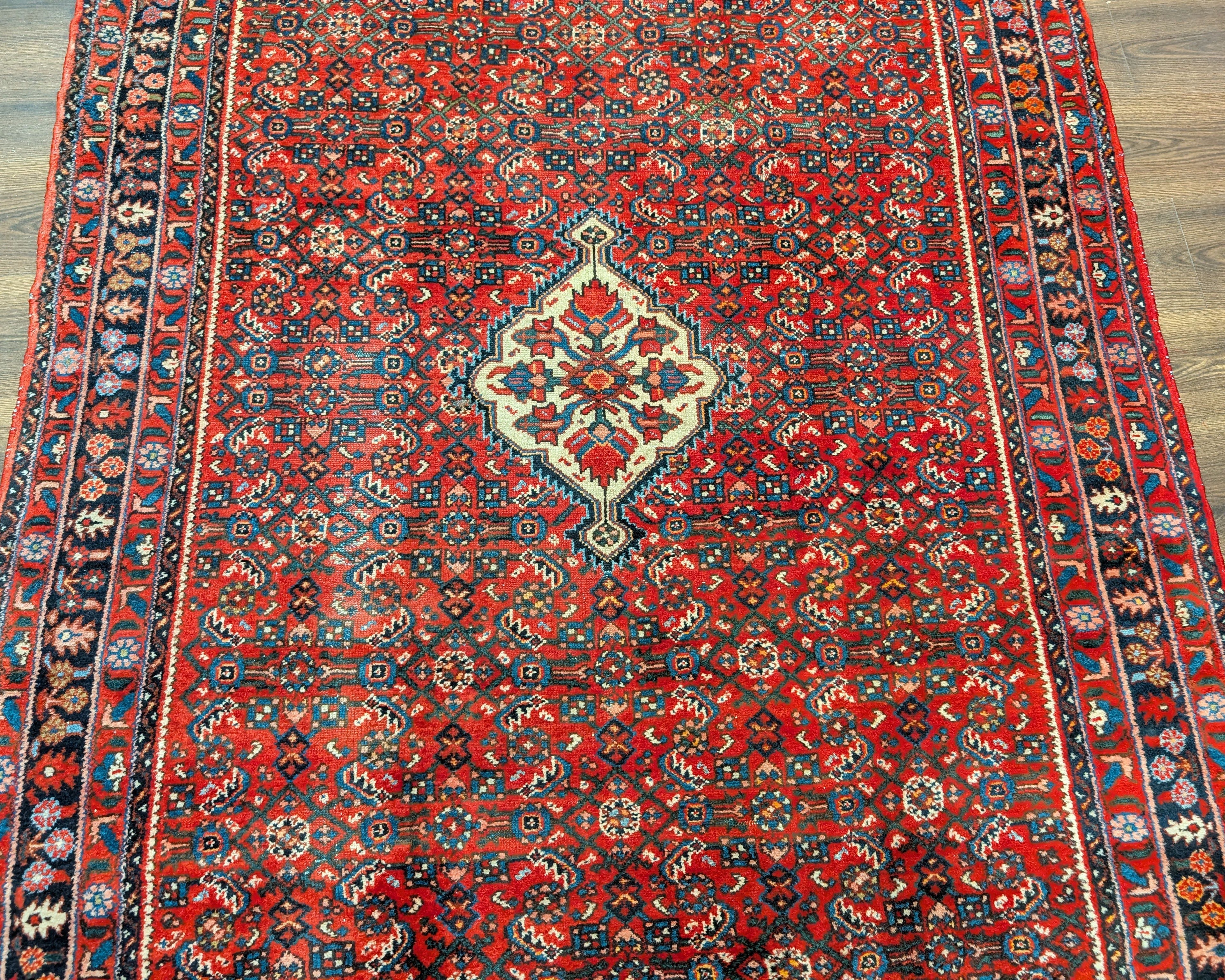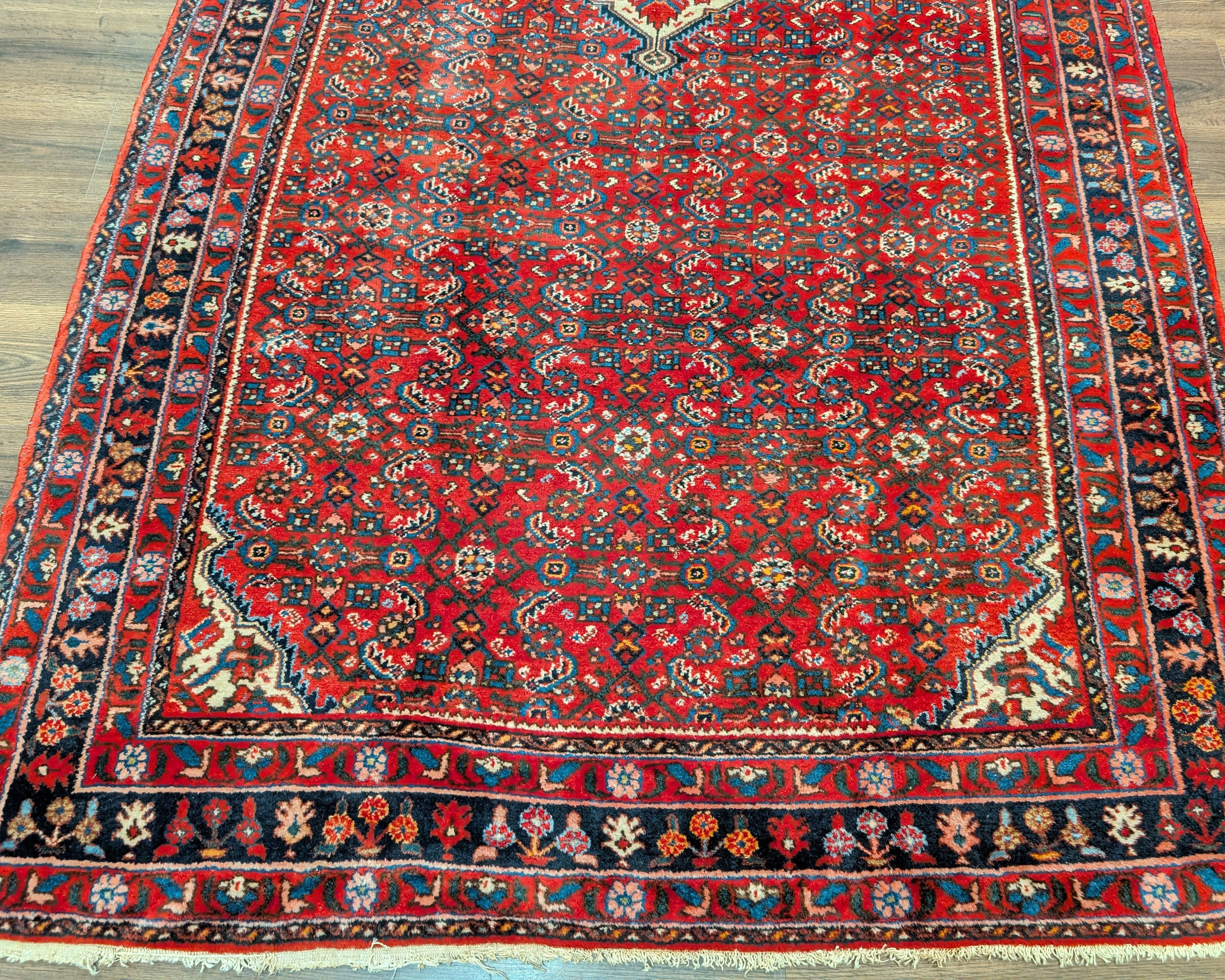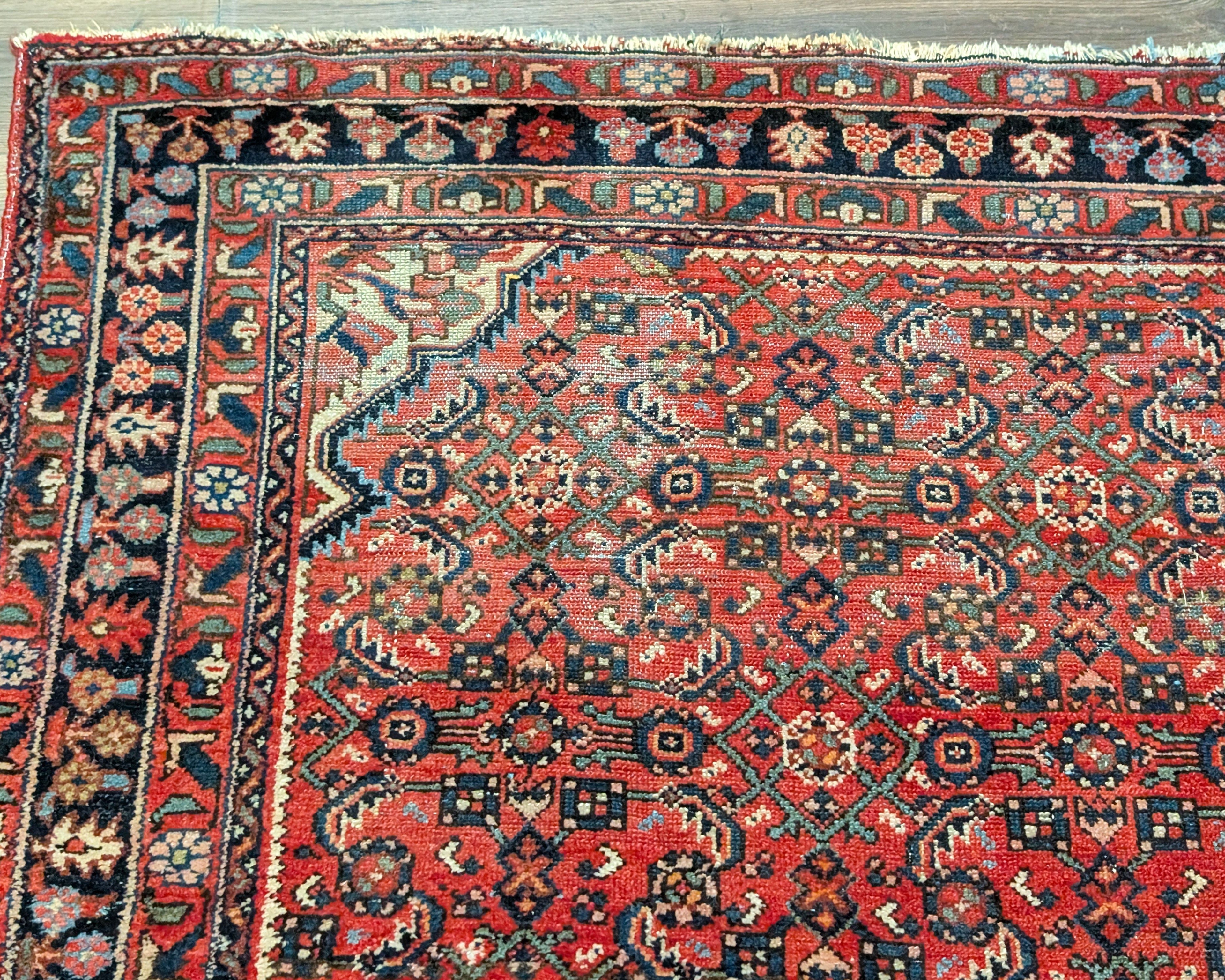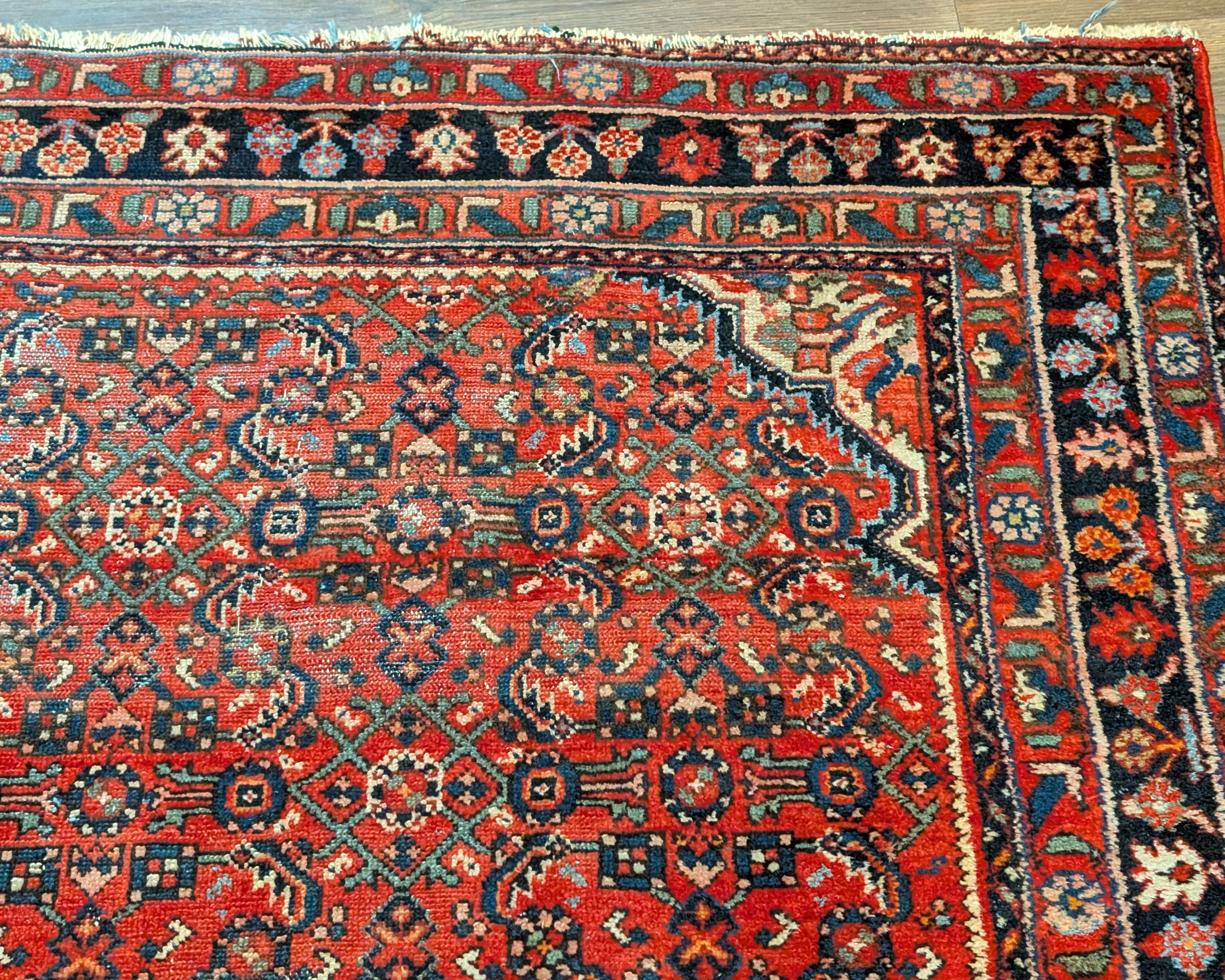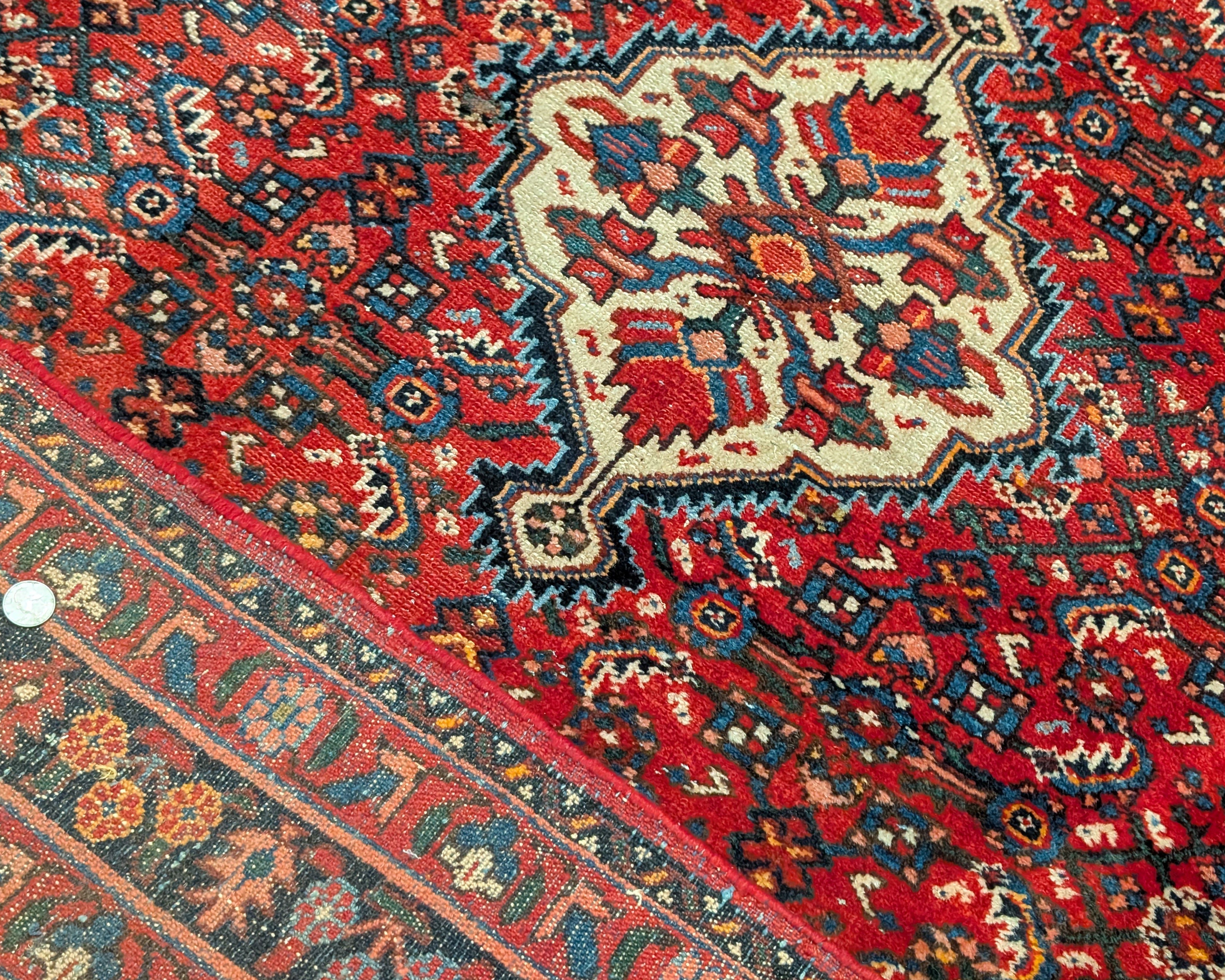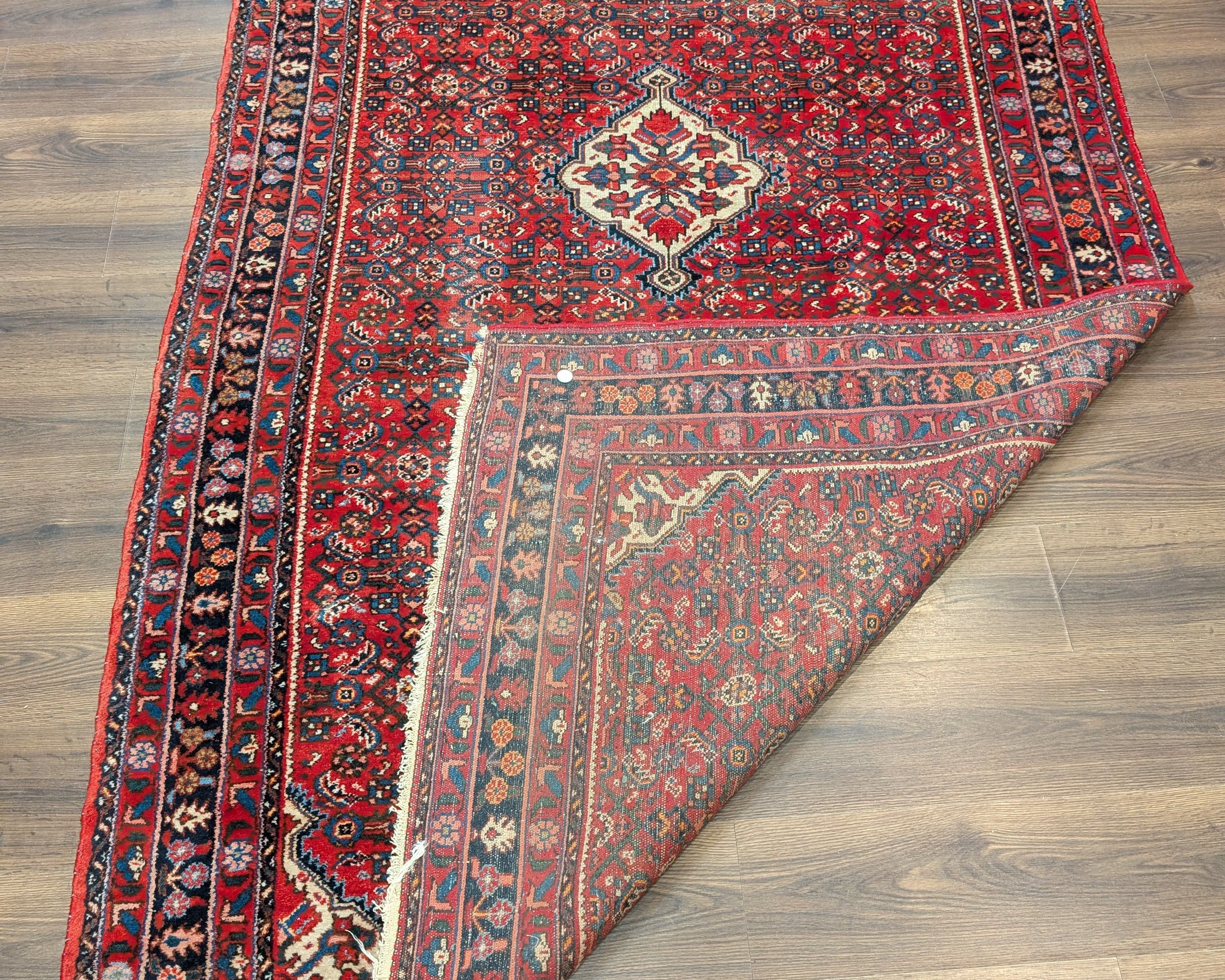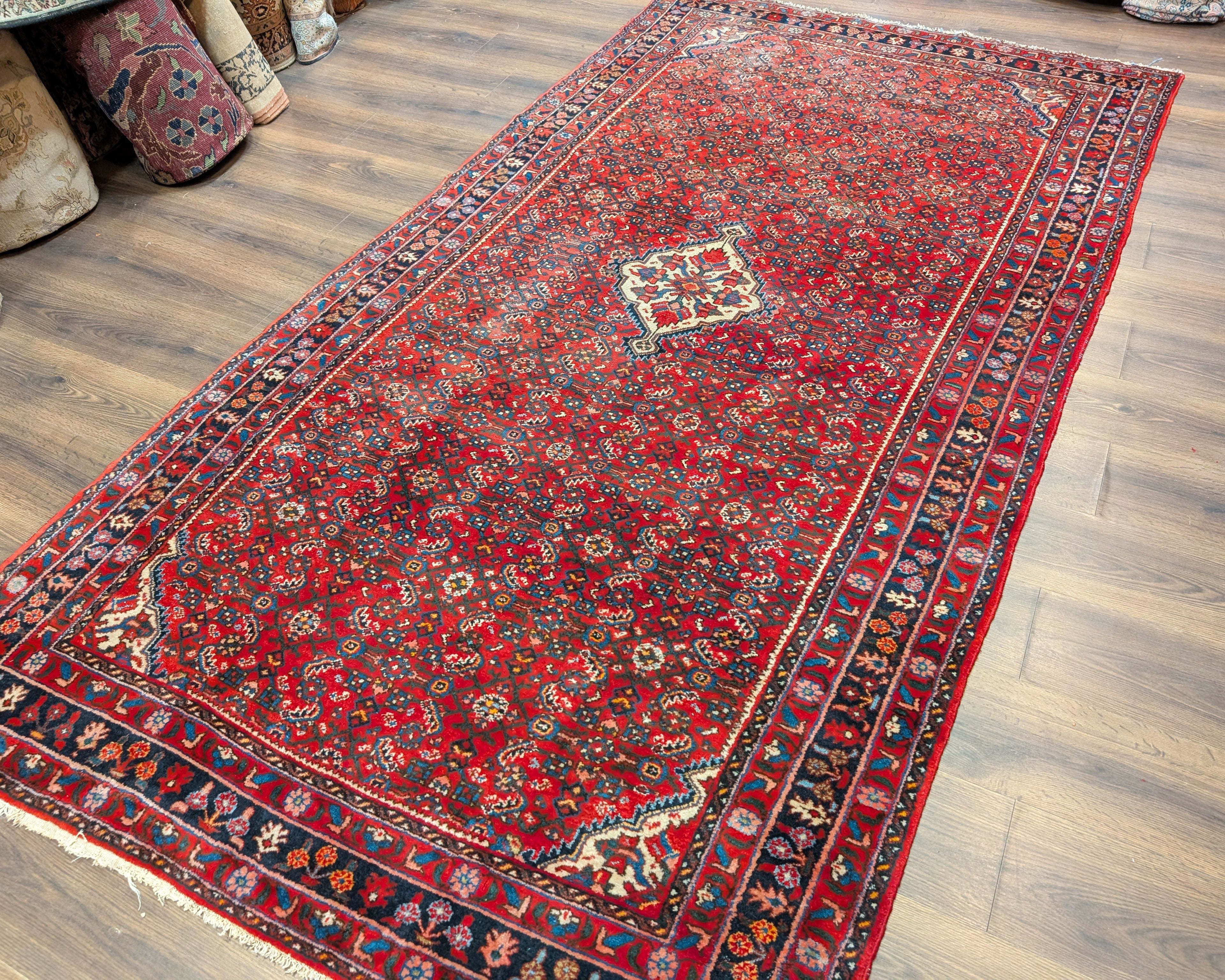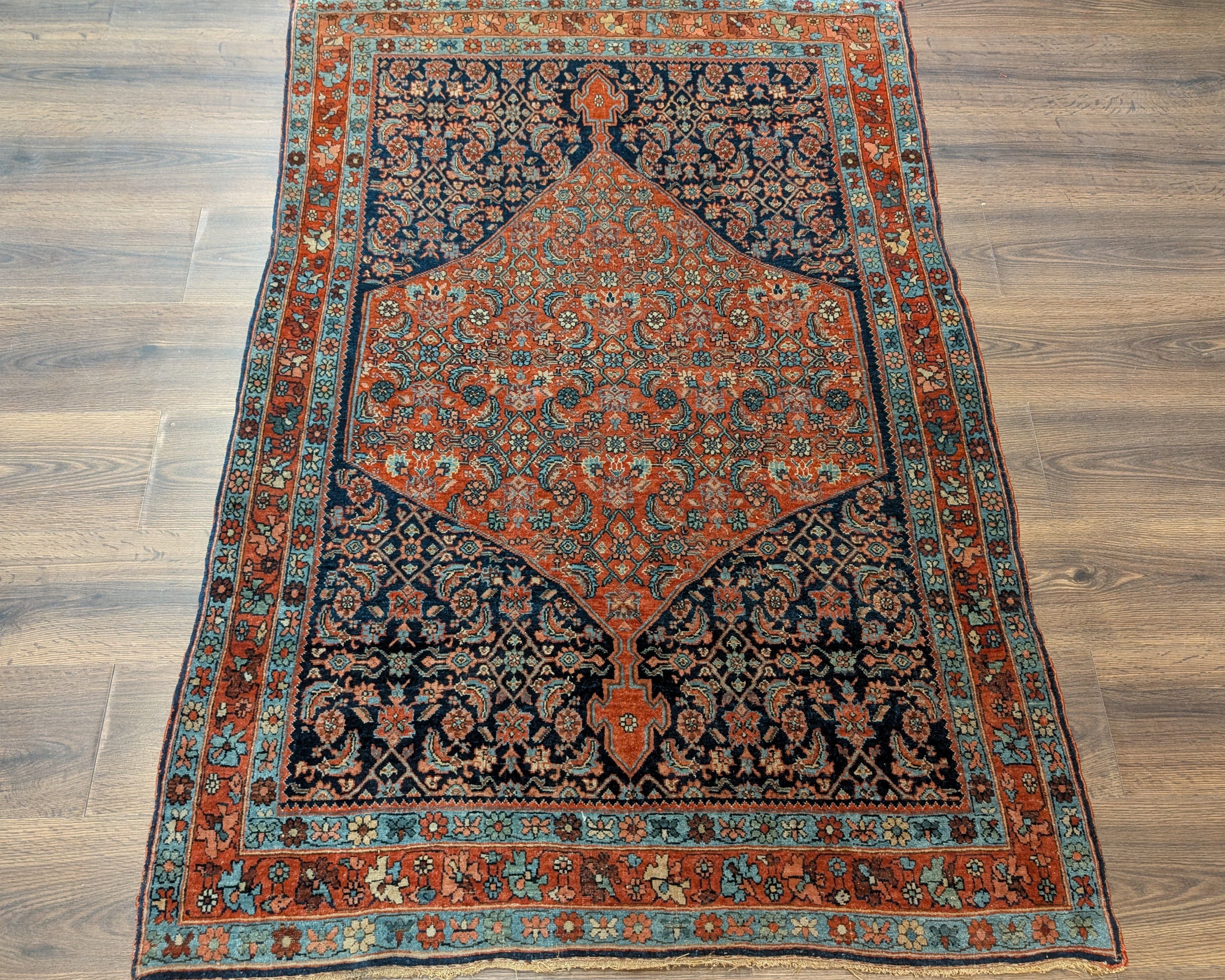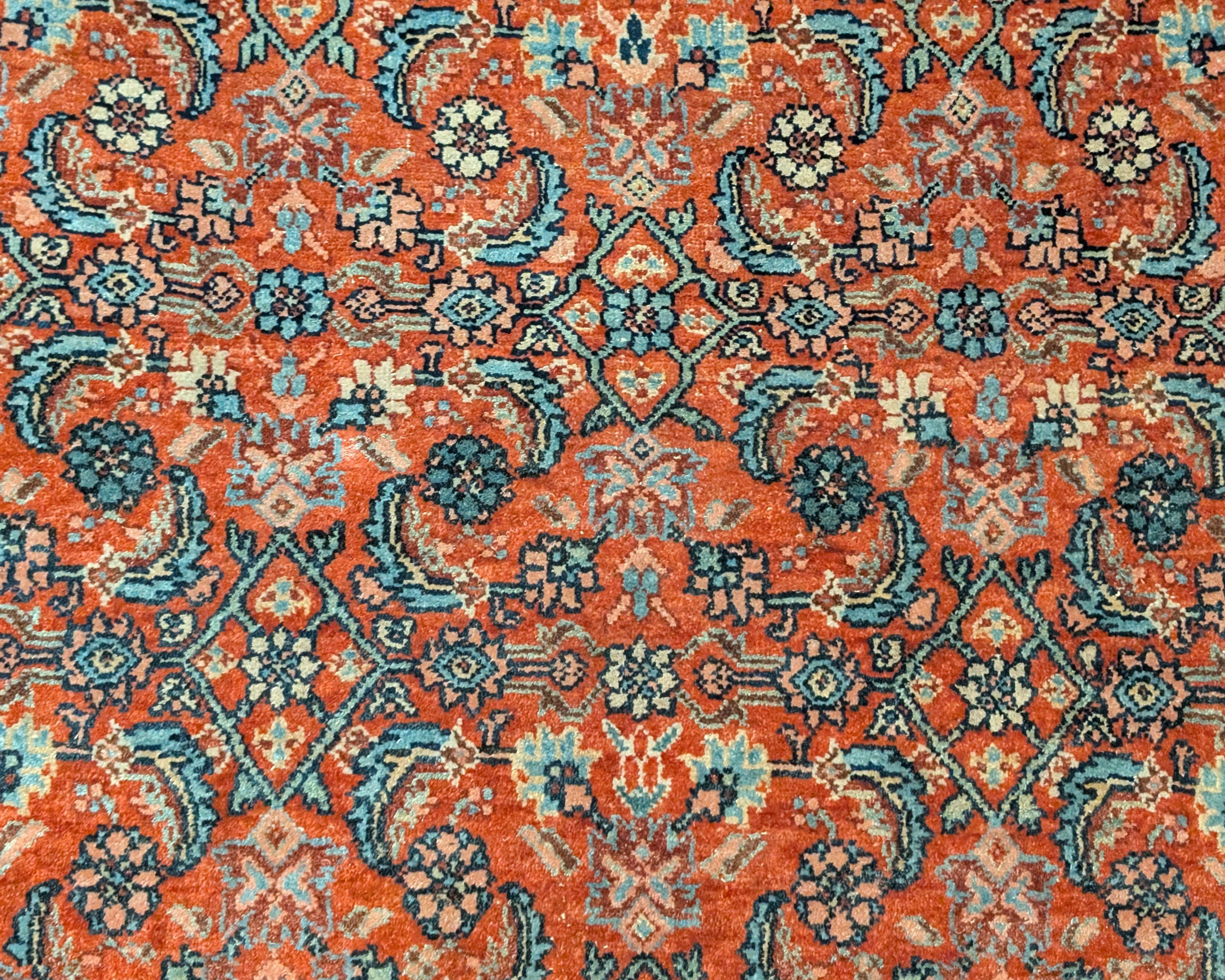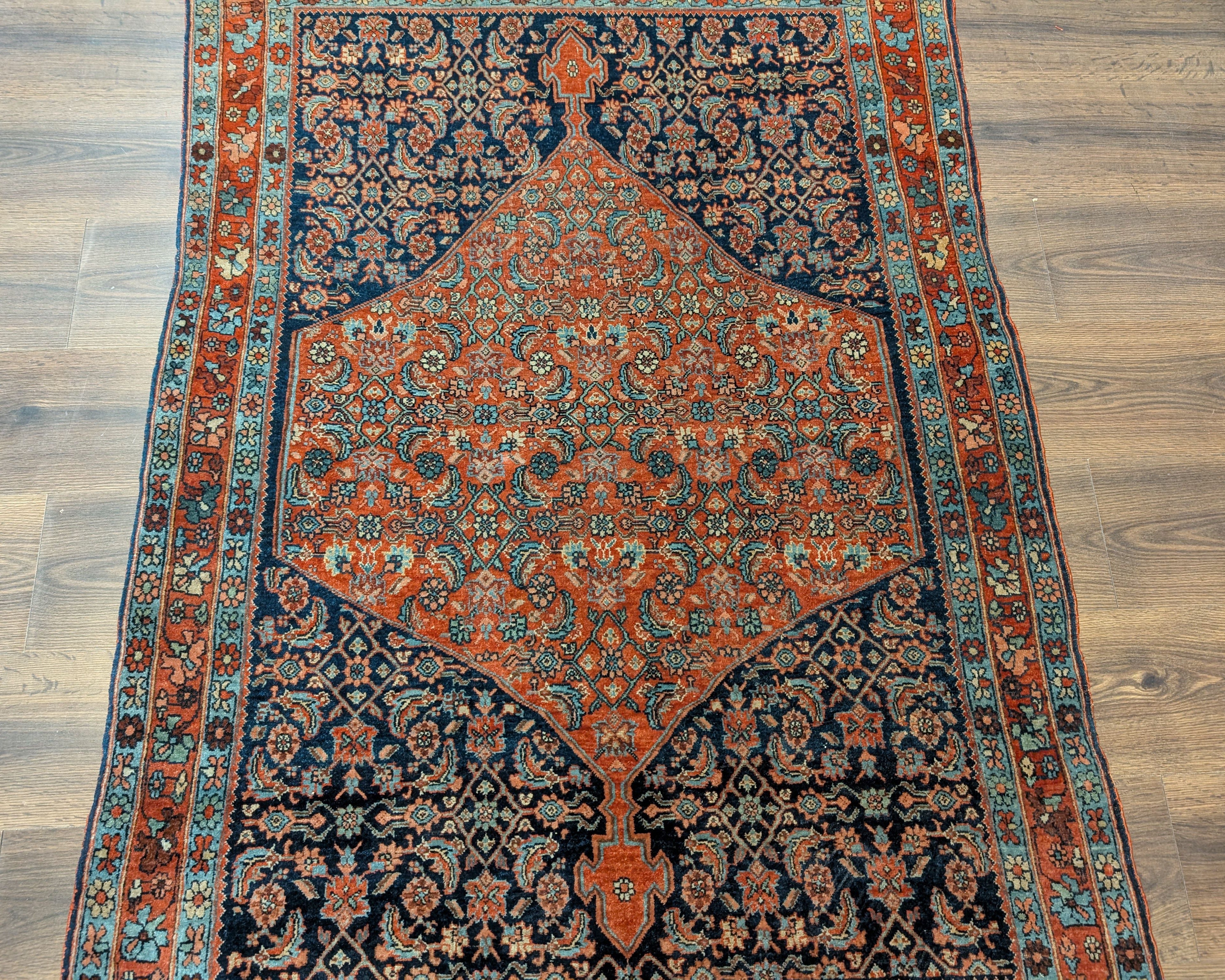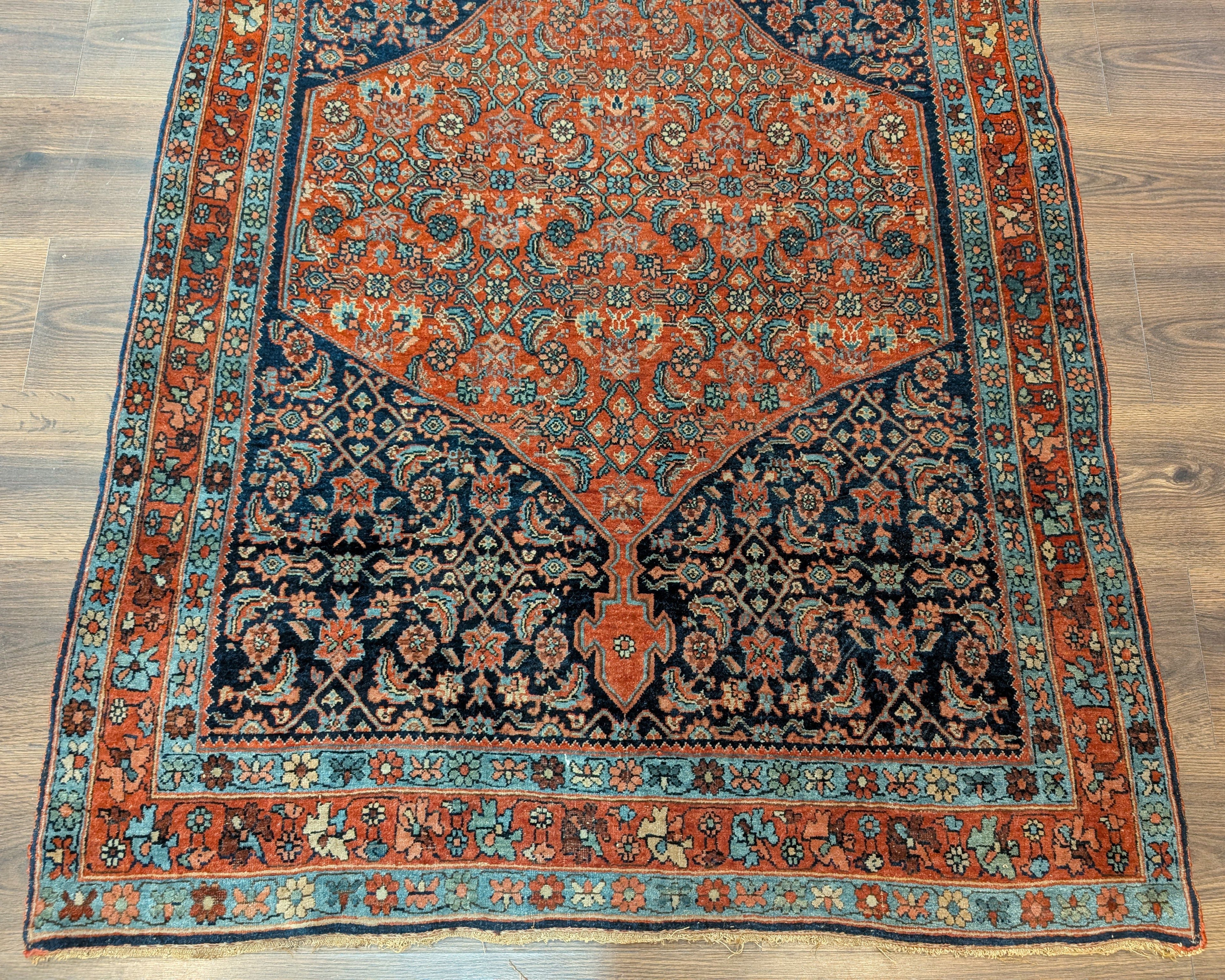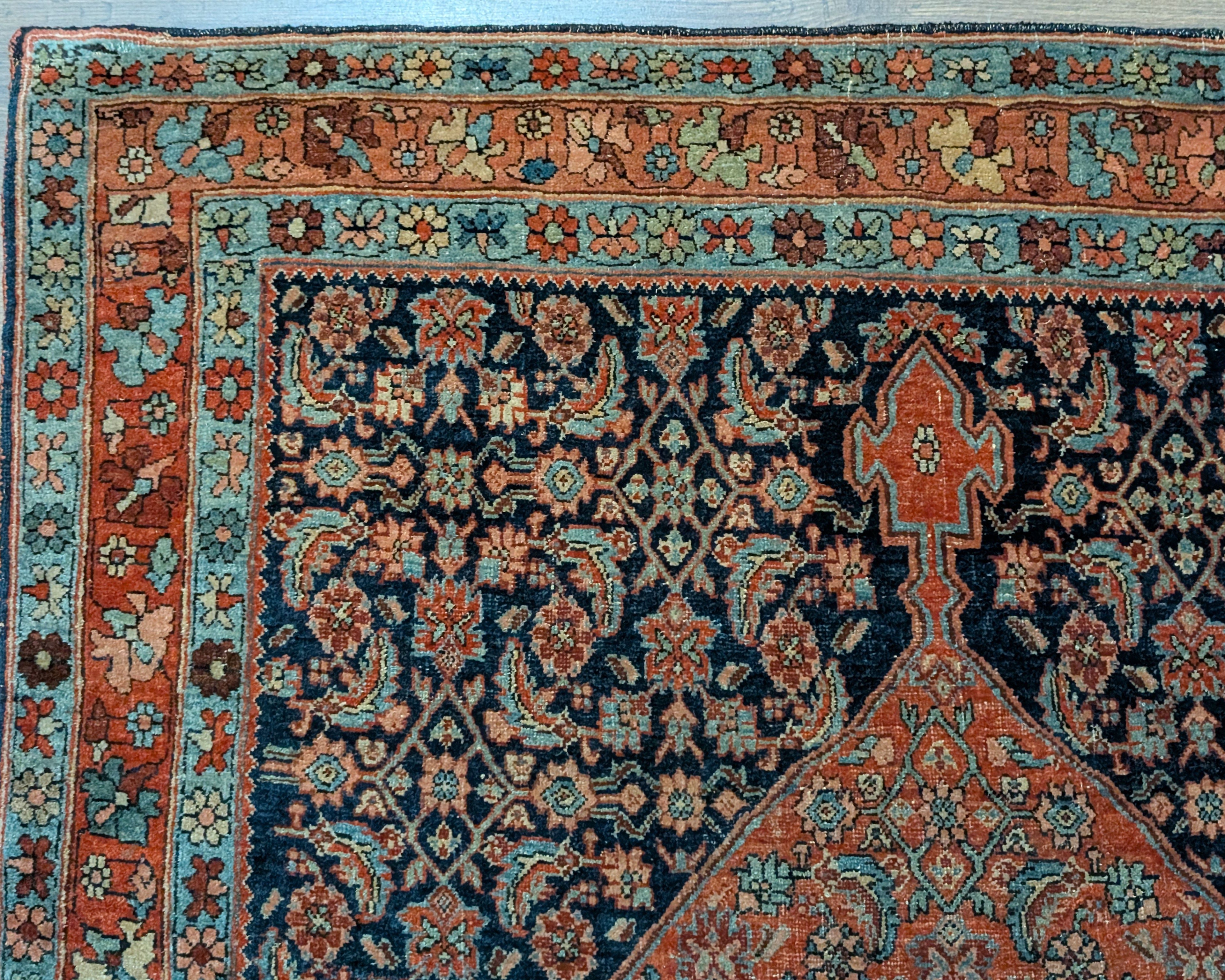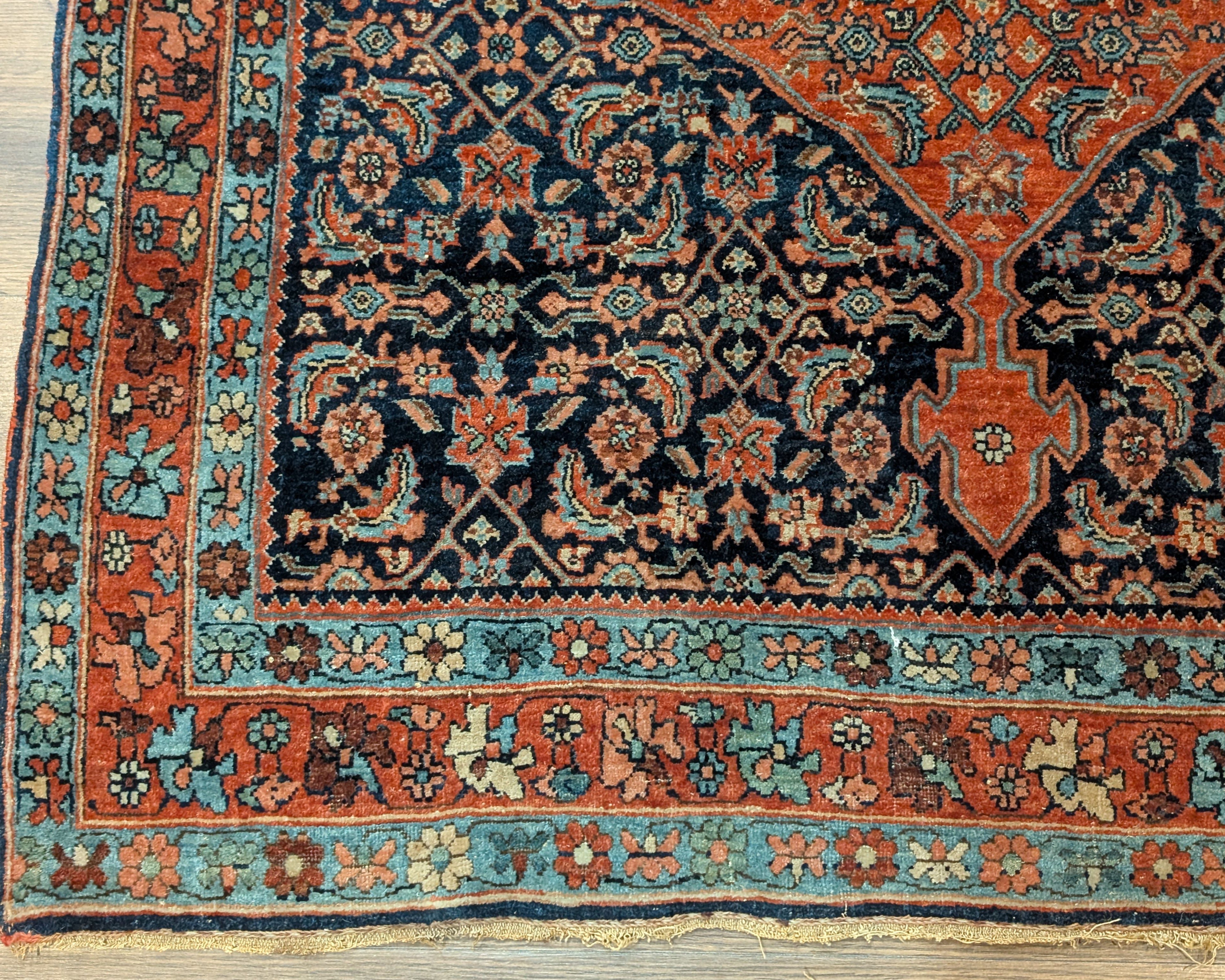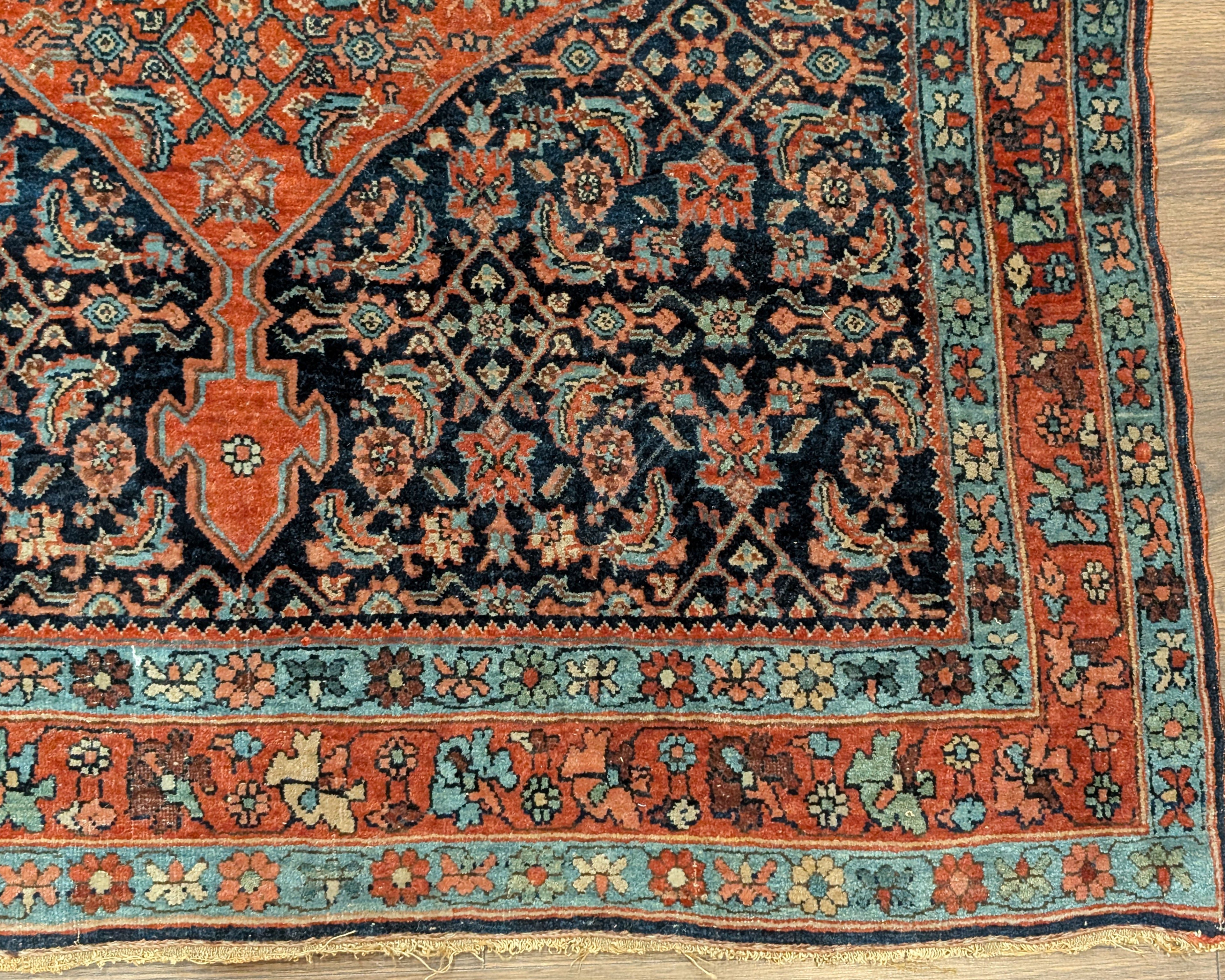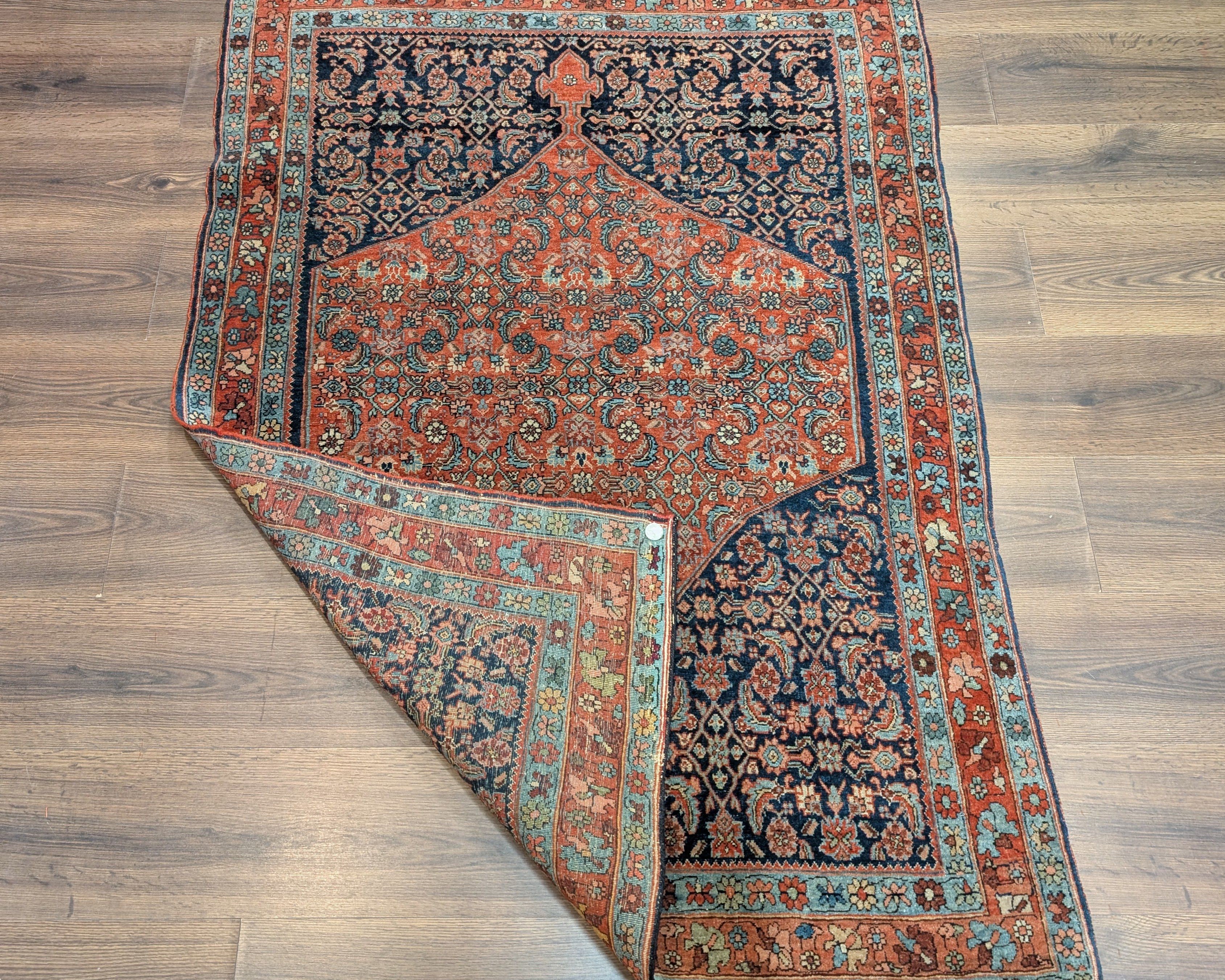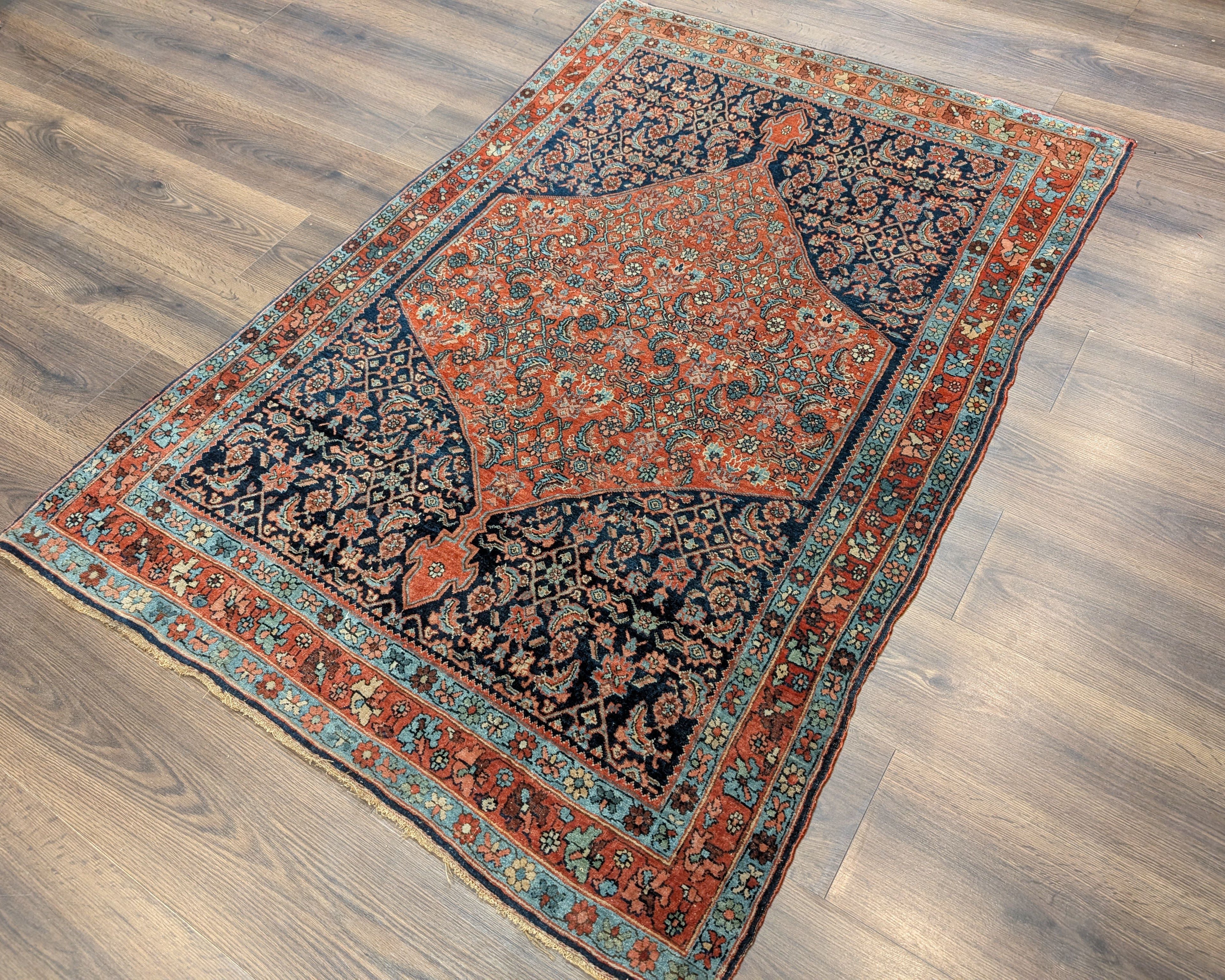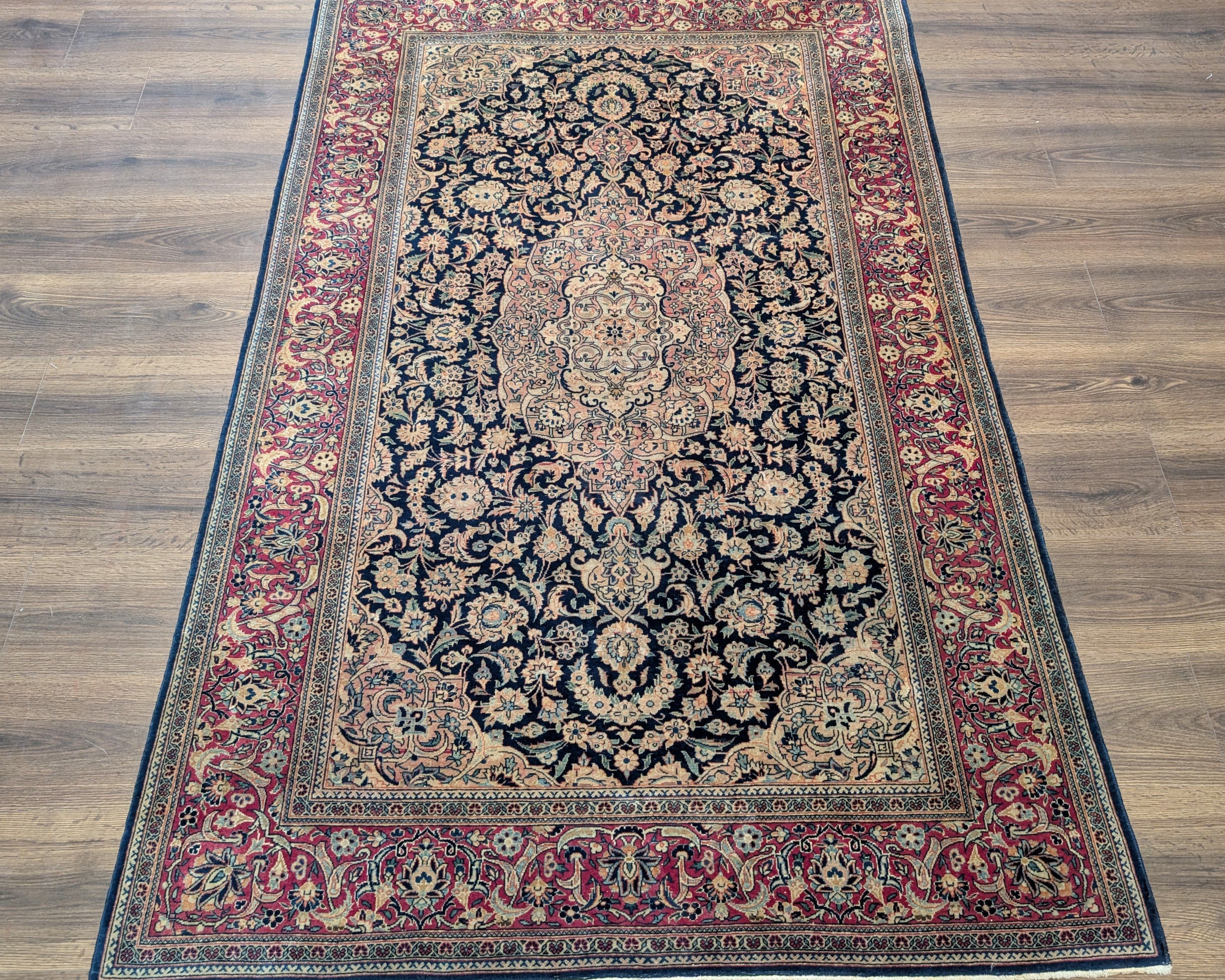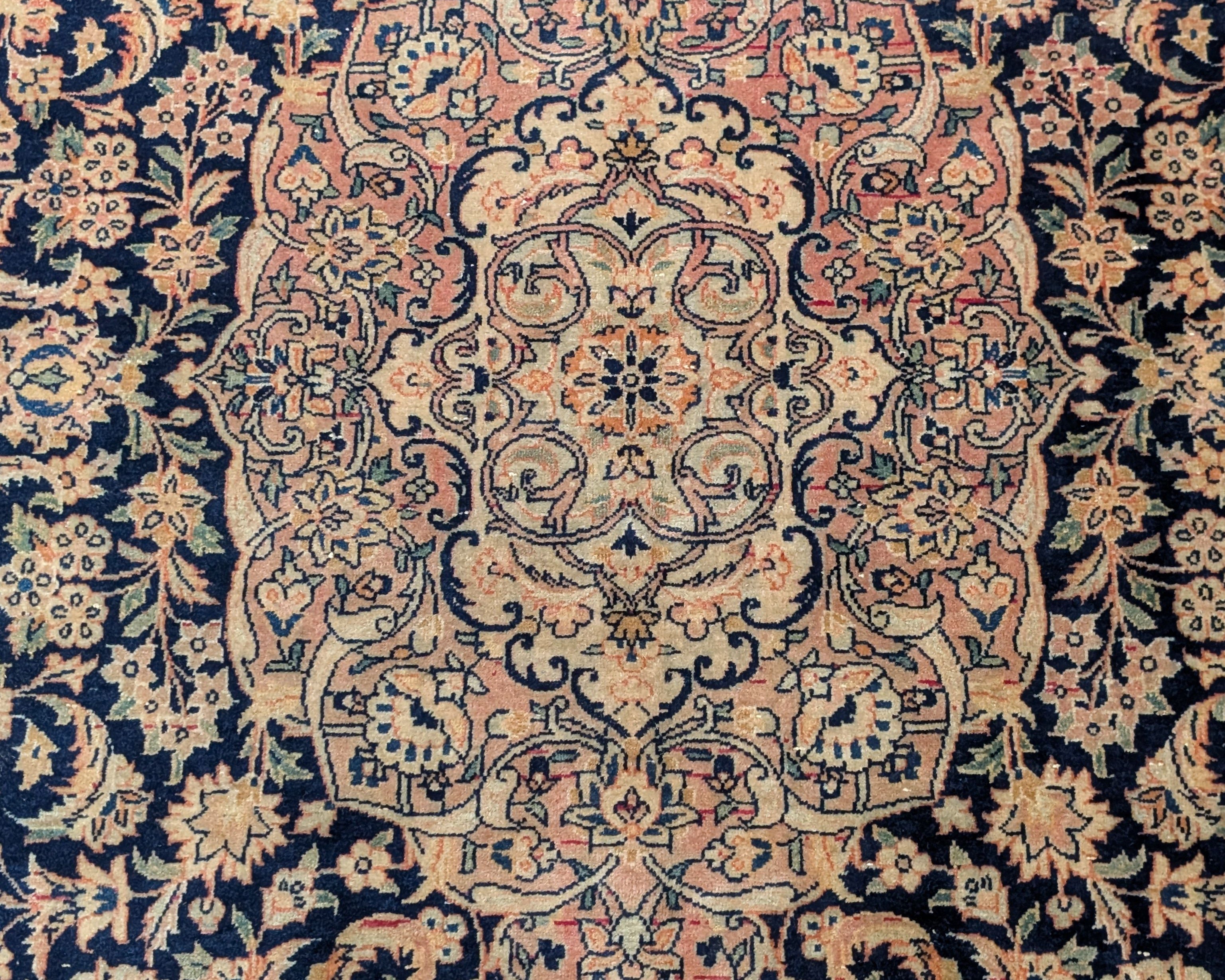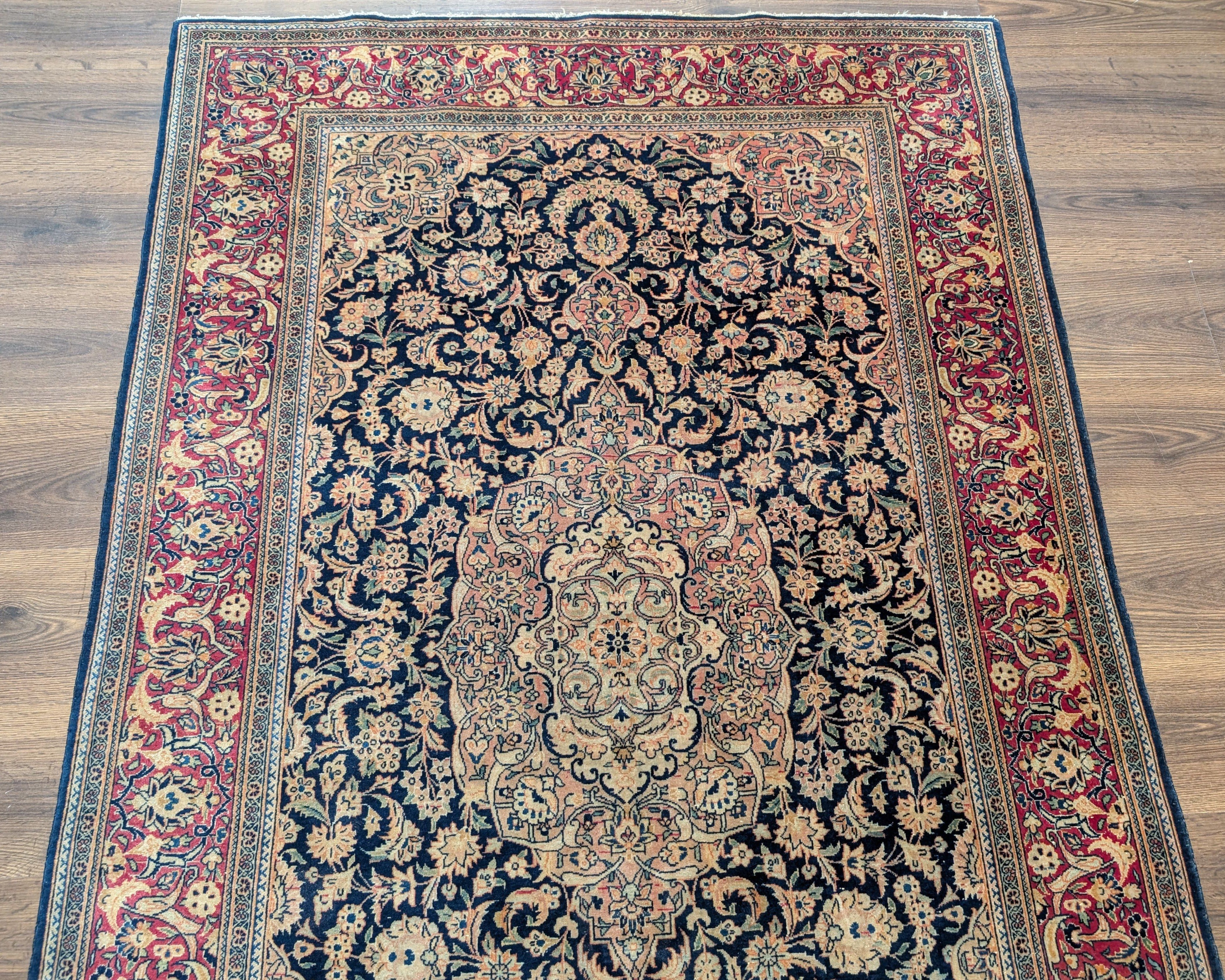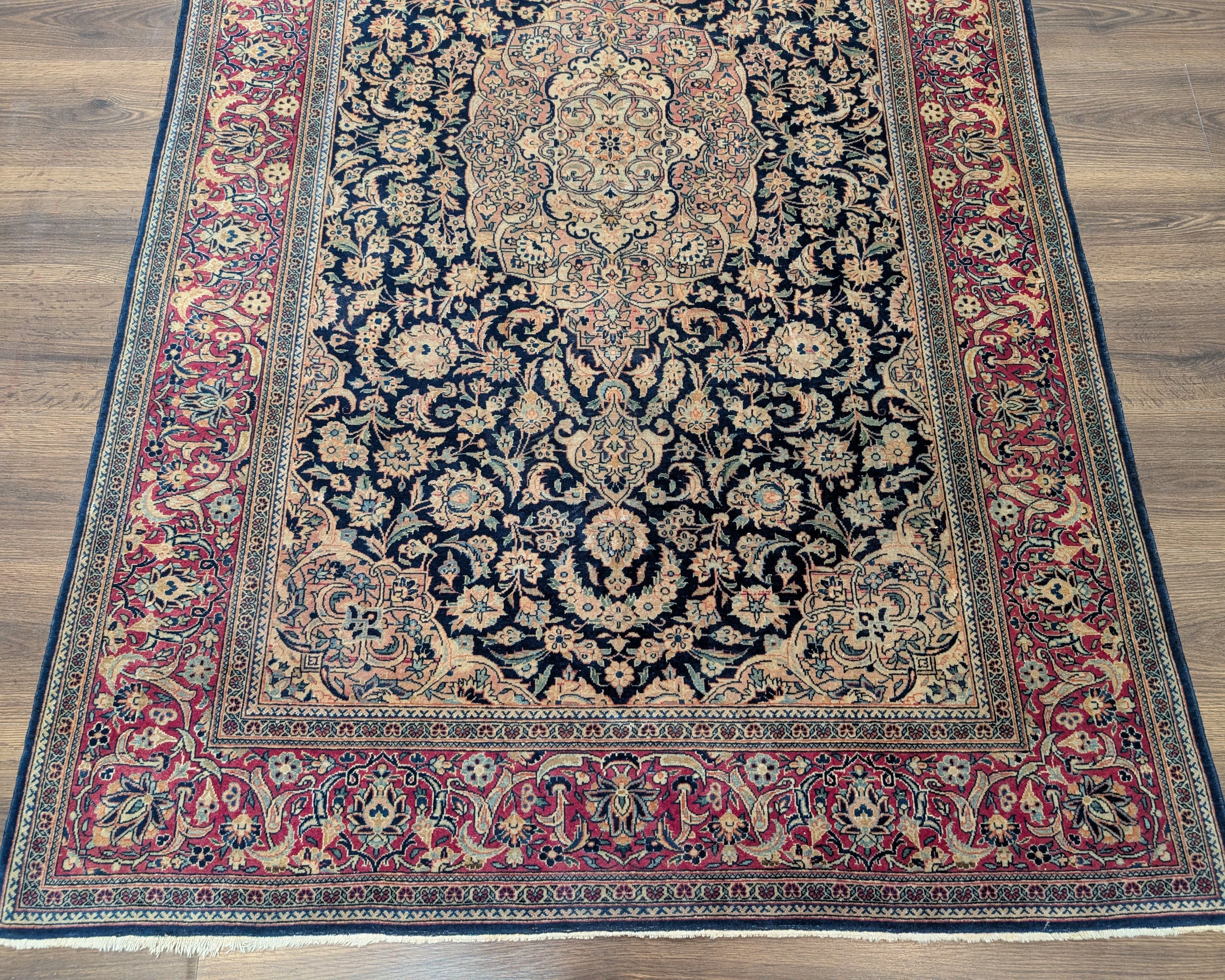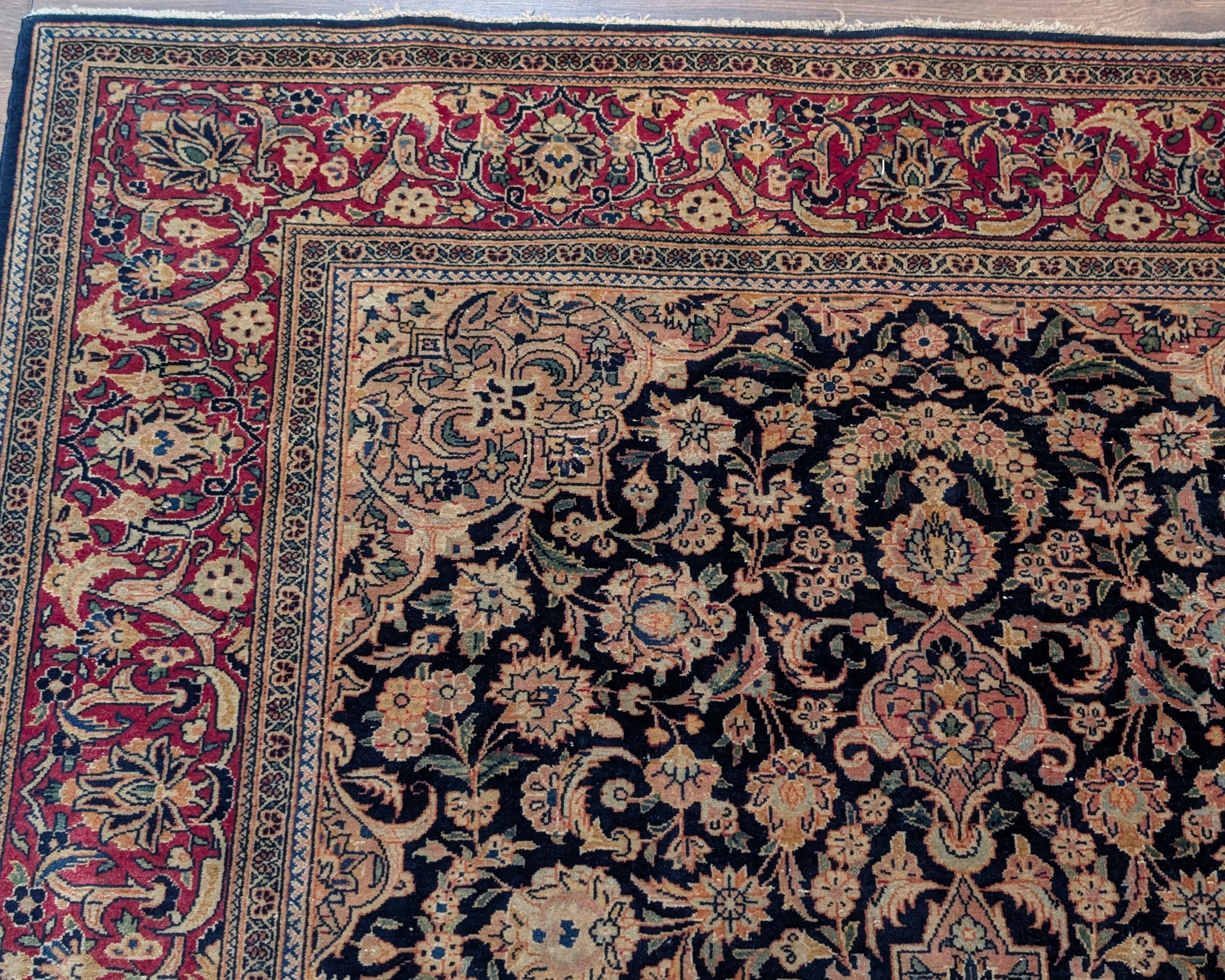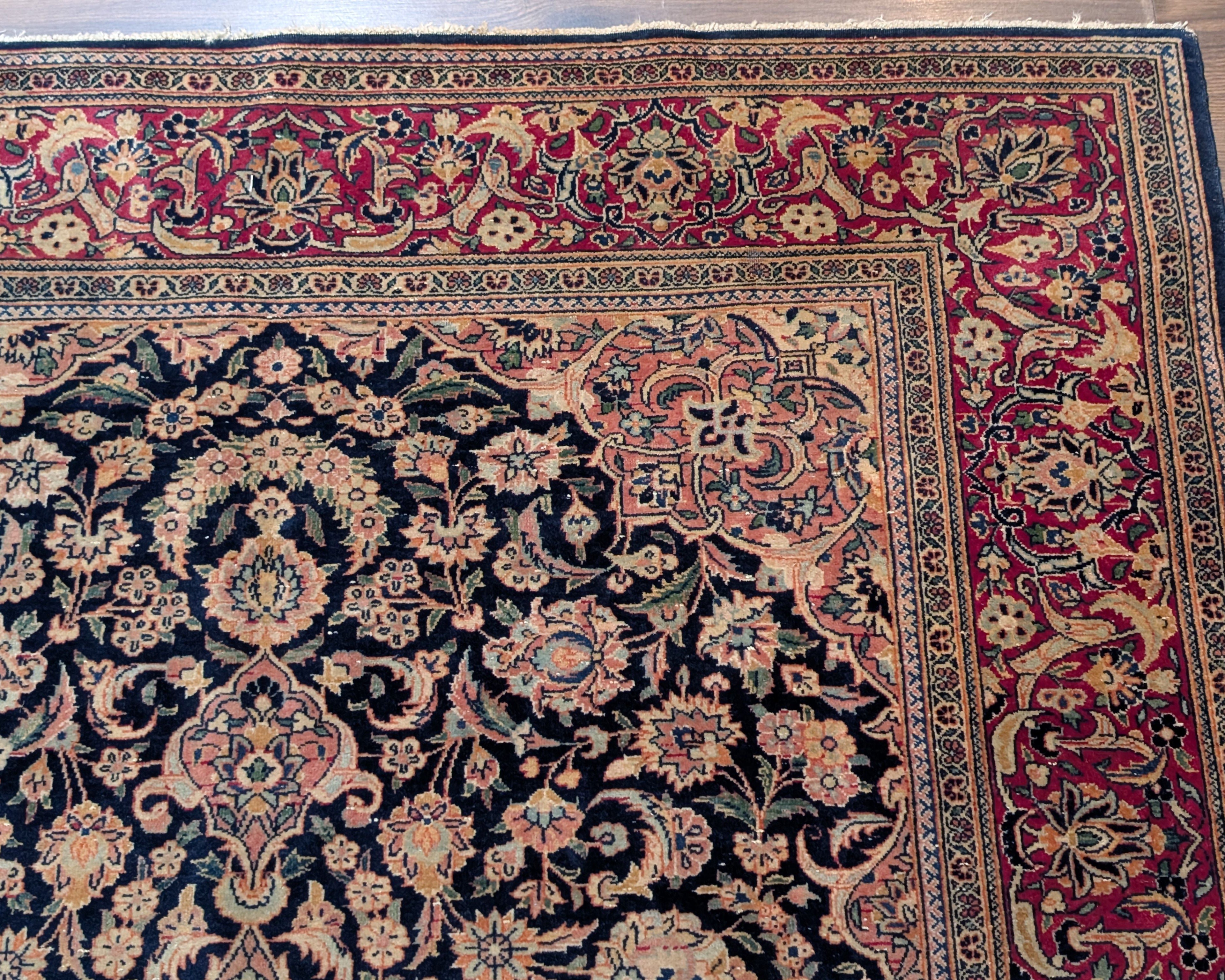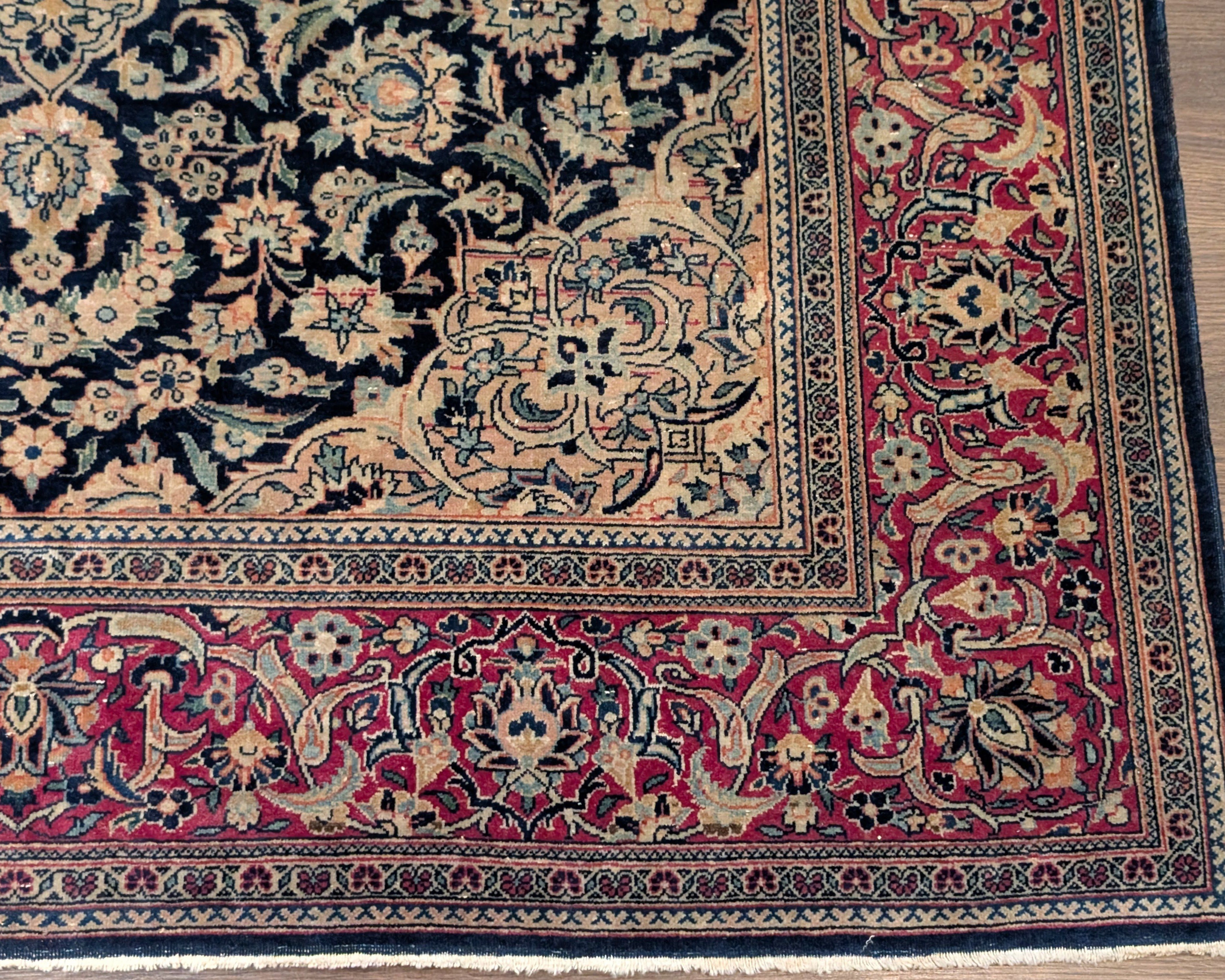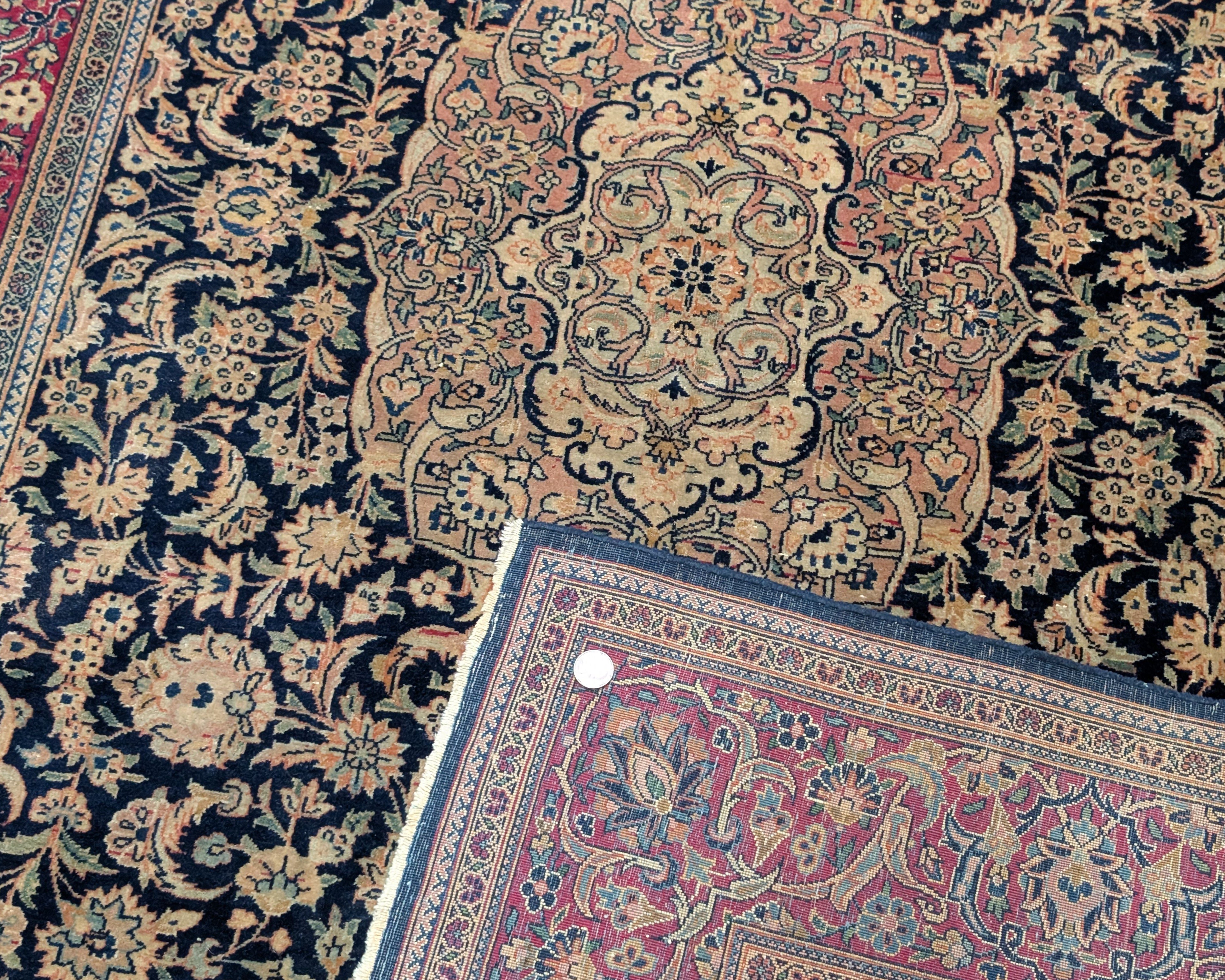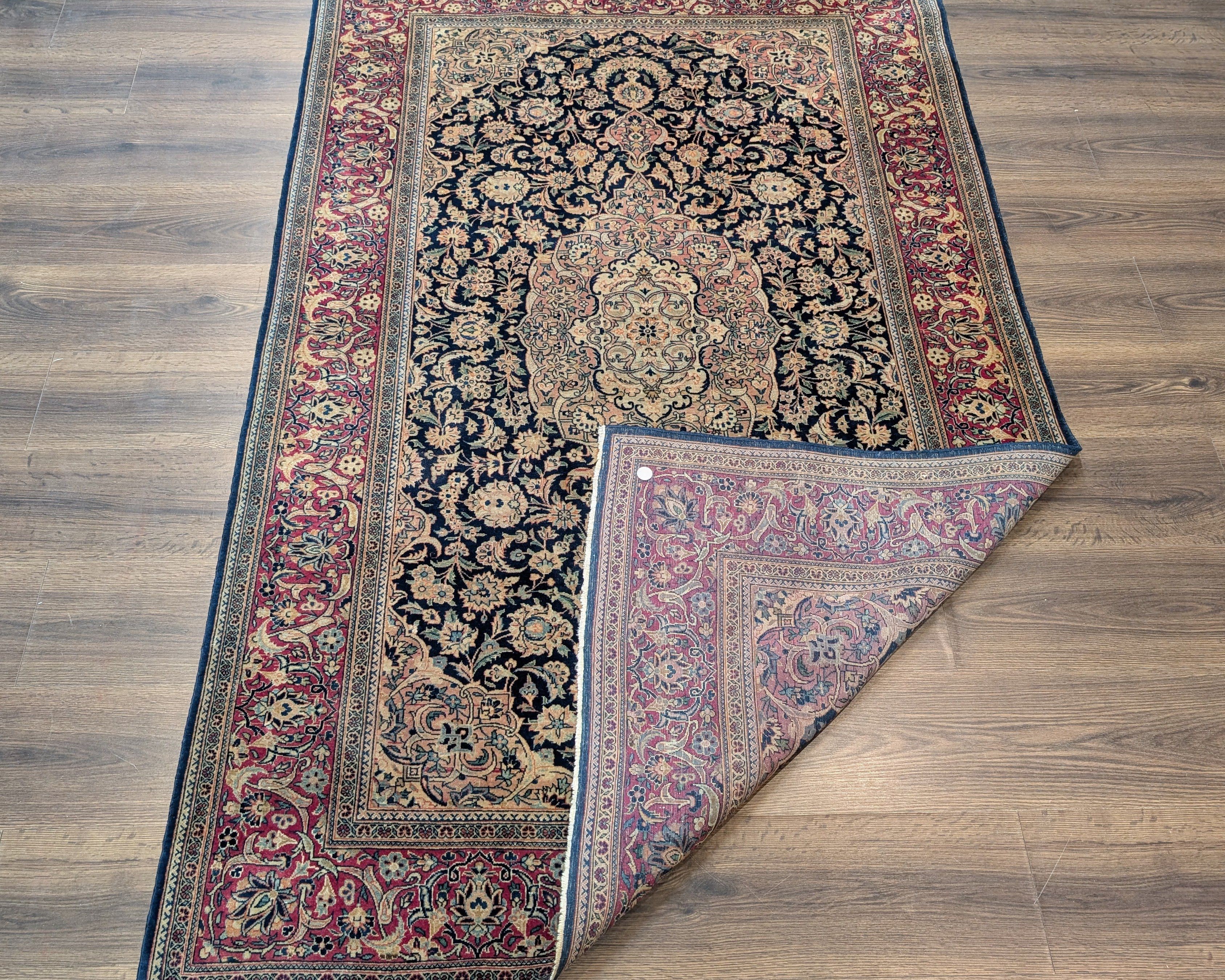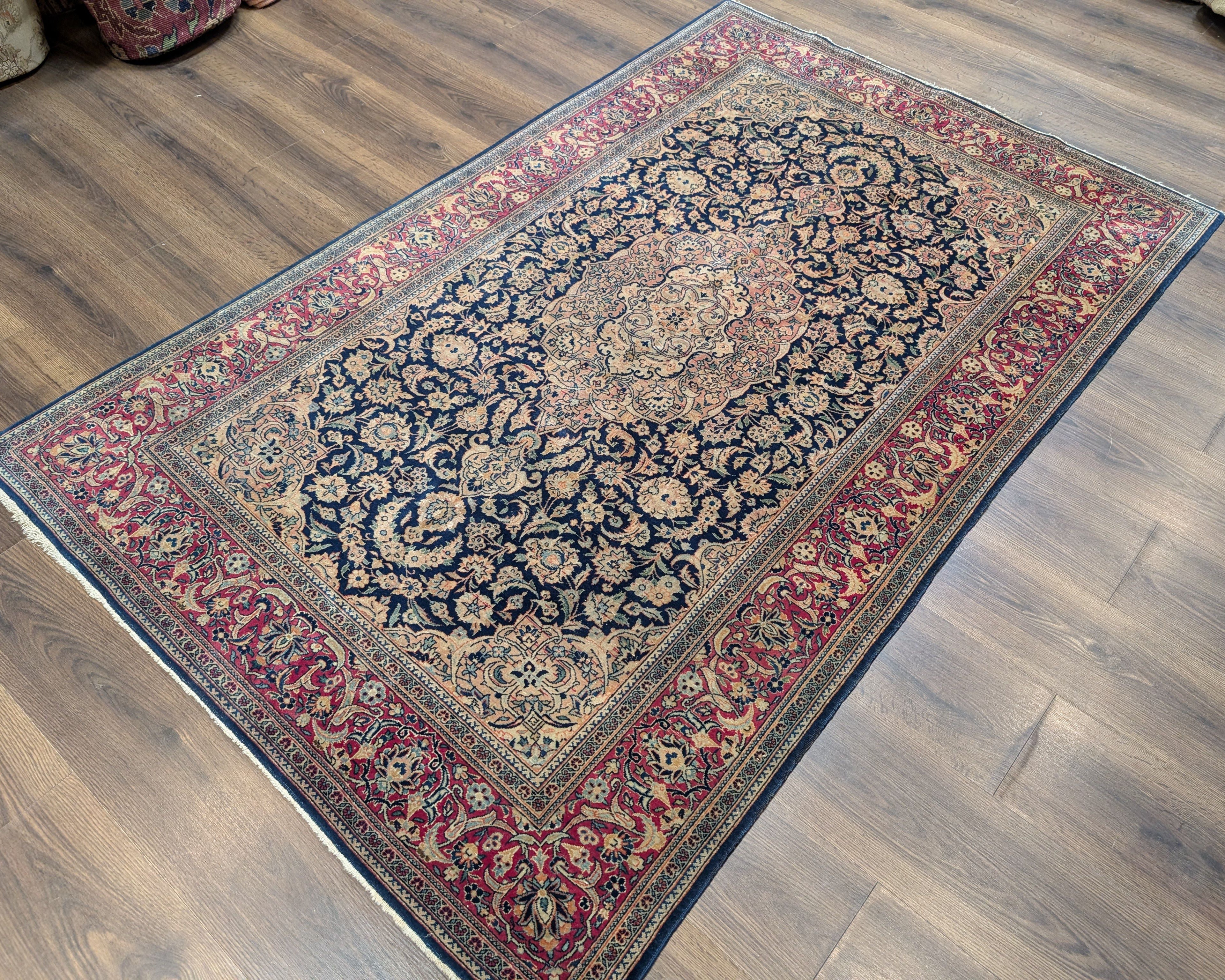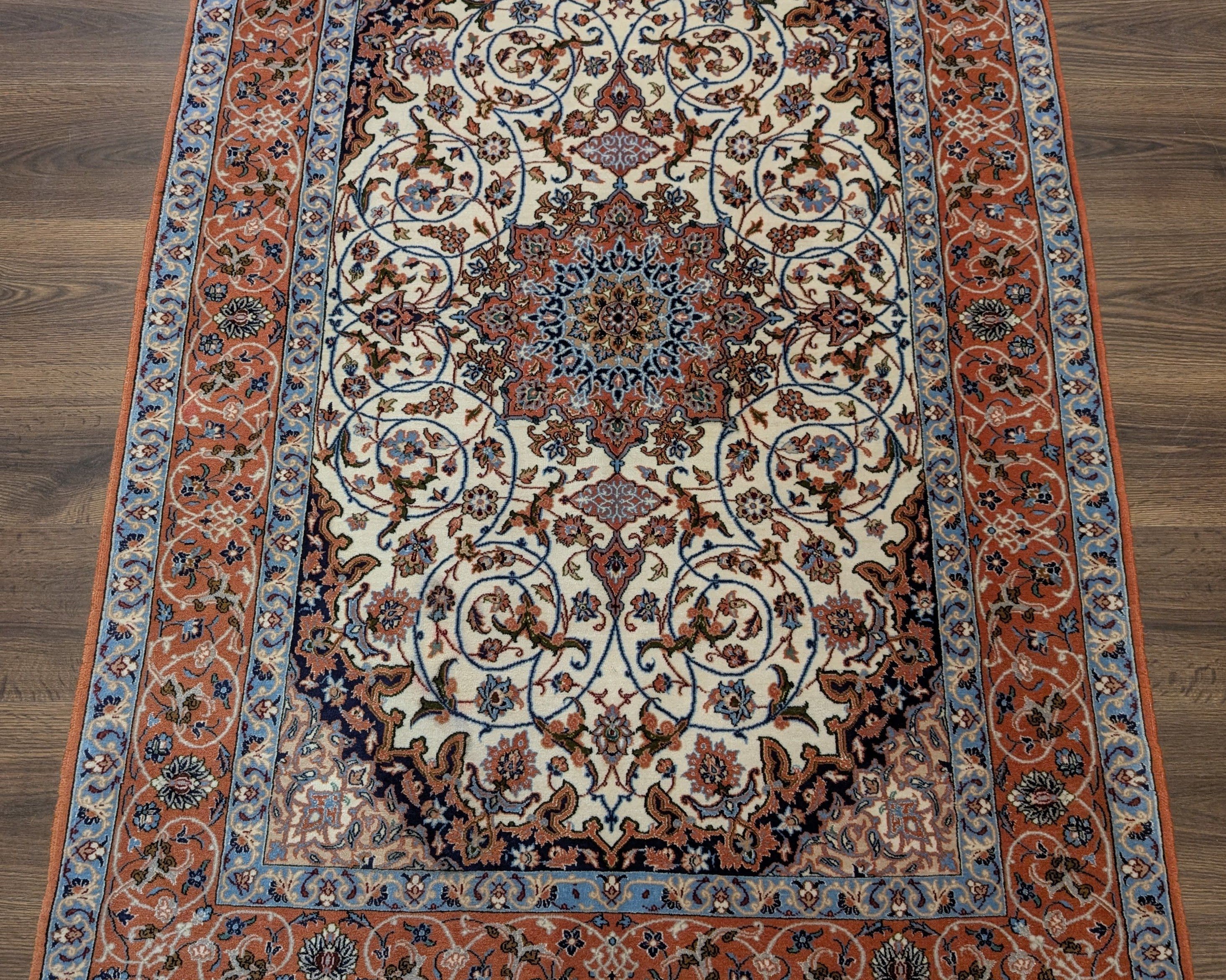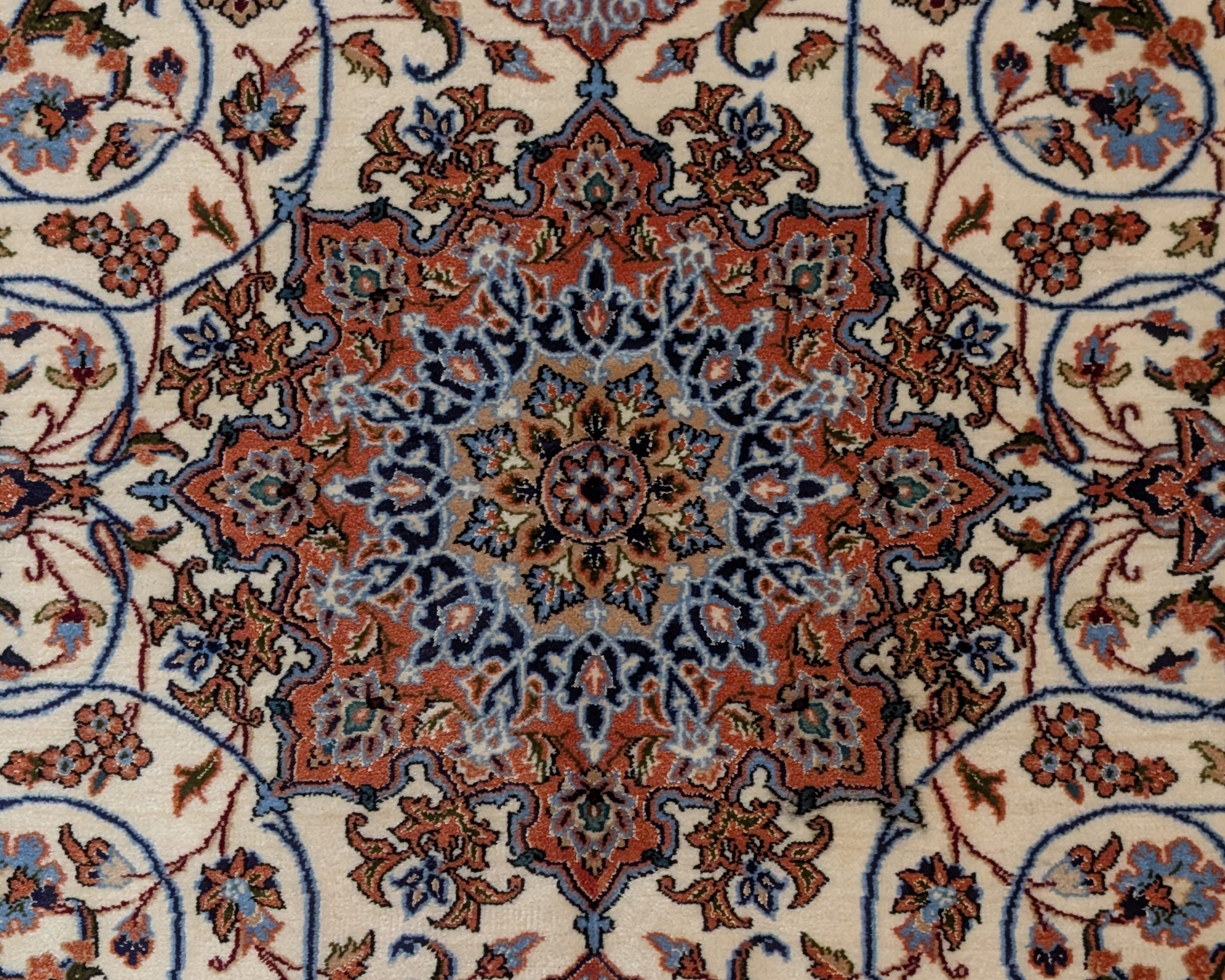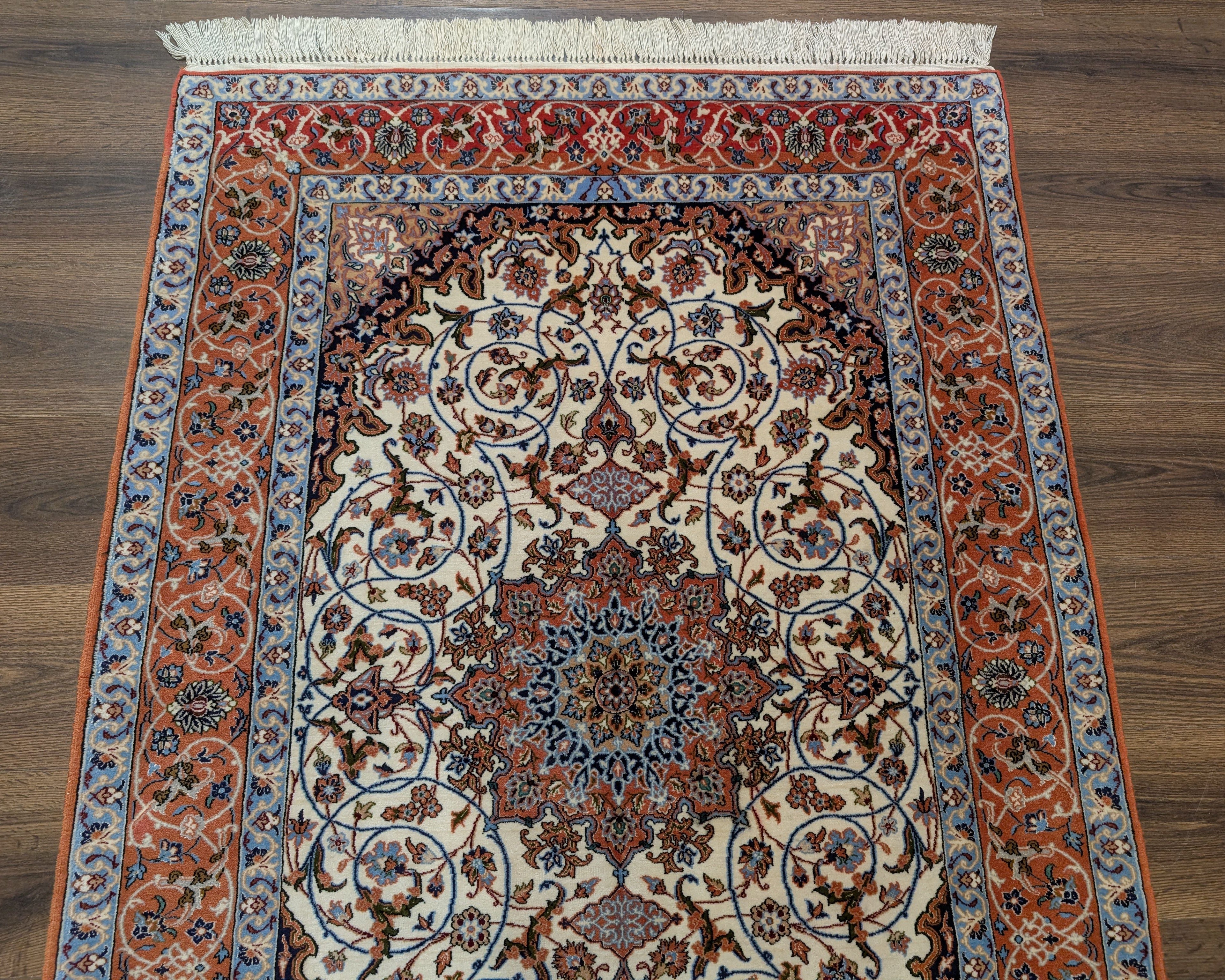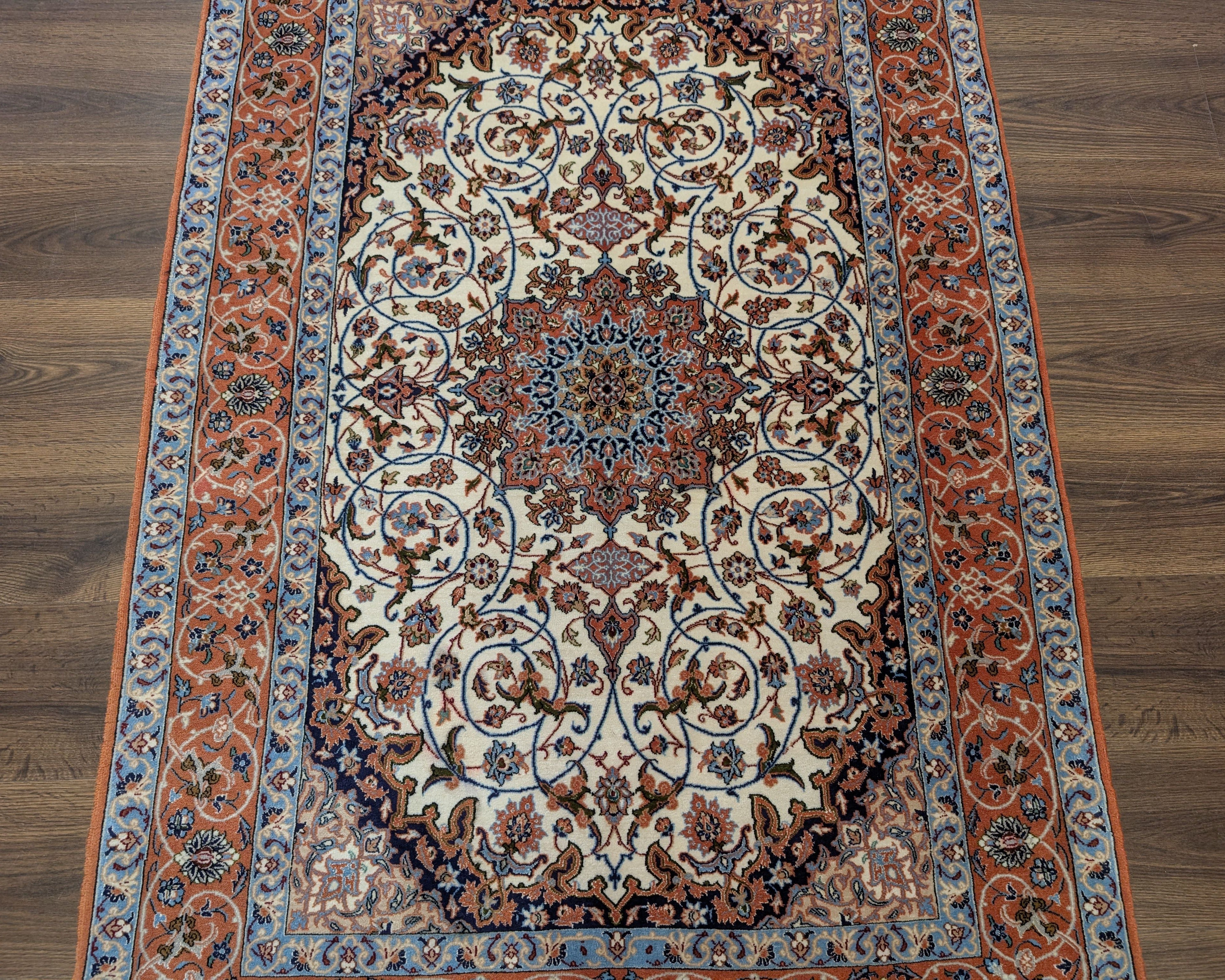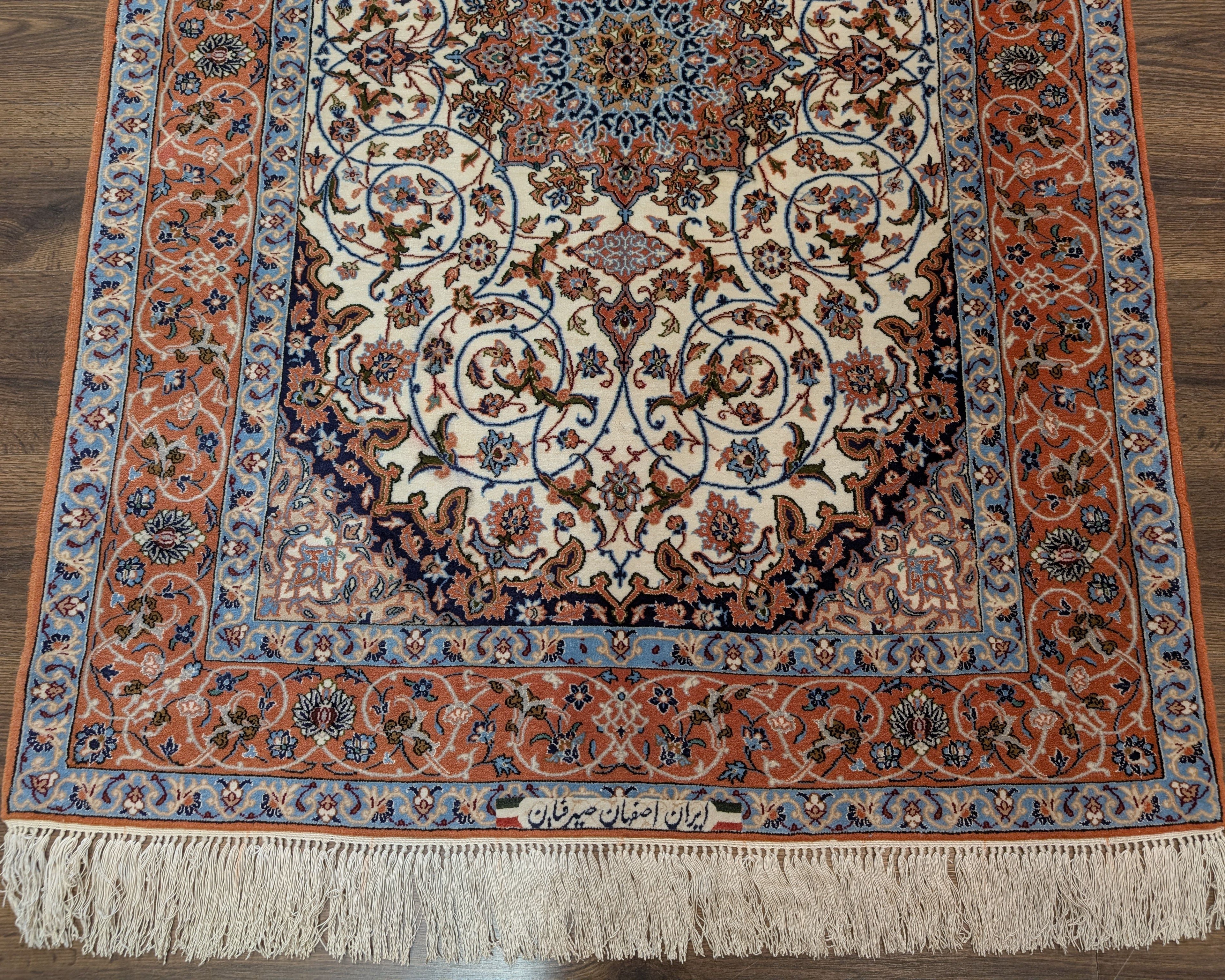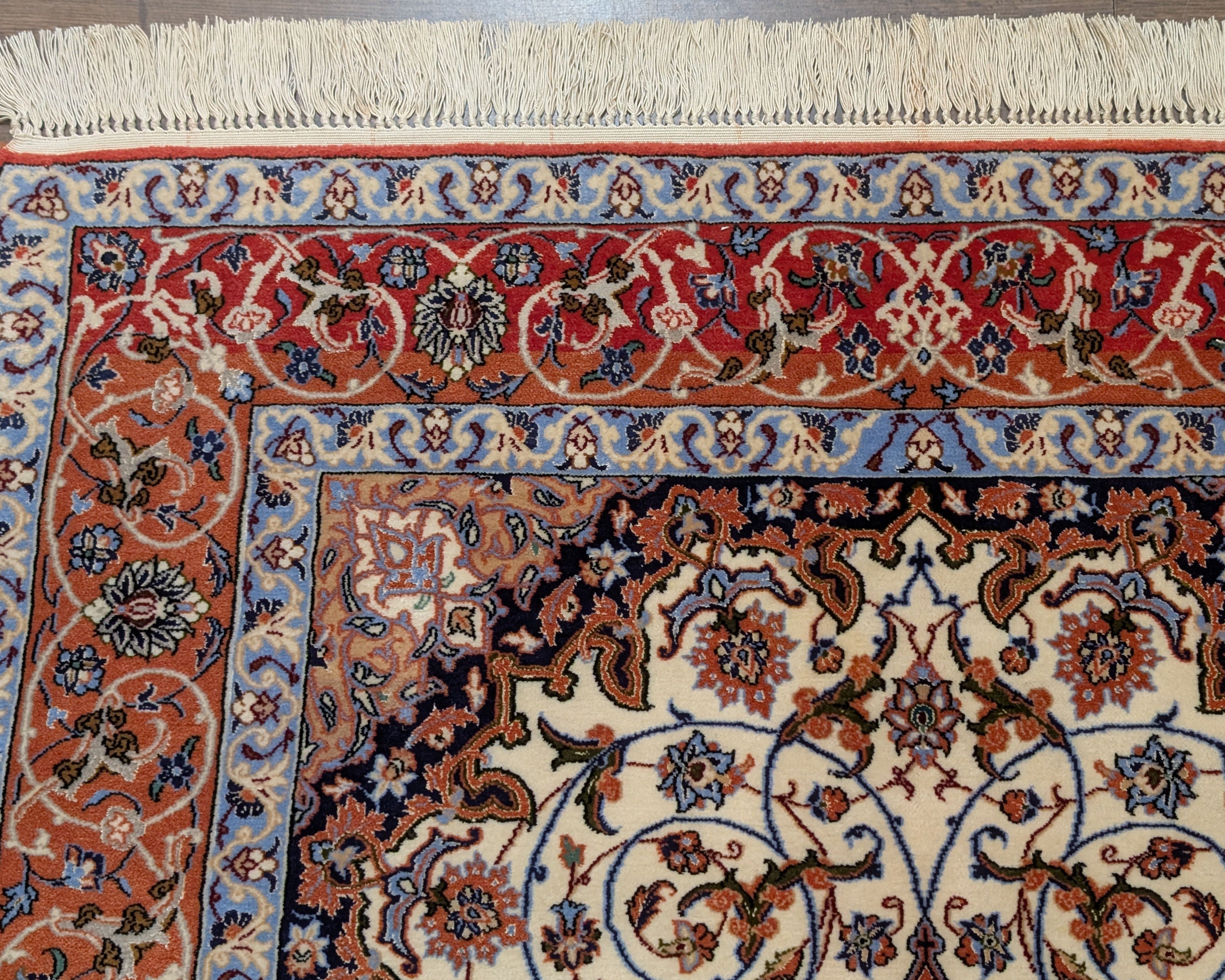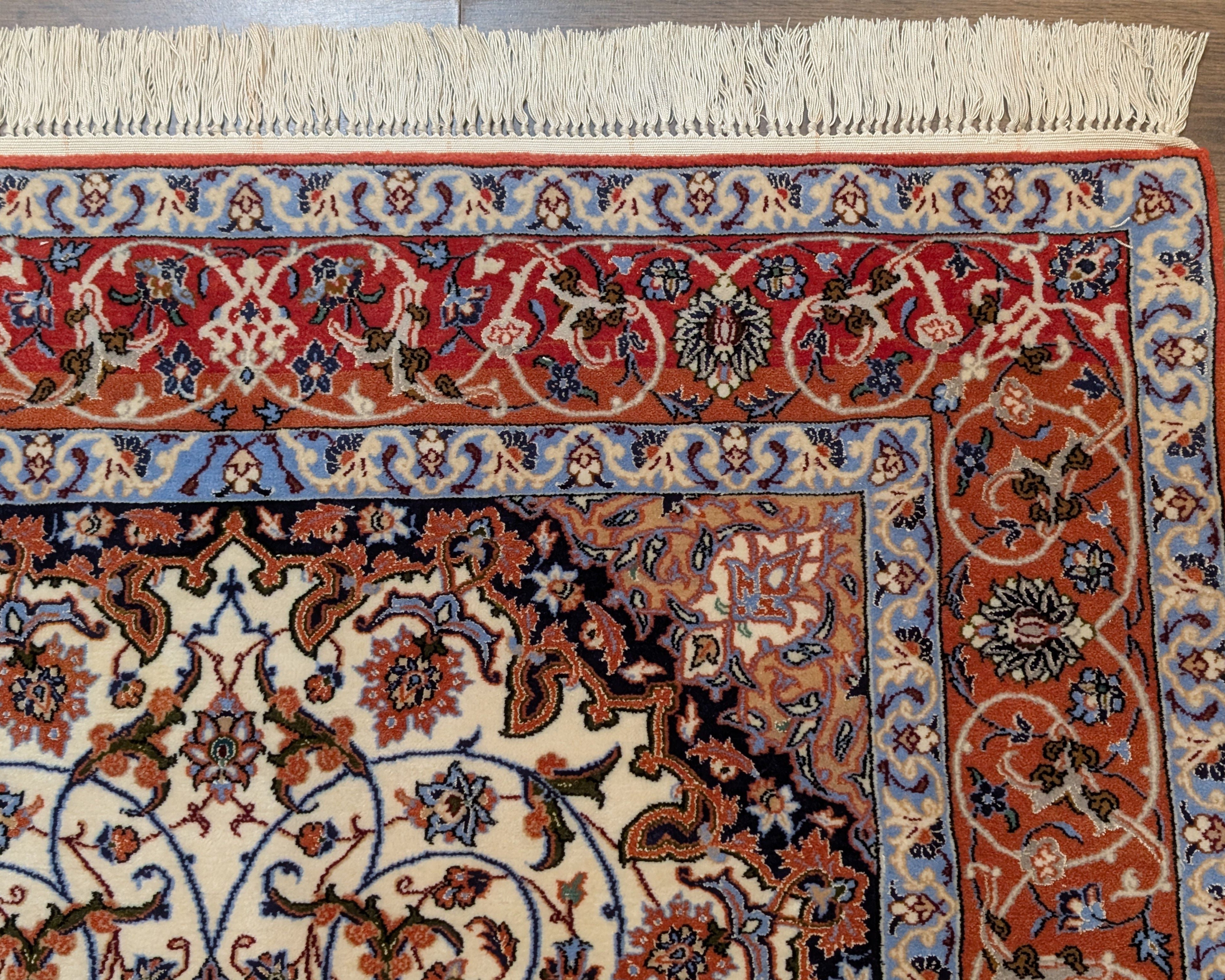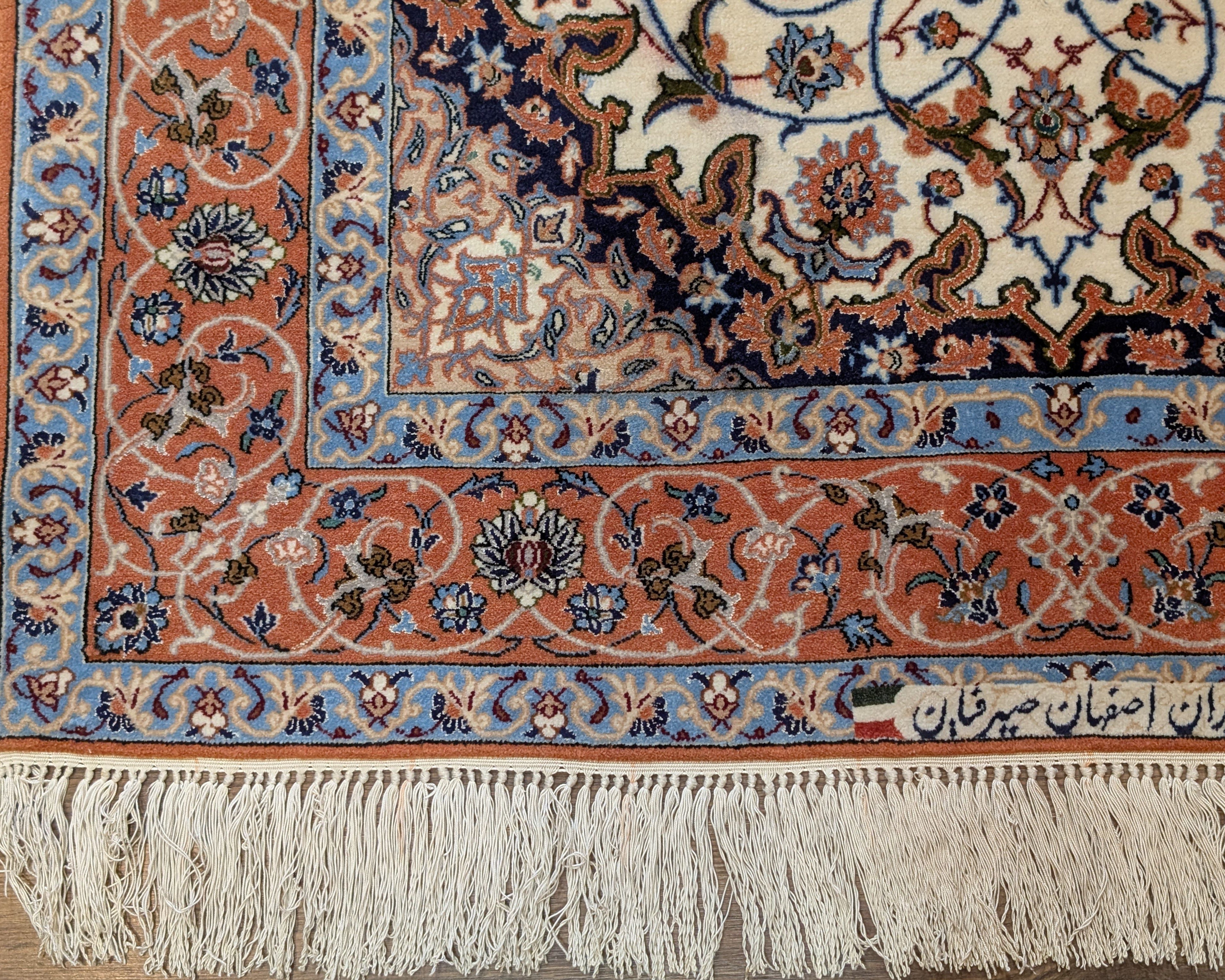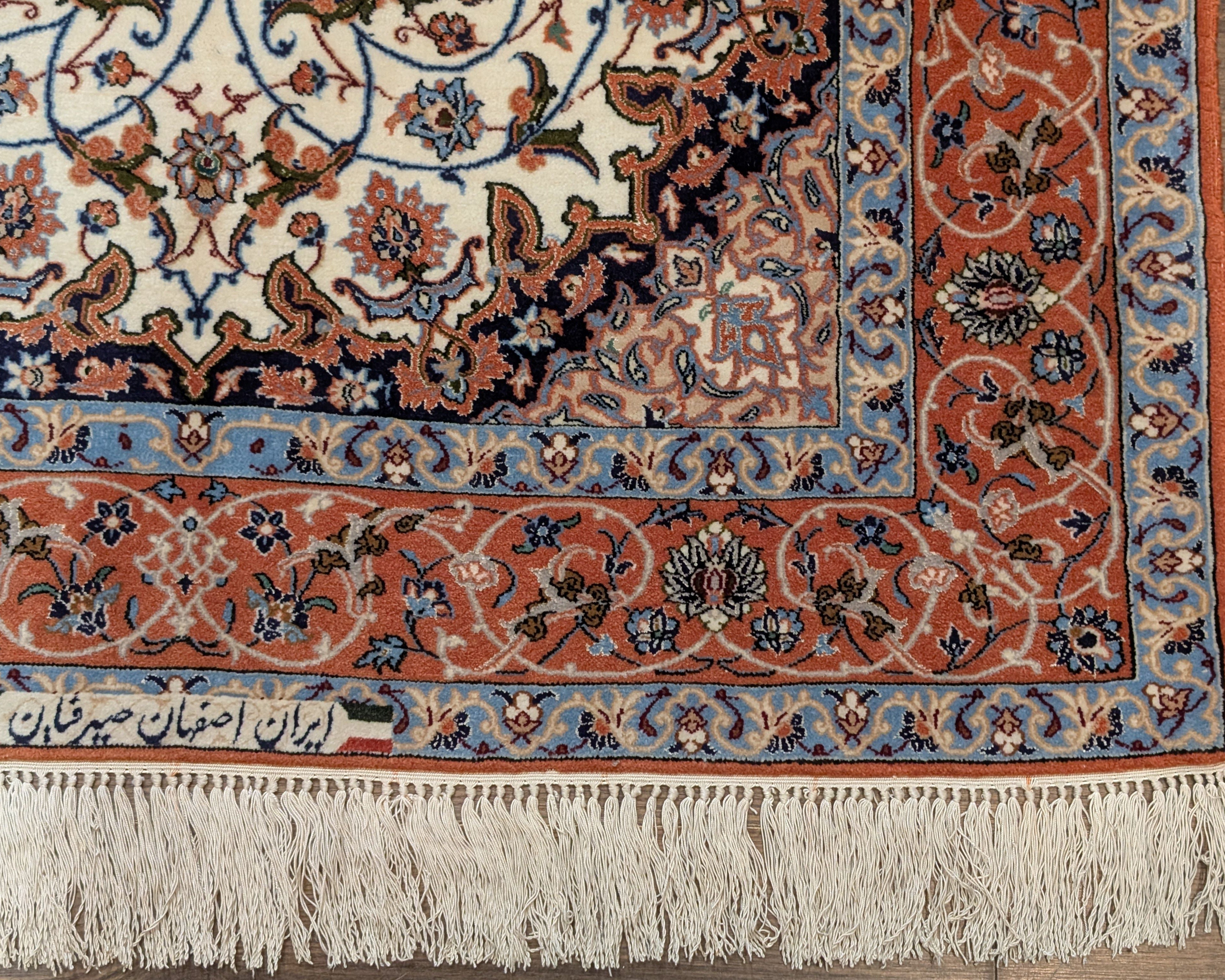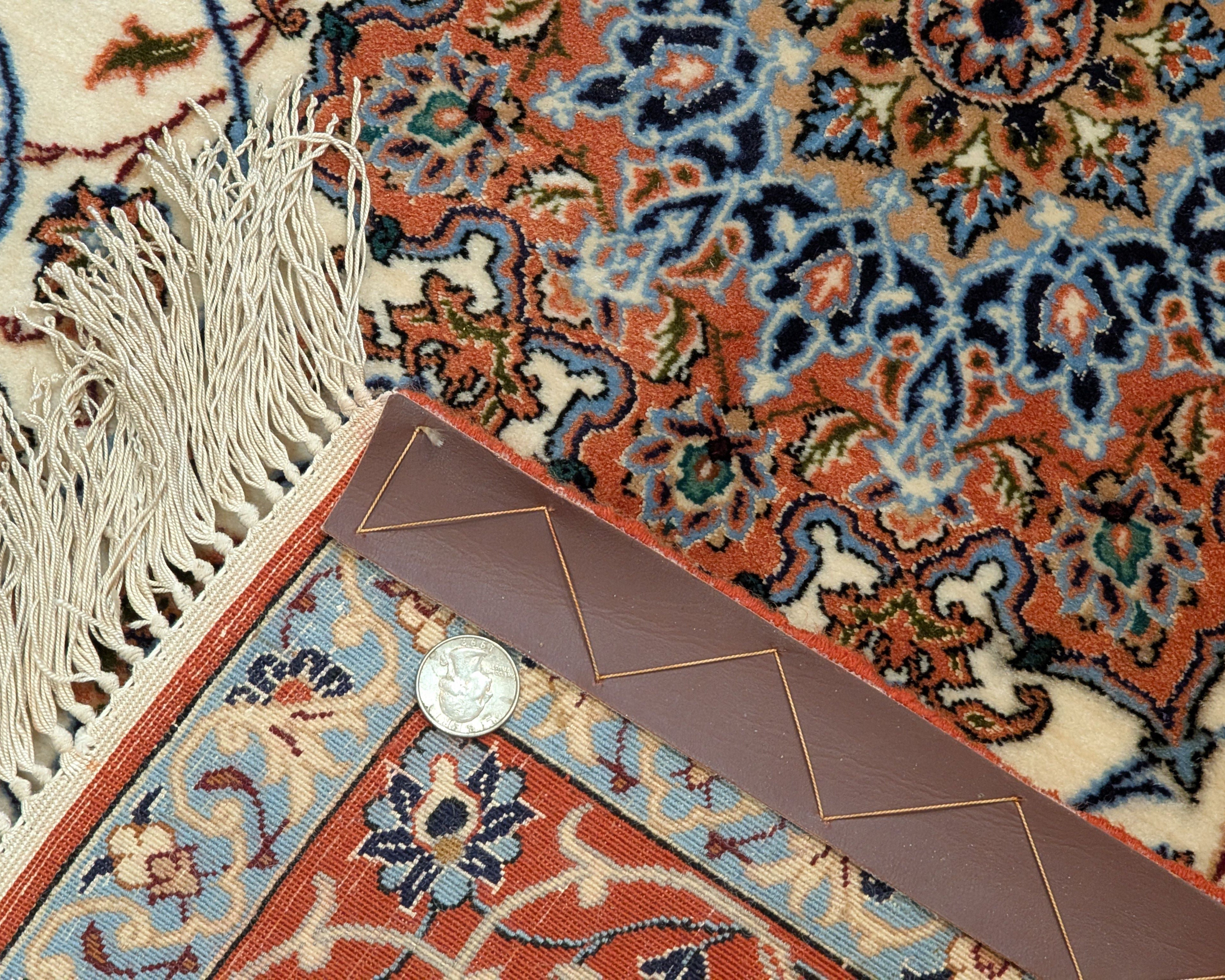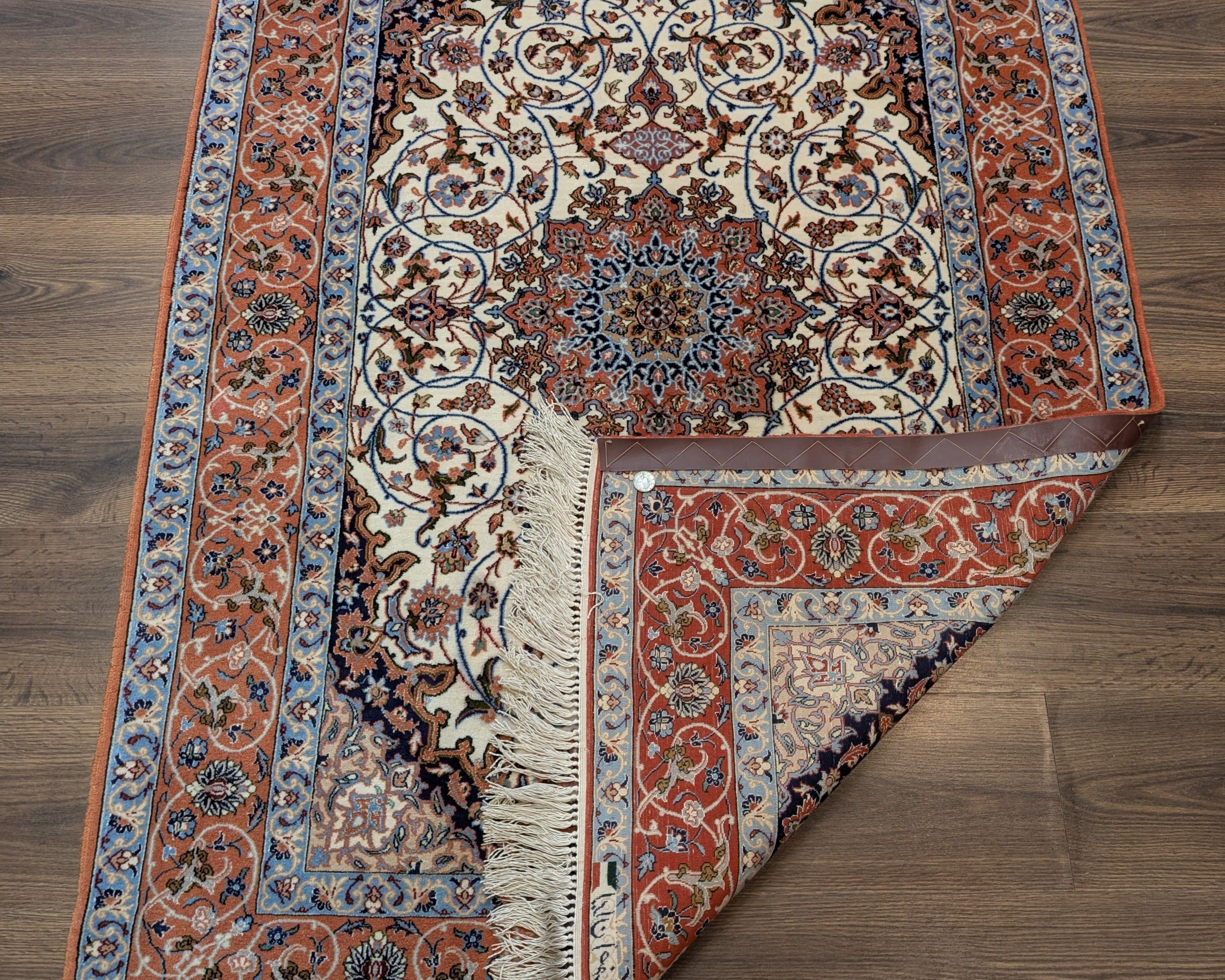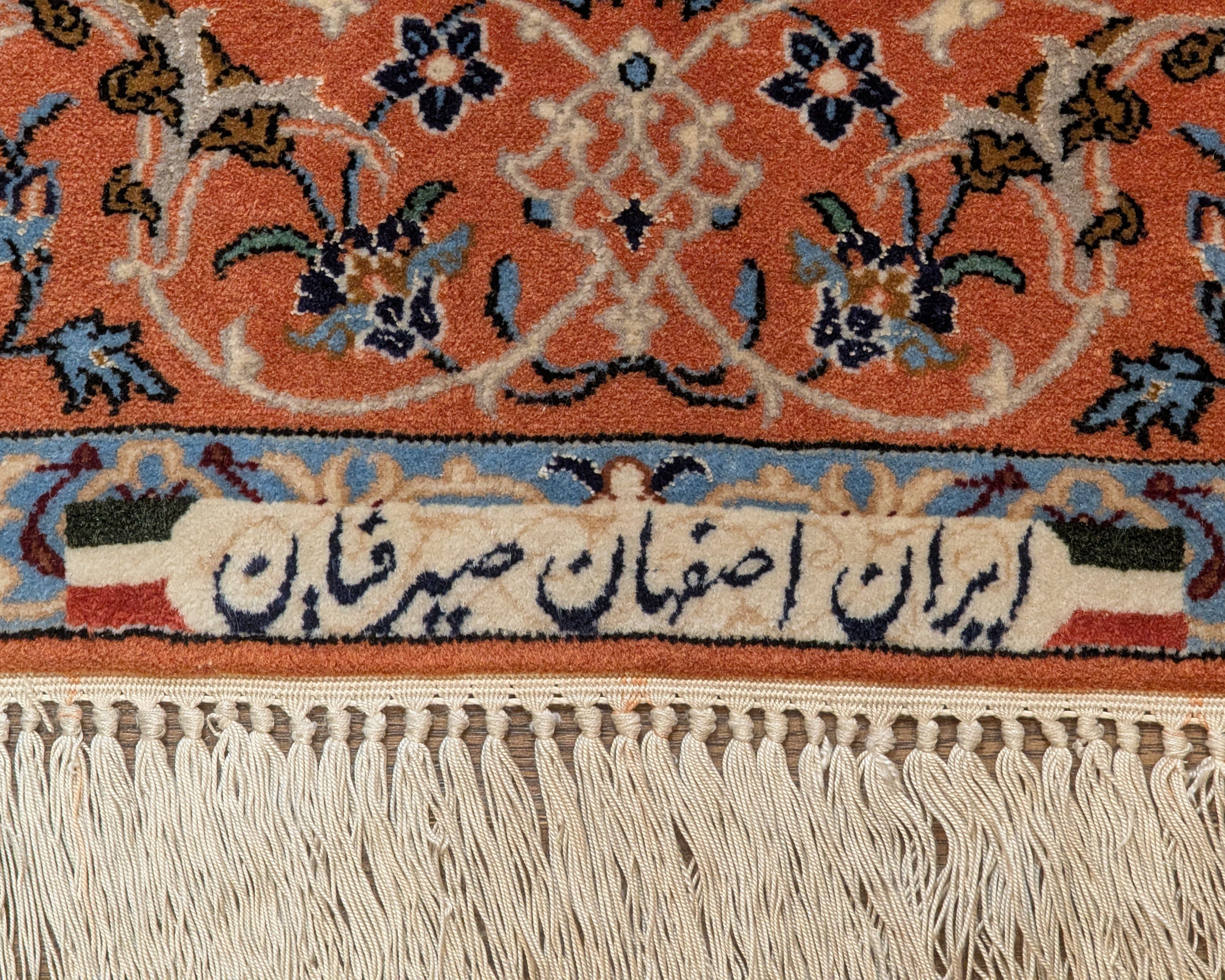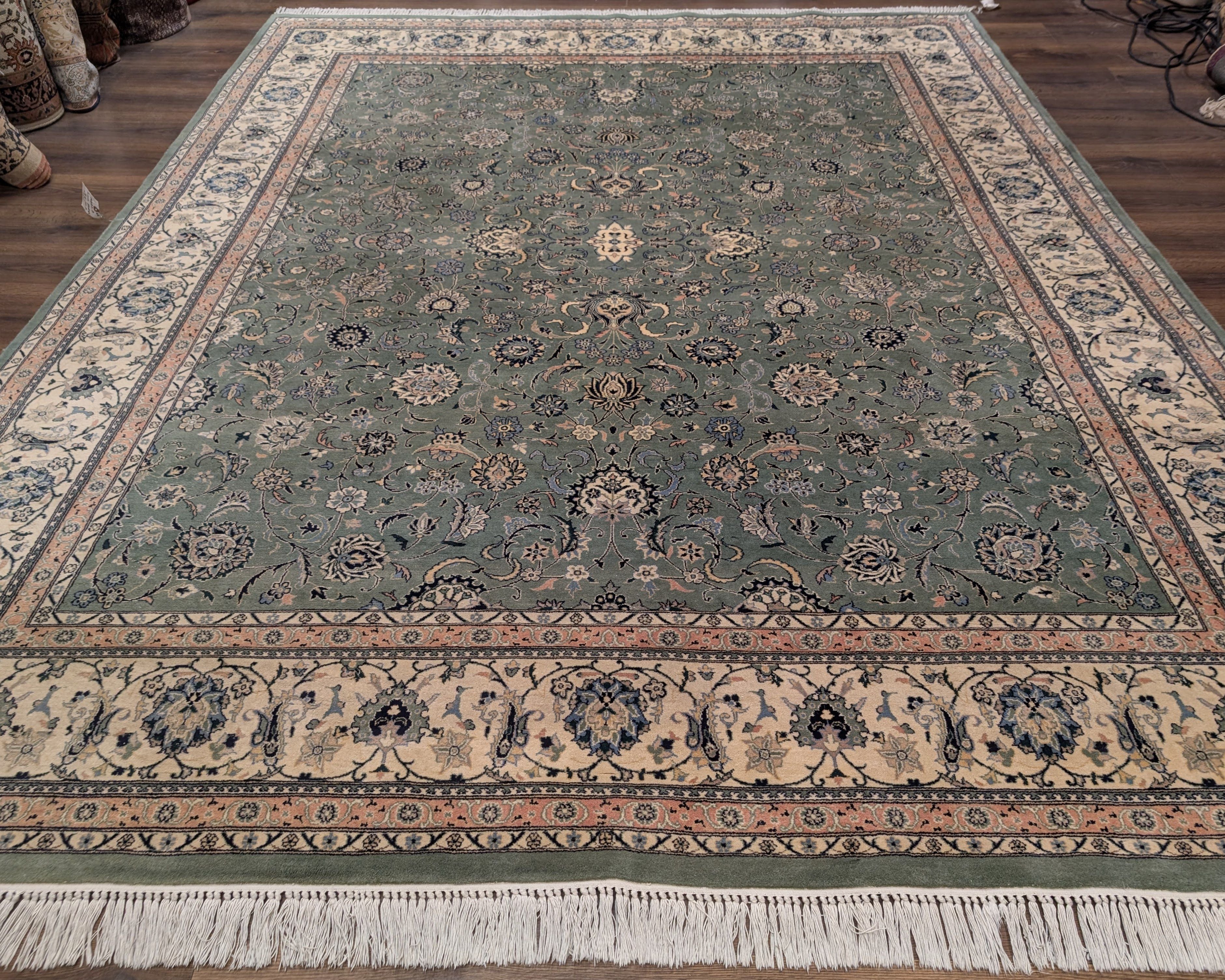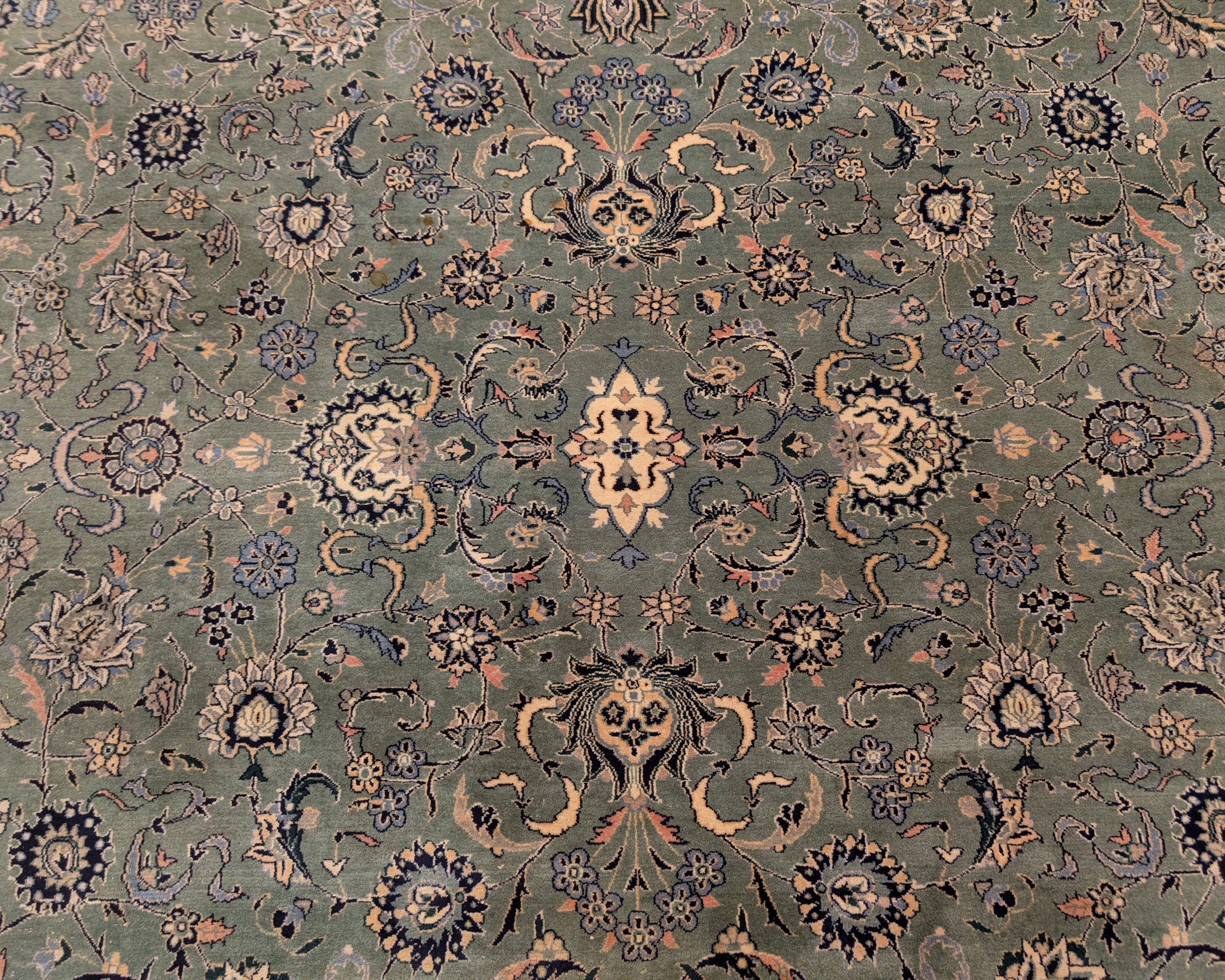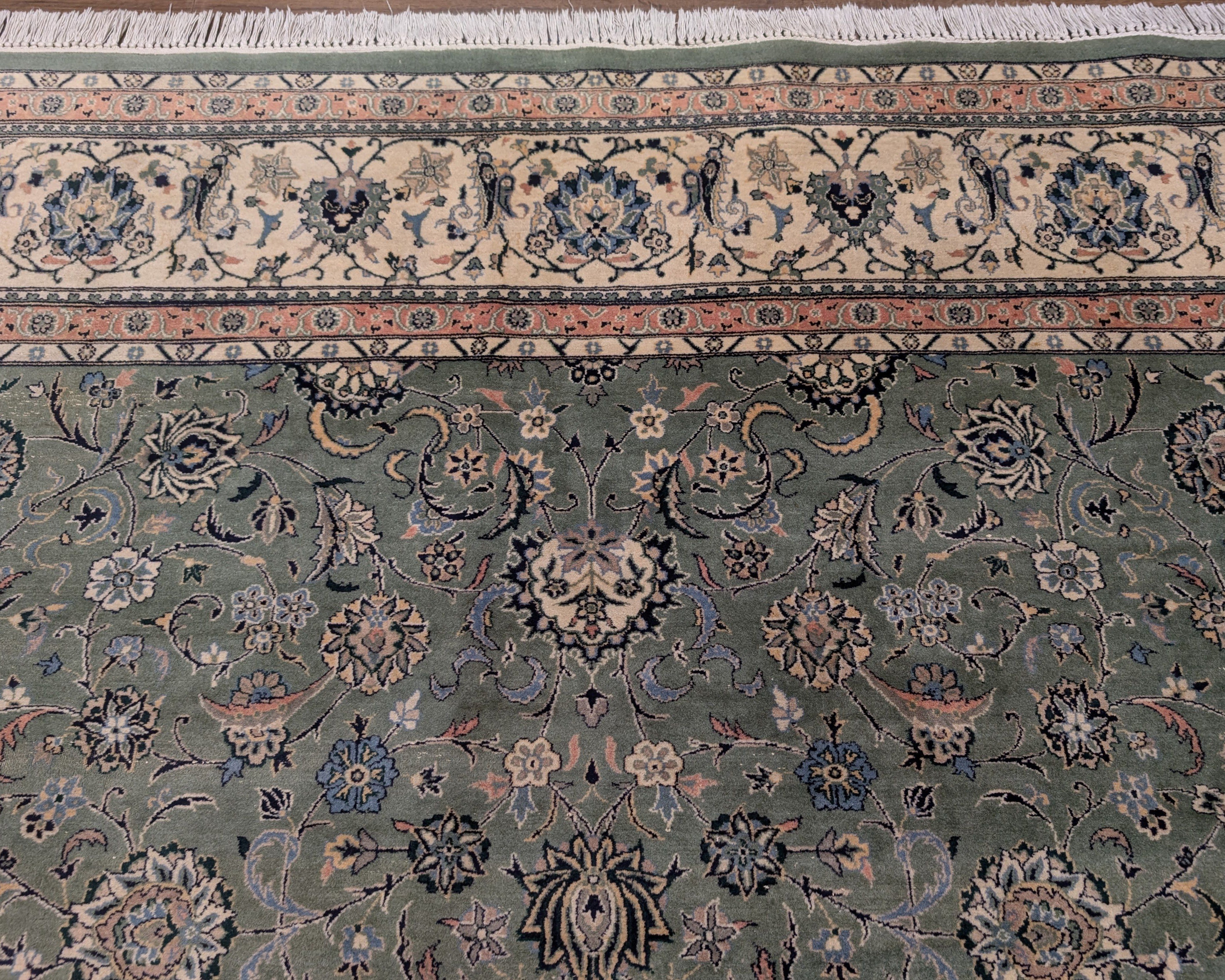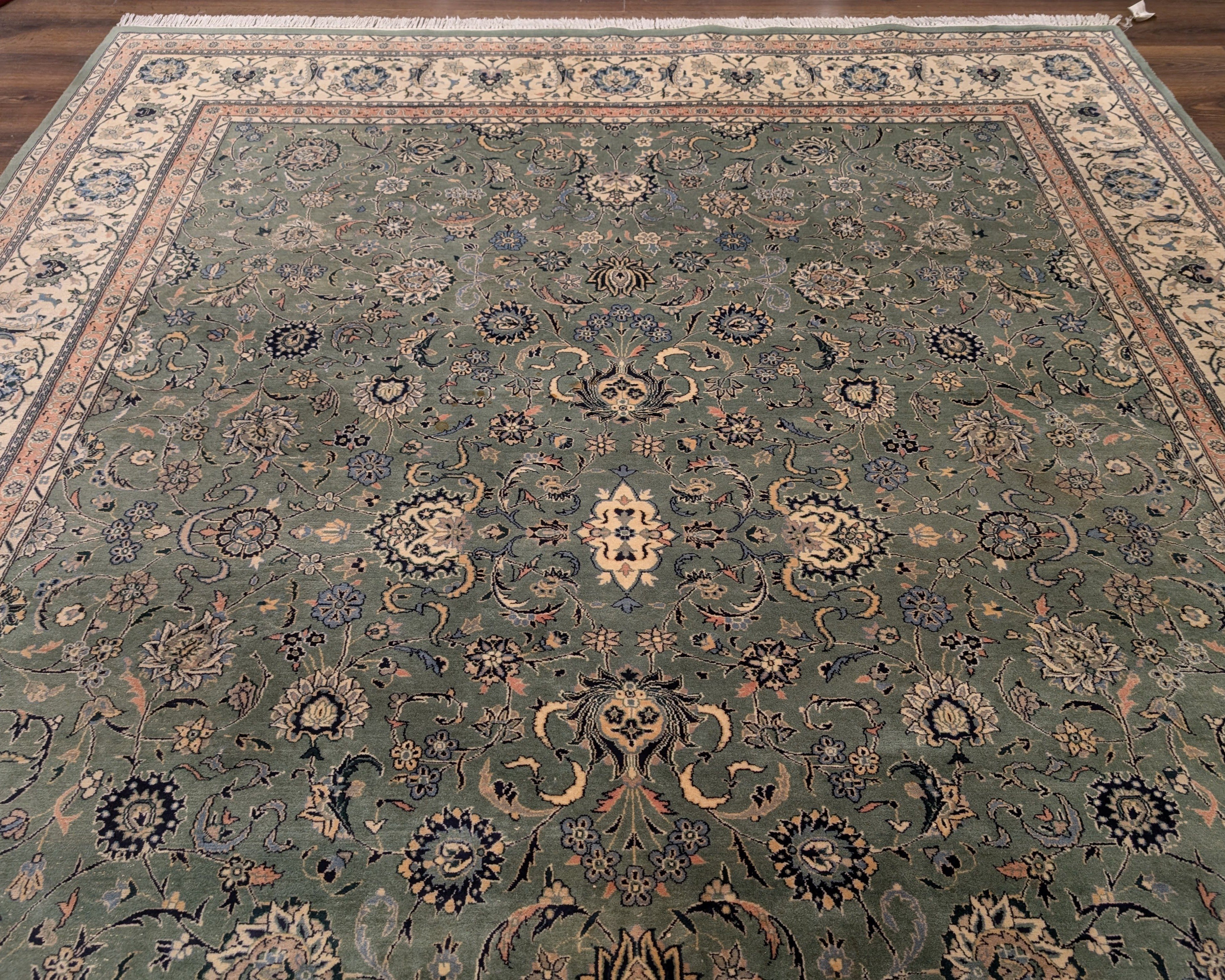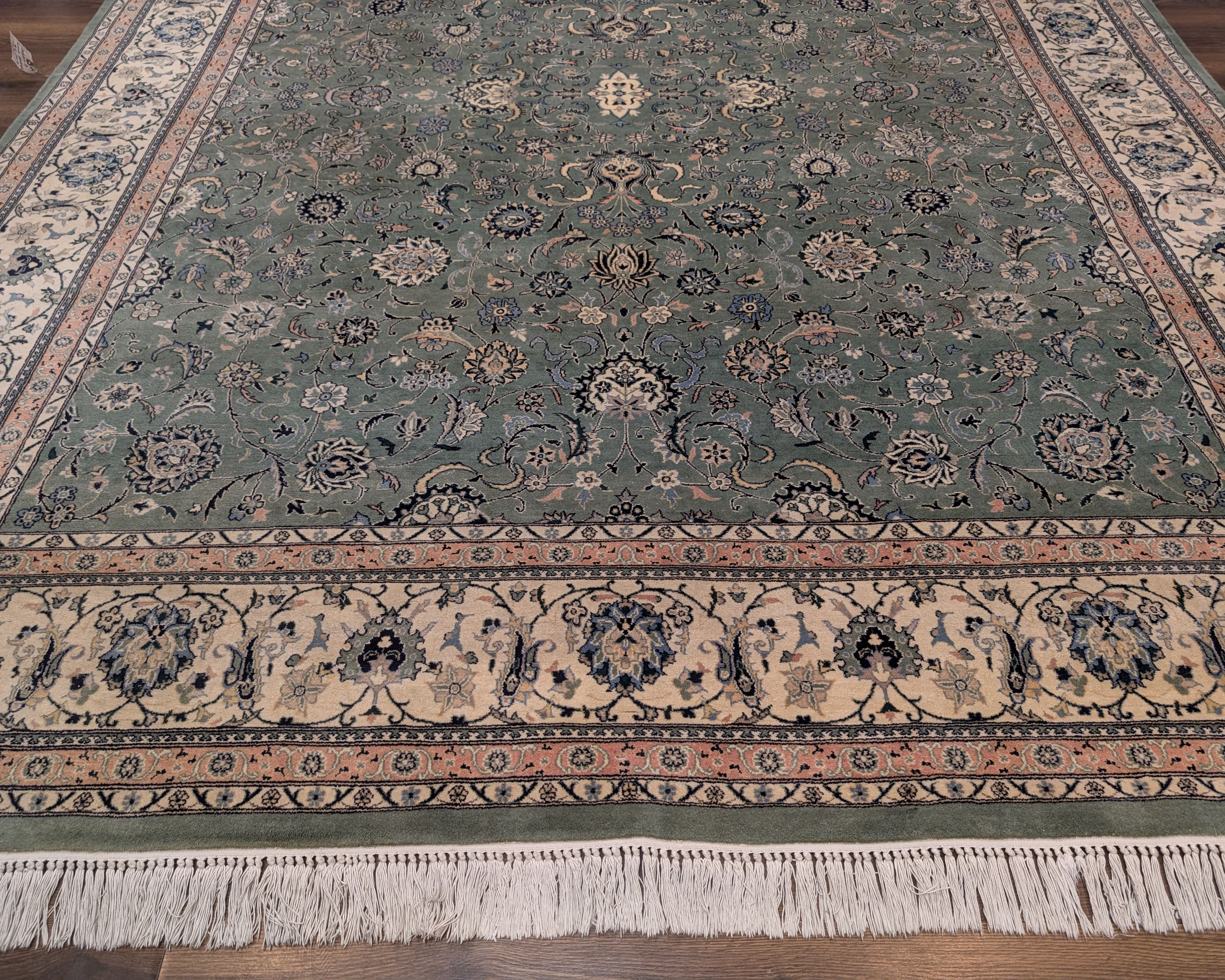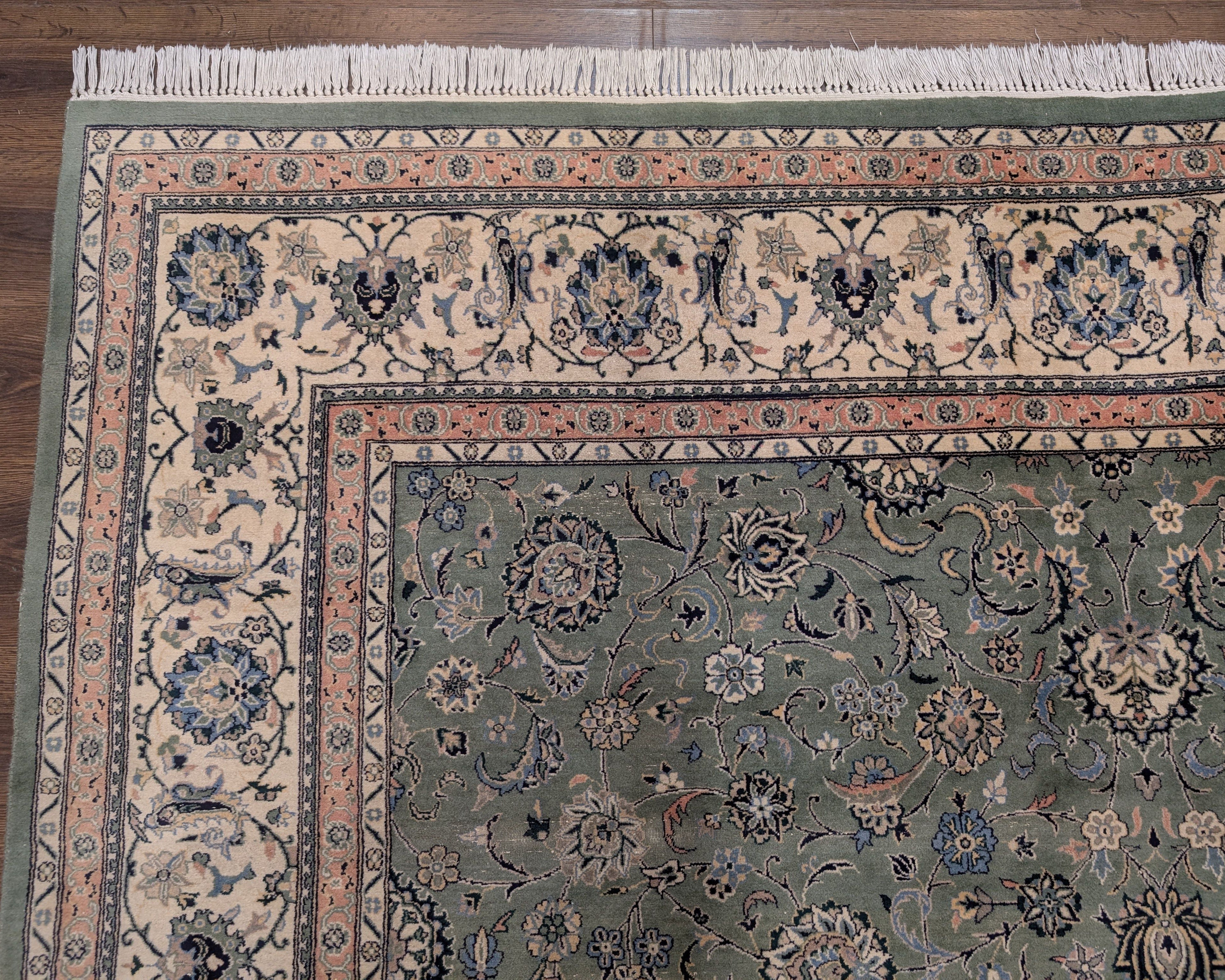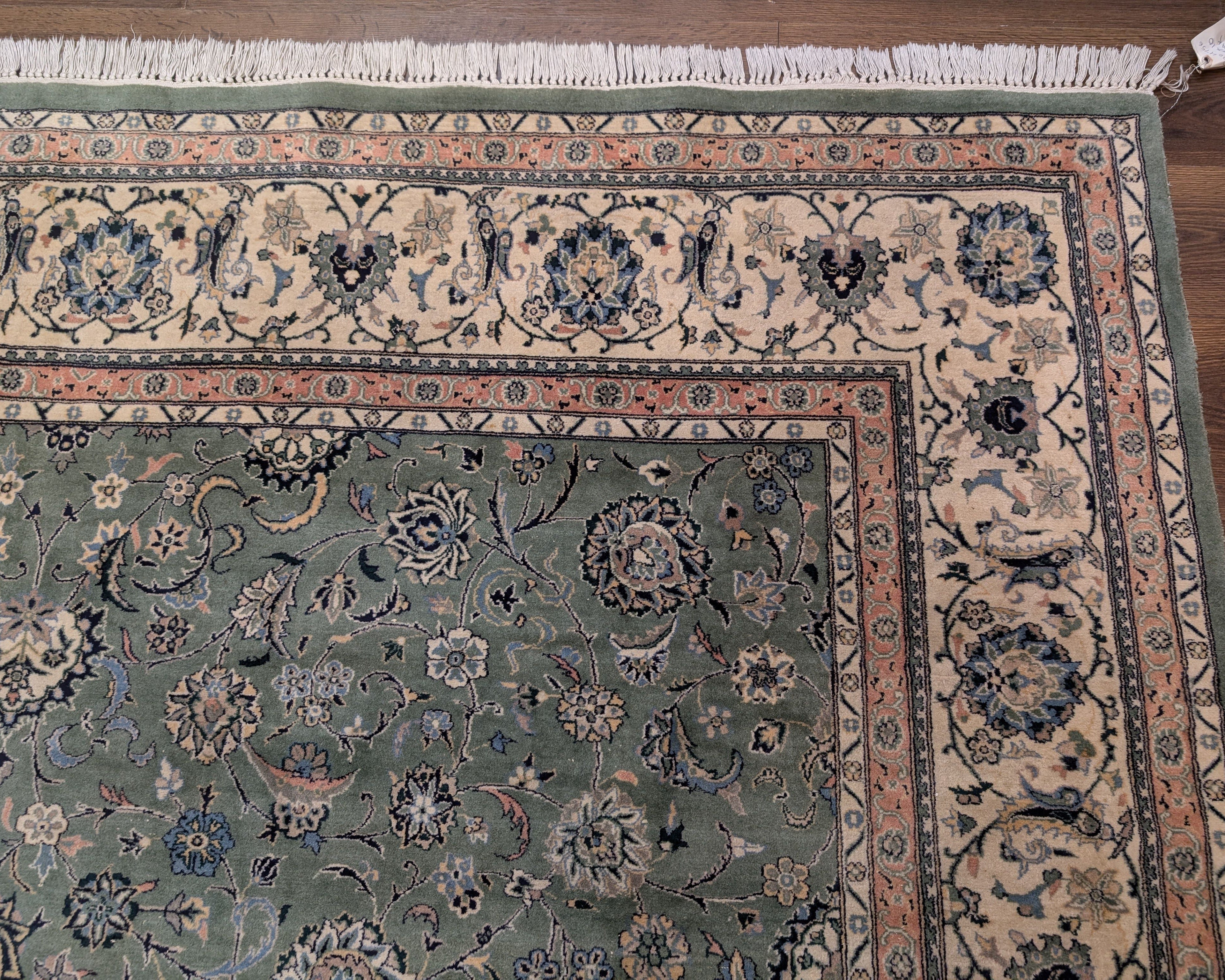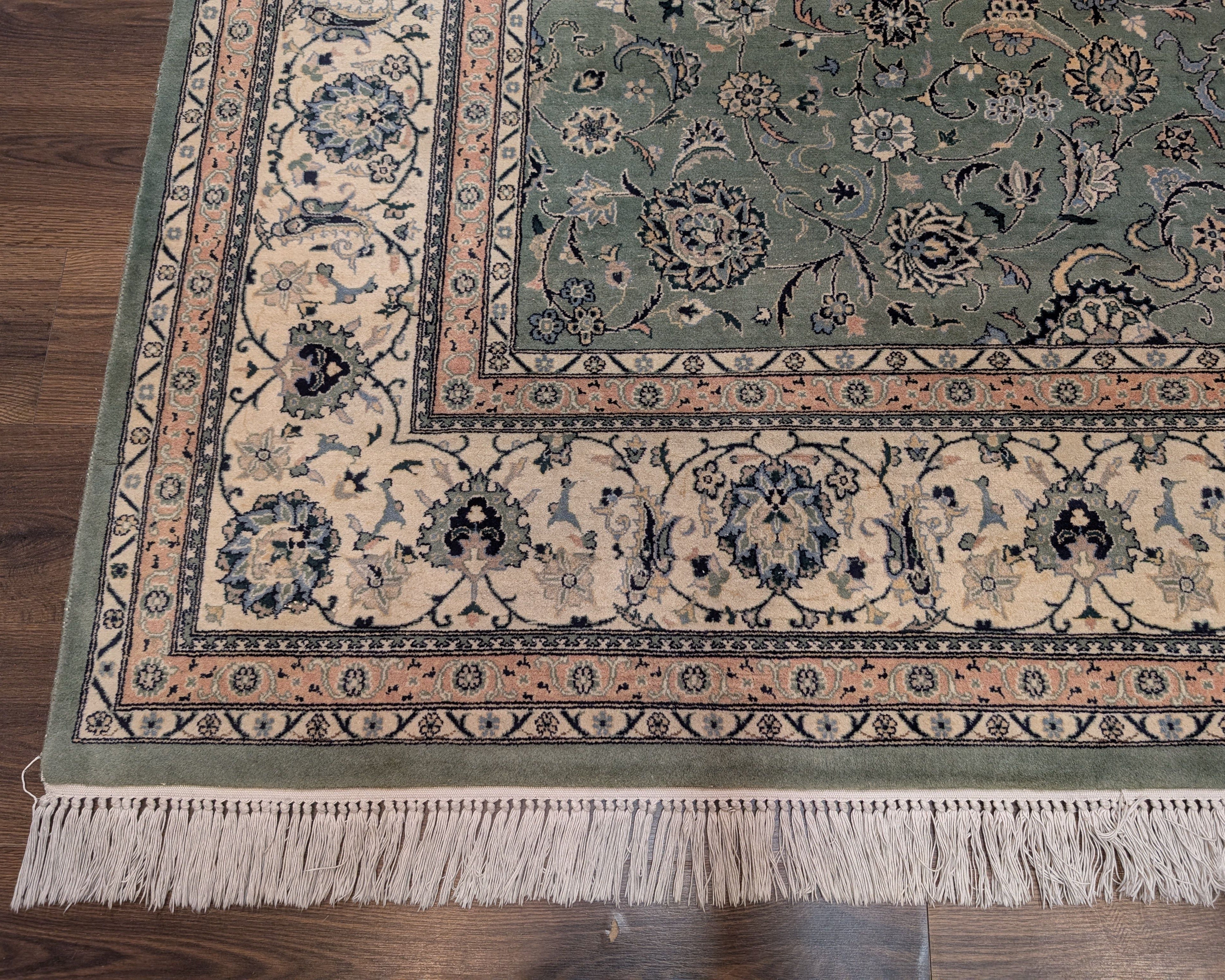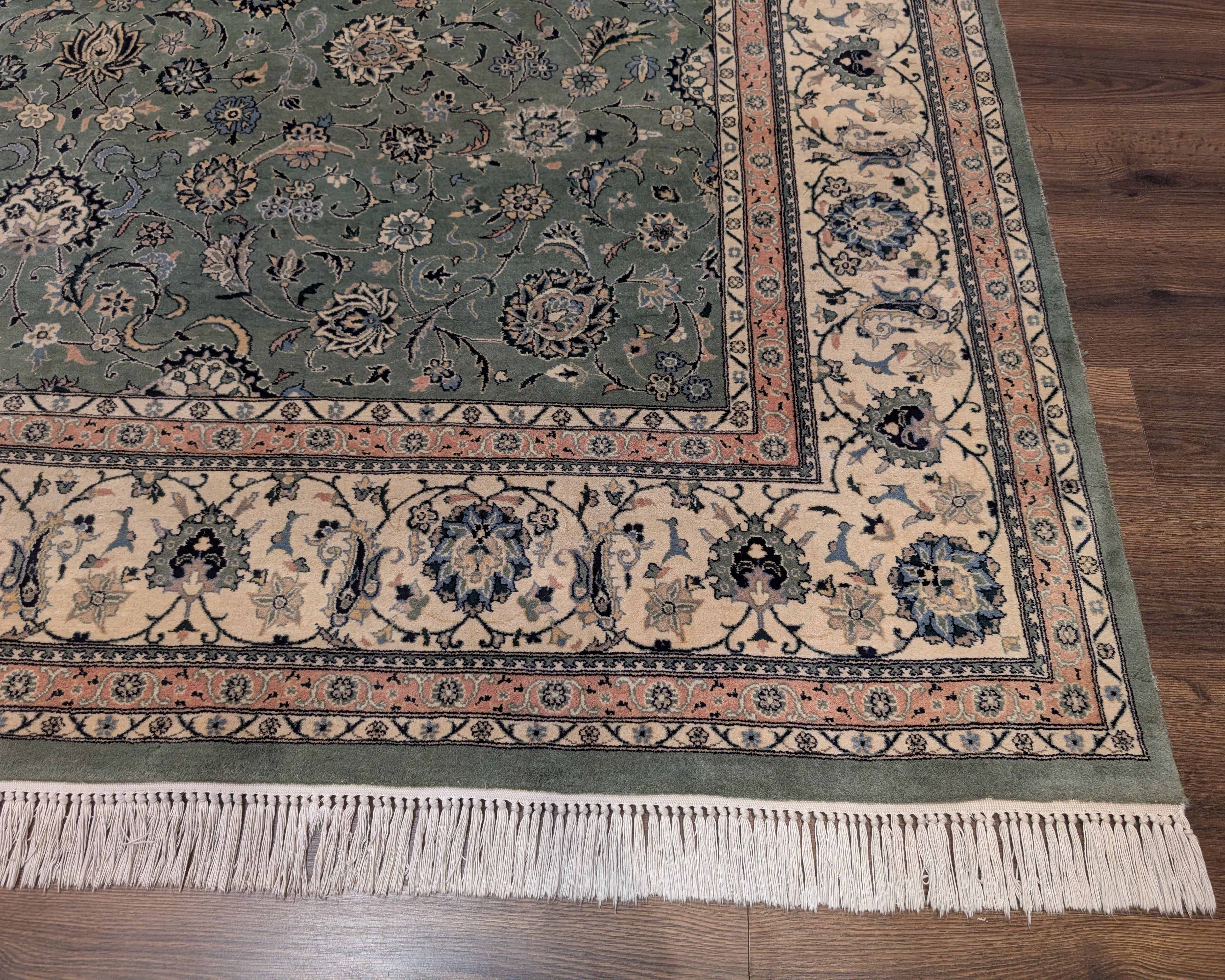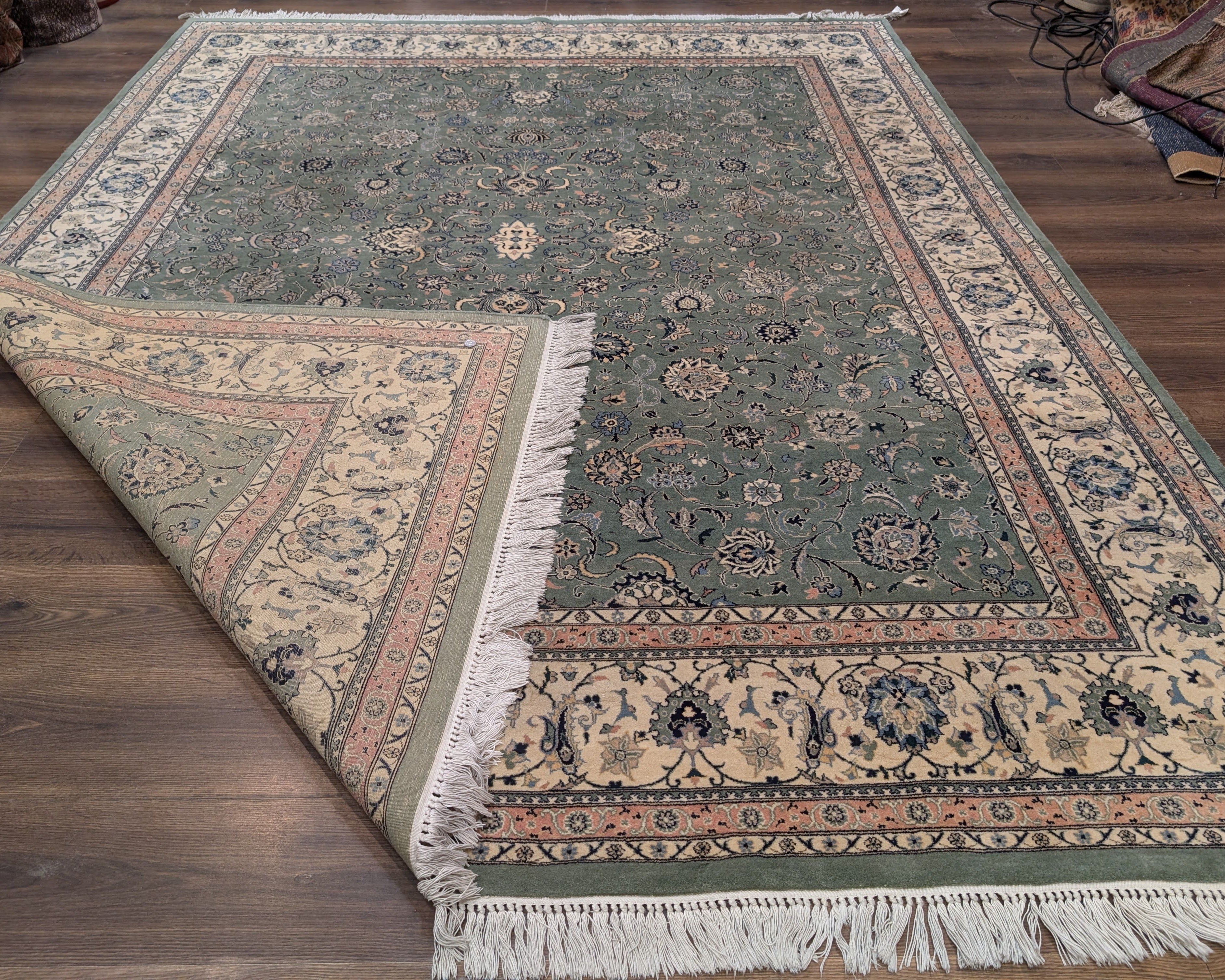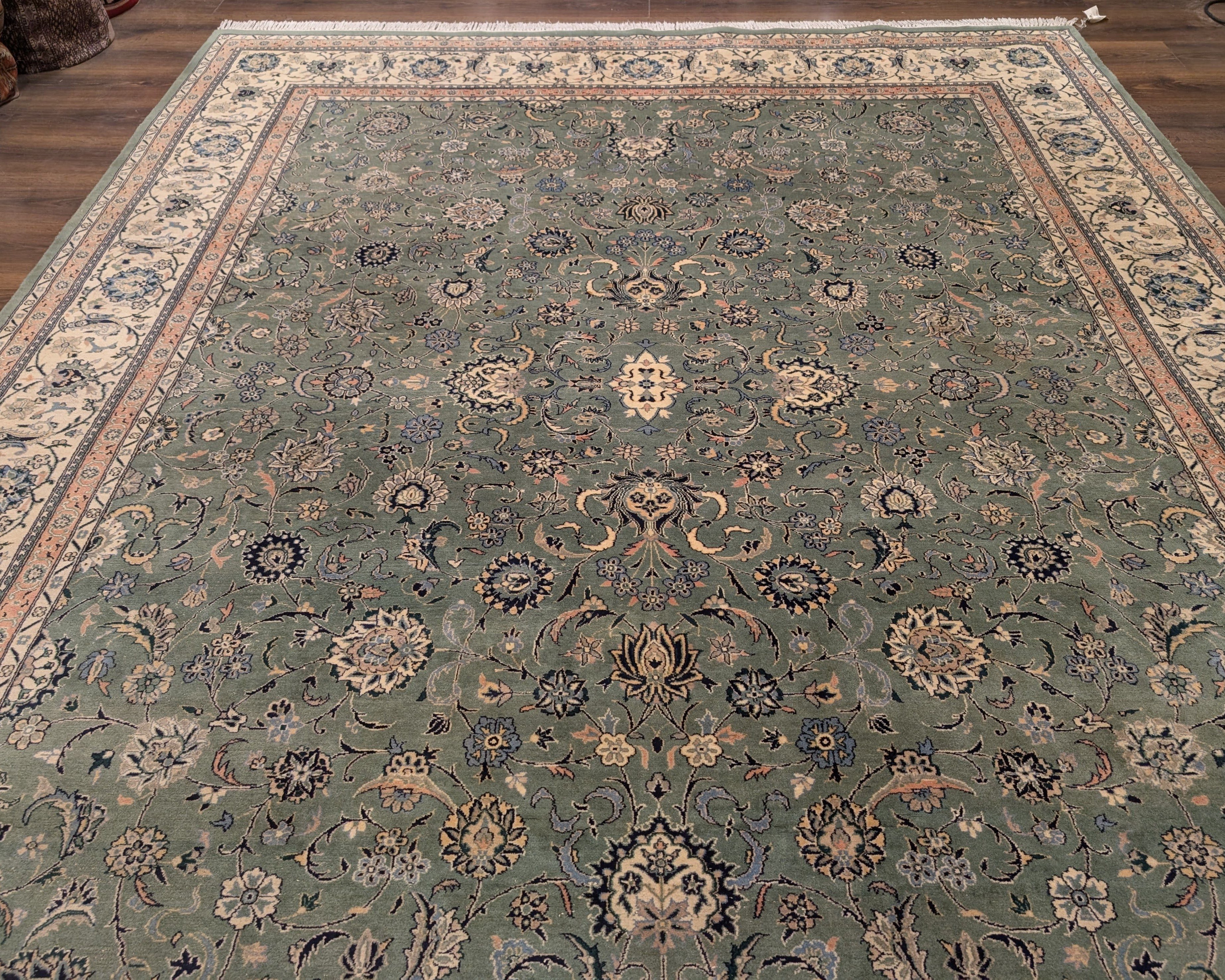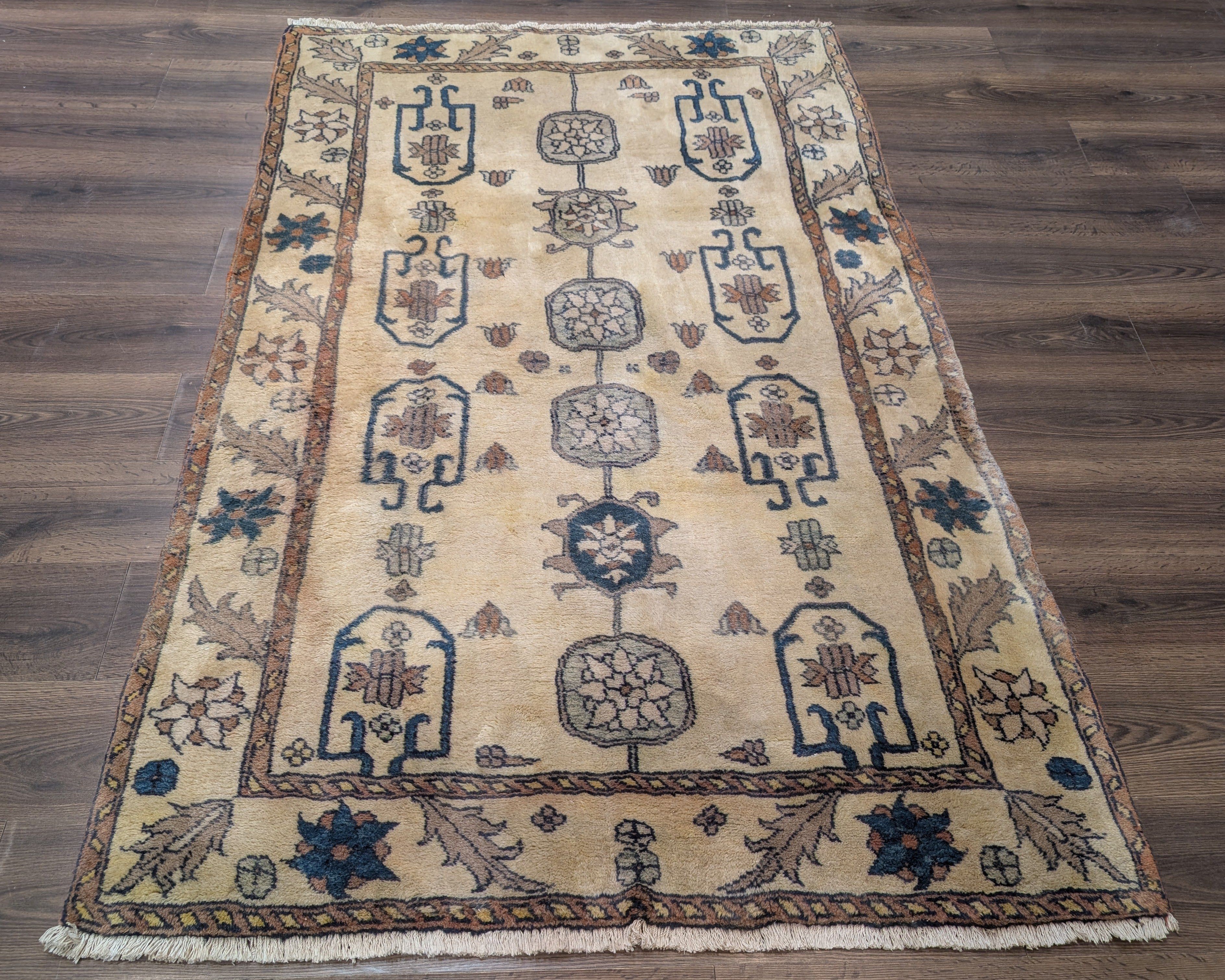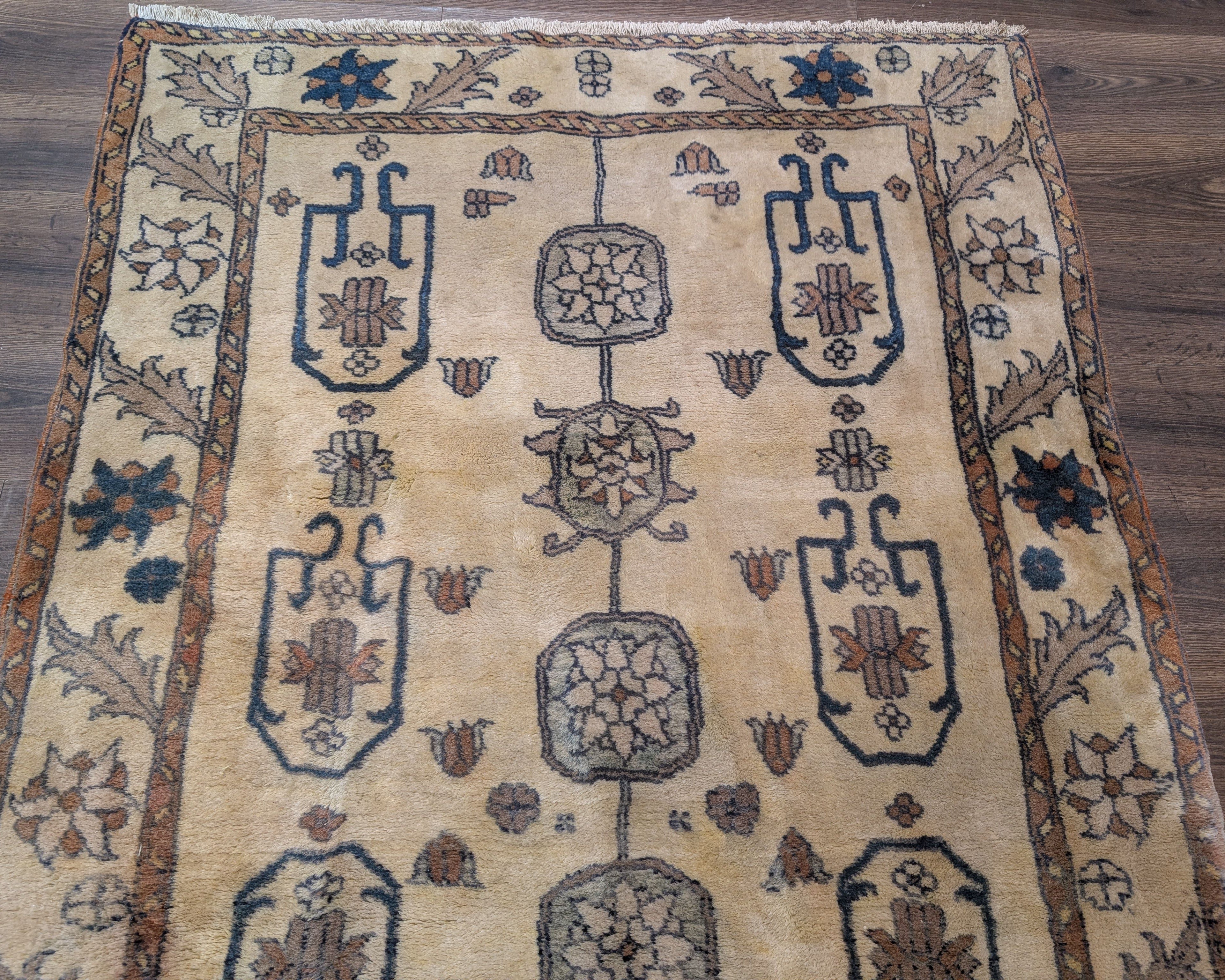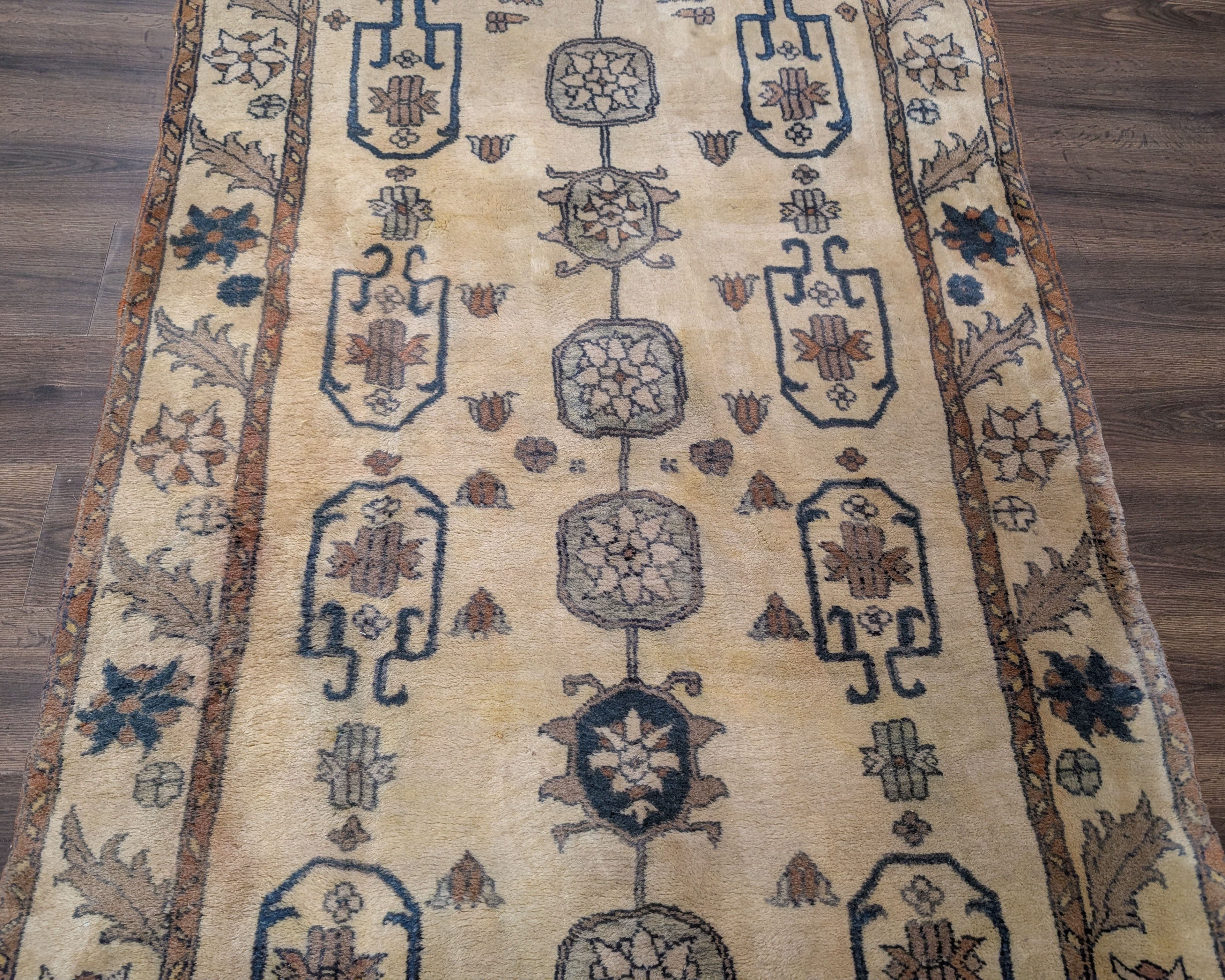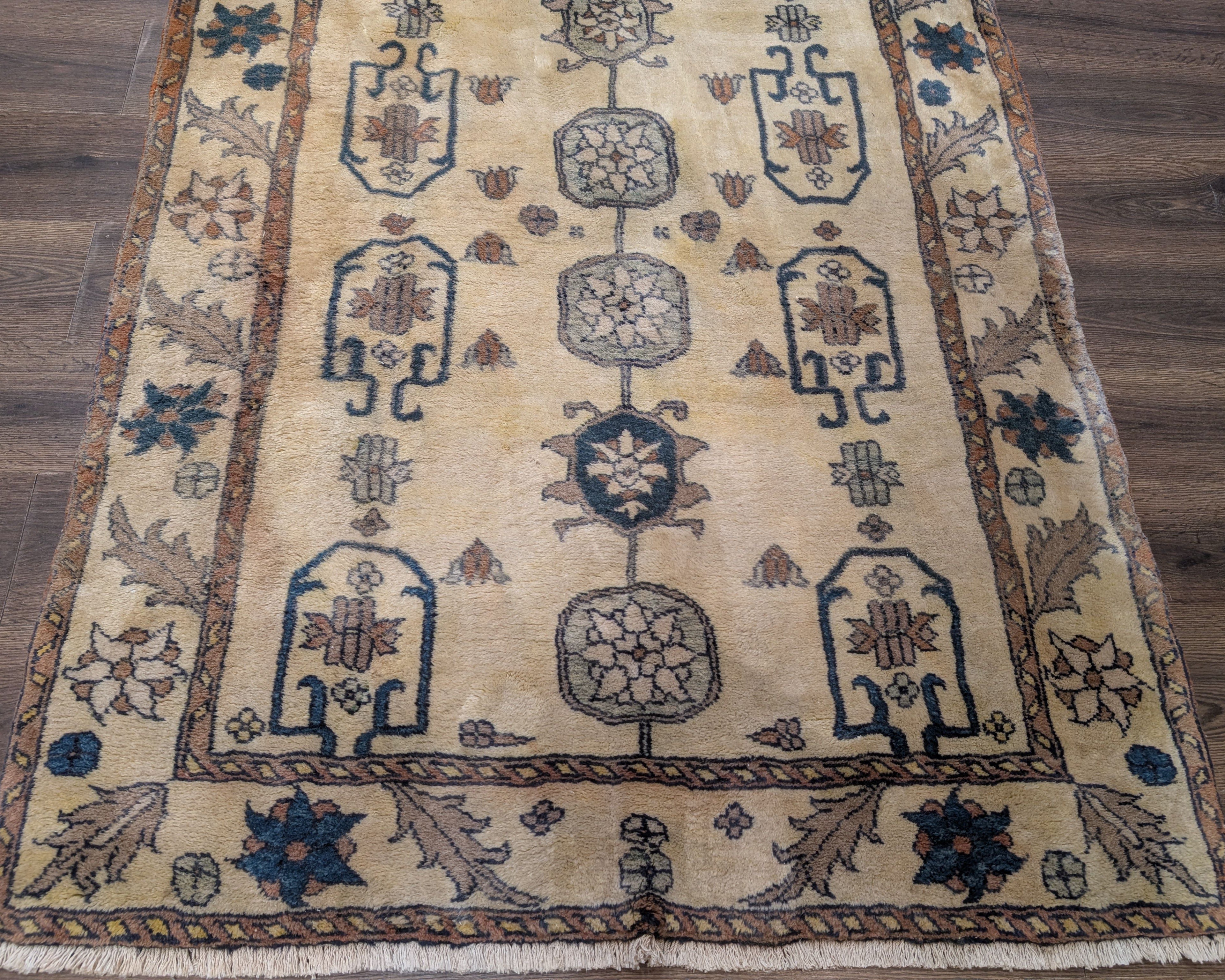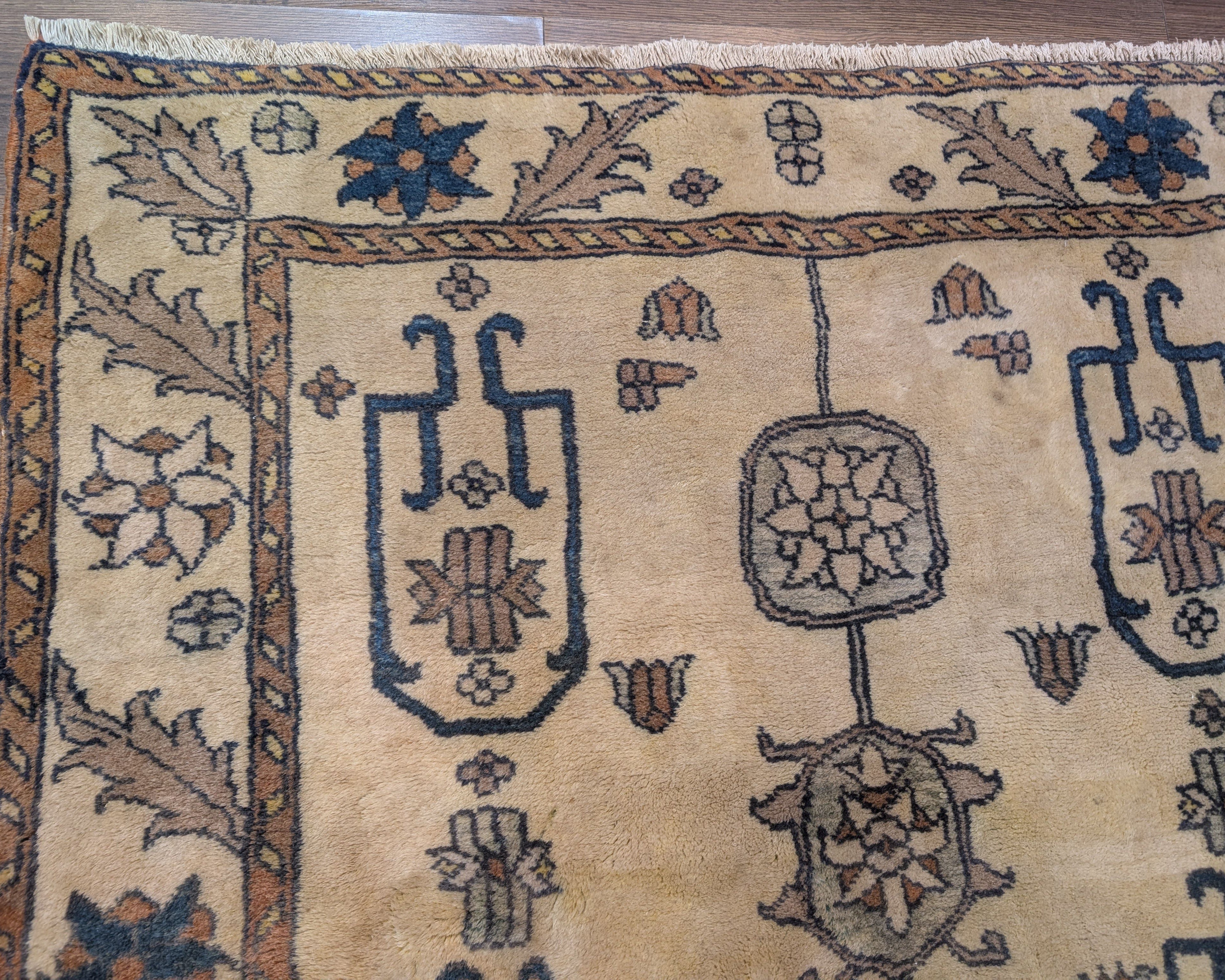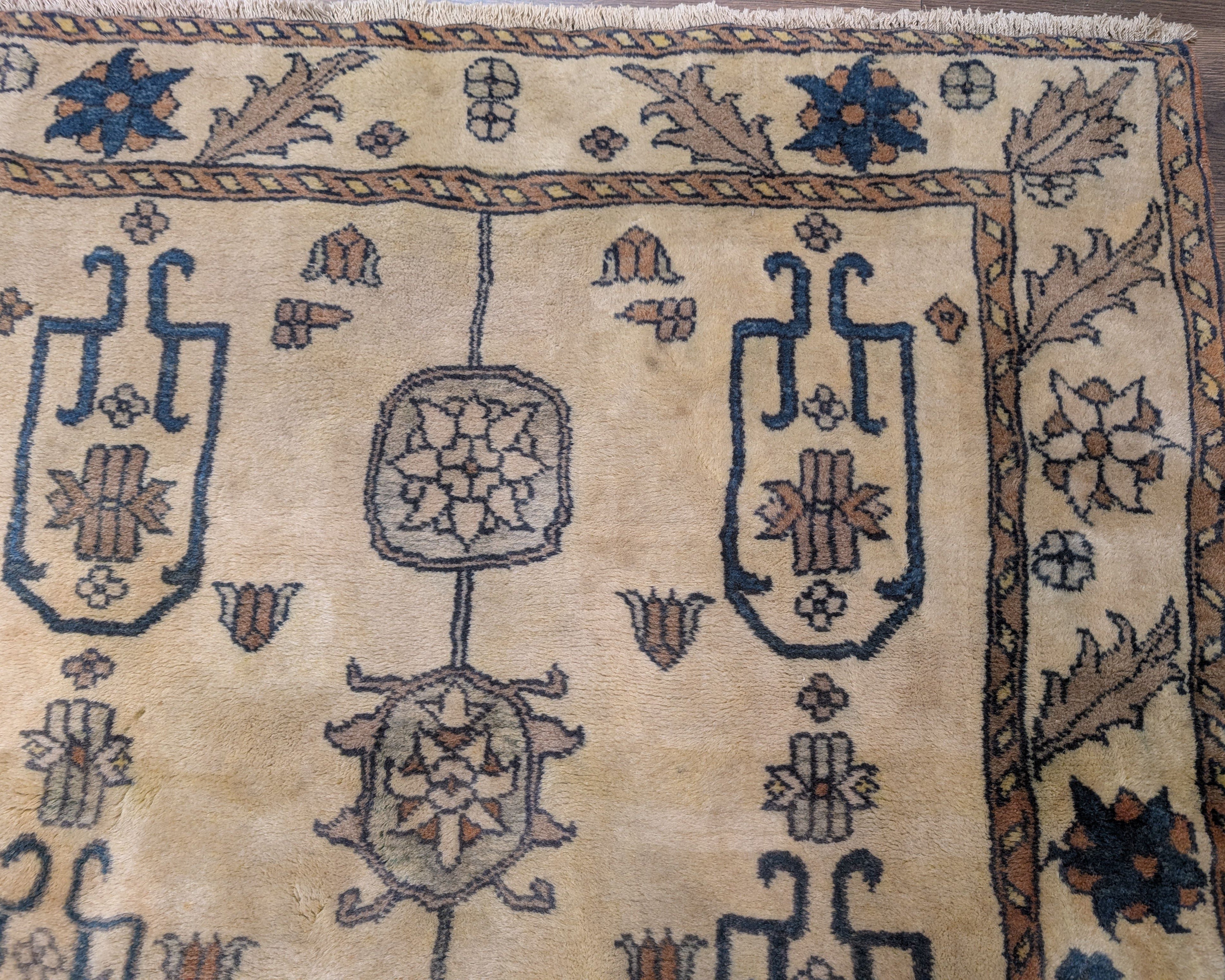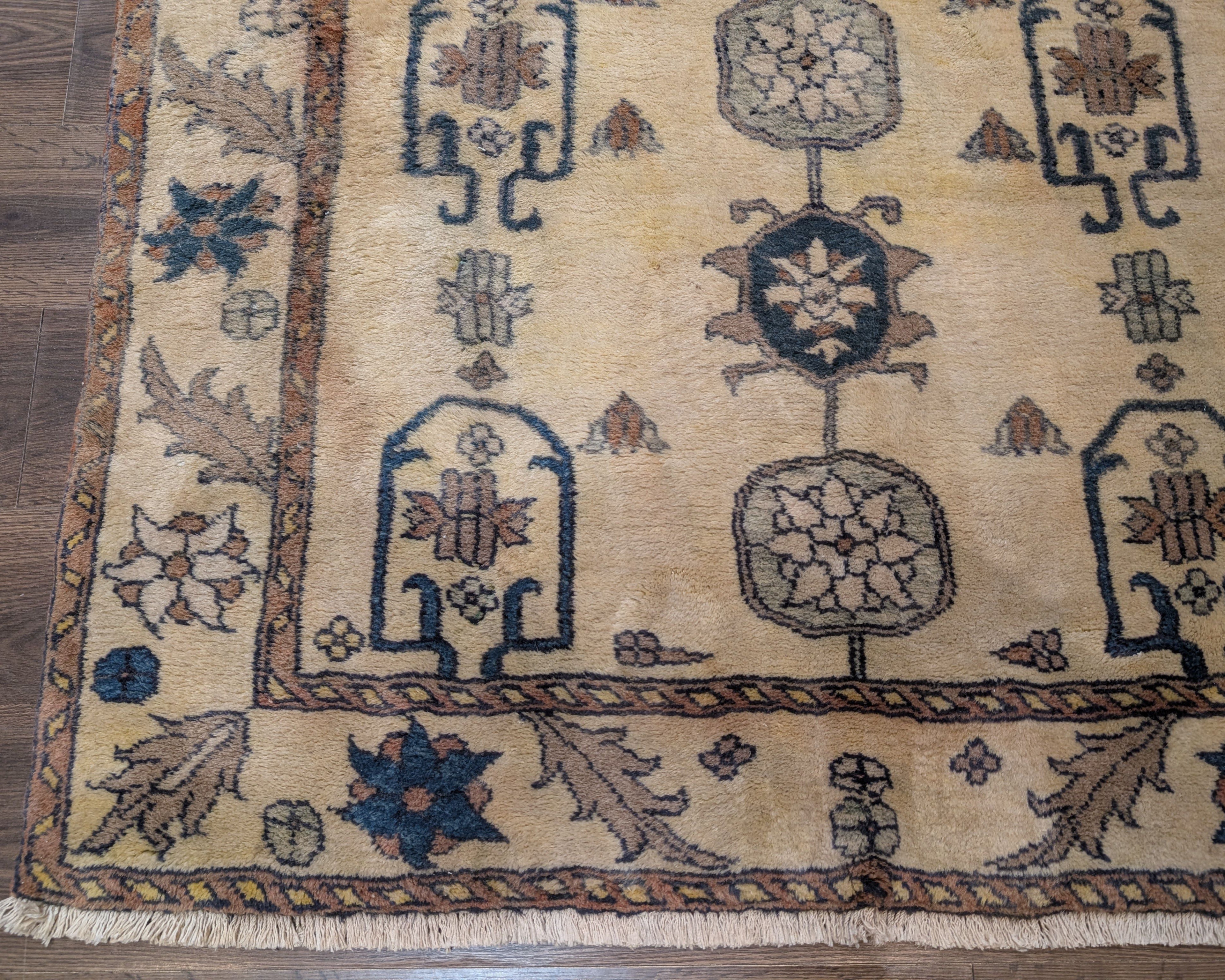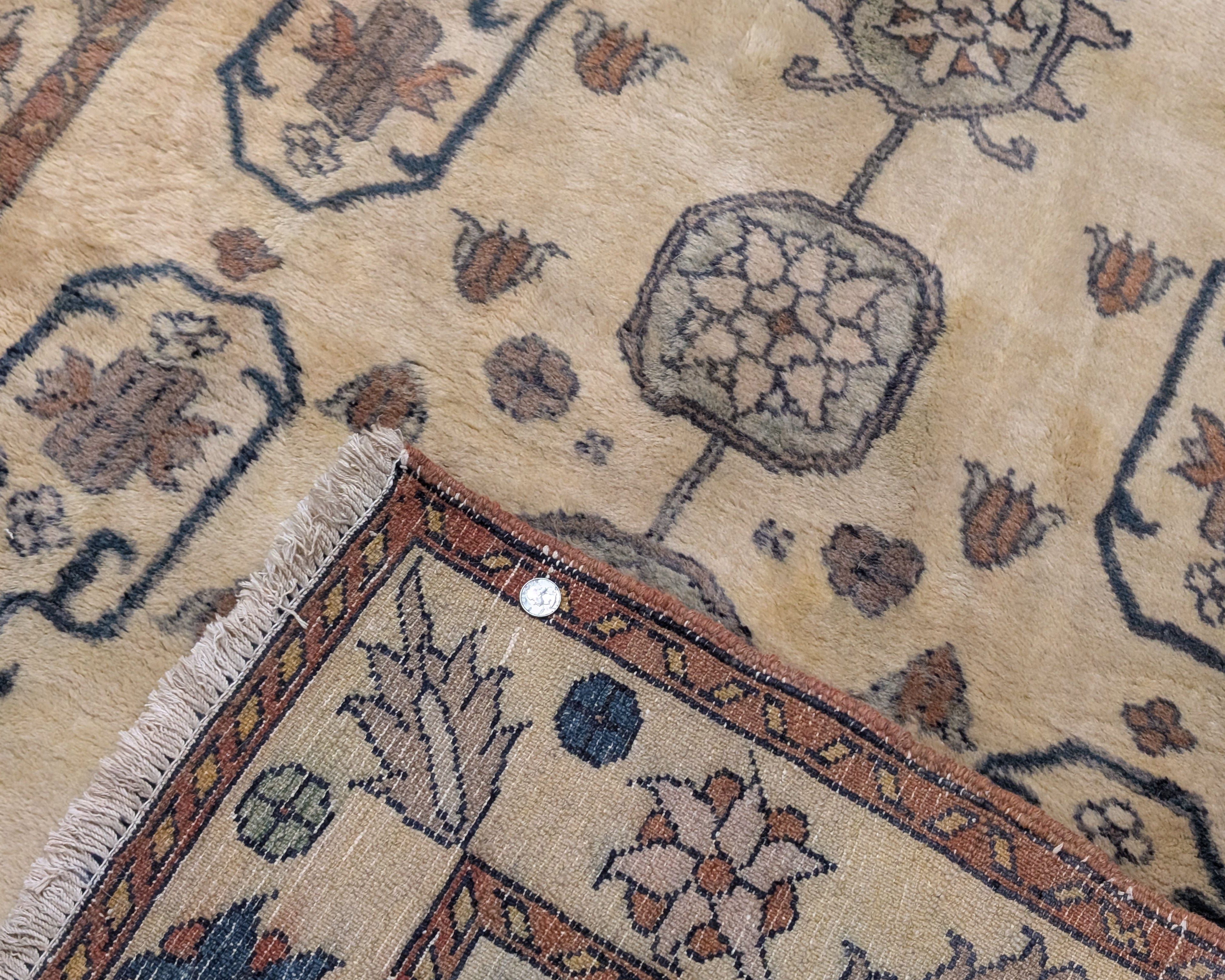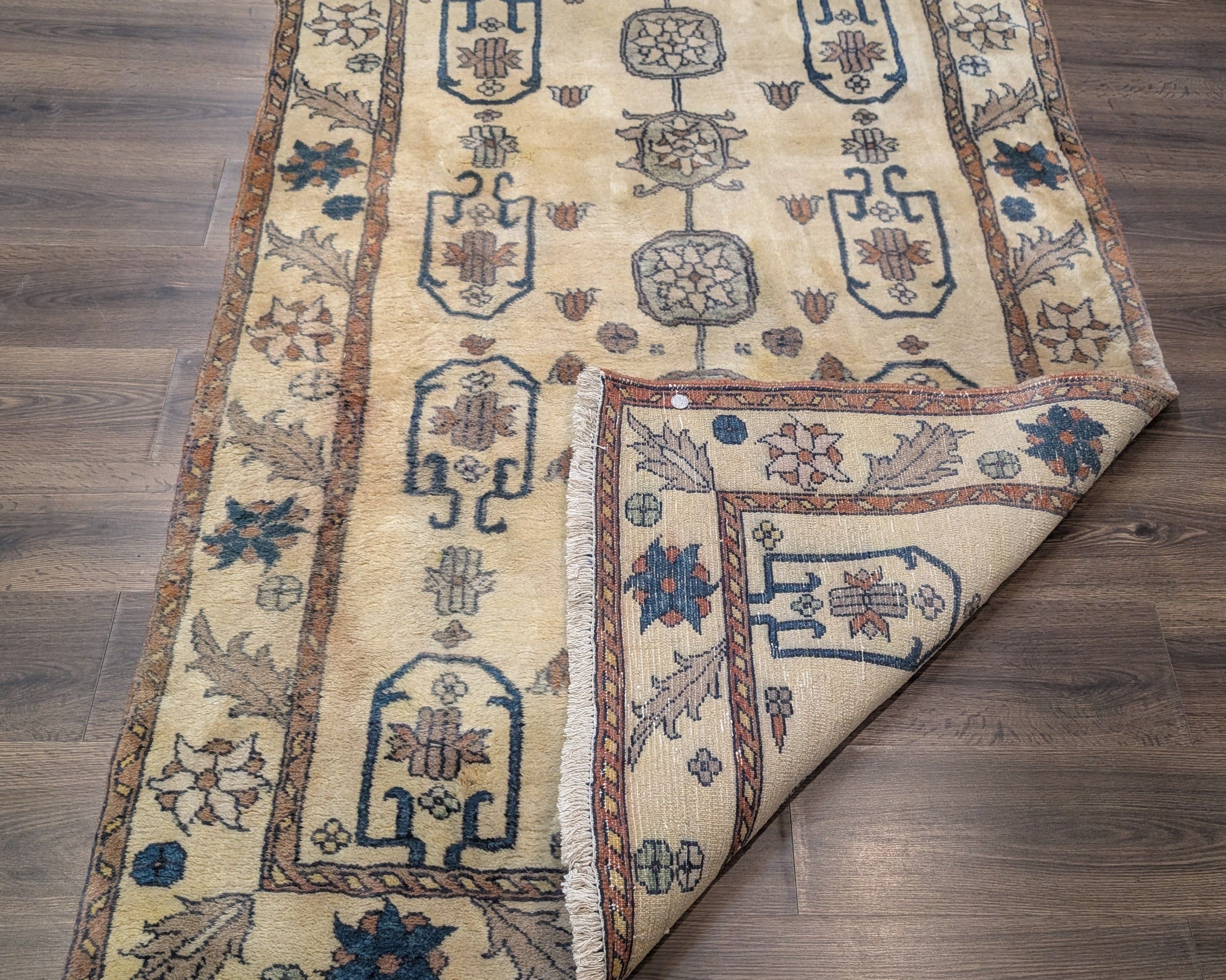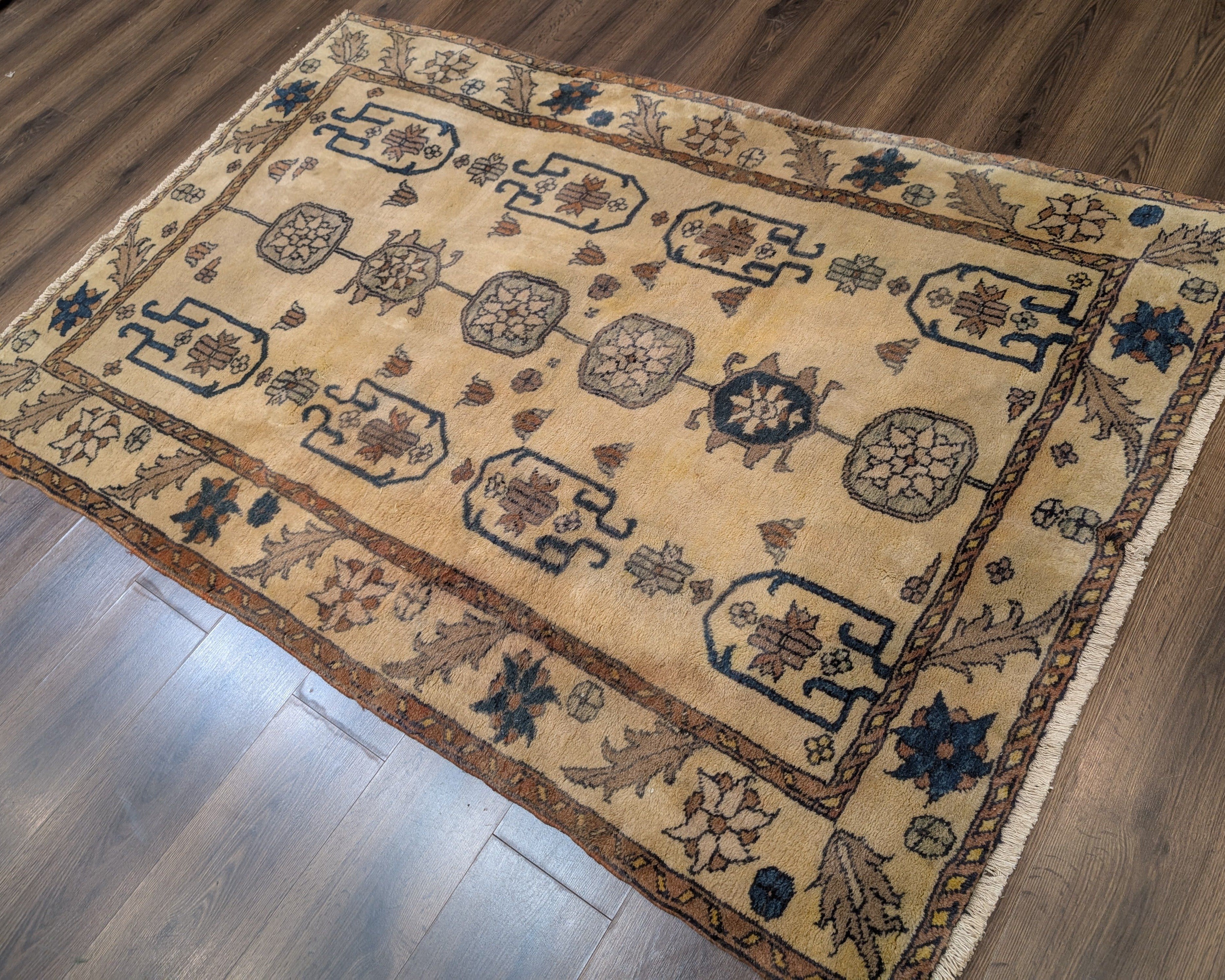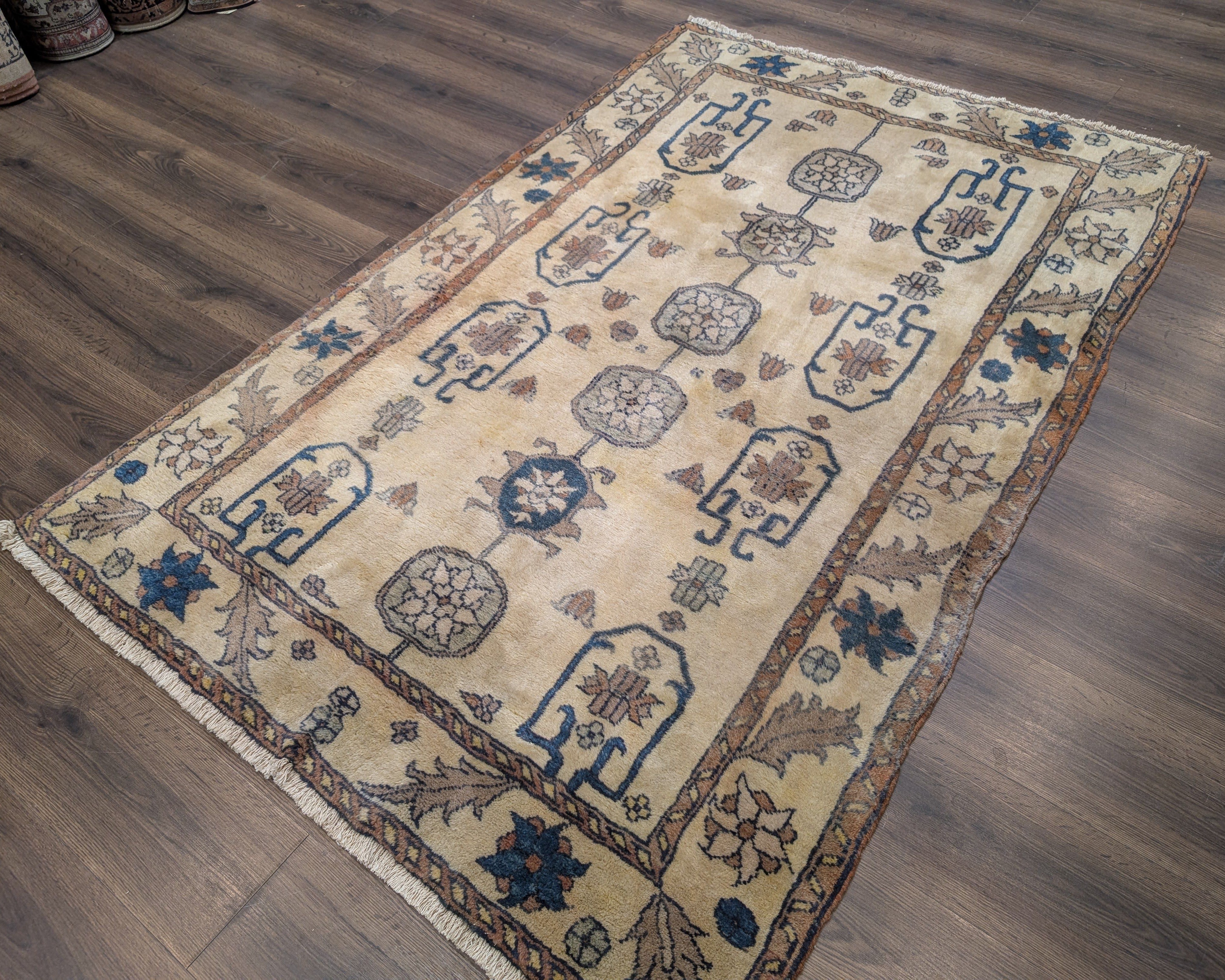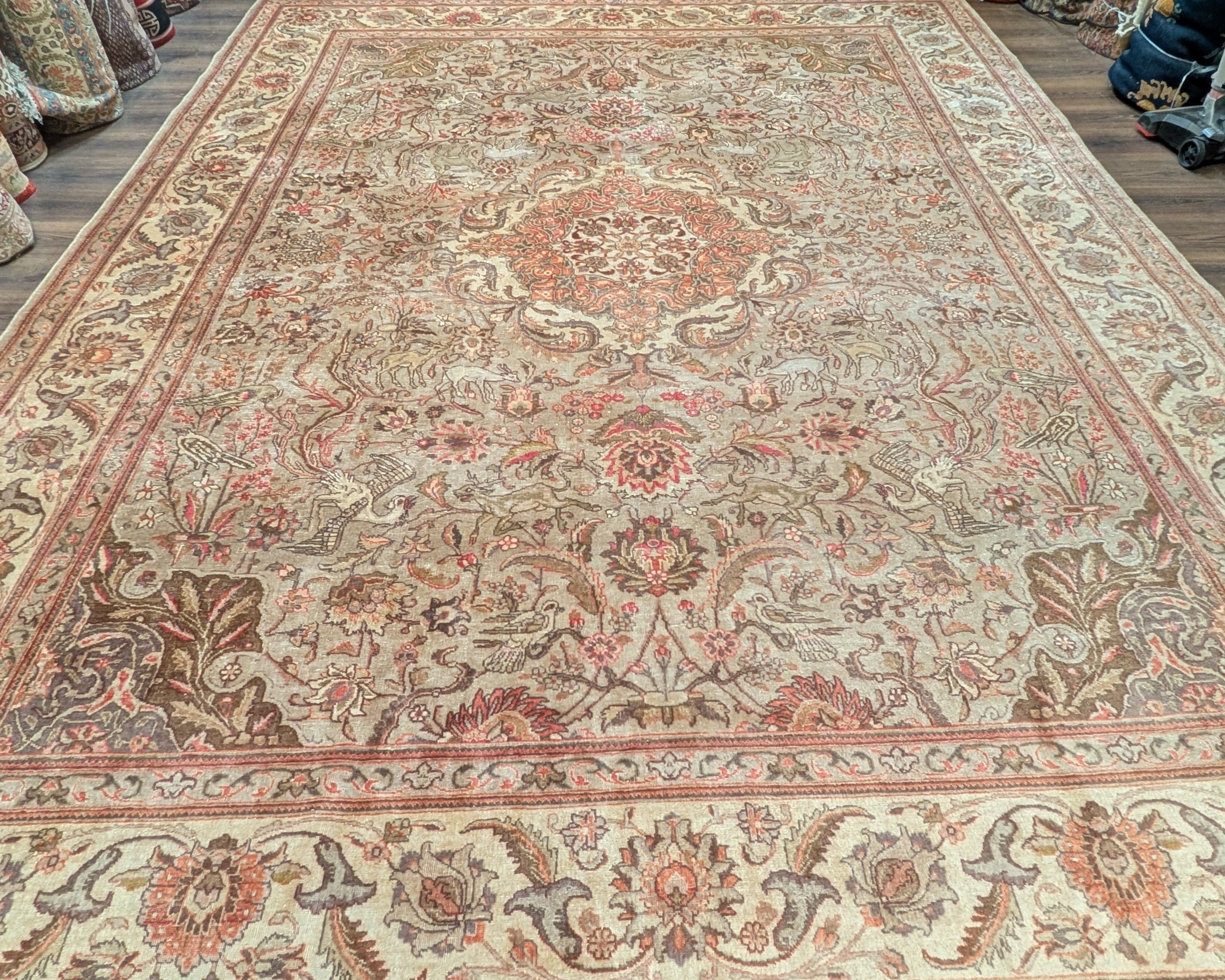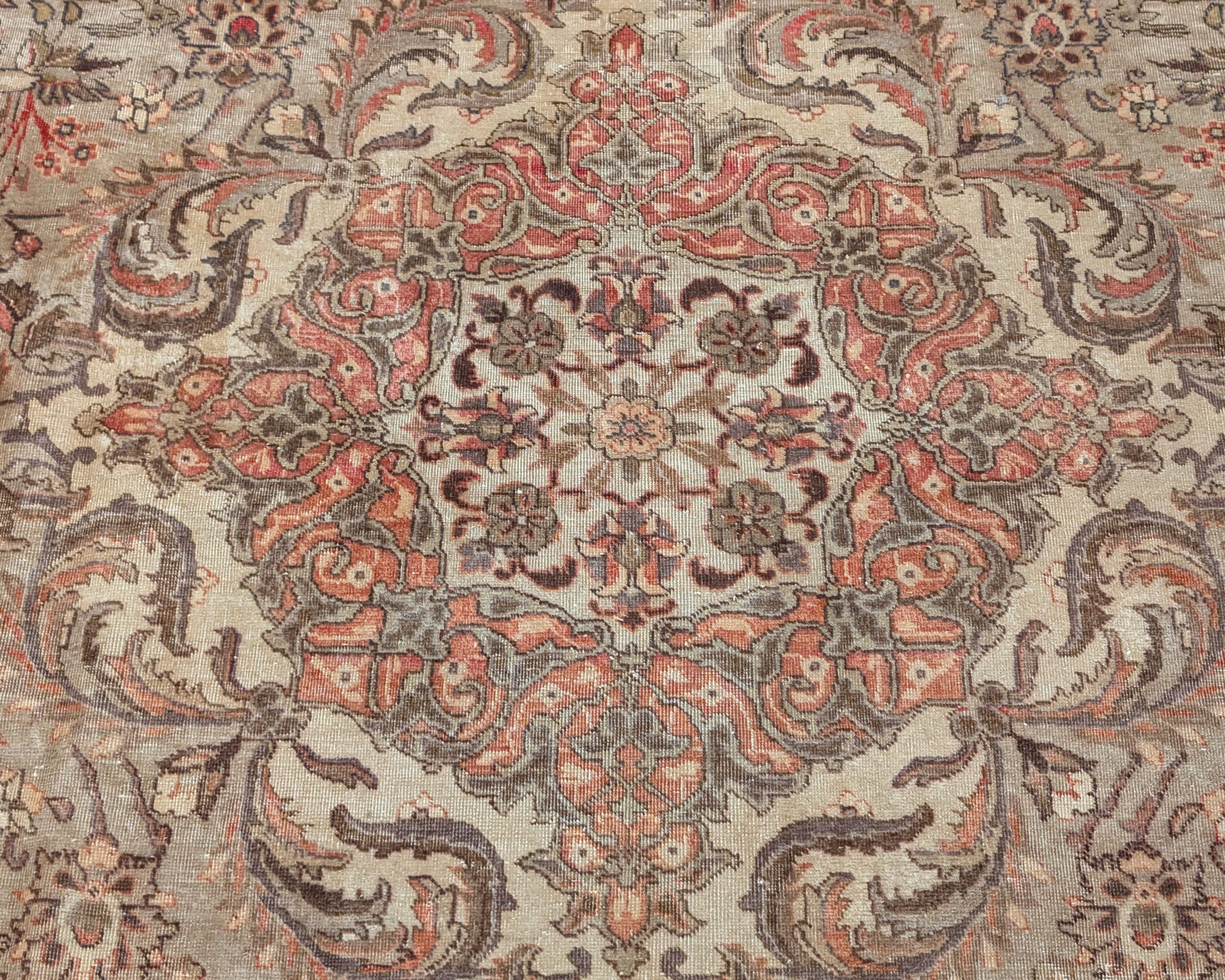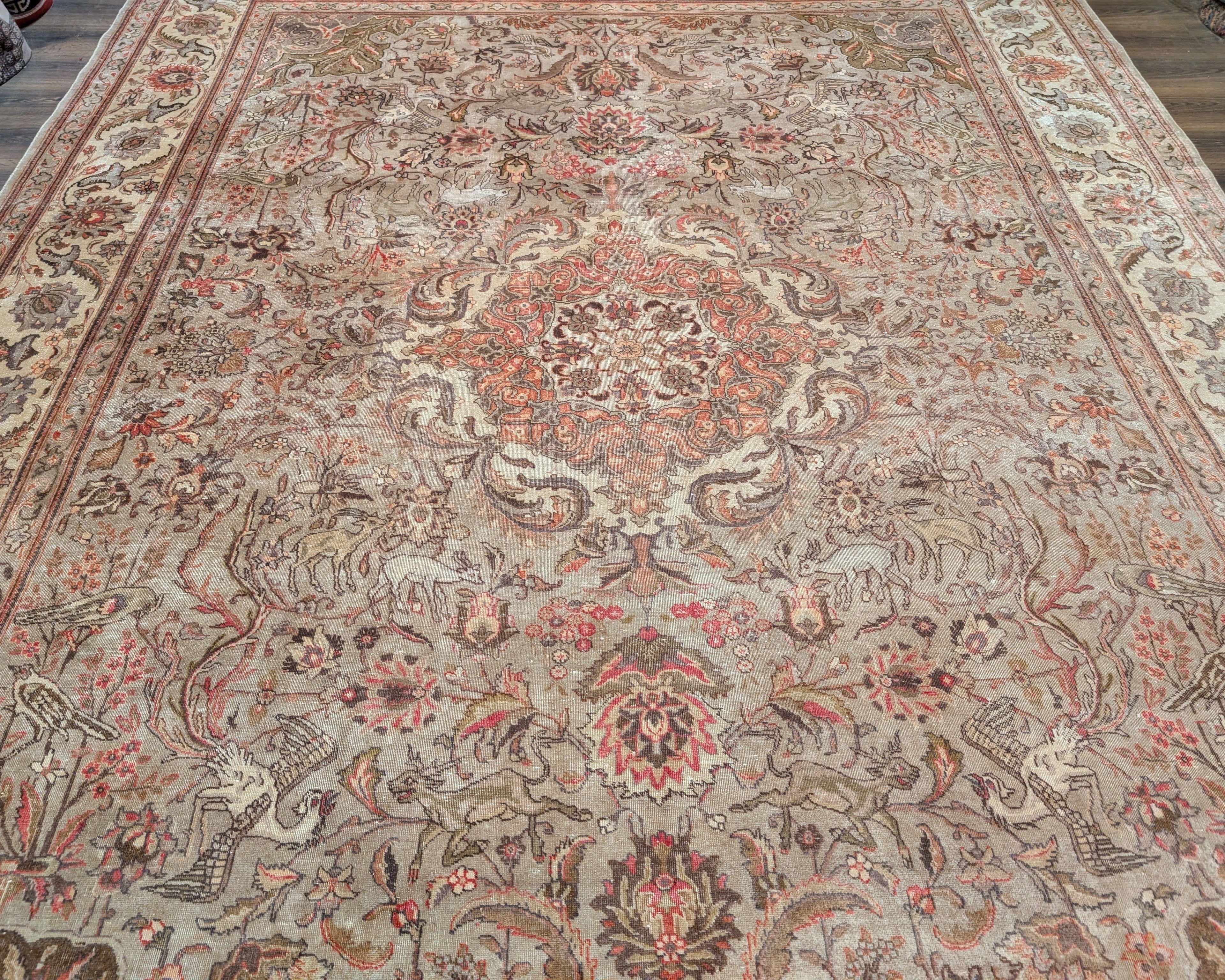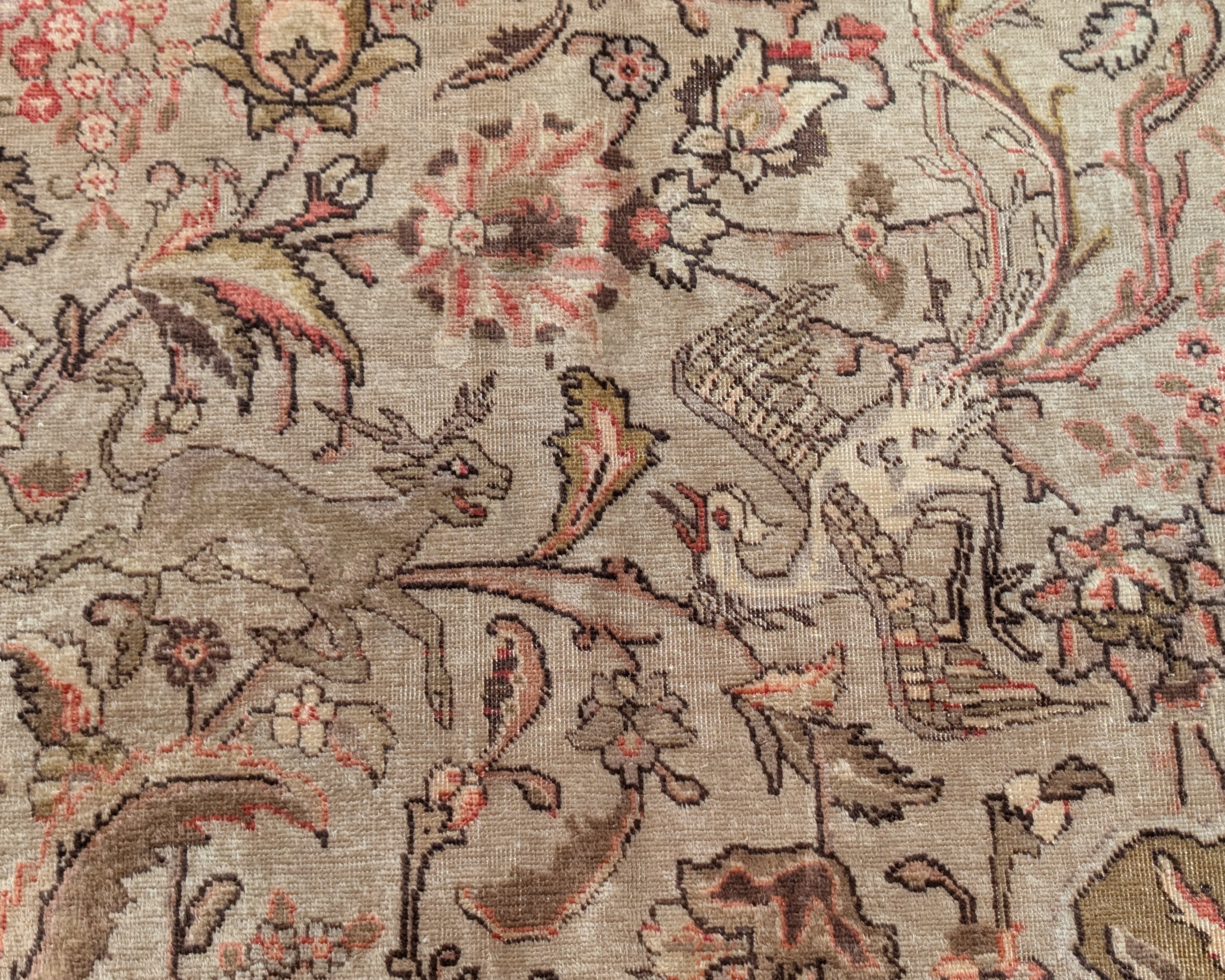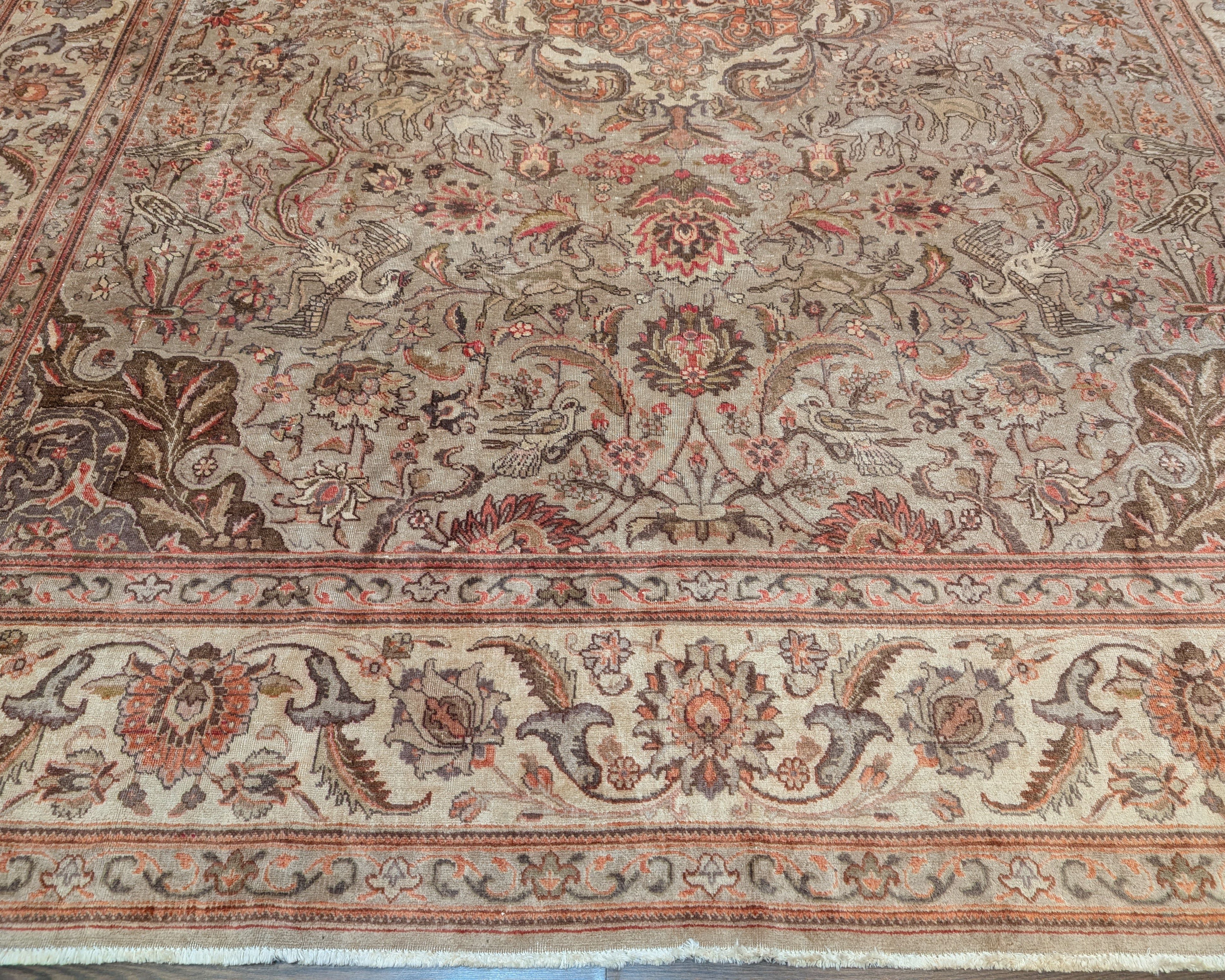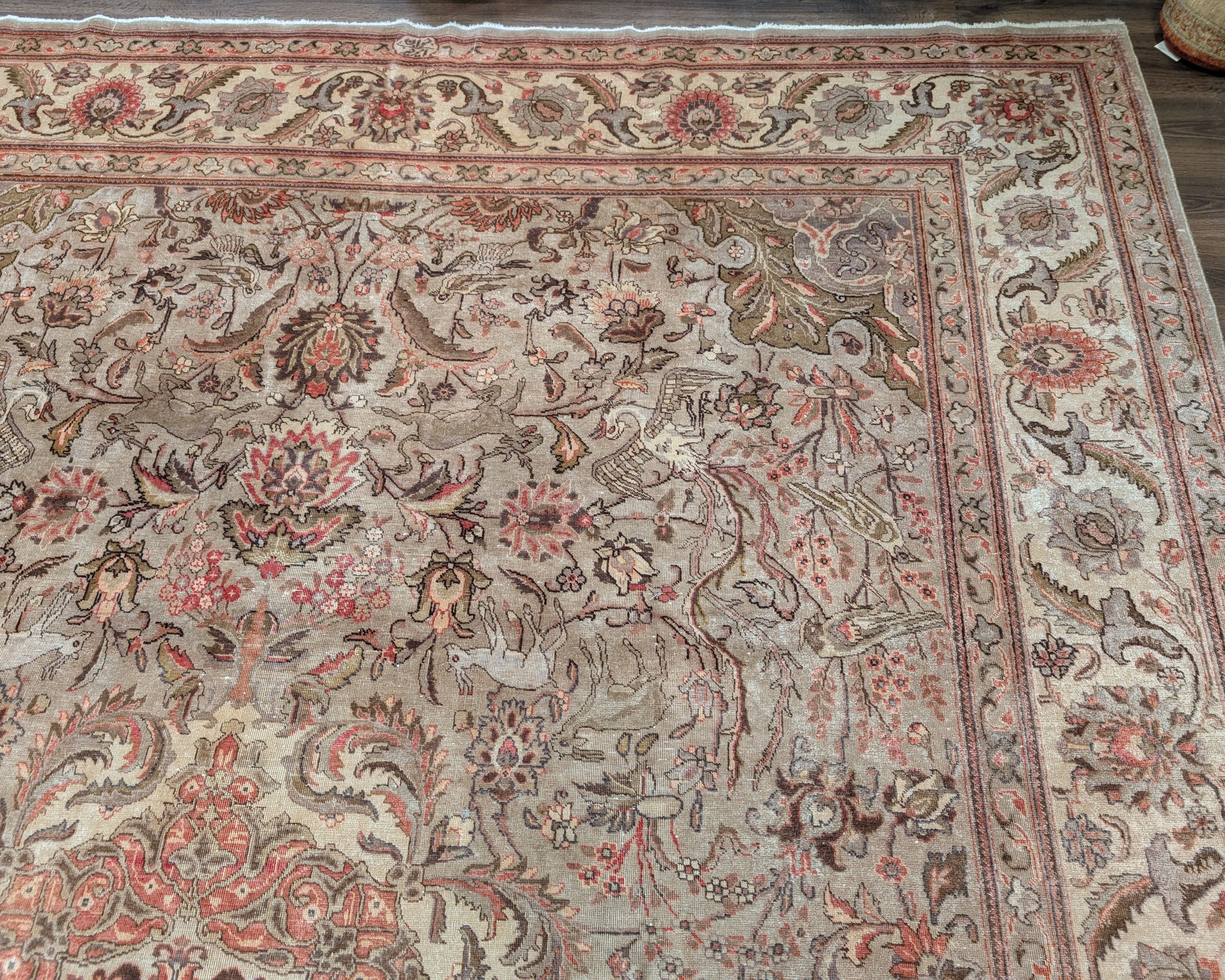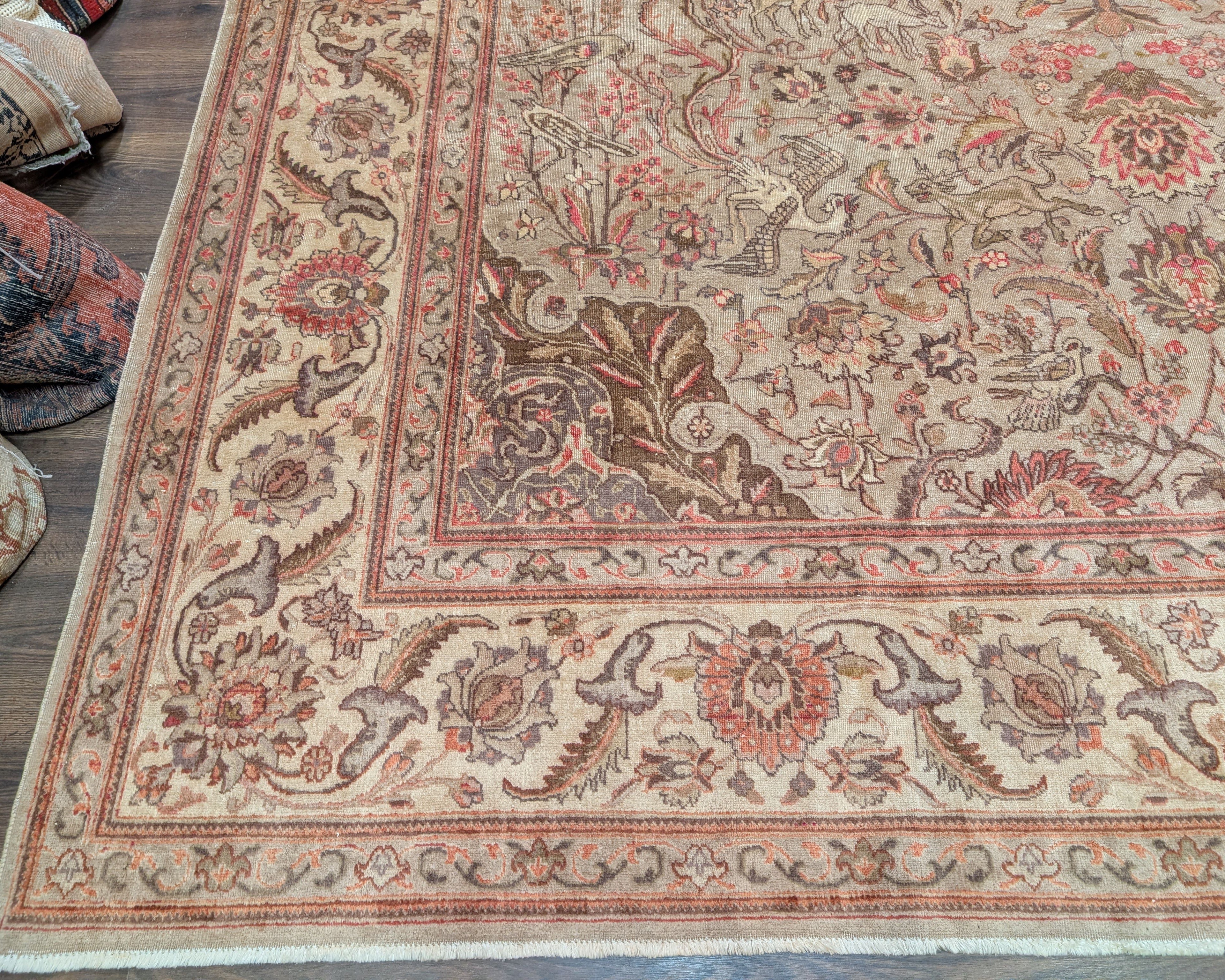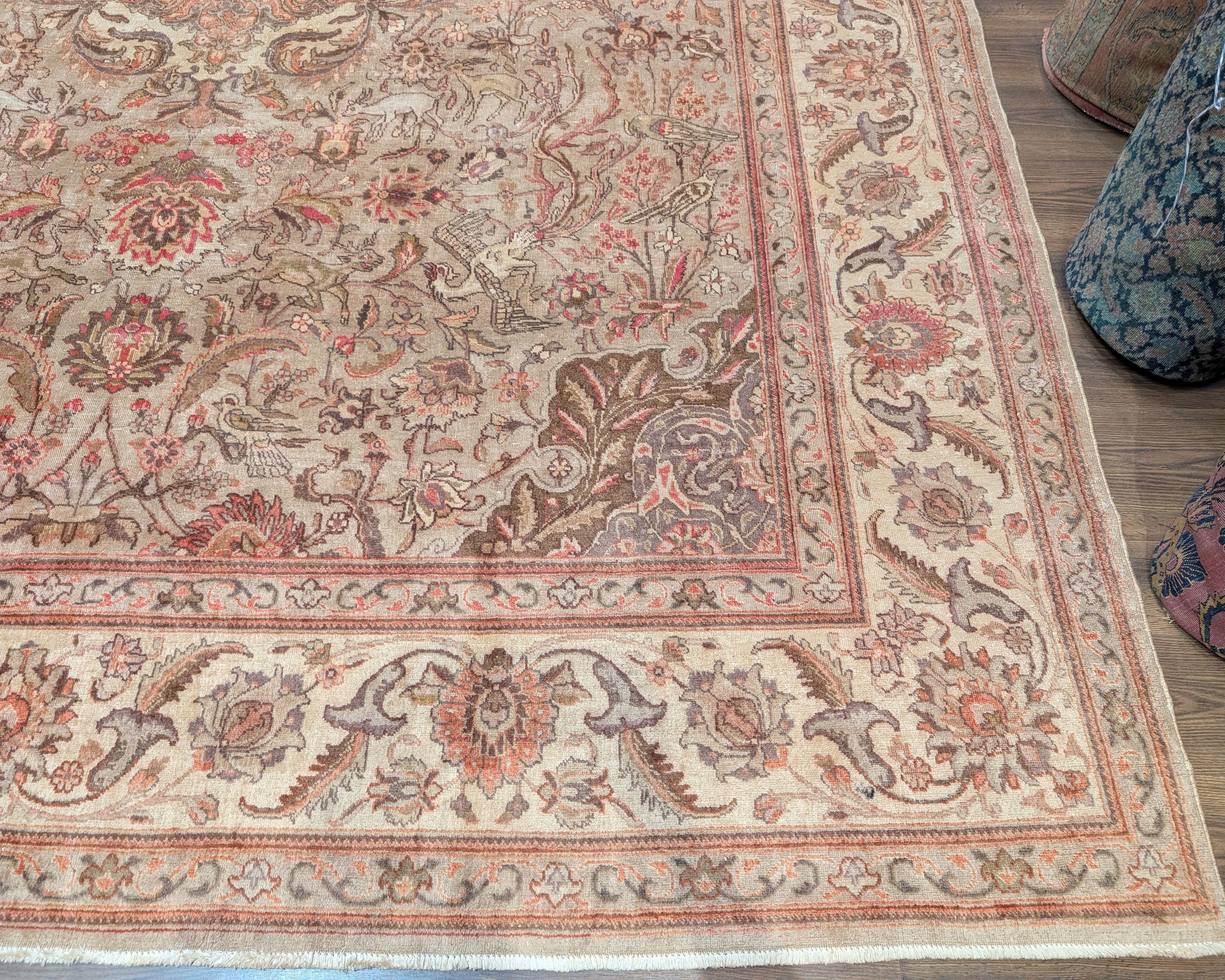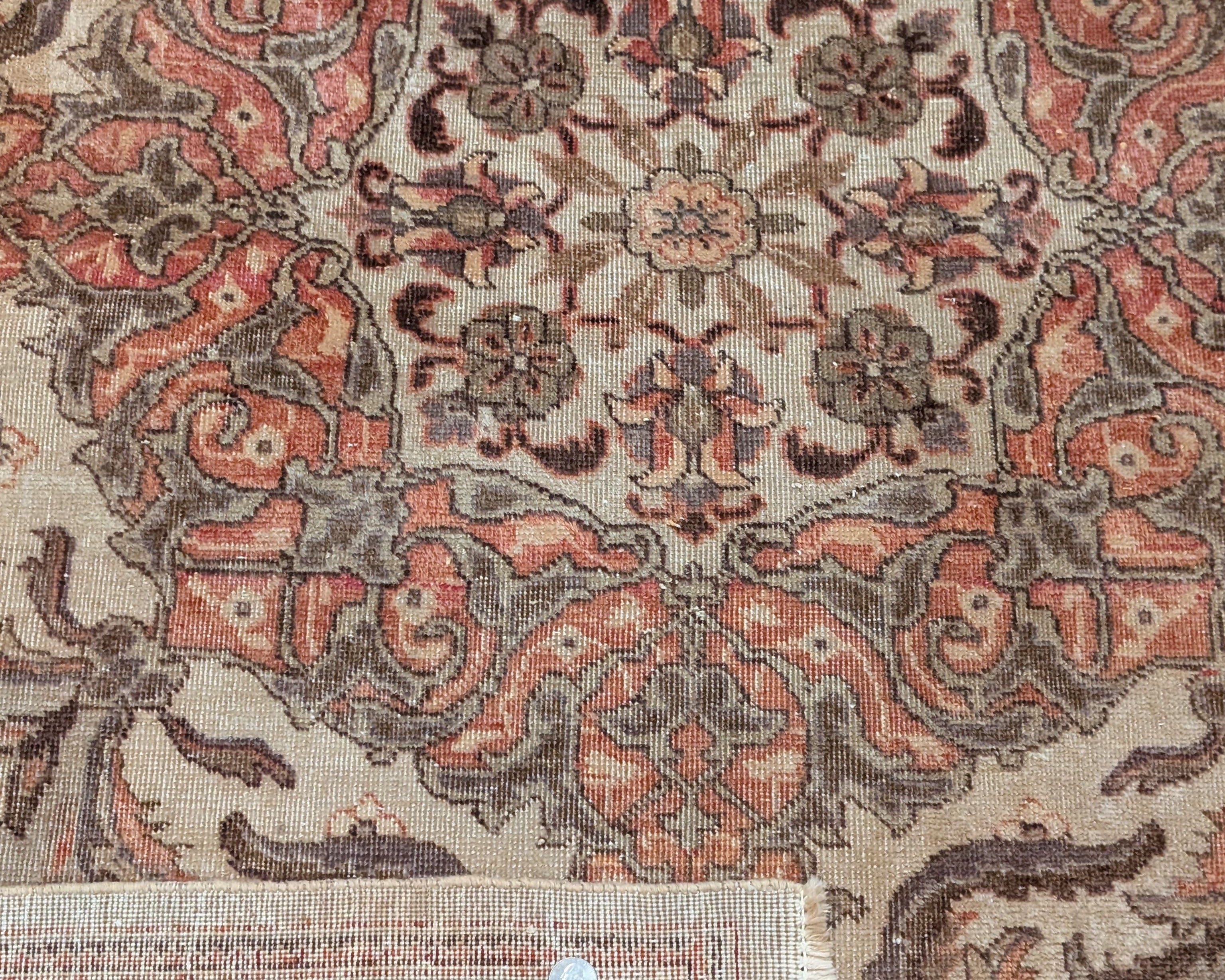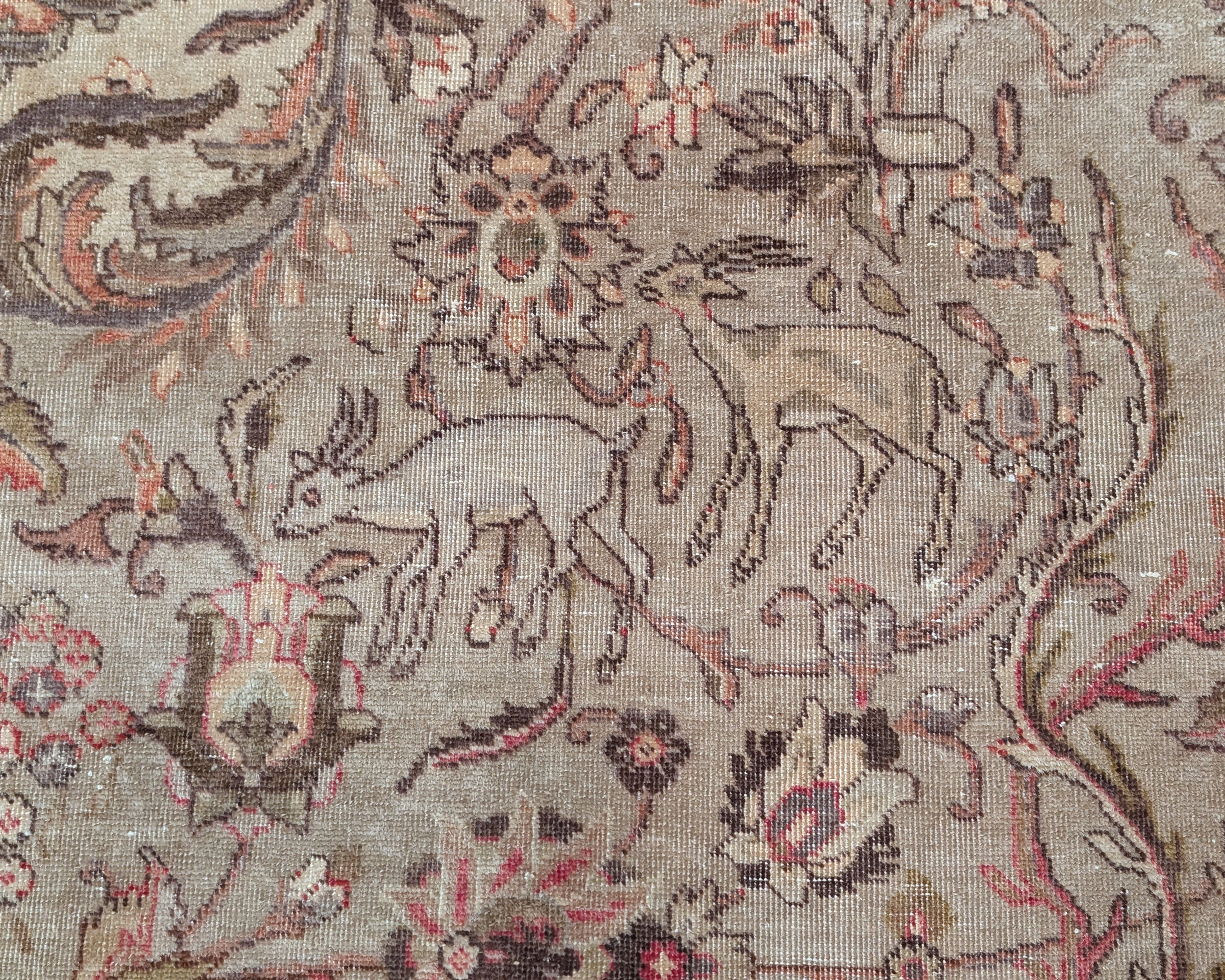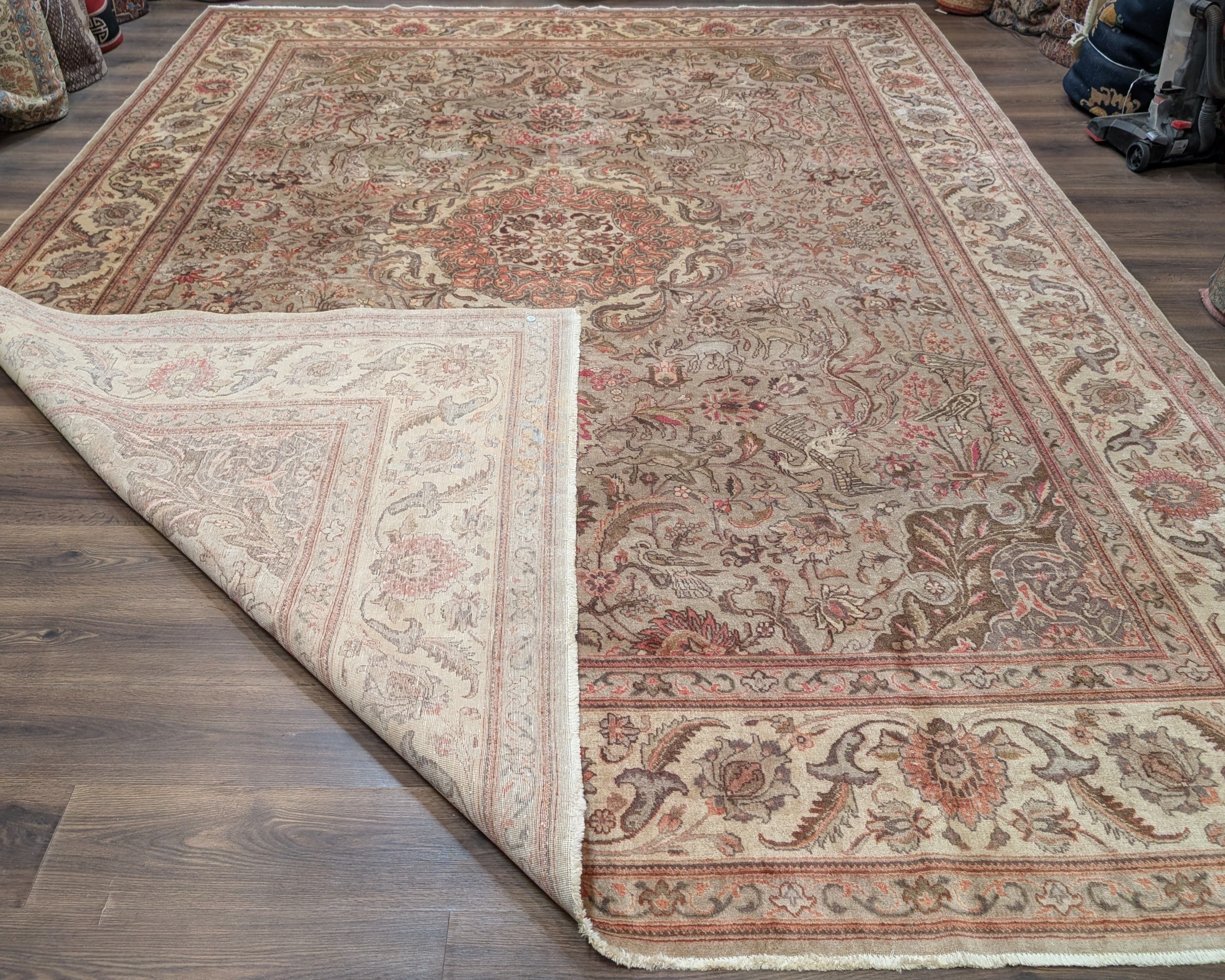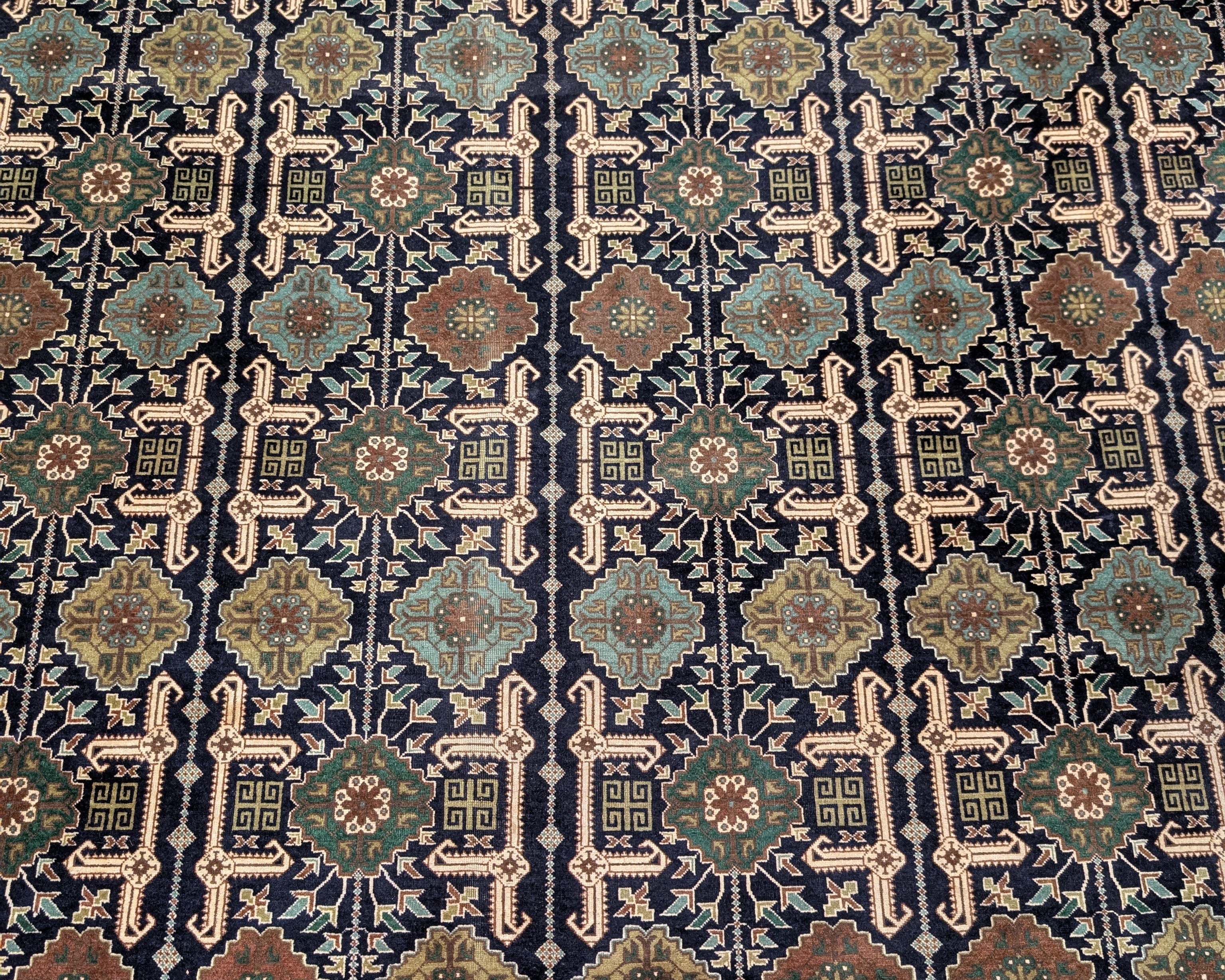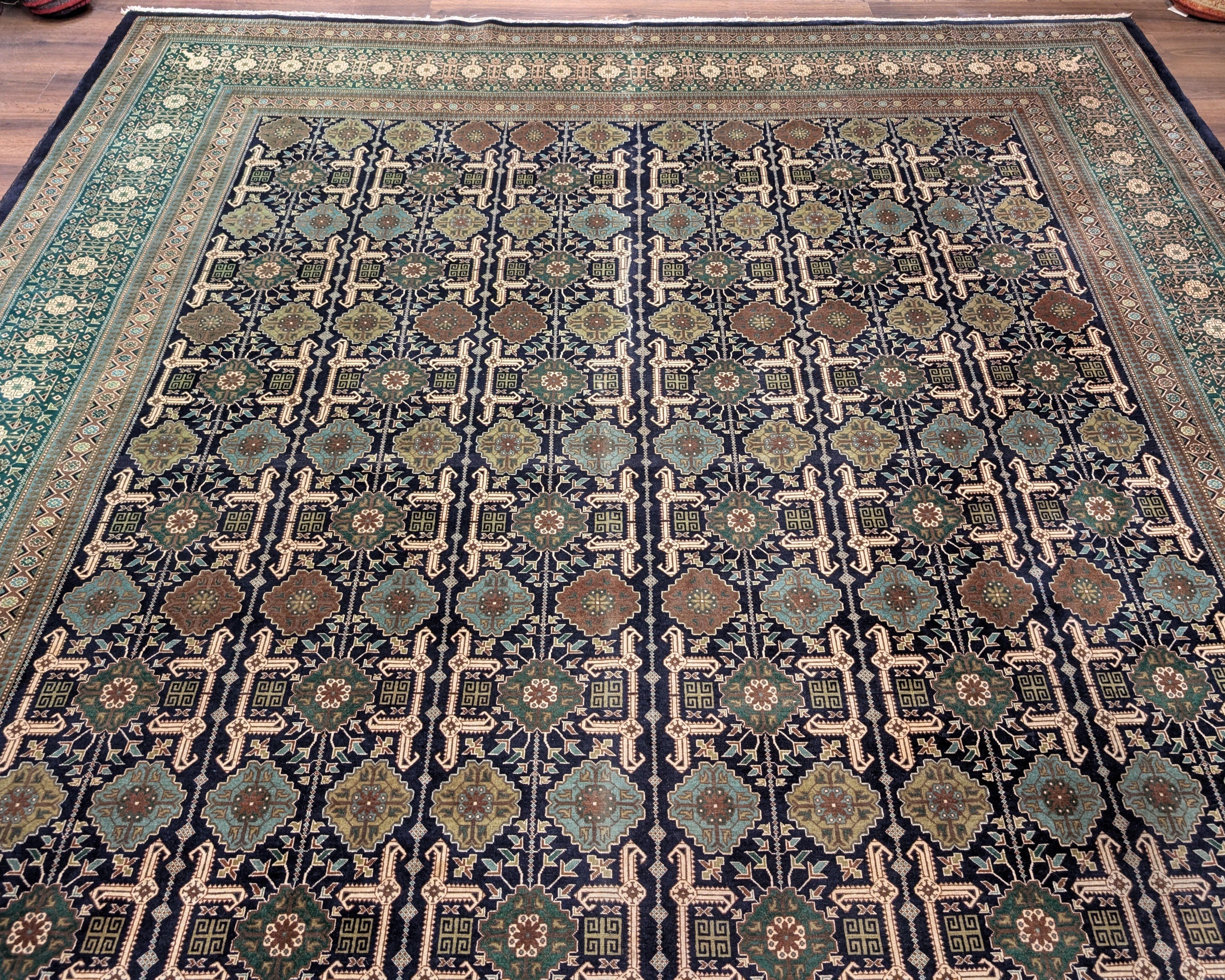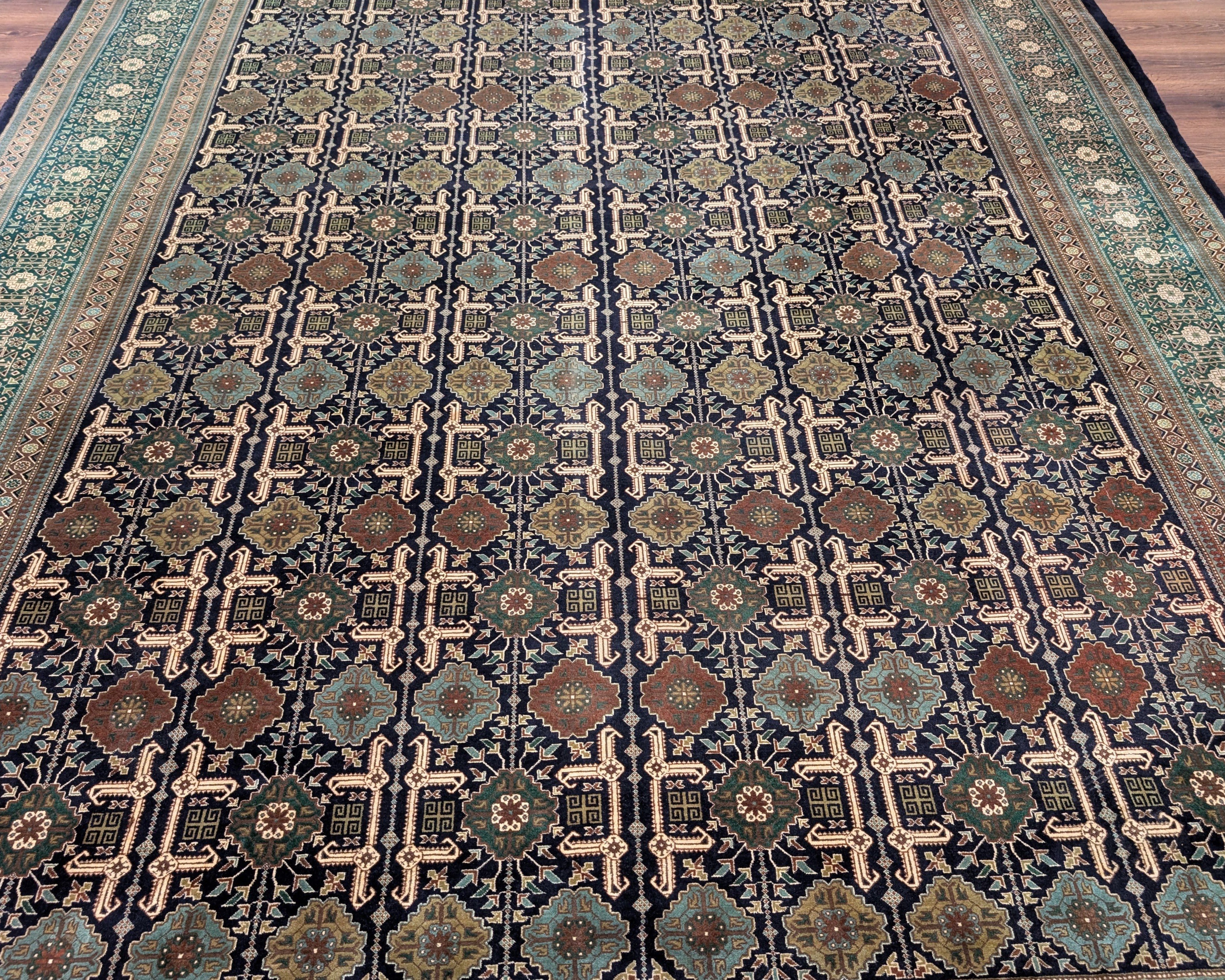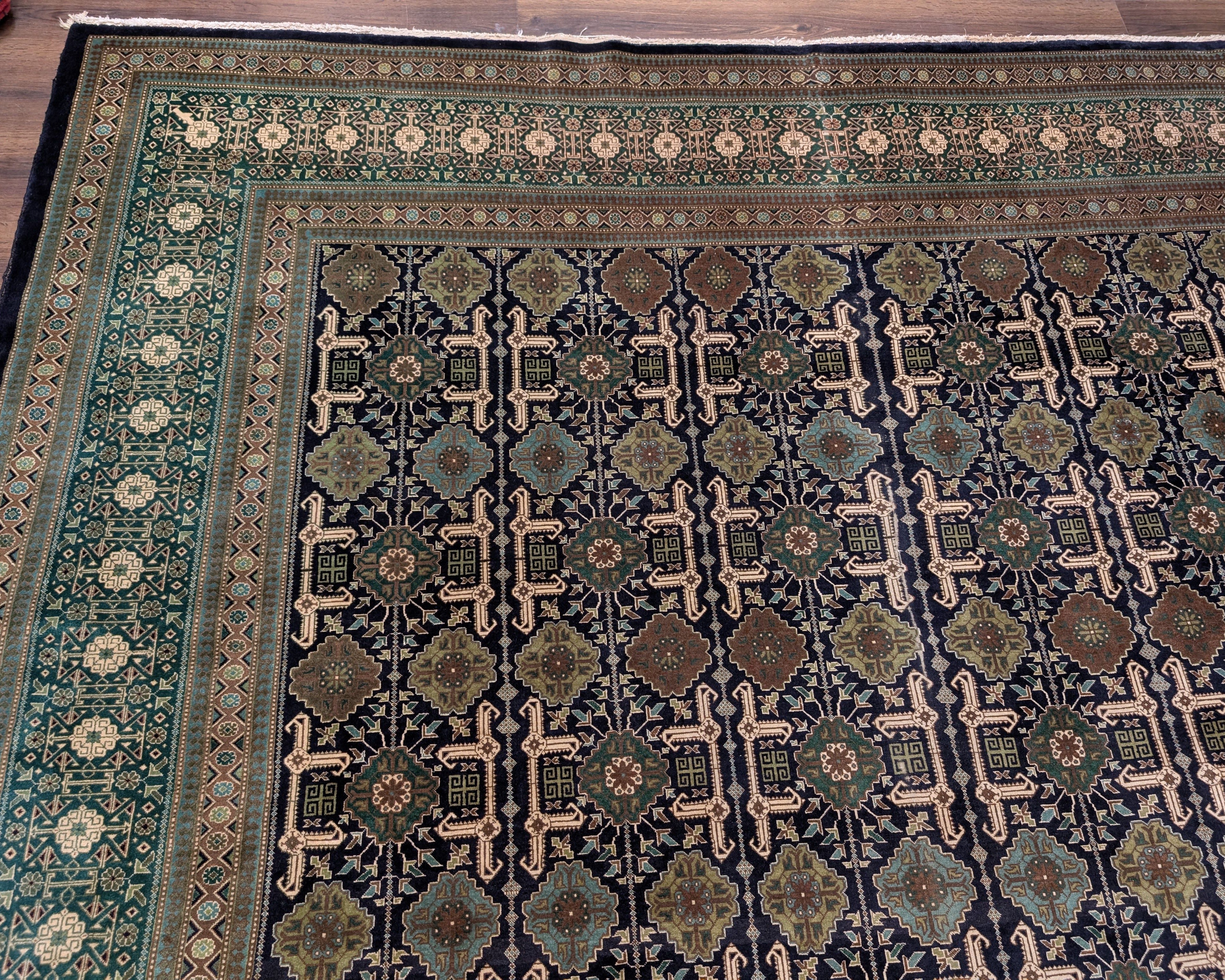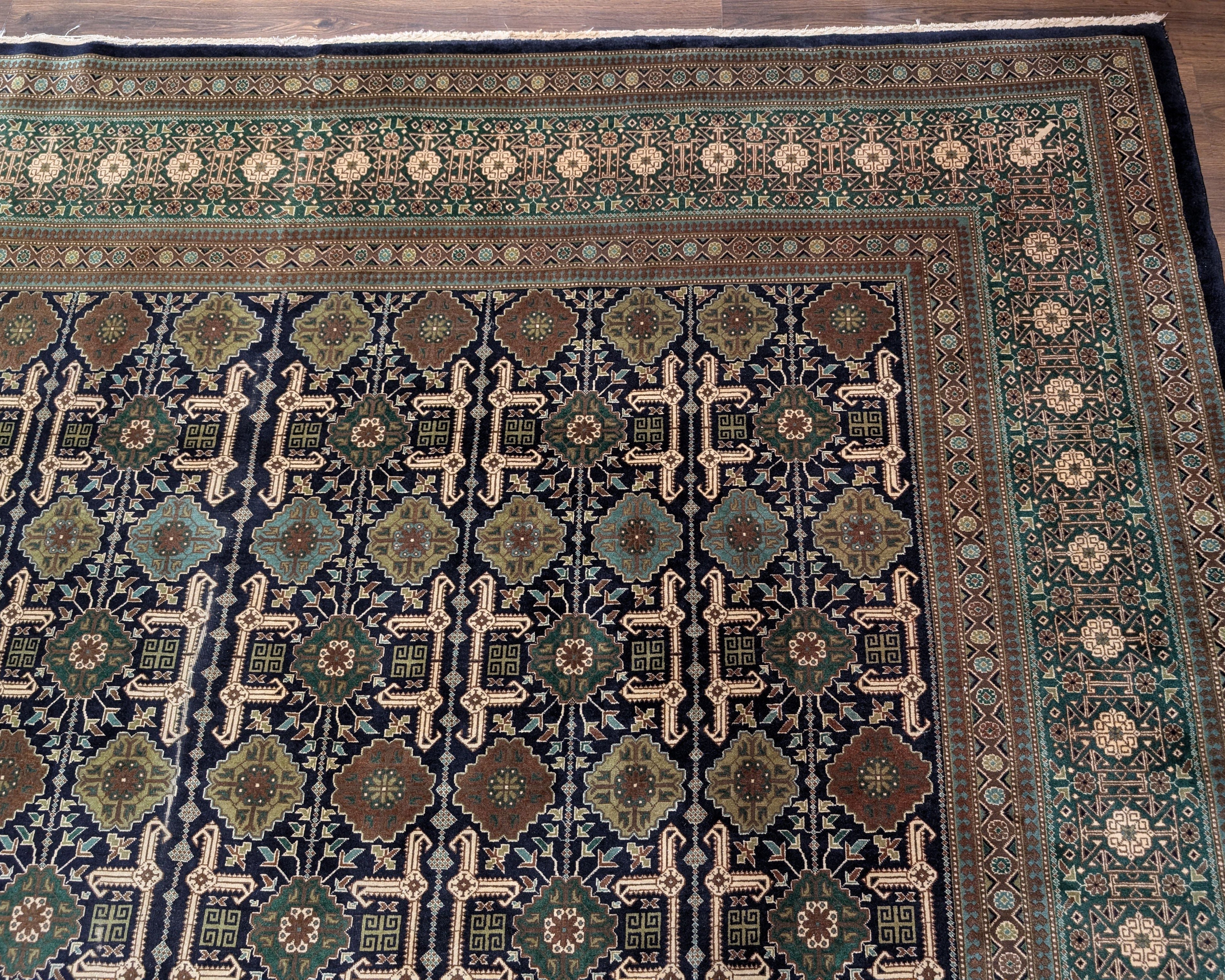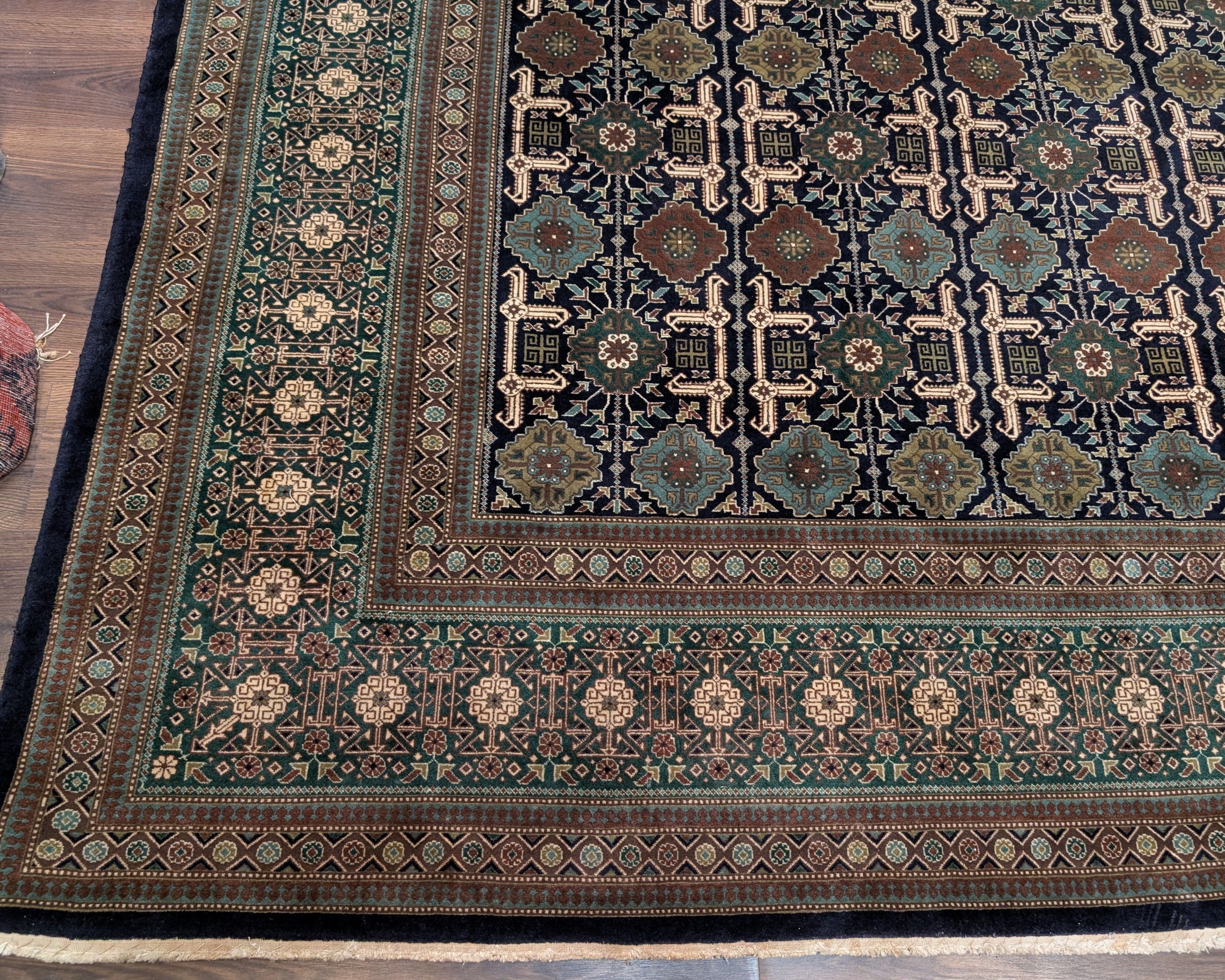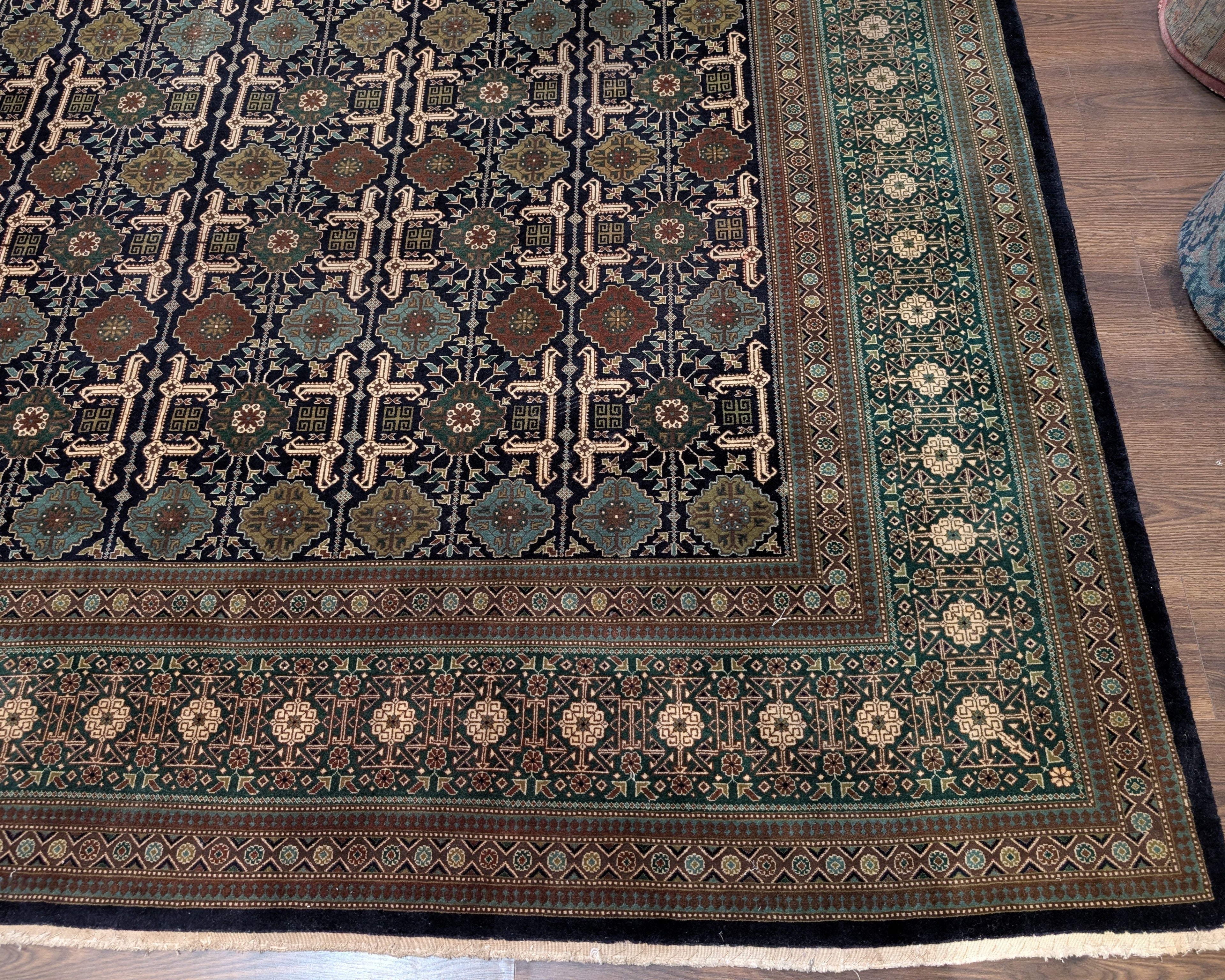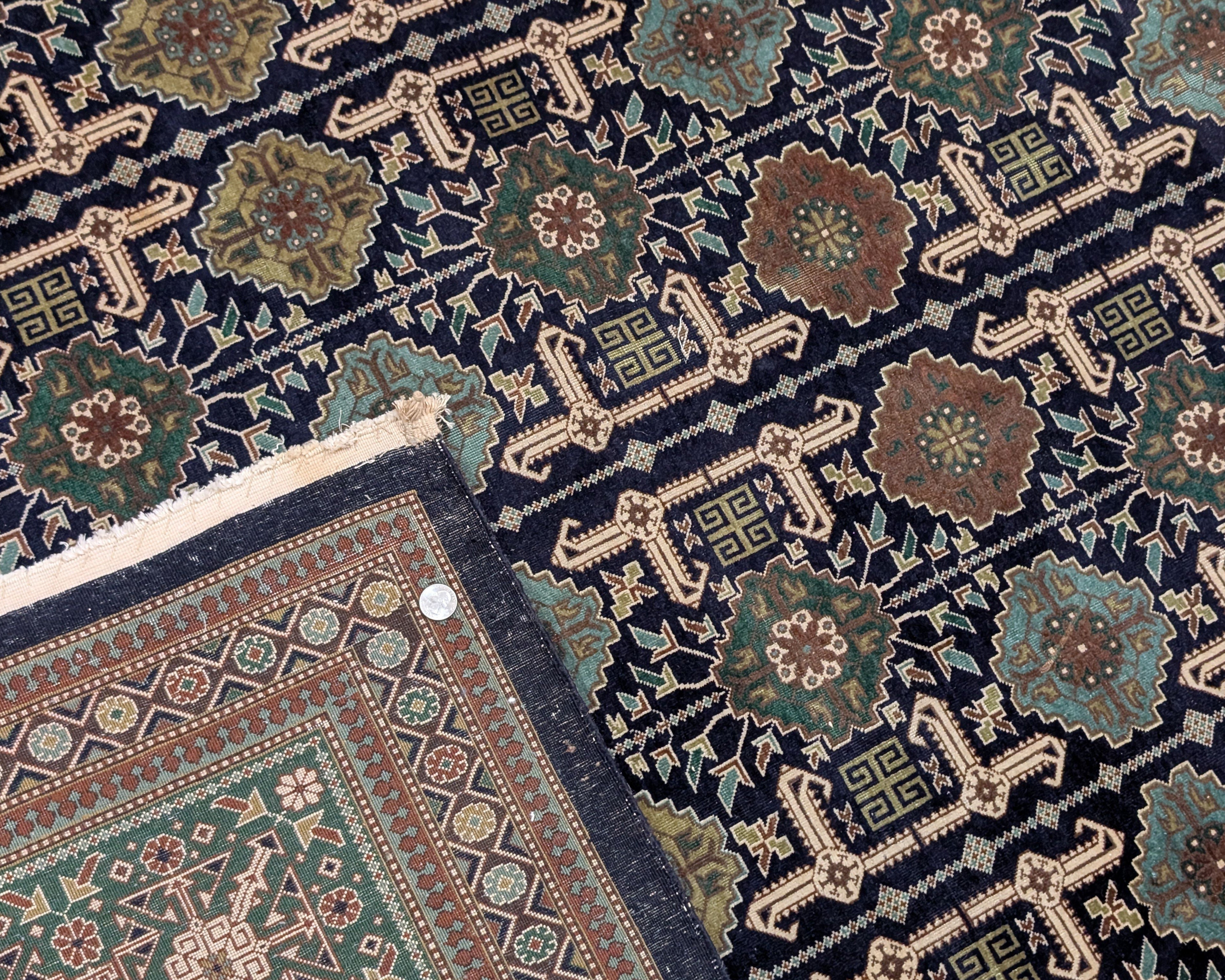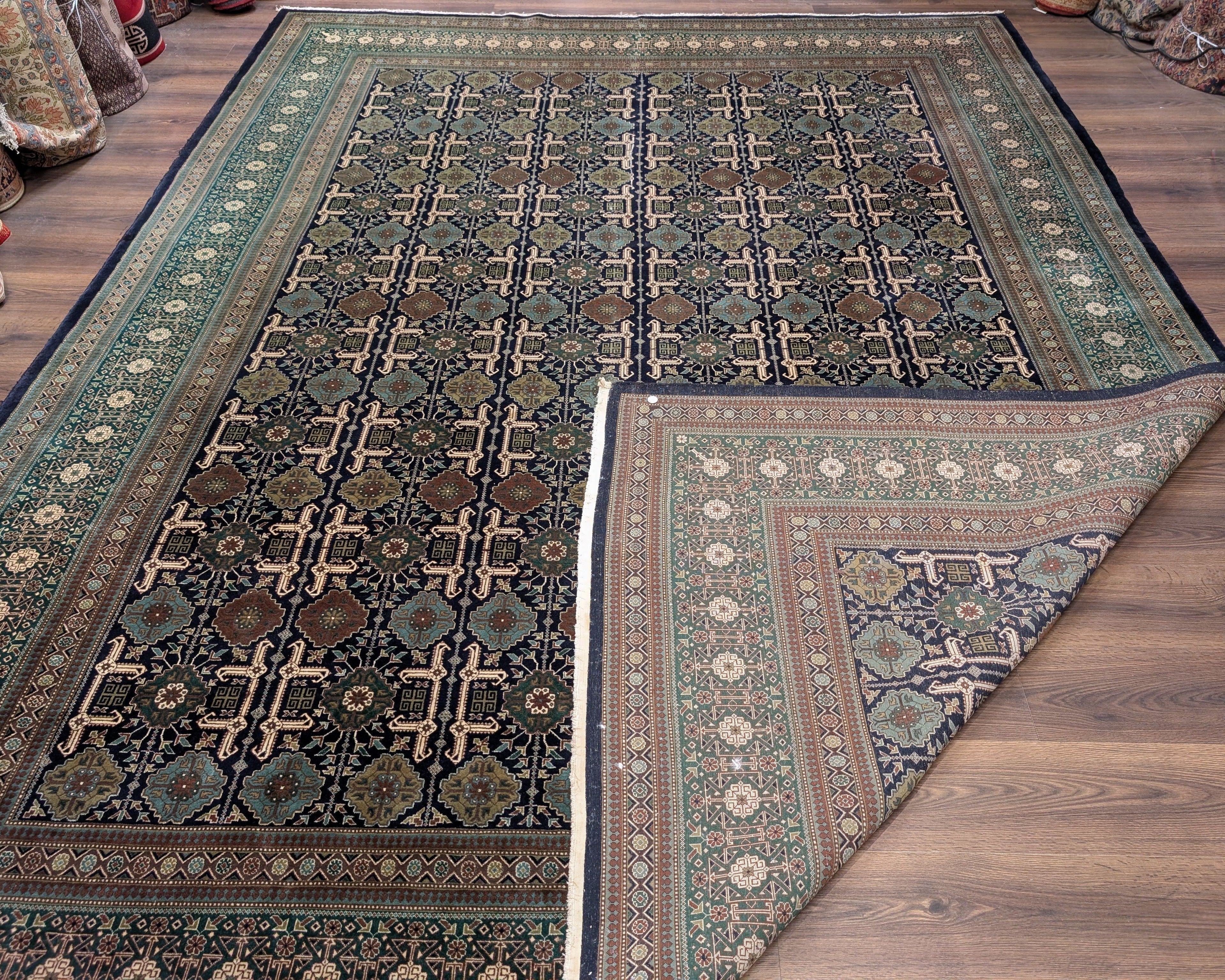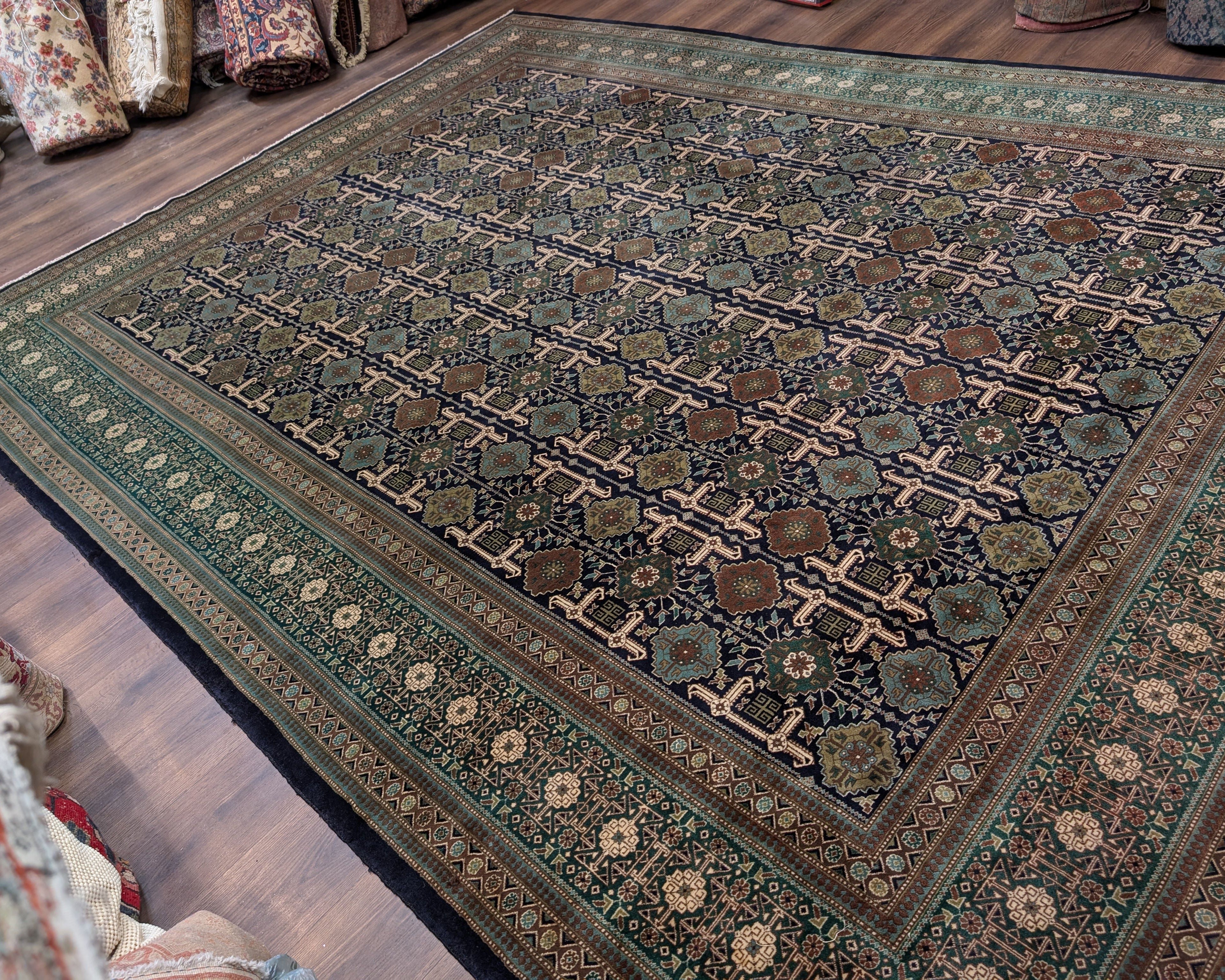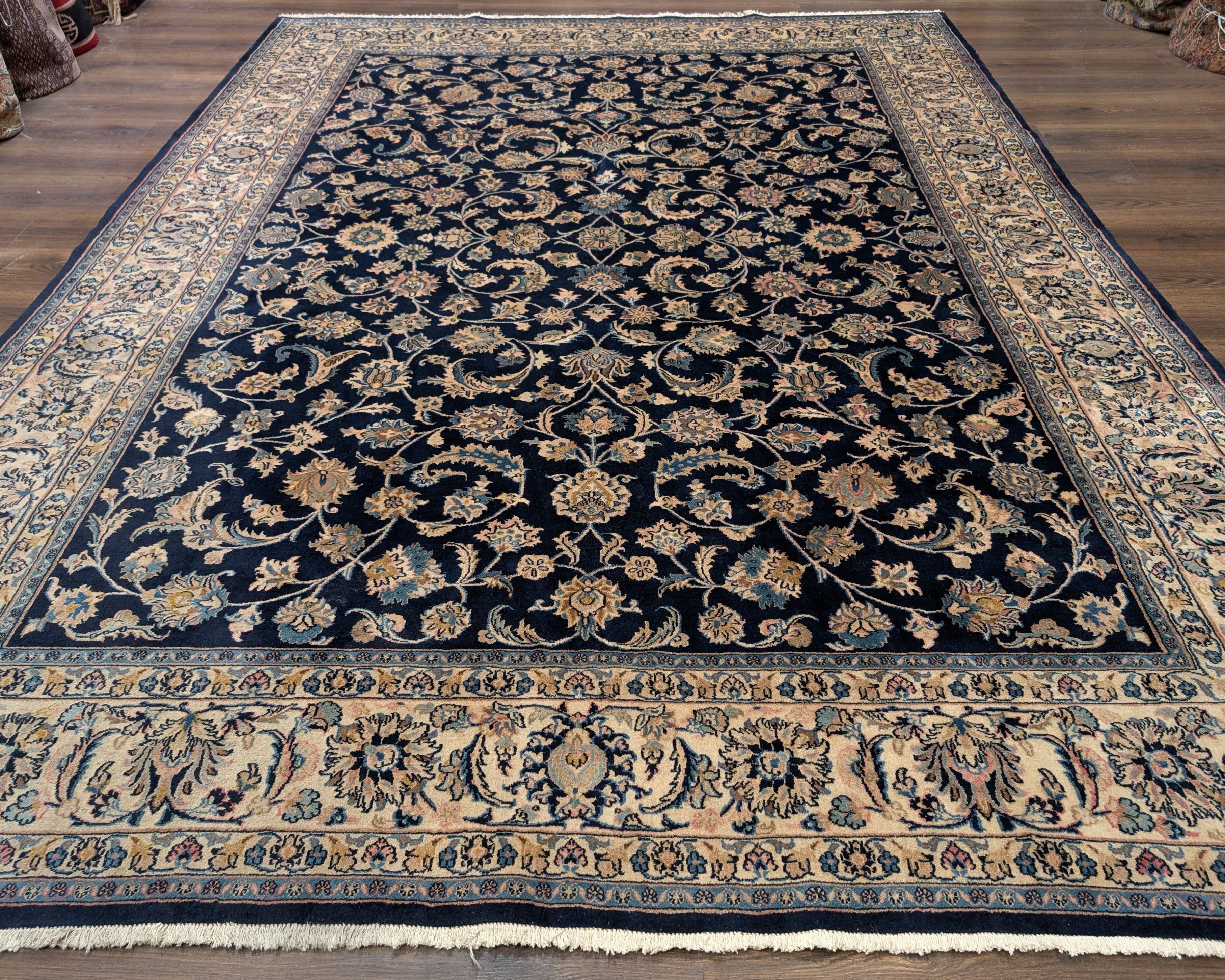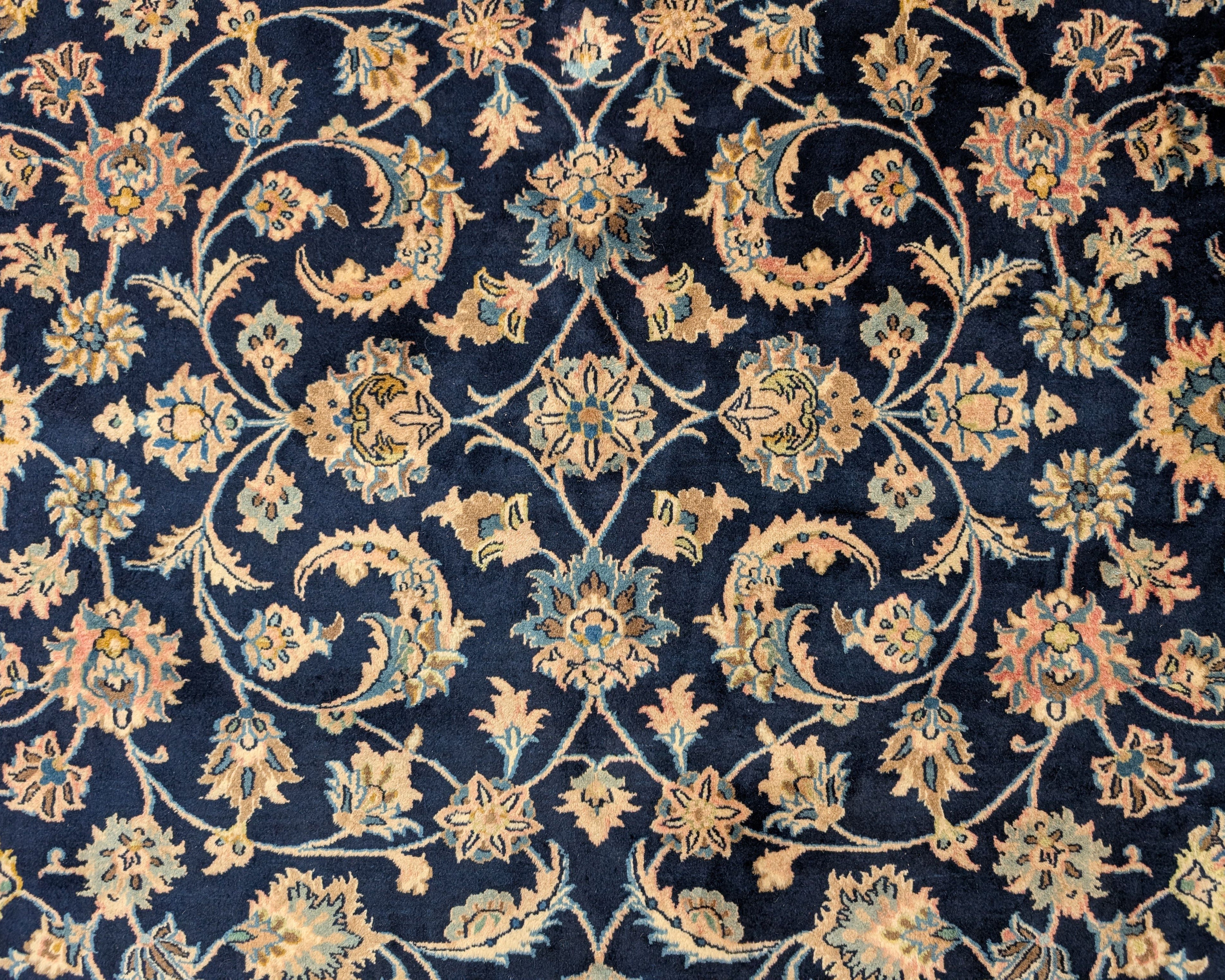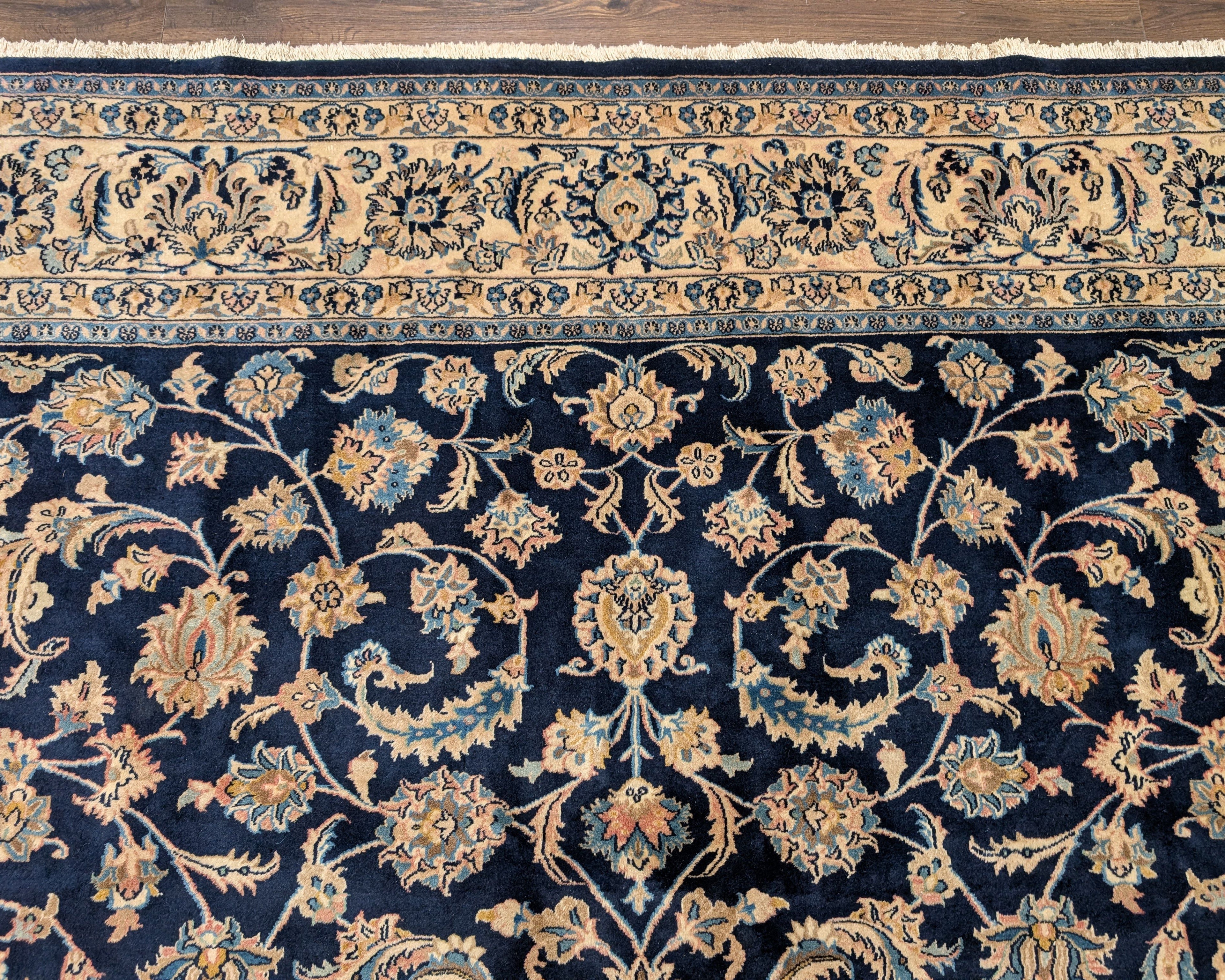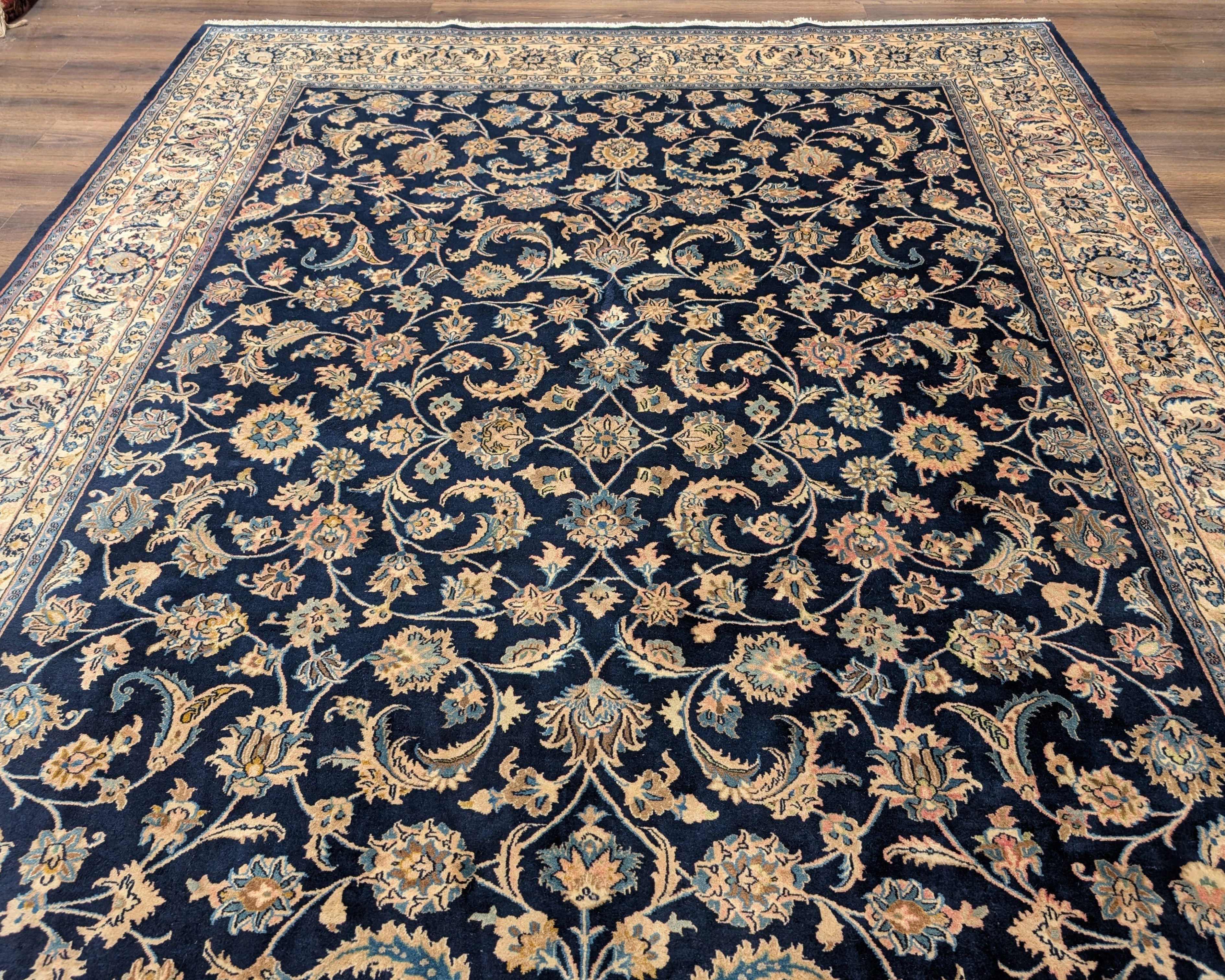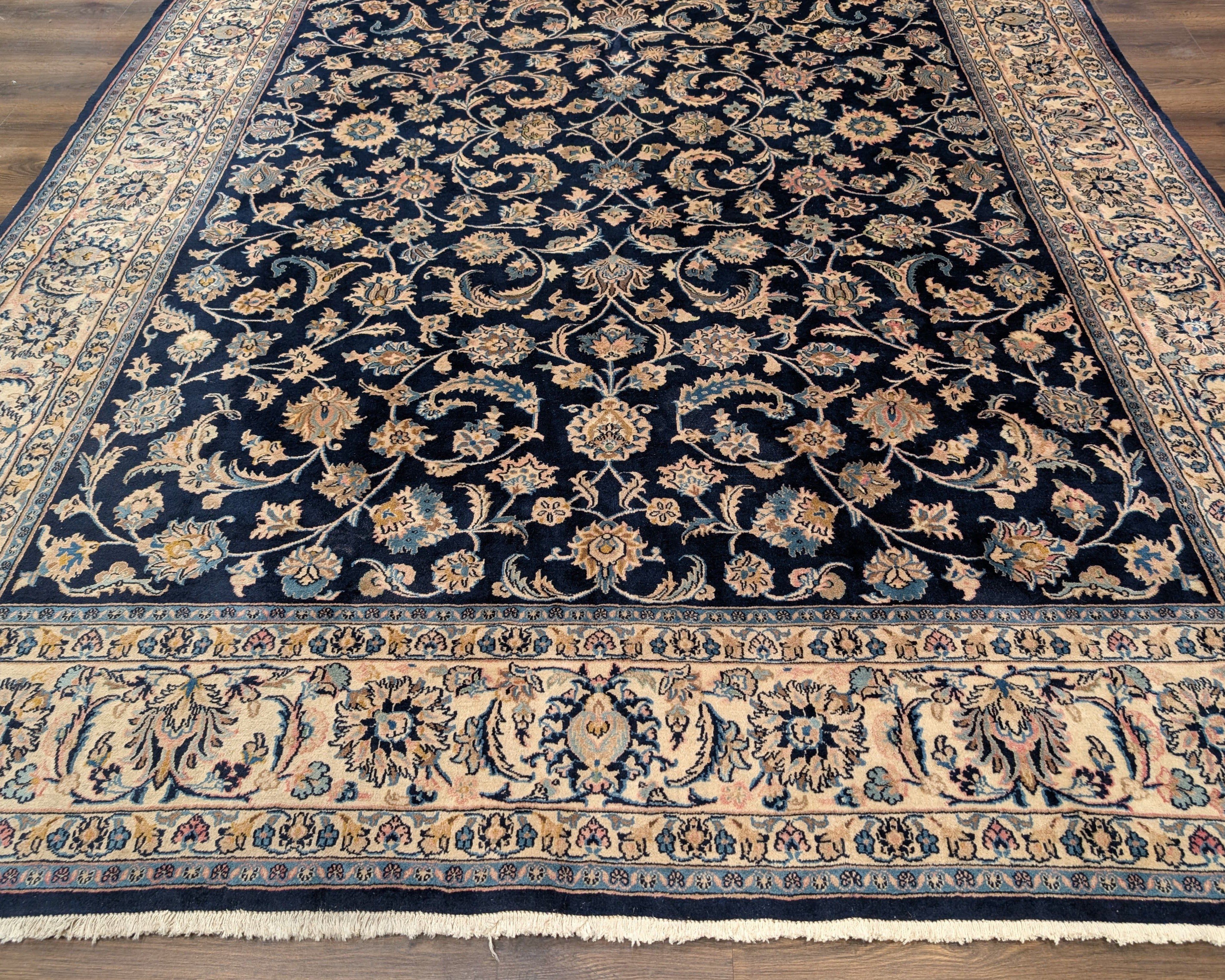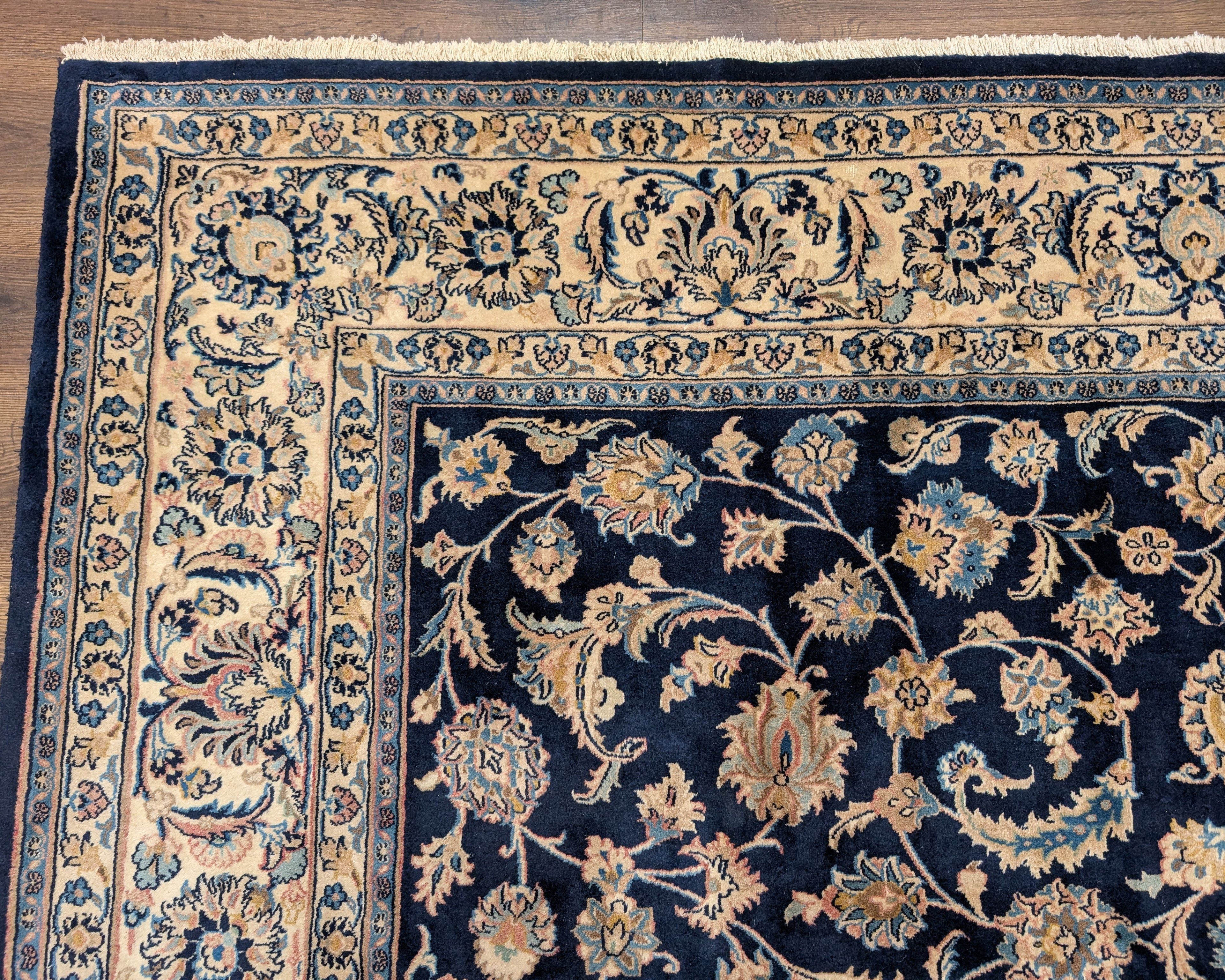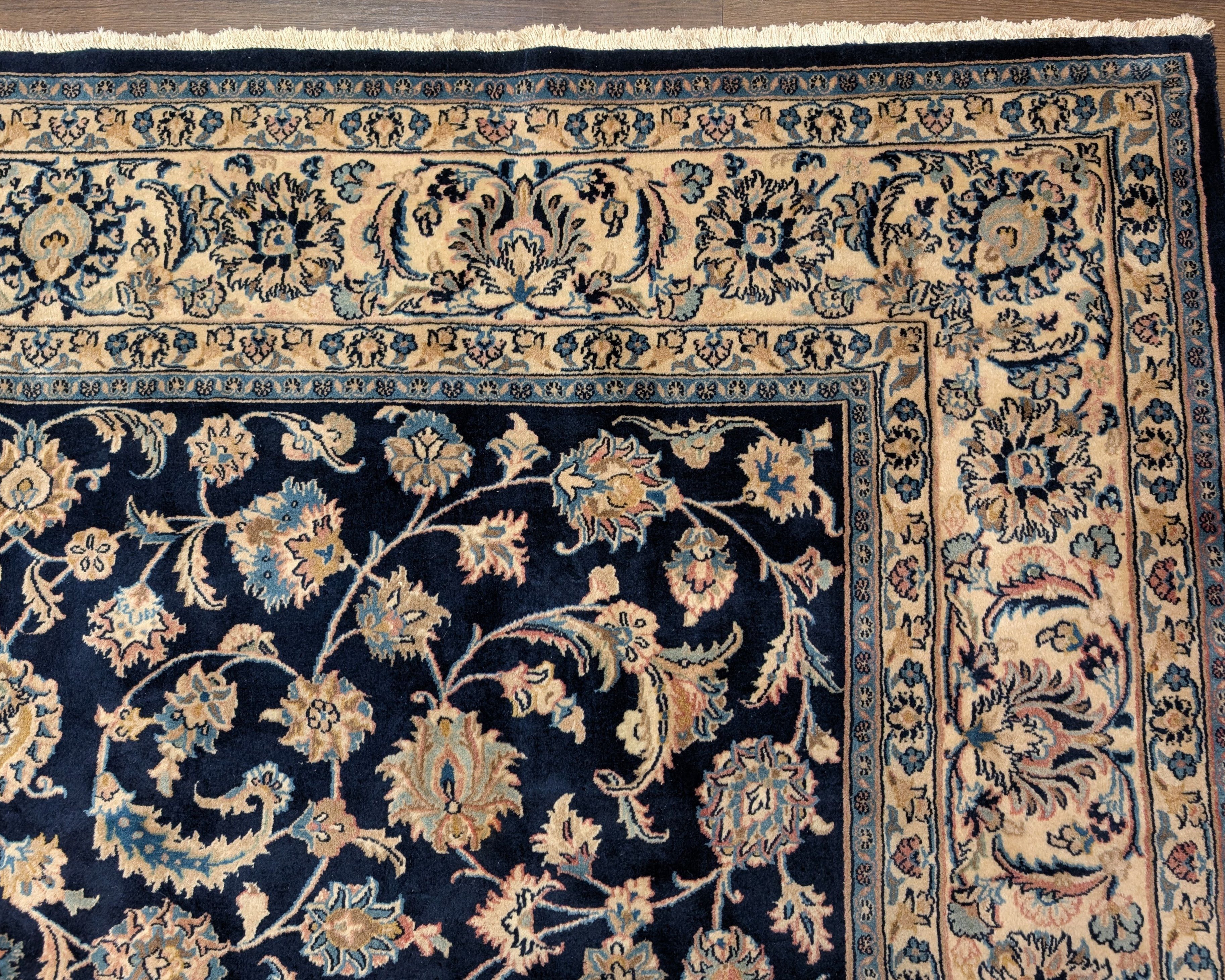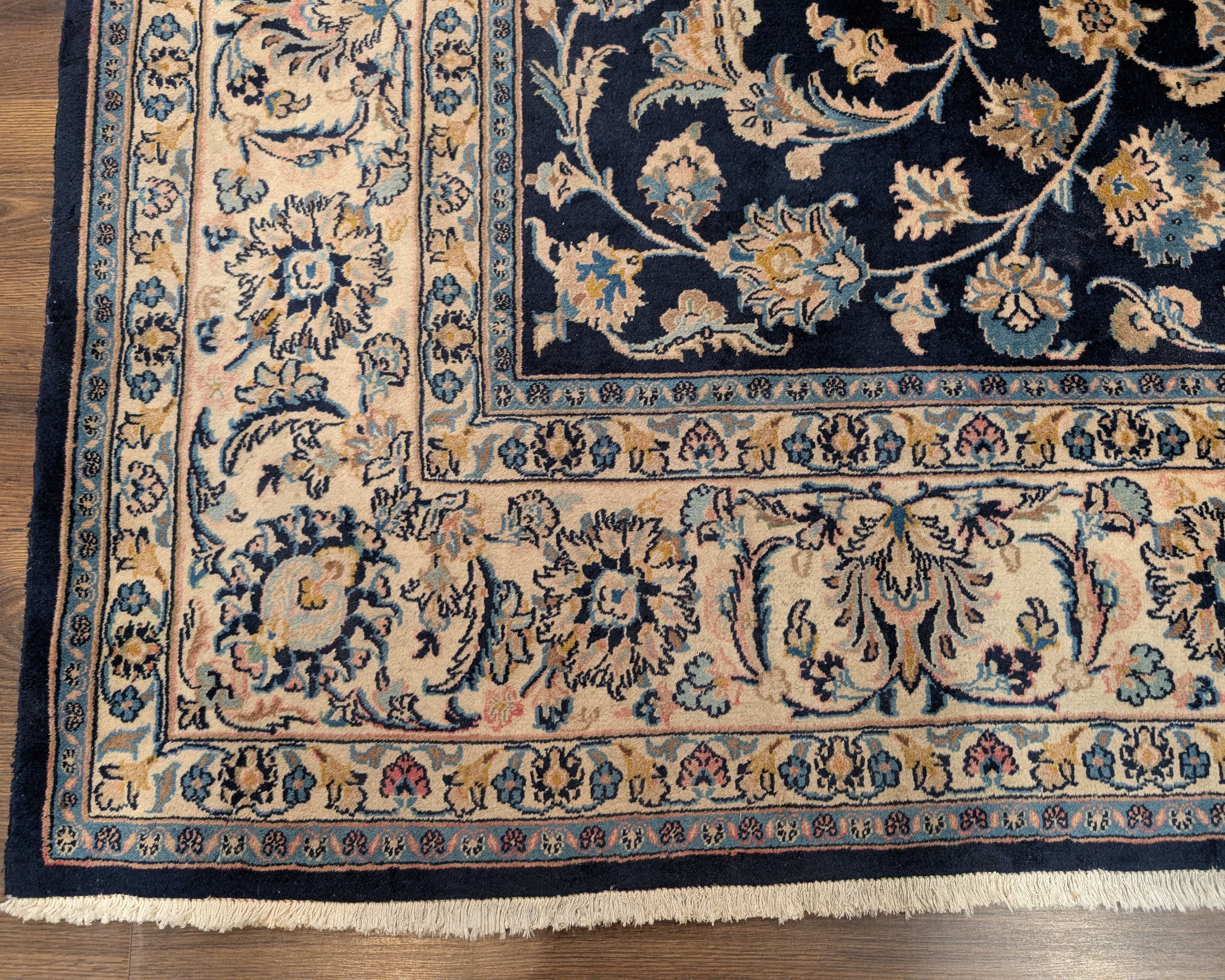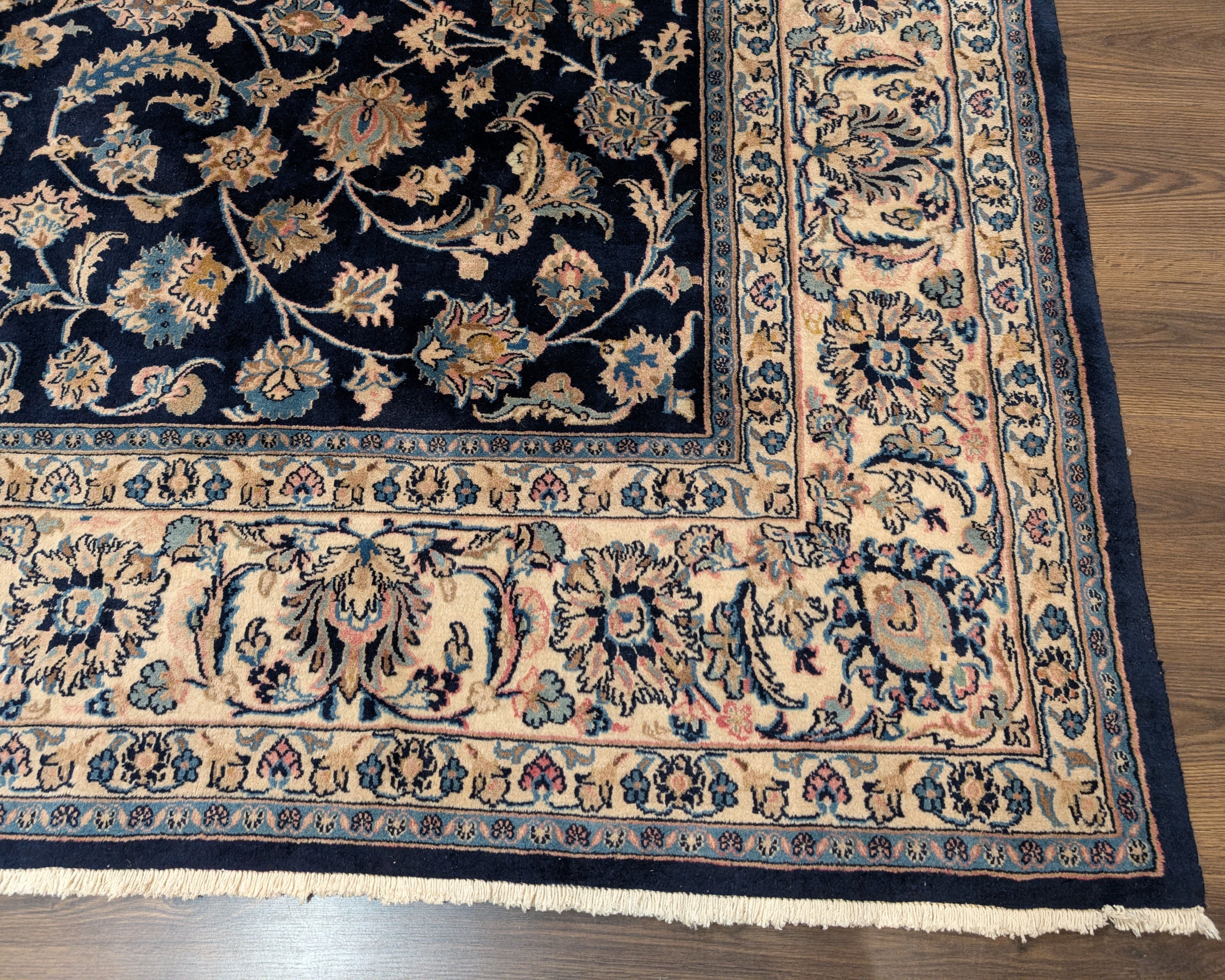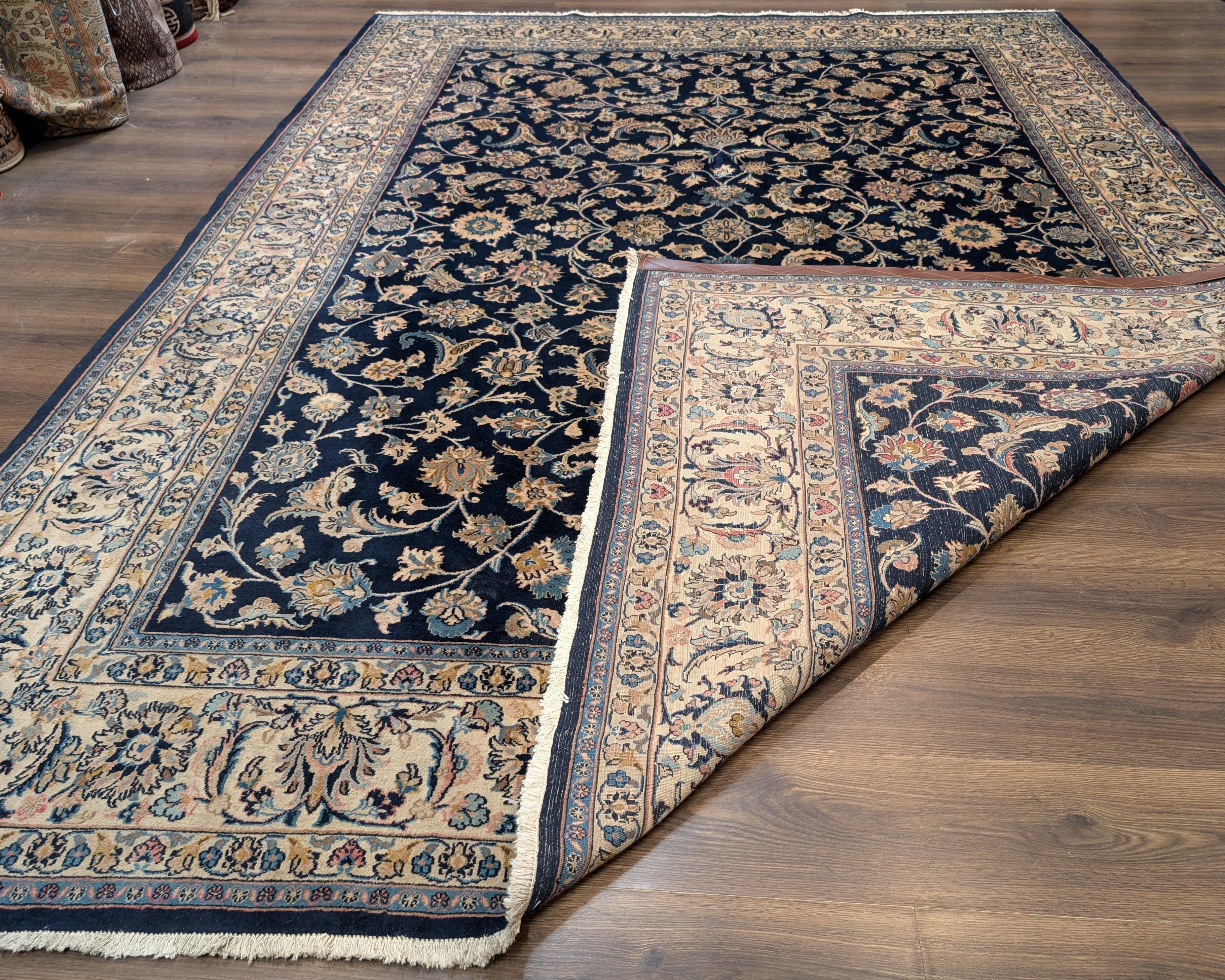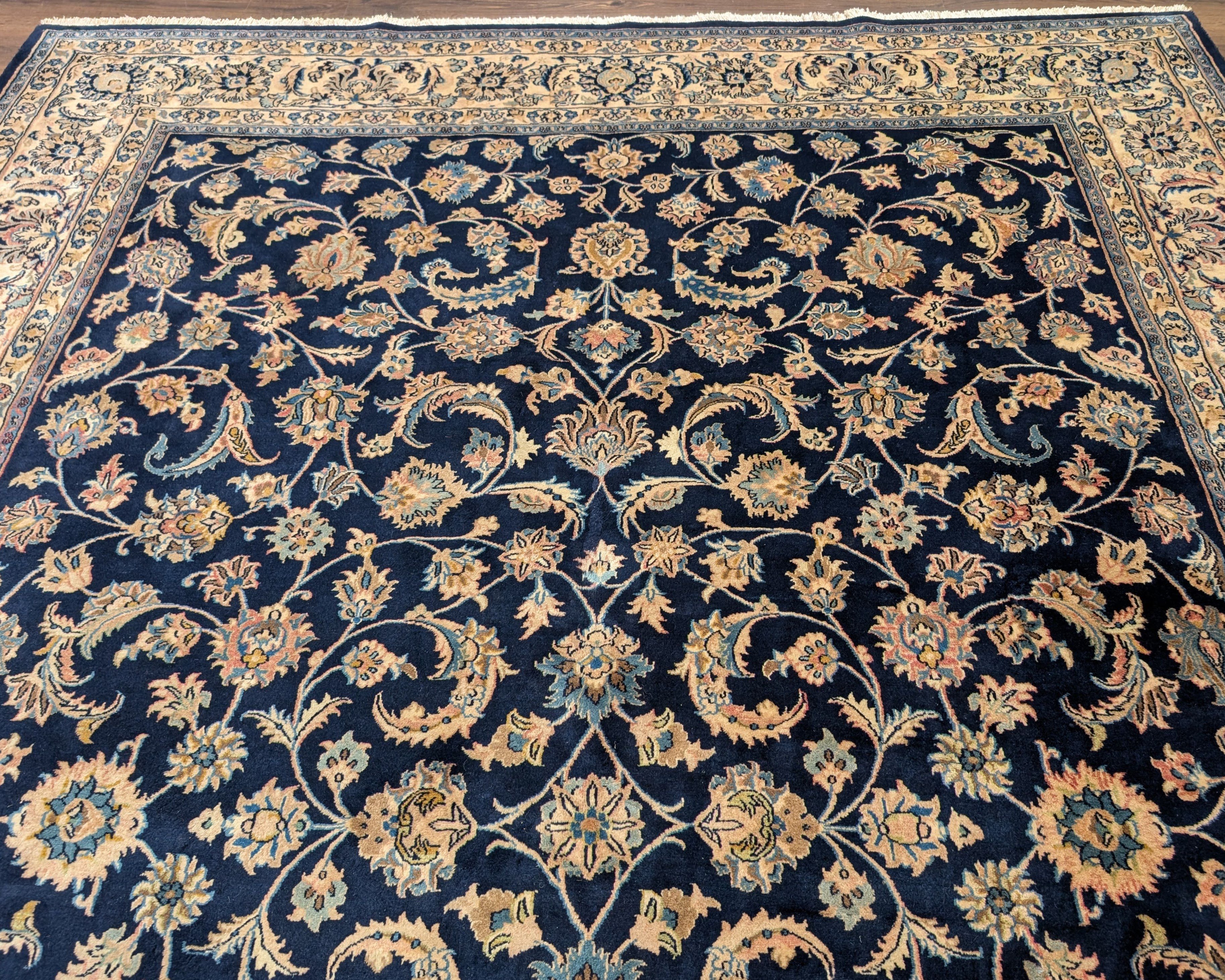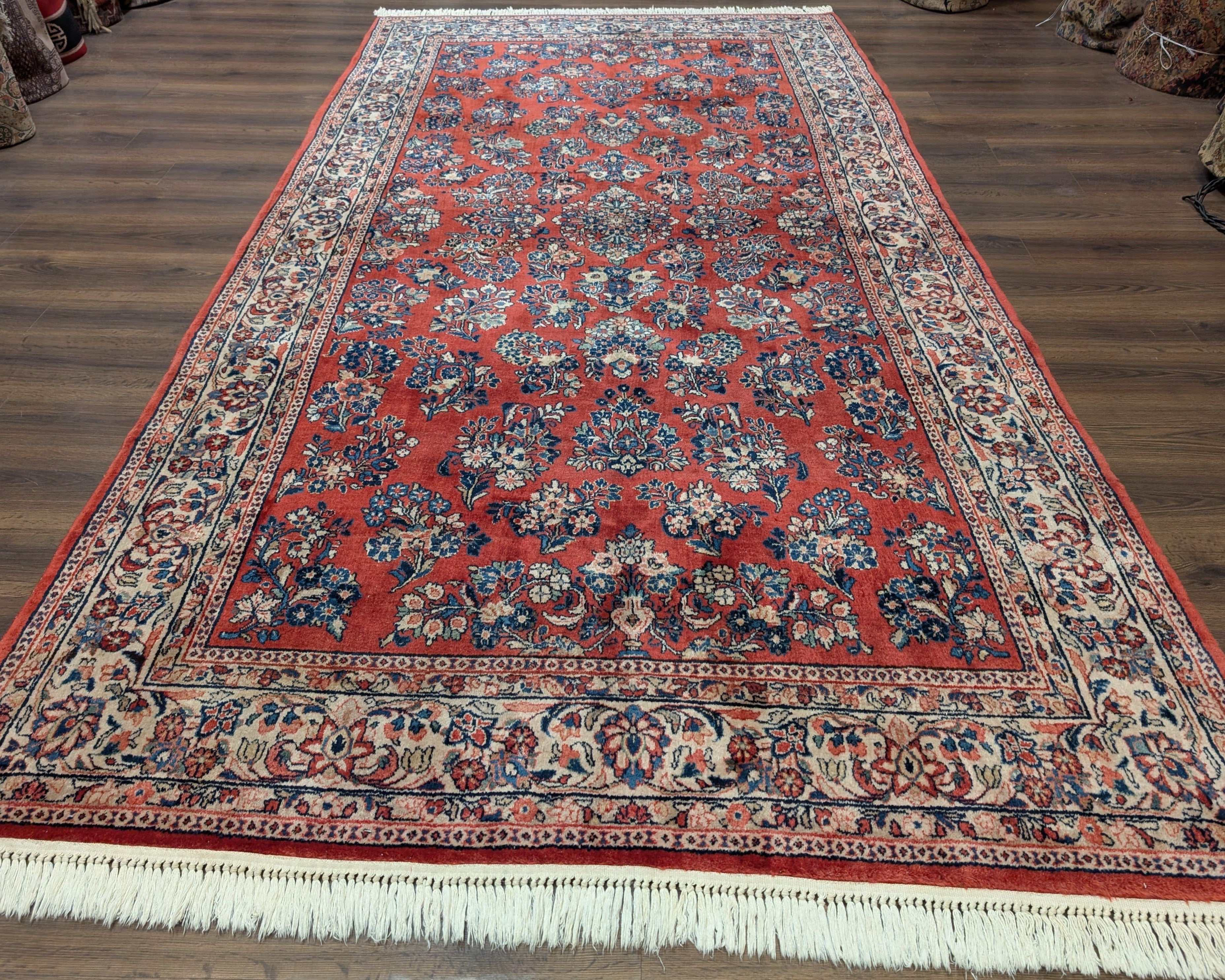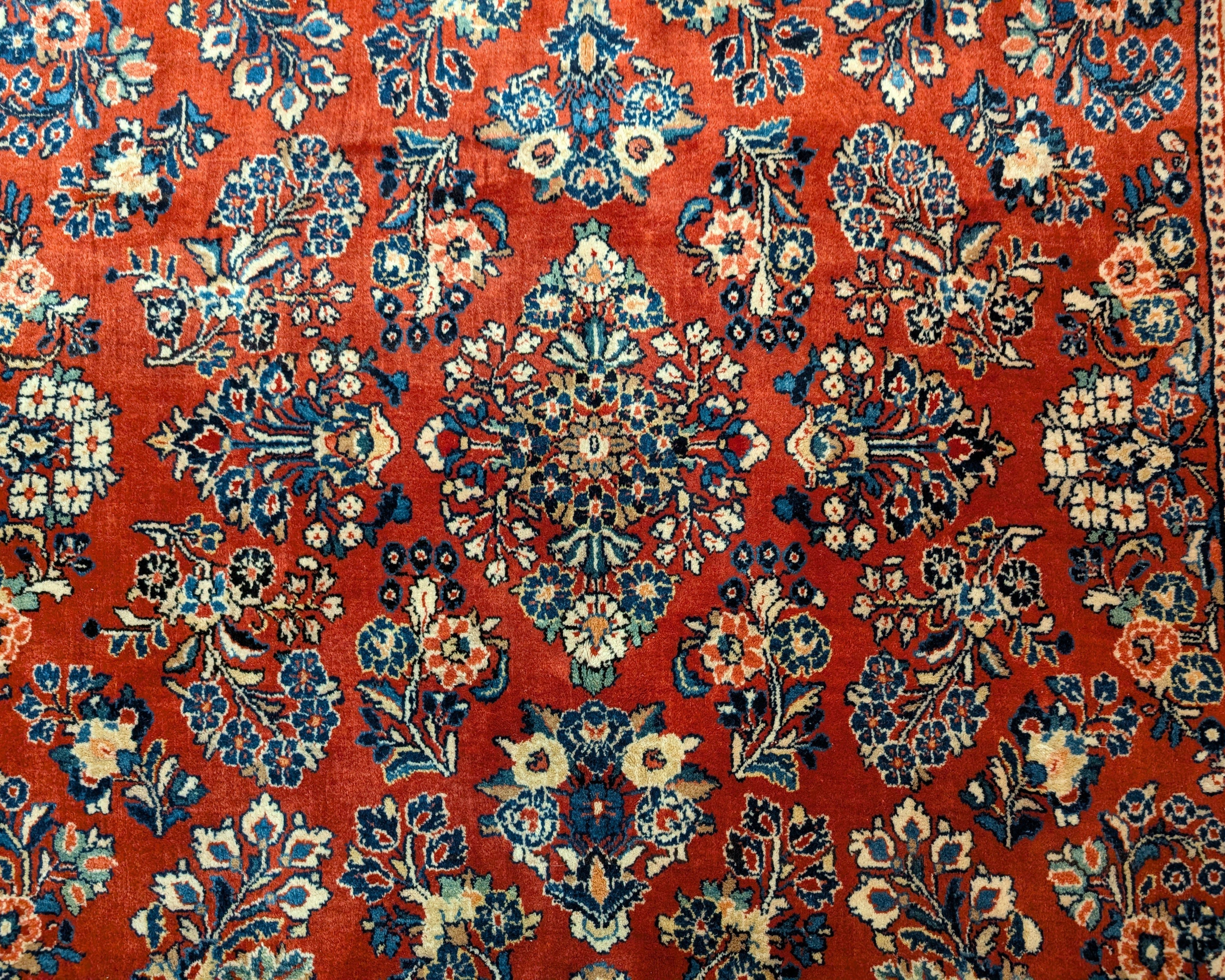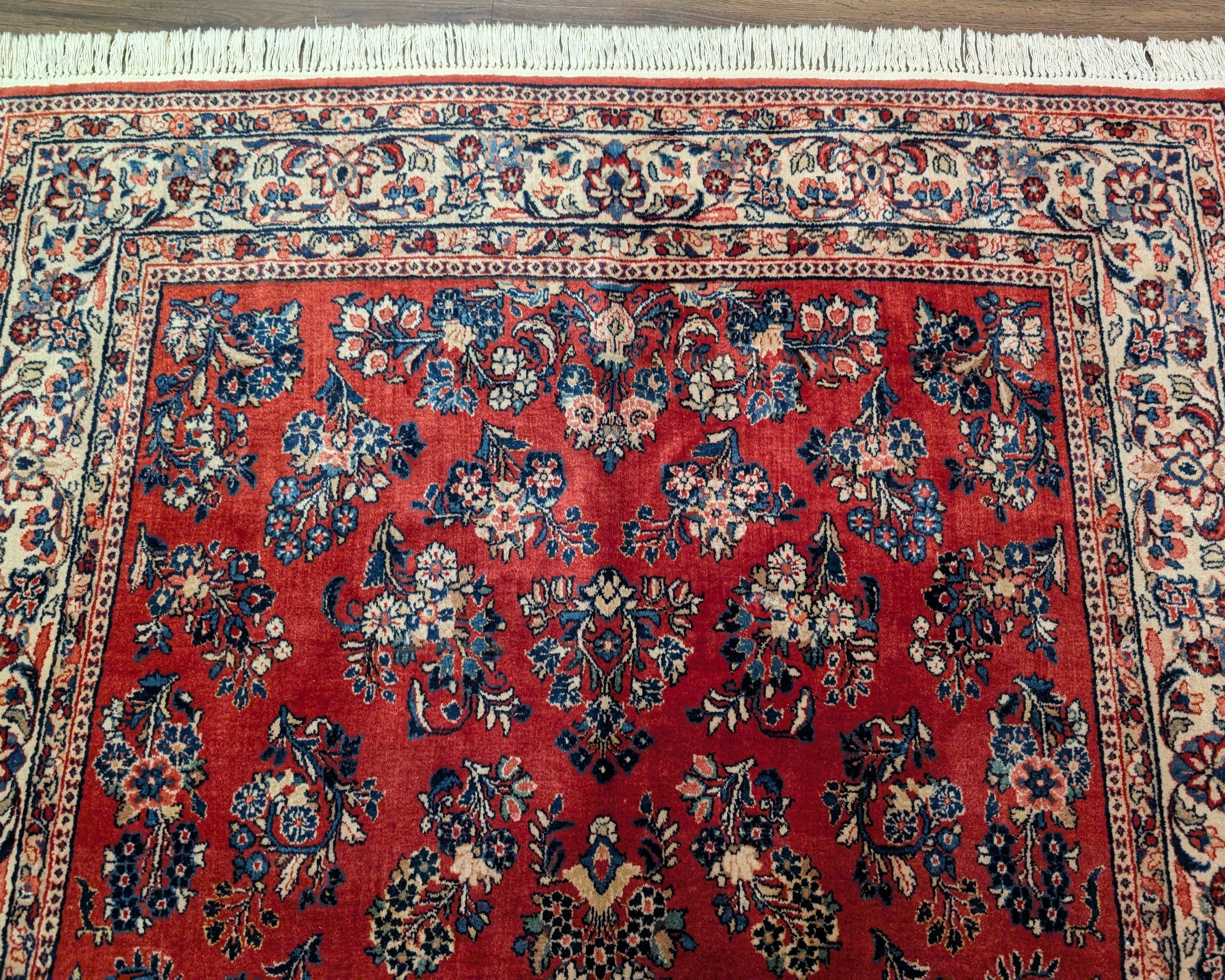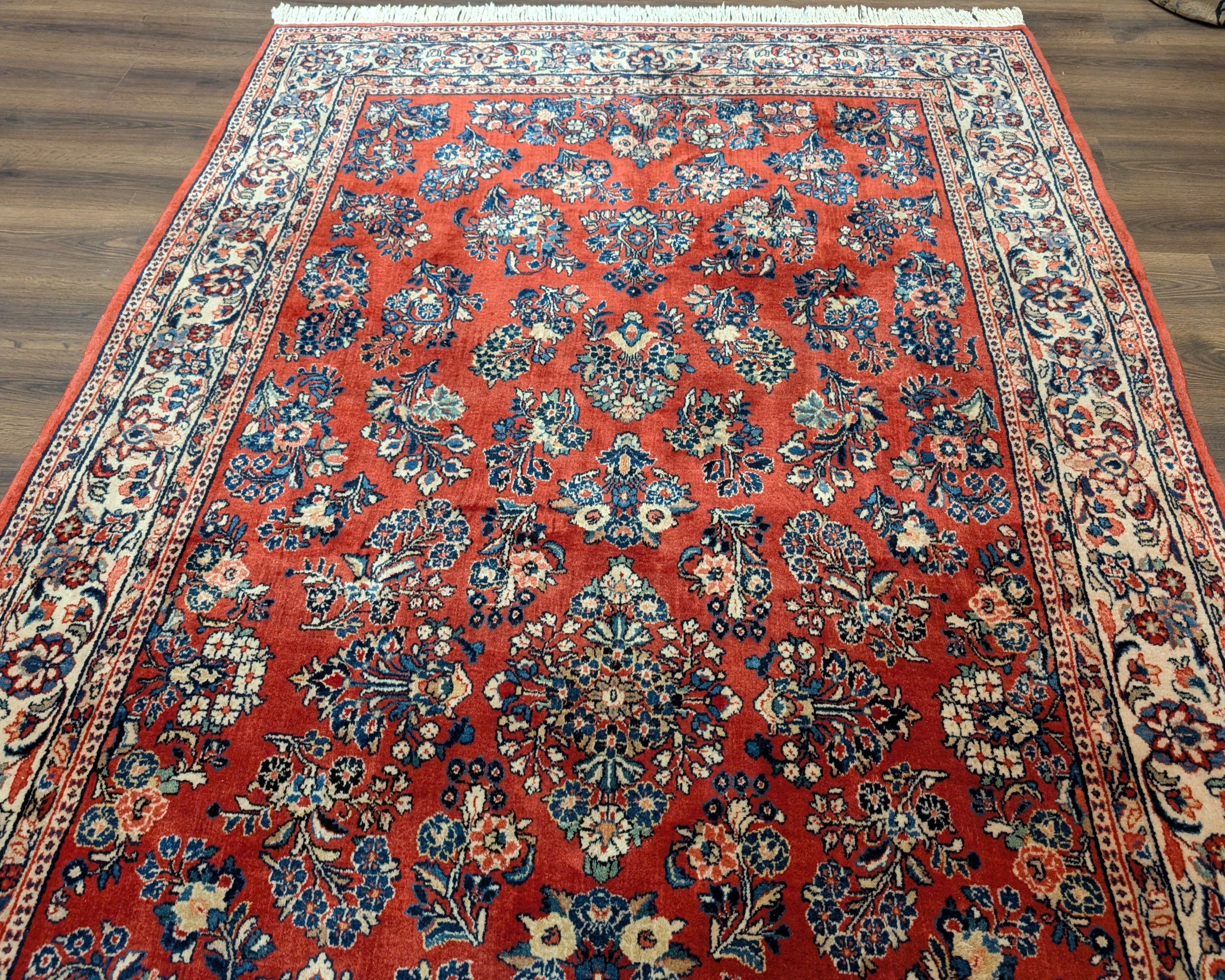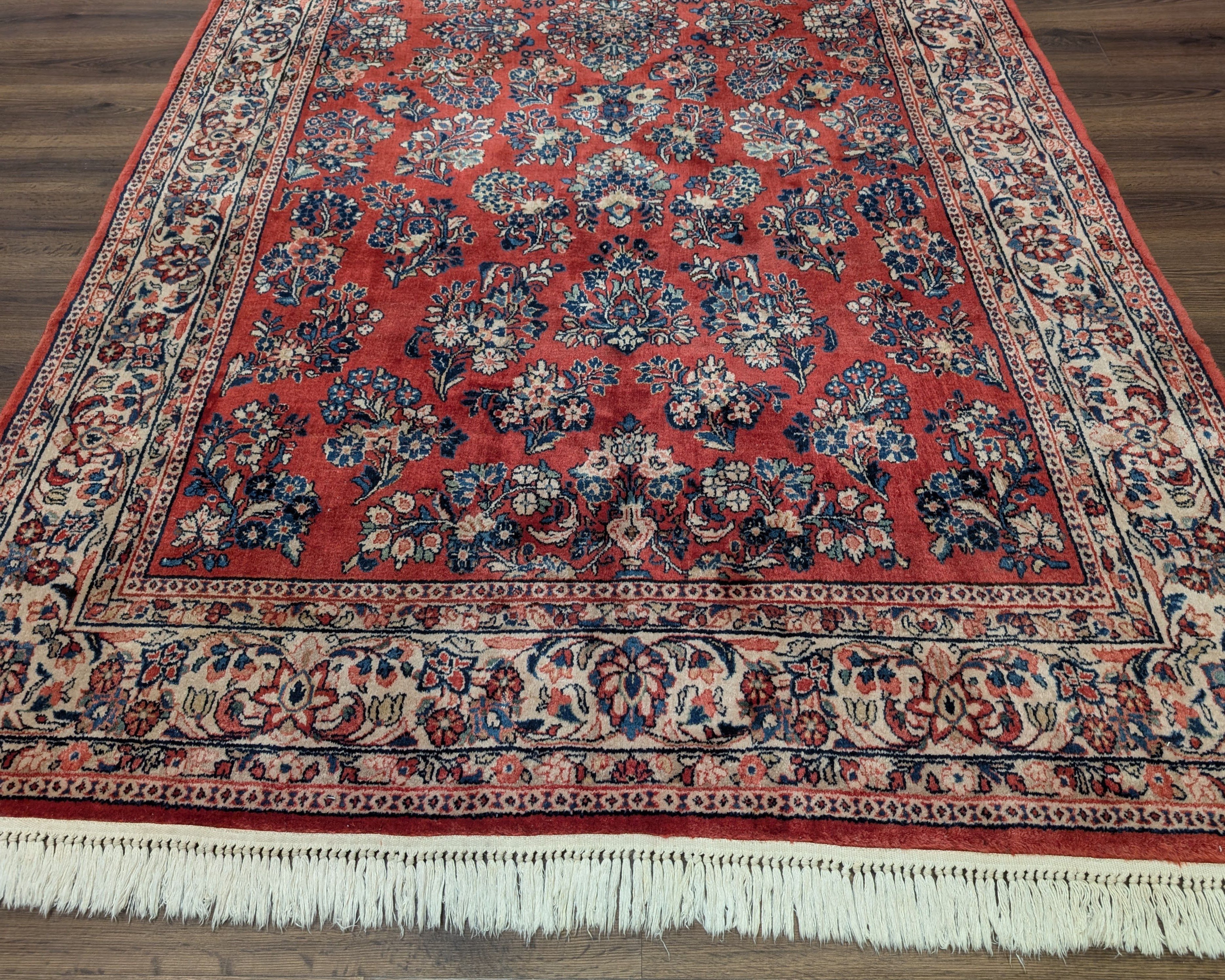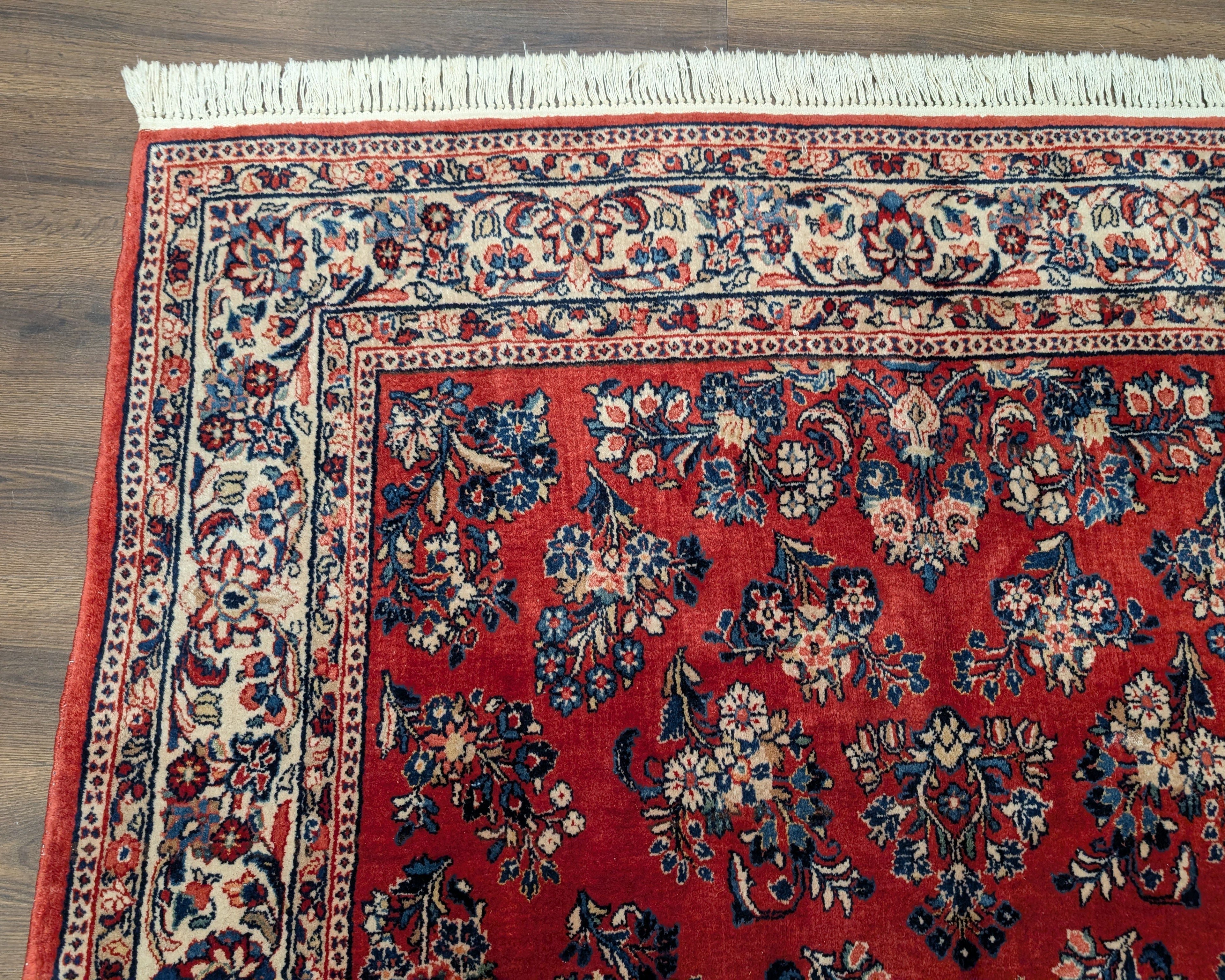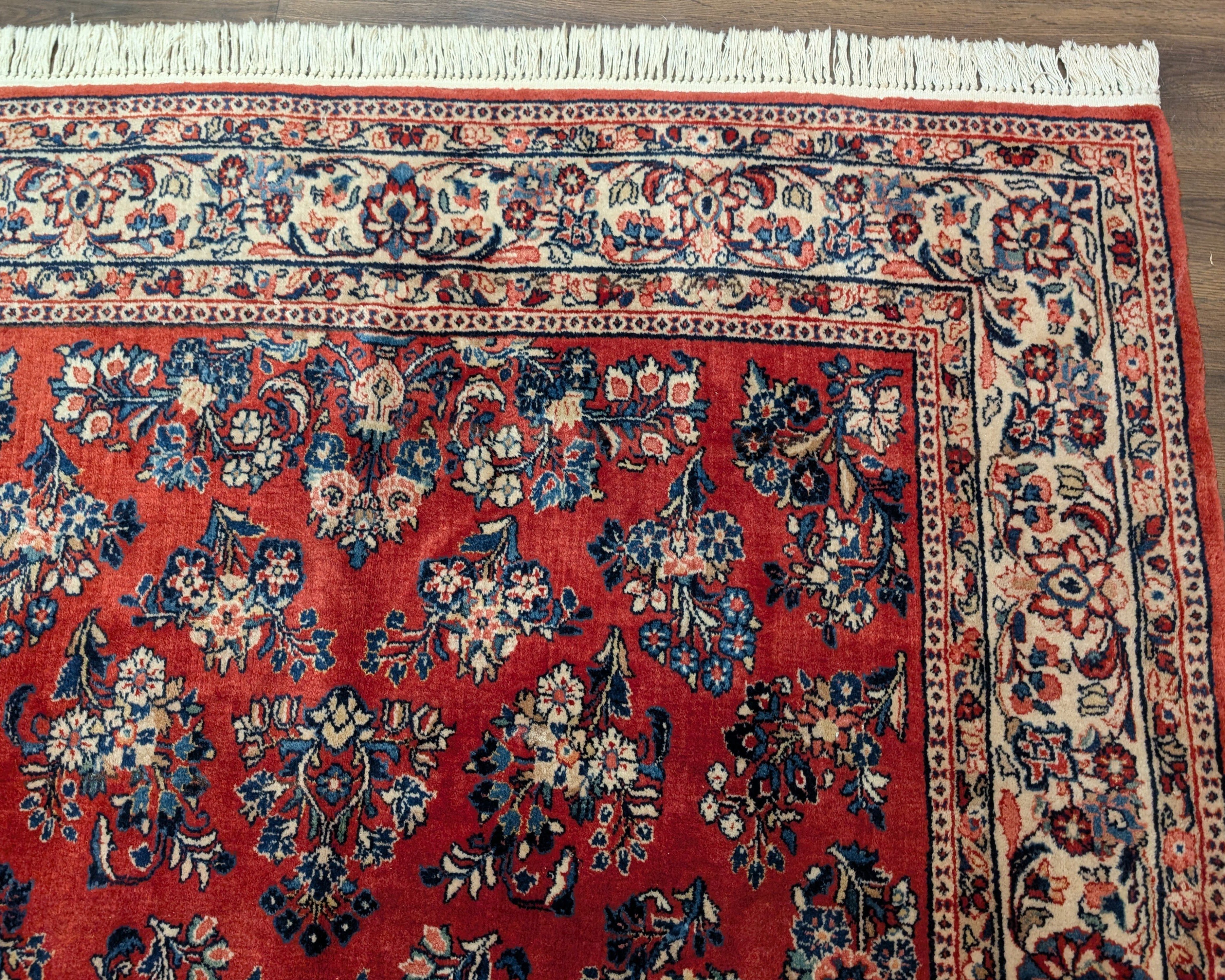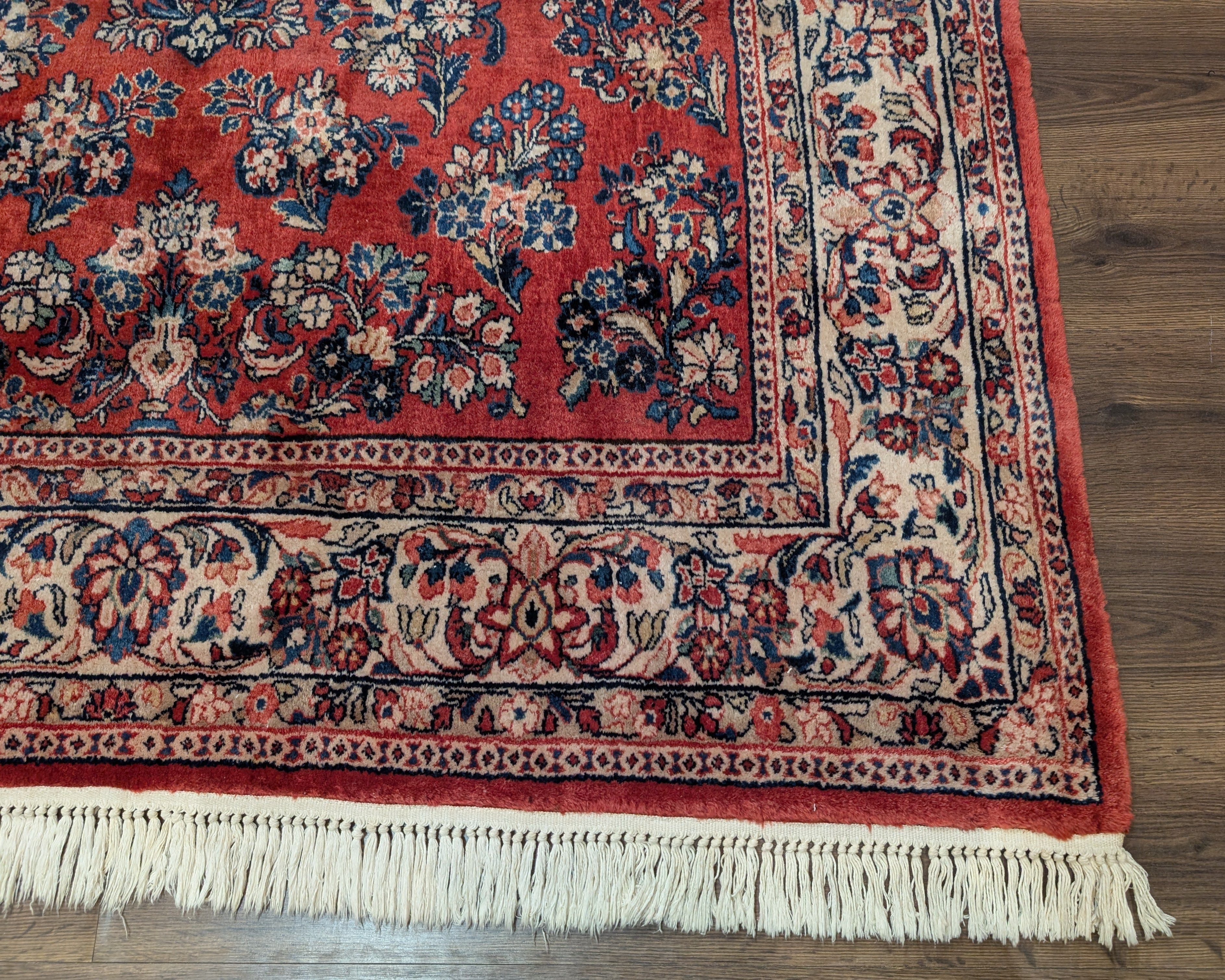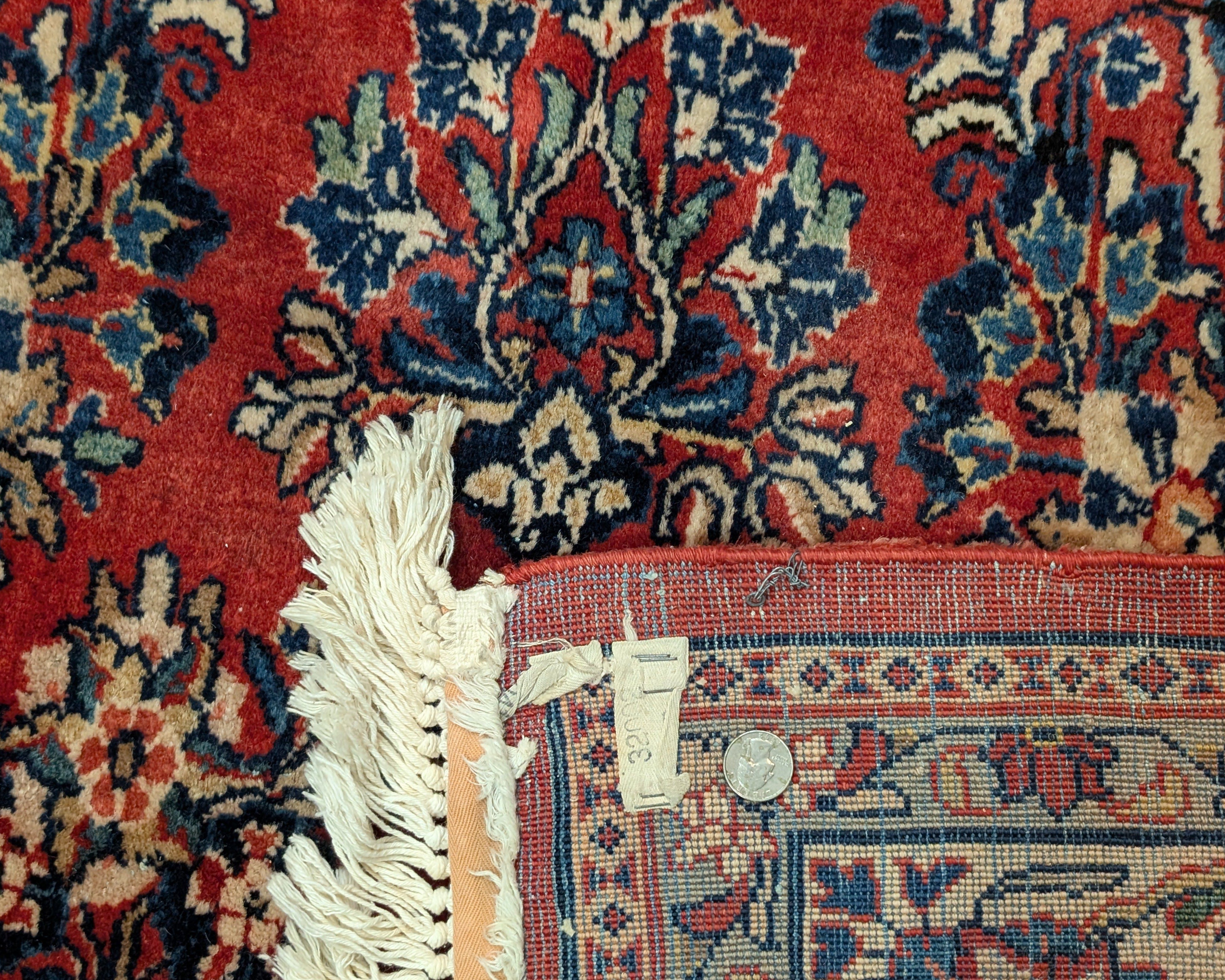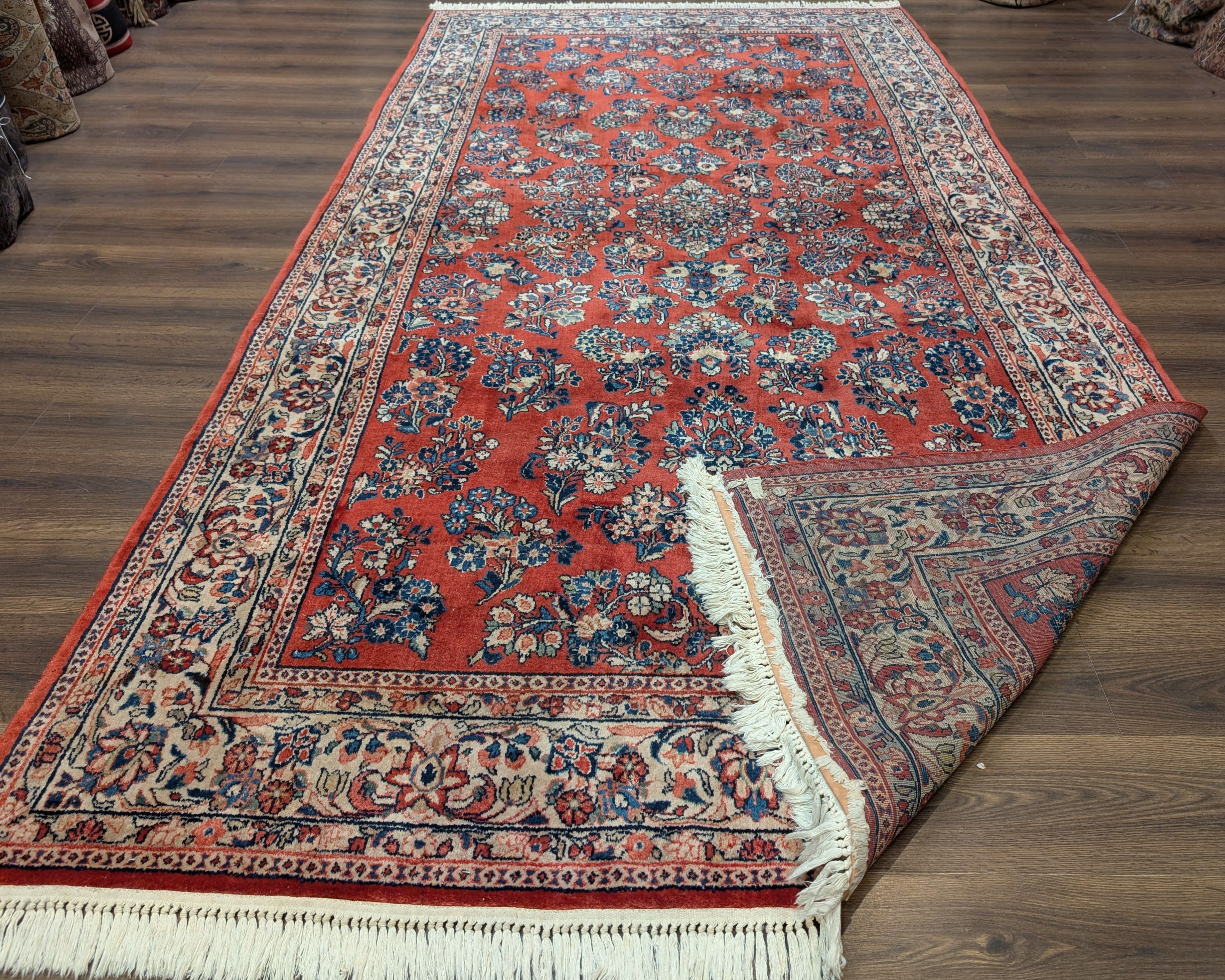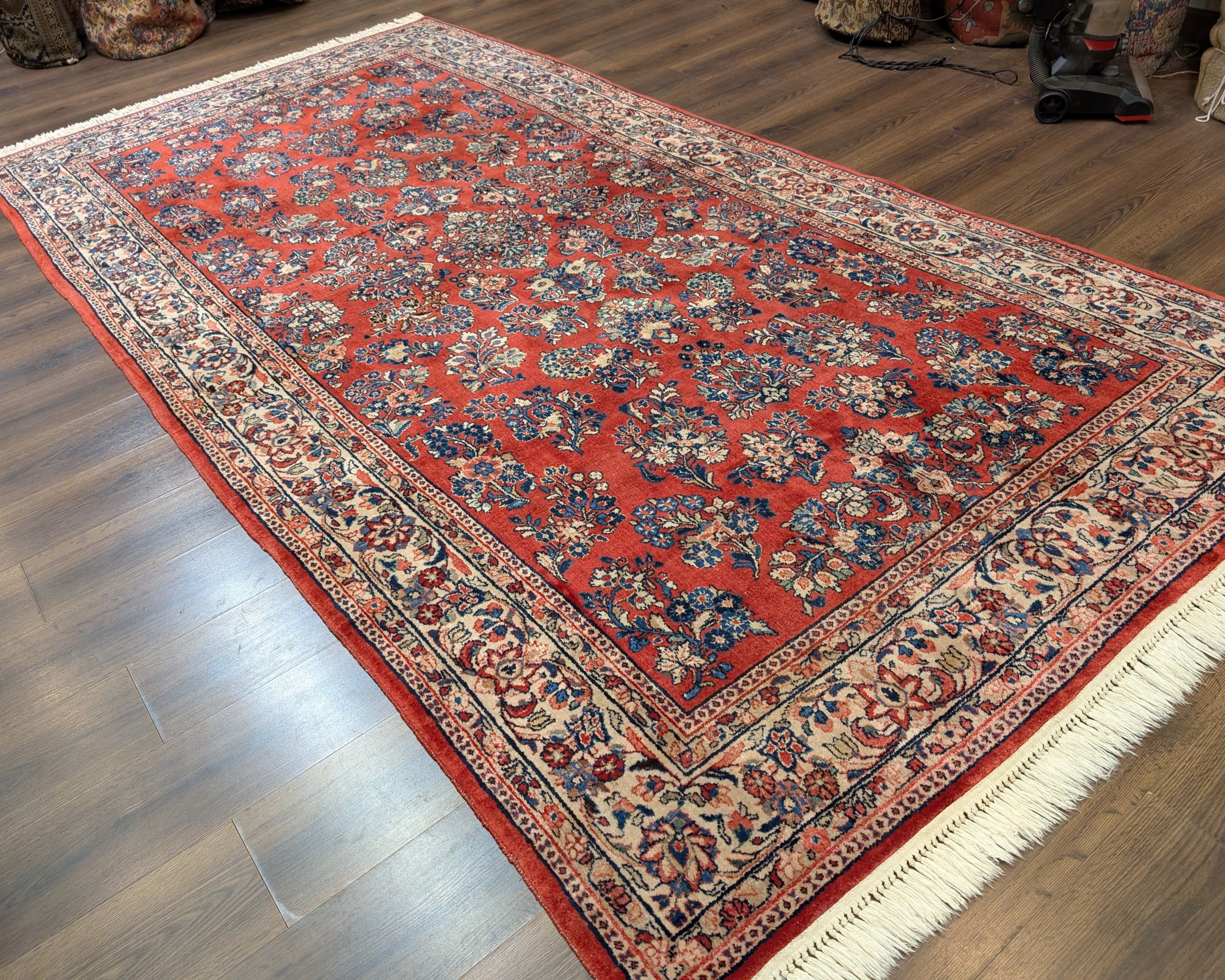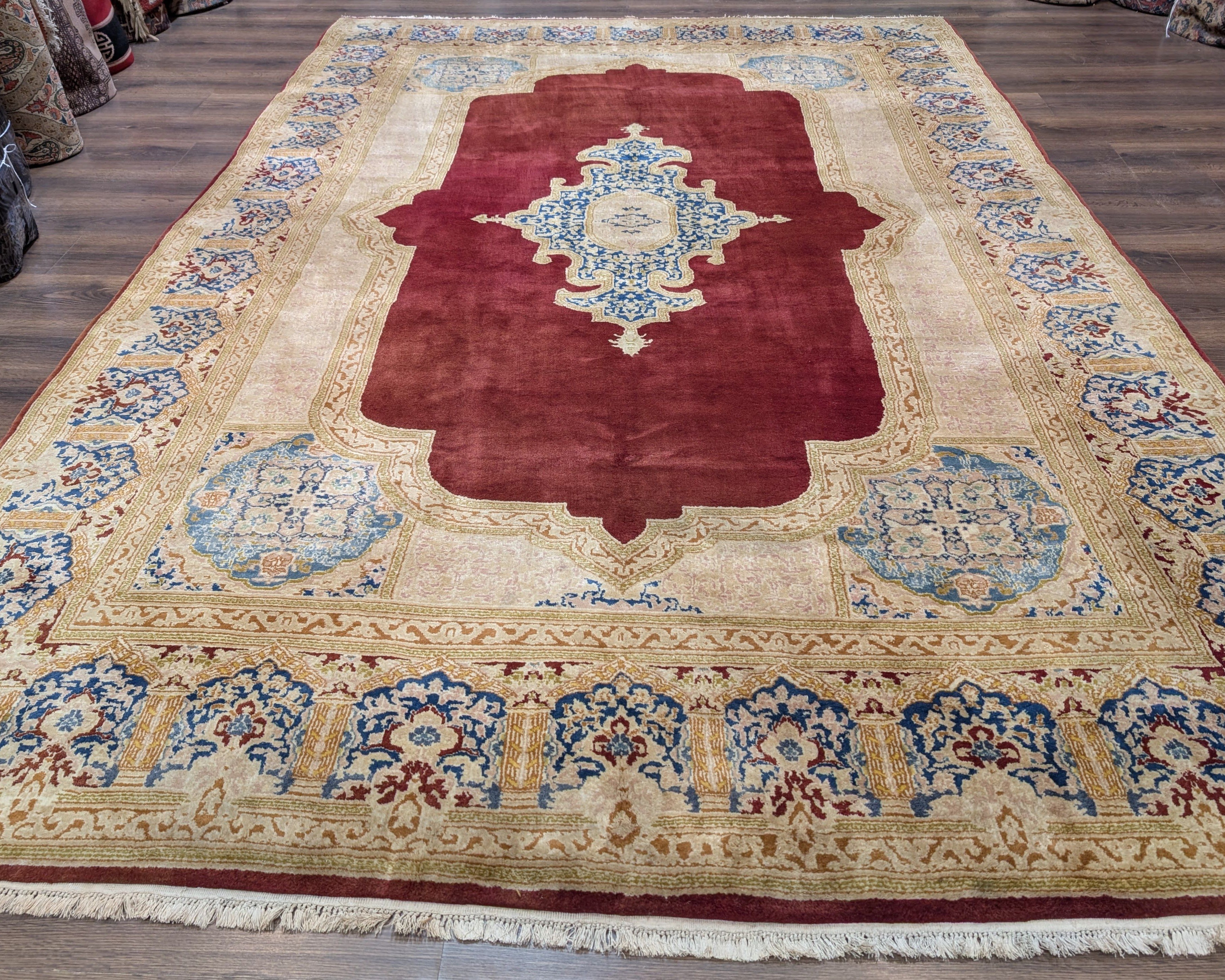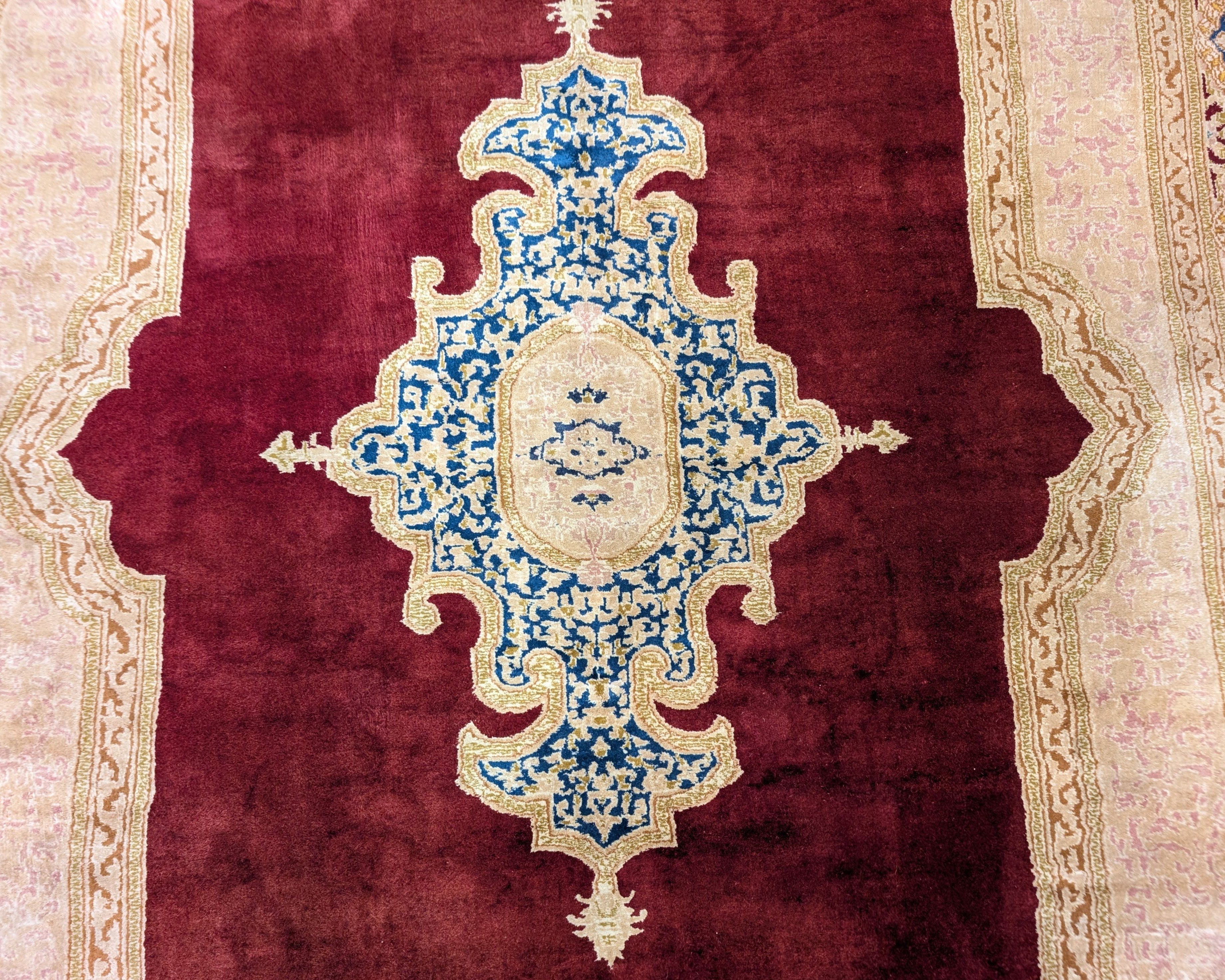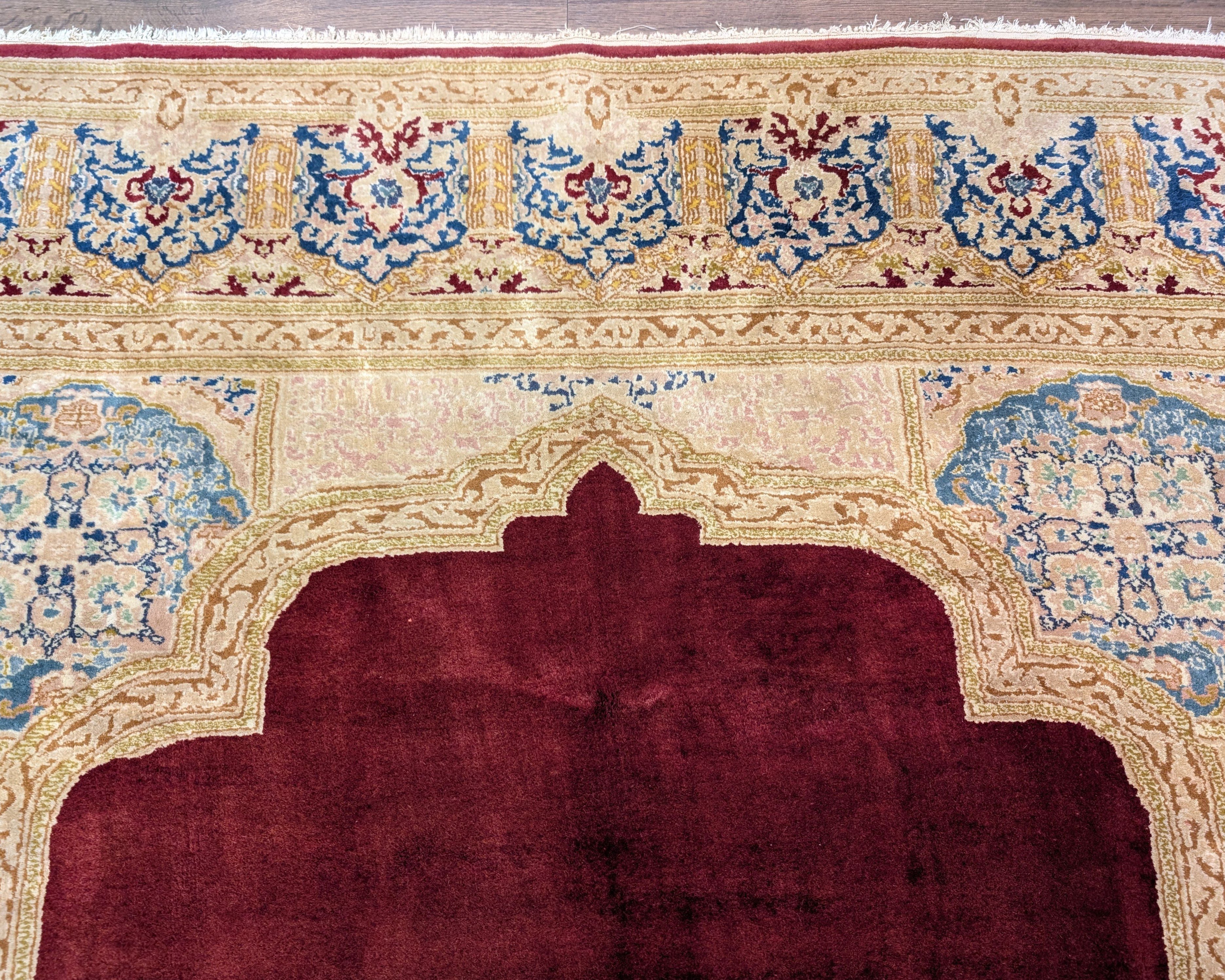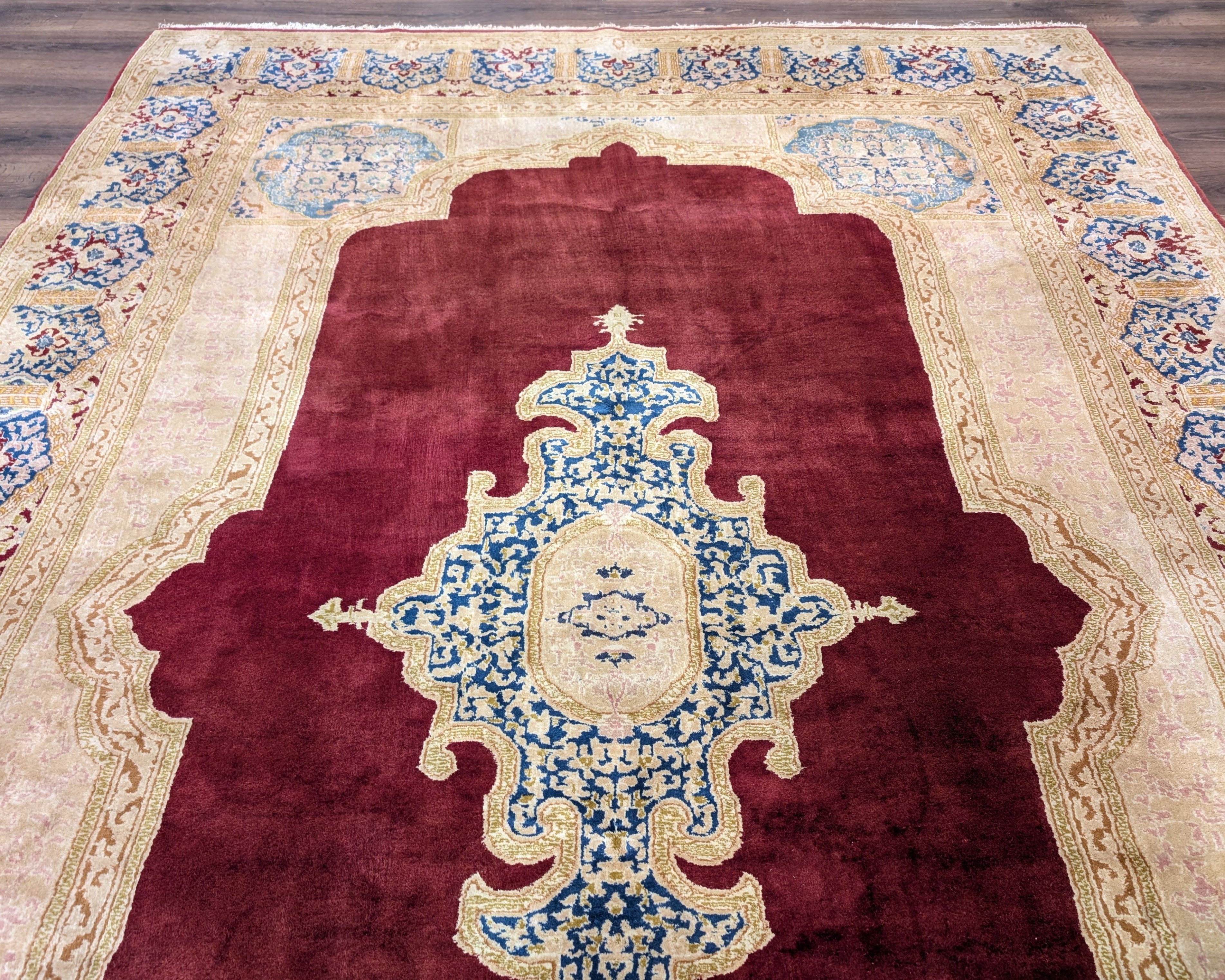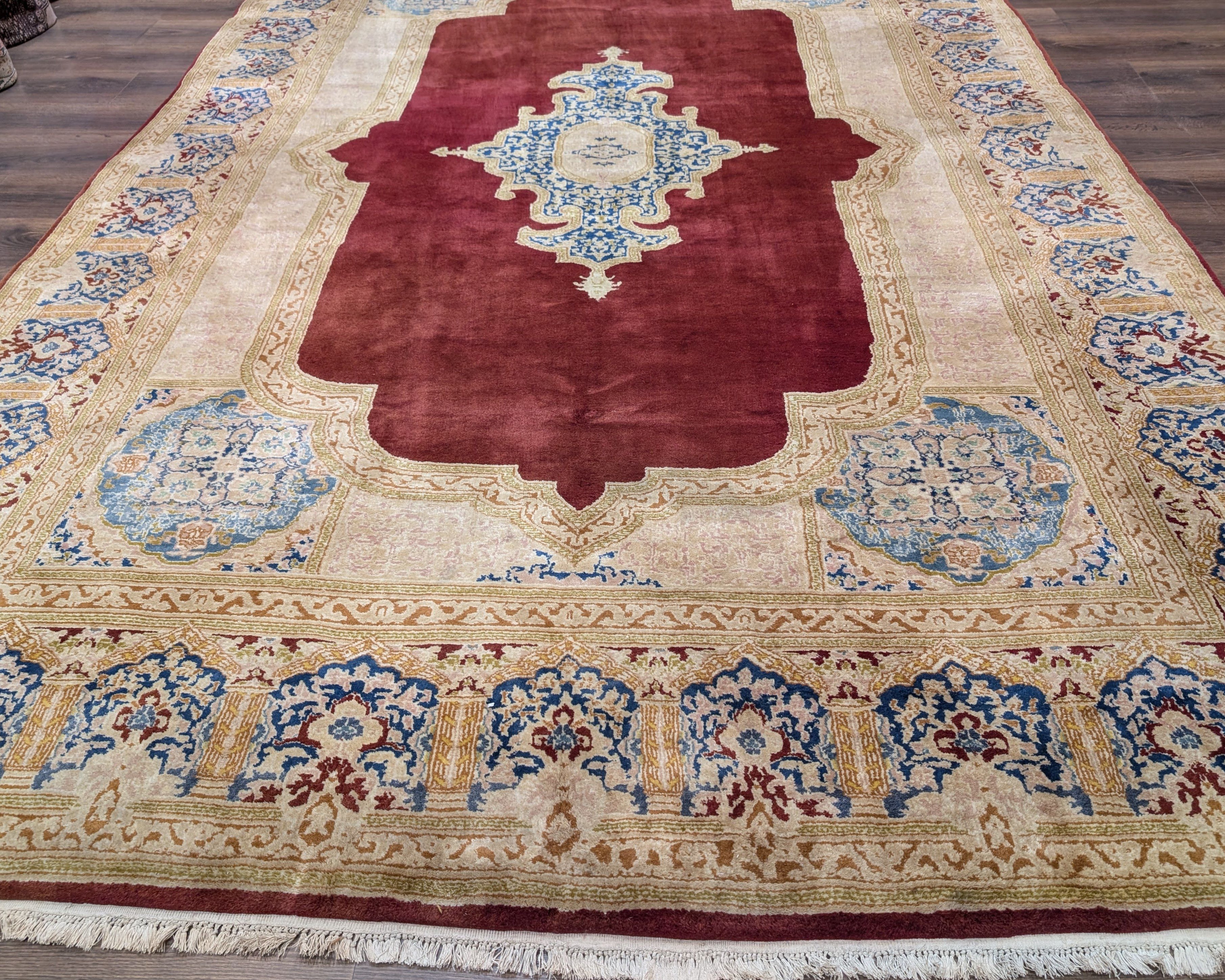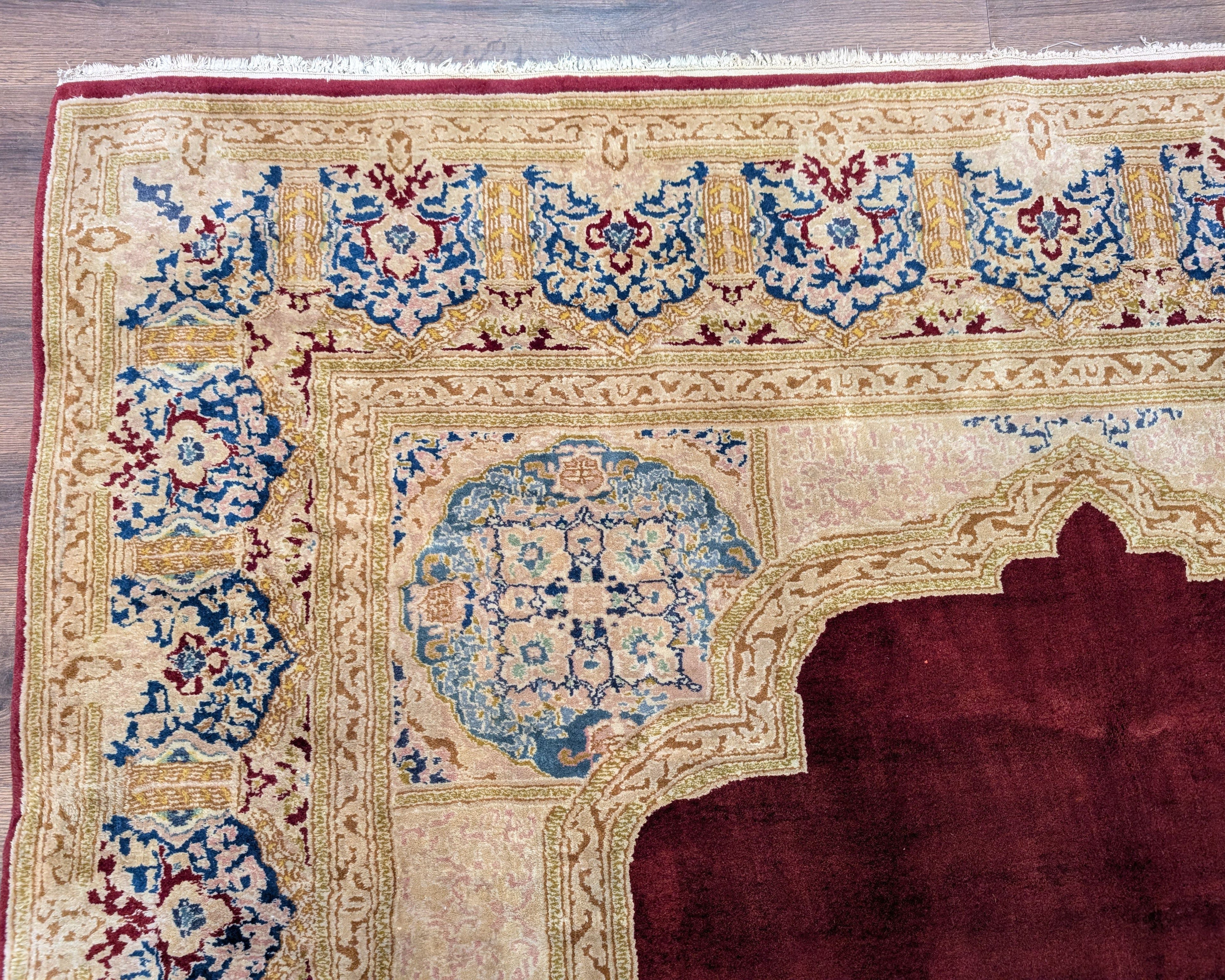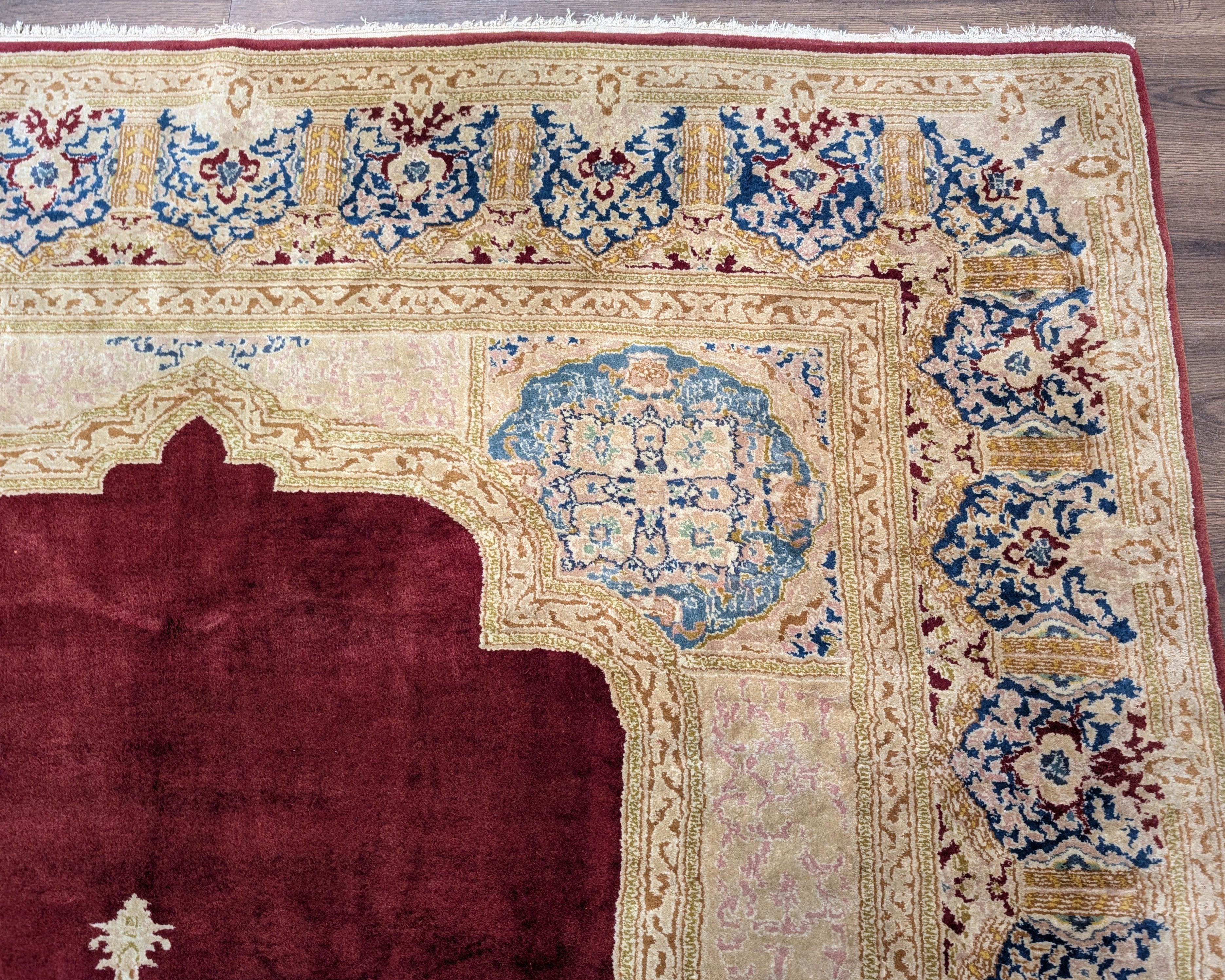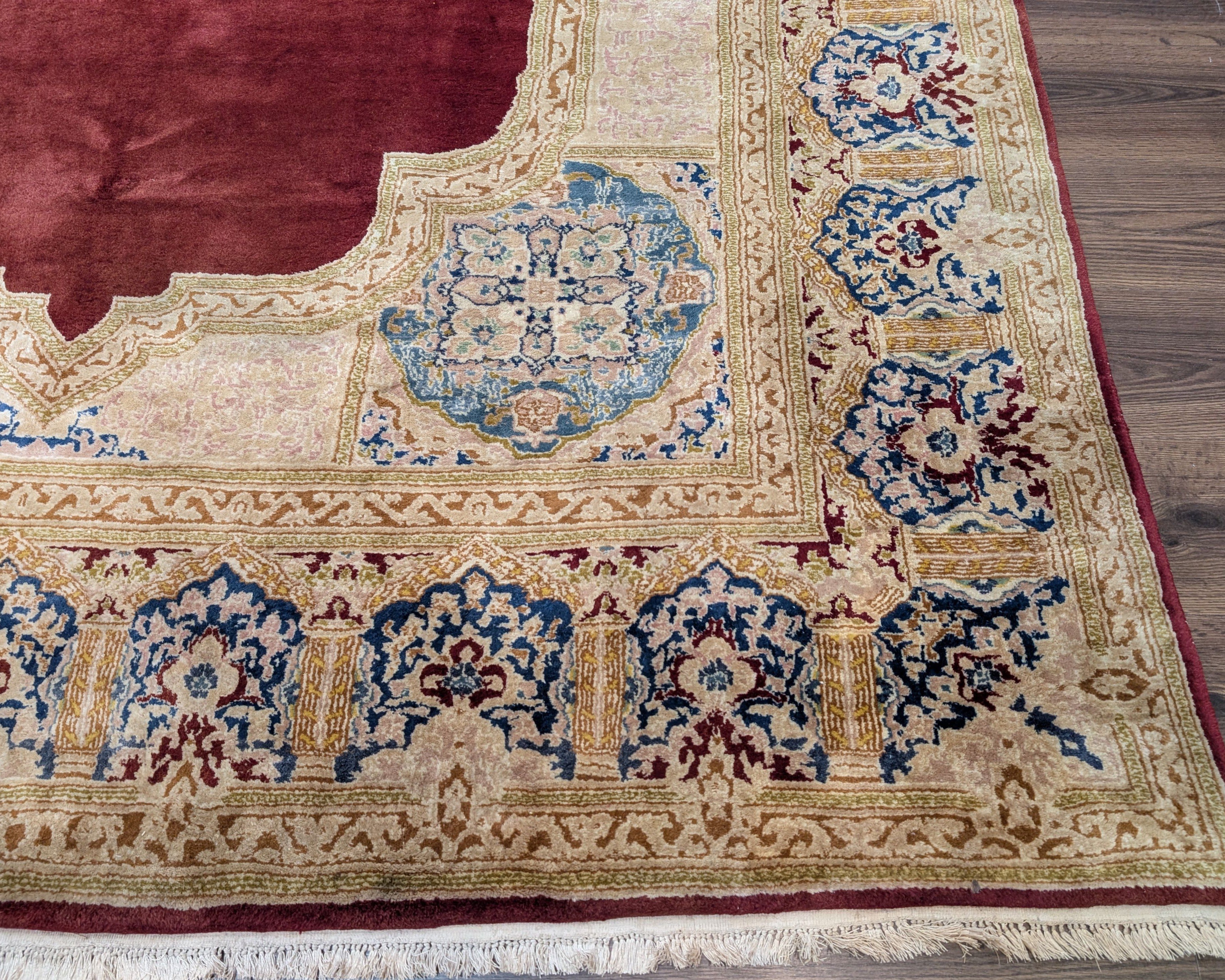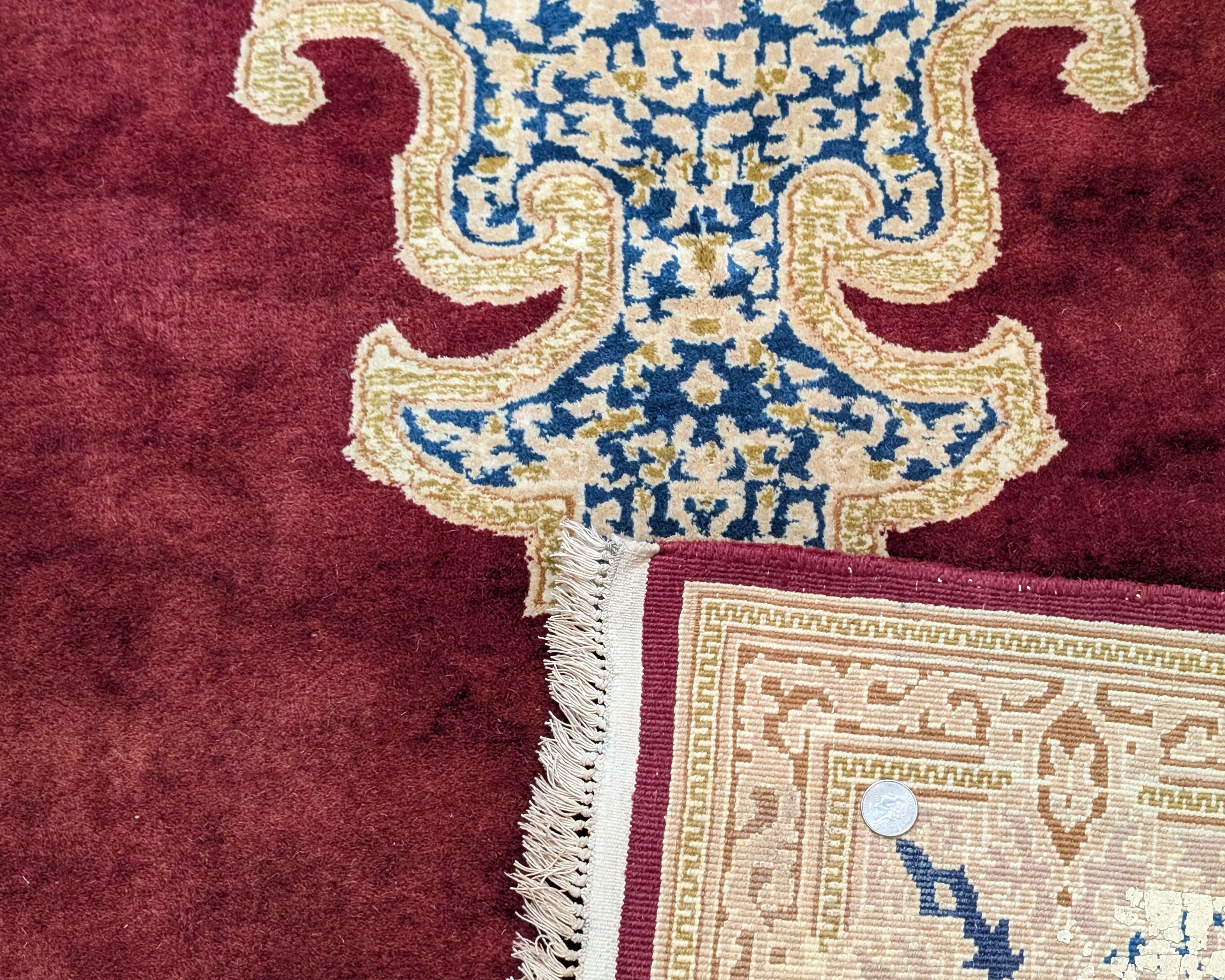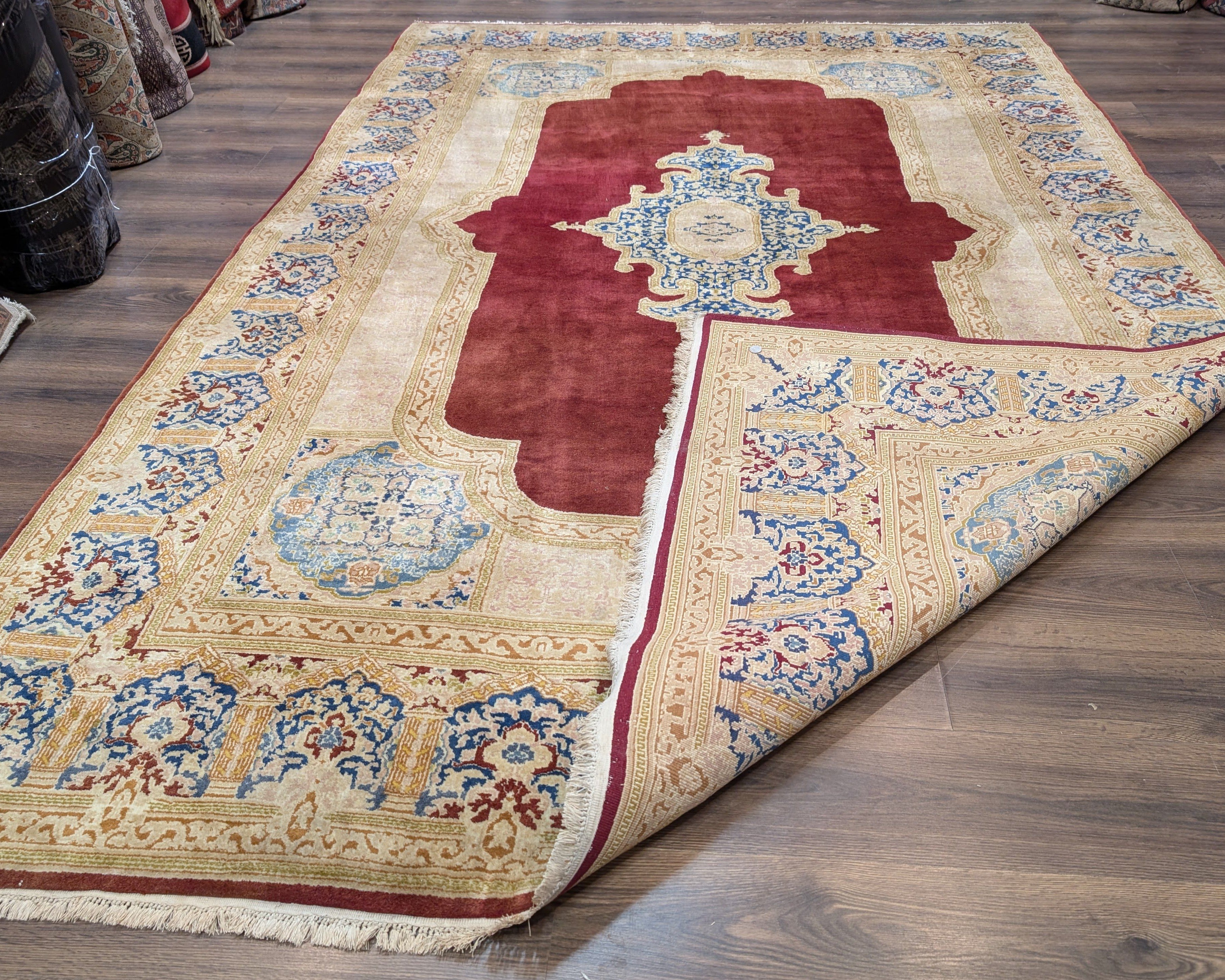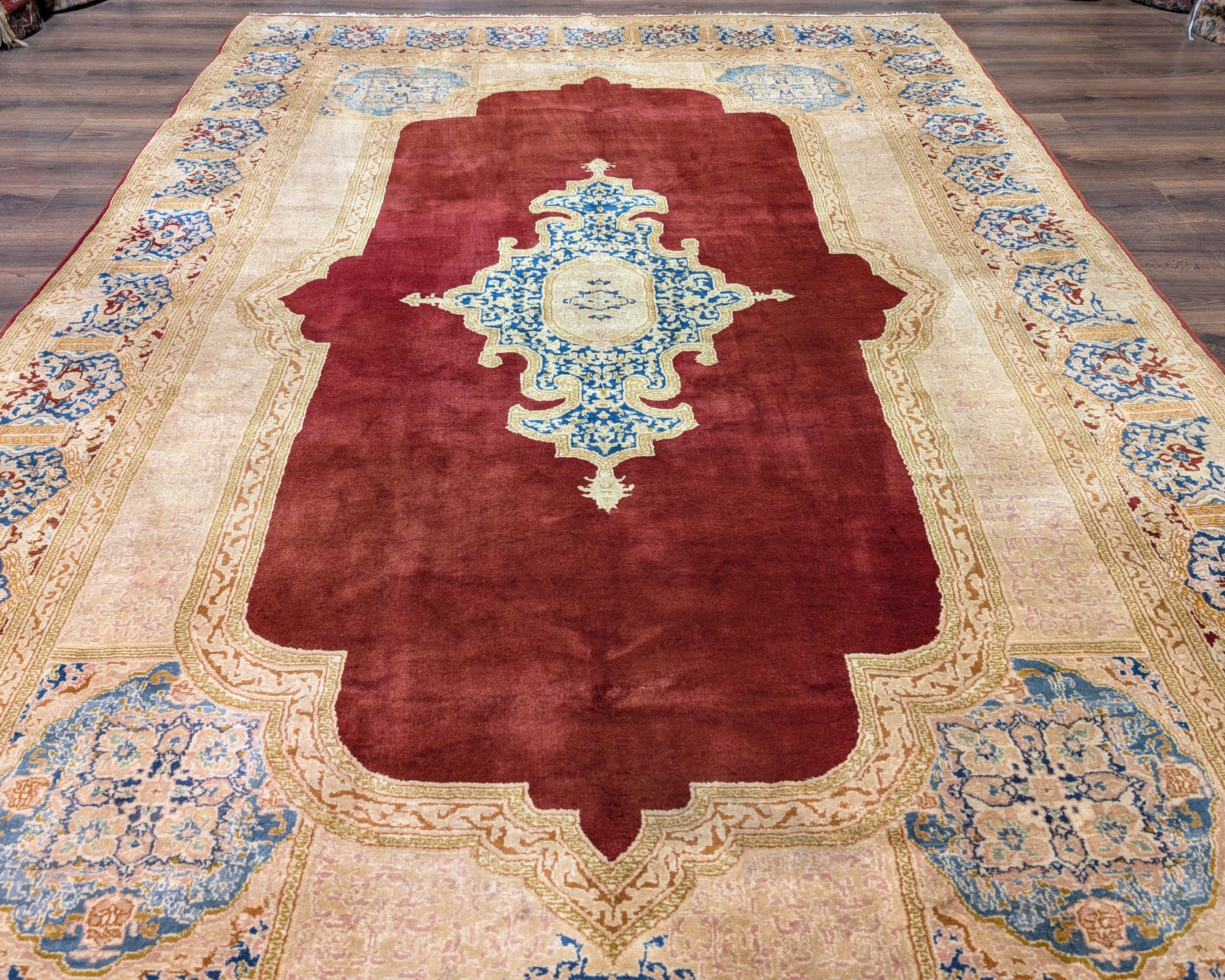Persian rugs, often hailed as masterpieces of textile art, are woven into the very fabric of Persian culture. These rugs are more than mere floor coverings; they are narratives spun from wool and silk, each reflecting the unique heritage of the region from which they originate.
While the term "Persian rugs" is sometimes used broadly to describe rugs with Persian style designs, regardless of where they are made, this article focuses on authentic Persian rugs that originate from Iran. Join us on a journey through Iran's diverse rug-making regions, exploring the distinct characteristics that make each type of rug a treasure.
A Helpful Framework to Understand Persian Carpets
Before diving into the specifics of the main Persian rug types like Tabriz, Isfahan, Heriz, and others, it’s helpful to establish a framework for understanding them. By organizing them into general categories, the rugs can be understood more thematically, allowing for a clearer and more cohesive understanding of their shared characteristics. This approach helps avoid the confusion that can come from a long, unstructured list of Persian rug types.
Persian rugs can generally be categorized into three main types: city rugs, village rugs, and tribal rugs.
City rugs are crafted in urban centers by skilled artisans in organized settings, often known for their intricate designs, high knot density, and fine materials. These rugs reflect the pinnacle of Persian craftsmanship and are produced in renowned weaving cities.
Village rugs, on the other hand, are woven in rural areas by small communities, often featuring bold and practical designs that reflect the local traditions and daily life of the weavers. These rugs are known for their durability and character, making them perfect for everyday use.
Lastly, tribal rugs are created by nomadic and semi-nomadic tribes, known for their vibrant colors and bold, geometric patterns. Each tribal rug tells a story, reflecting the cultural heritage and artistic expression of its makers.
Now that this framework is in place, let’s explore the main Persian rug types, beginning with those that fall under the city rugs category.
City Rugs: Precision and Elegance
City rugs, also known as urban or workshop rugs, are meticulously crafted in urban centers, known for their high knot density and intricate designs. These rugs are often produced in renowned weaving cities where skilled artisans create masterpieces that are as much art as they are functional.
Tabriz Rugs
Starting our journey in the historic city of Tabriz, we find rugs that epitomize Persian craftsmanship. Tabriz rugs are renowned for their intricate patterns and exceptional detail, often featuring central medallions surrounded by elaborate floral motifs.
- Designs: These rugs showcase a variety of themes, including hunting scenes, gardens, and architectural motifs. The precision of the patterns is a testament to the weavers' skill.
- Colors: A rich palette of reds, blues, ivories, and beiges brings the designs to life, with natural dyes providing a depth and vibrancy that synthetic colors can't match.
- Materials: Tabriz rugs are typically made from wool, silk, or a combination of both, boasting a high knot density that enhances their durability and fine detail.
Isfahan Rugs
In Isfahan, the former capital of Persia, rug-making is an art form that reflects the city's rich cultural heritage. Isfahan rugs are known for their elegance and sophisticated designs.
- Designs: Expect to see intricate floral and vine motifs, often centered around a medallion. The symmetry and detail are simply breathtaking.
- Colors: Soft, muted tones like ivory, red, blue, and green dominate, all derived from natural dyes.
- Materials: High-quality wool and silk are used, with a knot density that can reach up to 700 KPSI, resulting in a fine, luxurious texture.
Kashan Rugs
Kashan, situated in central Iran, is renowned for producing some of the finest Persian rugs, known for their classic designs and high knot density.
- Designs: Kashan rugs typically feature a central medallion surrounded by intricate floral and vine patterns. The designs are symmetrical and meticulously detailed, often including elements like birds, vases, and arabesques.
- Colors: The color palette of Kashan rugs is rich and sophisticated, predominantly featuring shades of red, blue, and ivory. Natural dyes give these rugs a deep, lasting vibrancy.
- Materials: Made from the finest wool and sometimes silk, Kashan rugs boast a high knot density, often exceeding 500 KPSI. This high knot count contributes to the rug's intricate detail and luxurious feel, making them highly sought after by collectors and connoisseurs.
Kerman and Lavar Kerman Rugs
Kerman, a city in southeastern Iran, is famous for its diverse rug designs and exceptional craftsmanship.
- Designs: Kerman rugs often feature intricate floral patterns, medallions, and even pictorial elements. Lavar Kerman, a subtype, is noted for even more elaborate and detailed patterns.
- Colors: Bright and varied hues, including reds, blues, greens, and ivories.
- Materials: High-quality wool and sometimes silk, ensuring a soft texture and vibrant appearance.
Yazd Rugs
Yazd rugs, originating from the central Iranian city of Yazd, are known for their fine craftsmanship and intricate designs.
- Designs: Yazd rugs often feature intricate floral patterns, with central medallions surrounded by a wealth of detailed motifs.
- Colors: Typically, the color palette includes soft, pastel tones as well as rich reds and blues, providing a harmonious balance.
- Materials: High-quality wool and sometimes silk are used, giving Yazd rugs a luxurious texture and appearance.
Nain Rugs
From the city of Nain, these rugs are known for their refined elegance and fine craftsmanship.
- Designs: Nain rugs feature intricate floral and medallion patterns with a symmetrical layout. The designs are often inspired by Isfahan rugs but executed with a lighter touch, giving them an airy, delicate appearance.
- Colors: The color palette is soft and muted, featuring shades like ivory, light blue, and beige. These colors are derived from natural dyes, ensuring a subtle and harmonious look.
- Materials: Made from high-quality wool and silk, Nain rugs boast a high knot density, often exceeding 500 KPSI. The combination of fine materials and detailed craftsmanship results in a rug that is both elegant and durable.
Qum and Pure Silk Qum Rugs
Qum rugs, originating from the holy city of Qum, are among the finest Persian rugs, renowned for their intricate designs and luxurious materials.
- Designs: Qum rugs are masterpieces of detail, featuring complex floral, tree of life, and pictorial designs. These patterns are not only visually stunning but also tell stories and convey cultural symbolism.
- Colors: A vibrant palette including reds, blues, and greens, with natural dyes ensuring the colors remain vivid and true over time.
- Materials: Often made from pure silk or a silk-wool blend, Qum rugs have a high knot density, often exceeding 700 KPSI. This fine craftsmanship gives them a delicate texture and a luxurious sheen.
Sarouk Rugs
Sarouk rugs, originating from the village of Sarouk, are known for their rich colors and durability.
- Designs: These rugs typically feature dense, curvilinear floral motifs and medallions. The elaborate designs are meticulously crafted, often showcasing a lush garden scene.
- Colors: Deep reds, blues, and ivory dominate the palette, with natural dyes ensuring the colors remain vibrant over time. The deep, rich hues give these rugs a luxurious appearance.
- Materials: Made from high-quality wool, Sarouk rugs are prized for their thick pile and robust texture. The use of high-quality wool not only adds to their durability but also gives them a plush, soft feel underfoot.
Mashad Rugs
Mashad (or Mashhad) rugs, originating from the northeastern city of Mashhad, are known for their large, elaborate designs and deep, rich colors.
- Designs: Mashad rugs often feature intricate floral and medallion patterns, with a large central medallion being a common element. The designs are grand and luxurious, reflecting the opulence of the region.
- Colors: The color palette is deep and rich, with predominant shades of red and blue accented by ivory. Natural dyes ensure that the colors remain vibrant and true over time.
- Materials: Made from high-quality wool, Mashad rugs are known for their thick pile and durability. The fine wool adds a luxurious feel, making these rugs both beautiful and practical.
Village Rugs: Durability and Character
Village rugs are typically woven in rural areas, known for their robust construction and distinctive patterns. These rugs often feature bold designs and rich colors, reflecting the local traditions and lifestyles of their weavers.
Heriz and Serapi Rugs
Moving to the rugged terrain of northwest Iran, Heriz rugs are celebrated for their durability and bold geometric patterns. They are perfect for high-traffic areas due to their robust construction.
- Designs: Heriz rugs feature large, angular patterns with a central medallion. The designs are bold and geometric, characterized by strong lines and a somewhat rustic aesthetic.
- Colors: Deep reds, blues, and earth tones dominate Heriz rugs, giving them a warm, inviting appearance.
- Materials: Heriz rugs are typically made from durable wool, known for their thick pile and longevity.
Serapi rugs are a highly valued subset of Heriz rugs, recognized for their more refined and intricate designs.
- Designs: Serapi rugs feature more symmetrical and finely drawn patterns compared to standard Heriz rugs, often with a delicate central medallion.
- Colors: Serapi rugs tend to use a softer and more nuanced color palette, including shades of coral, light blue, and ivory.
- Historical Significance: Serapi rugs were produced primarily in the late 19th to early 20th century, and their production ceased in the early 1900s, making them rarer and highly sought after.
Karajeh Rugs
Karajeh rugs, also known as Karaja or Gharajeh rugs, hail from a village near Heriz and are renowned for their distinctive geometric patterns and vibrant colors.
- Designs: These rugs feature multiple medallions with simple yet striking geometric designs. The patterns are often angular and bold, giving the rugs a dynamic and lively appearance.
- Colors: The color palette is rich and vibrant, predominantly featuring red, blue, and ivory. Natural dyes provide a depth and brightness that enhance the geometric patterns.
- Materials: Made from durable wool, Karajeh rugs are known for their robust texture and long-lasting quality. The sturdy construction makes them suitable for high-traffic areas.
Bidjar Rugs
Bidjar rugs, woven in the town of Bidjar and the surrounding villages in western Iran, are renowned for their exceptional durability and dense construction. Often referred to as the "Iron Rugs of Persia", these pieces are celebrated for their ability to withstand heavy use while maintaining their beauty and structure.
As Bidjar lies in a predominantly Kurdish region, these rugs are deeply influenced by Kurdish weaving traditions. The combination of practical needs and artistic expression is evident in their robust construction and intricate patterns.
- Weaving Technique: Bidjar rugs are crafted using a unique method known as the wet weaving technique, where the wool is dampened during the weaving process. This technique compresses the fibers tightly, resulting in a dense, firm pile that contributes to their legendary sturdiness.
- Designs: Bidjar rugs often feature bold central medallions, intricate Herati (fish) motifs, or floral patterns. The designs strike a balance between geometric and curvilinear elements, reflecting the influence of both tribal and urban weaving traditions.
- Colors: The color palette includes rich reds, deep blues, and earthy tones, accented with ivory or beige. Natural dyes give these rugs a vibrant and enduring appearance.
- Materials: Made from high-quality wool, Bidjar rugs have a dense pile and robust foundation, making them ideal for high-traffic areas. Their thick, sturdy structure ensures they last for generations.
Varamin Rugs
Varamin rugs (also known as Veramin rugs) are known for their intricate designs and vibrant colors, often featuring the distinctive Mina Khani pattern.
- Designs: Varamin rugs feature intricate floral and geometric designs, often with a central medallion. The Mina Khani pattern, which consists of repeated floral motifs arranged in a lattice-like structure, is a hallmark of these rugs.
- Colors: The color palette includes a wide range of hues, such as vibrant reds, blues, and greens. Natural dyes ensure that the colors remain vibrant and true over time.
- Materials: Made from high-quality wool, Varamin rugs boast a high knot density, contributing to their detailed craftsmanship and luxurious feel.
Mahal Rugs
Mahal rugs, originating from the Mahal region near Sultanabad, are celebrated for their large, open designs and rich colors.
- Designs: These rugs typically feature large-scale floral motifs with a spacious, uncluttered pattern layout, creating an elegant and visually striking effect.
- Colors: The color palette often includes deep reds, blues, and earthy tones, giving these rugs a warm and inviting appearance.
- Materials: Made from durable wool, Mahal rugs are known for their robust construction and are ideal for both formal and casual settings.
Kazvin/Qazvin/Ghazvin Rugs
Kazvin (also spelled Qazvin or Ghazvin) rugs are known for their intricate floral patterns and high knot density.
- Designs: These rugs often feature detailed floral motifs with a central medallion and a rich array of surrounding patterns.
- Colors: The color palette typically includes deep reds, blues, and ivory, with natural dyes ensuring a vibrant and lasting finish.
- Materials: Made from high-quality wool, Kazvin rugs are known for their fine texture and detailed craftsmanship.
Seraband/Saraband Rugs
Seraband rugs, also known as Saraband rugs, are renowned for their distinctive boteh (paisley) motifs arranged in a repeating pattern across the field.
- Designs: The repeating boteh motif is the hallmark of Seraband rugs, often accompanied by intricate borders that enhance the overall design.
- Colors: These rugs typically feature a rich palette of reds, blues, and ivory, with natural dyes giving the colors depth and warmth.
- Materials: Made from durable wool, Seraband rugs are robust and well-suited to both high-traffic areas and more formal settings.
Ardabil Rugs
Ardabil rugs, hailing from the Ardabil region in northwest Iran, are known for their historical significance and intricate patterns.
- Designs: Ardabil rugs often feature elaborate geometric patterns with central medallions and detailed borders.
- Colors: The color palette typically includes rich blues, reds, and beiges, providing a striking contrast and depth.
- Materials: Made from high-quality wool, Ardabil rugs are celebrated for their fine craftsmanship and durability.
Hamadan Rugs and Subtypes
The Hamadan region produces a diverse range of rugs, each village contributing its unique style and flair. This diversity makes Hamadan rugs particularly interesting and varied.
- Enjilas Rugs: Known for their geometric patterns and bold colors, often featuring a central medallion. These rugs are sturdy and practical, reflecting the rural lifestyle of their weavers.
- Lilihan Rugs: Characterized by soft, pastel colors and intricate floral designs. Lilihan rugs are more delicate and decorative, suitable for more refined settings.
- Malayer Rugs: Feature a mix of geometric and floral motifs, often with a more intricate and detailed design than other Hamadan rugs. They are prized for their artistic complexity.
- Zanjan Rugs: Known for their bold colors and tribal designs, Zanjan rugs are robust and striking, with simple yet powerful patterns.
- Nahavand Rugs: Renowned for their sturdy construction and geometric patterns, Nahavand rugs are both practical and beautiful, making them ideal for high-traffic areas.
Tribal Rugs: Culture and Heritage
Tribal rugs are woven by nomadic and semi-nomadic tribes, known for their bold designs and vibrant colors. These rugs often reflect the cultural heritage and traditions of their makers, each piece telling a unique story.
Shiraz, Qashqai, and Khamseh Rugs
From the nomadic tribes of the Fars province, these rugs are rich in culture and history, each piece reflecting the heritage and traditions of its makers.
- Shiraz Rugs: Bold geometric patterns and vibrant colors, often featuring a central medallion or all-over design. These rugs are robust and practical, suitable for everyday use.
- Qashqai Rugs: Known for their vibrant colors and bold, geometric designs, Qashqai rugs often feature motifs like diamonds, lozenges, and boteh (paisley). The intricate patterns and rich colors make them highly decorative and culturally significant.
- Khamseh Rugs: Similar to Qashqai rugs, Khamseh rugs feature bold colors and geometric designs. They are robust and practical, reflecting the nomadic lifestyle of their weavers.
Gabbeh Rugs
Gabbeh rugs, woven by the nomadic tribes of the Zagros Mountains, are known for their bold simplicity and vibrant colors. These rugs are a perfect example of how less can be more in the world of Persian carpets.
- Designs: Gabbeh rugs feature simple, abstract designs with large fields of color. The patterns are often minimalistic, reflecting the nomadic lifestyle of their makers.
- Colors: The color palette is bright and bold, featuring shades like red, blue, and yellow. The use of natural dyes ensures that the colors remain vibrant and true over time.
- Materials: Made from coarse wool, Gabbeh rugs have a thick pile that adds to their durability and rustic charm. The wool is often undyed, giving the rugs a natural, earthy feel.
Kurdistan and Senneh (Sanandaj) Rugs
Kurdistan and Senneh rugs reflect the rich cultural heritage of the Kurdish people, who have a long tradition of weaving intricate and beautifully designed rugs. These rugs are known for their fine craftsmanship and the unique blend of tribal and village weaving techniques.
Kurdistan Rugs
Kurdistan rugs, woven in the mountainous regions of western Iran, are characterized by their bold designs and rich, earthy tones. The patterns often incorporate geometric motifs, reflecting the strong tribal influences of the Kurdish weavers.
- Designs: Kurdistan rugs typically feature bold, geometric patterns, often with central medallions or repeating motifs. These designs are deeply rooted in the cultural heritage of the Kurdish people.
- Colors: The color palette is dominated by rich reds, blues, and browns, with natural dyes providing depth and vibrancy.
- Materials: Crafted from resilient wool, Kurdistan rugs are built to withstand the test of time, making them ideal for spaces where both durability and beauty are valued.
Senneh (Sanandaj) Rugs
Senneh rugs, originating from the city of Sanandaj in the Kurdistan province, are among the finest examples of Kurdish weaving. These rugs are celebrated for their delicate designs, high knot density, and refined craftsmanship, distinguishing them from more rustic tribal rugs.
- Designs: Senneh rugs feature intricate floral and geometric patterns, often with a boteh (paisley) motif. The designs are symmetrical and meticulously detailed, reflecting the influence of both village and urban weaving traditions.
- Colors: The color palette is soft and muted, featuring shades like ivory, light blue, and beige. These colors, derived from natural dyes, give Senneh rugs a subtle and harmonious appearance.
- Materials: Made from high-quality wool, Senneh rugs boast a high knot density, often exceeding 400 KPSI. This fine craftsmanship results in a rug that is both elegant and durable, highly prized by collectors and connoisseurs.
Bakhtiari Rugs
Bakhtiari rugs are woven by the Bakhtiari tribe, known for their bold, geometric patterns and vibrant colors.
- Designs: These rugs often feature compartmentalized designs, such as the Khesti (garden) pattern, where the field is divided into squares or diamonds, each filled with a distinct motif.
- Colors: The color palette is rich and varied, including deep reds, blues, and greens, often with ivory accents.
- Materials: Made from durable wool, Bakhtiari rugs are known for their robust construction and are ideal for both decorative and practical use.
Afshar Rugs
Afshar rugs are produced by the Afshar tribe, known for their tribal designs and vibrant colors.
- Designs: Afshar rugs typically feature large, central medallions and geometric patterns, with a strong influence of tribal motifs.
- Colors: The color palette includes rich reds, blues, and oranges, often with white or ivory highlights to create contrast.
- Materials: Made from durable wool, Afshar rugs are known for their strong weave and resilience, making them suitable for high-traffic areas.
Persian Turkoman Rugs
Persian Turkoman rugs are a distinctive subset of tribal rugs, woven by the Turkoman people in the northern regions of Iran. These rugs are known for their intricate geometric designs and deep, rich colors.
- Designs: Persian Turkoman rugs often feature the classic "gul" motifs, which are octagonal shapes repeated across the field of the rug. These designs are highly symmetrical and reflect the tribal heritage of the Turkoman people.
- Colors: The color palette typically includes deep reds, maroons, and dark browns, often accented by white or ivory. These rich, natural dyes give Persian Turkoman rugs a deep, vibrant appearance.
- Materials: Made from high-quality wool, Persian Turkoman rugs are known for their fine weave and high knot density, giving them a refined texture and durability.
Conclusion
Persian rugs are more than just beautiful floor coverings; they are woven stories of history, culture, and artistry. Each rug type, from the elegant Isfahan to the bold Qashqai, offers a unique glimpse into the world of Persian craftsmanship. Whether you're a collector, a decorator, or simply an admirer, understanding the distinct characteristics of these rugs enhances their appreciation and value. Let the rich tapestry of Persian rugs add a touch of elegance and history to your home, and let their stories become a part of your own.

